profit maximization
description: process to determine the highest profits for a firm
253 results
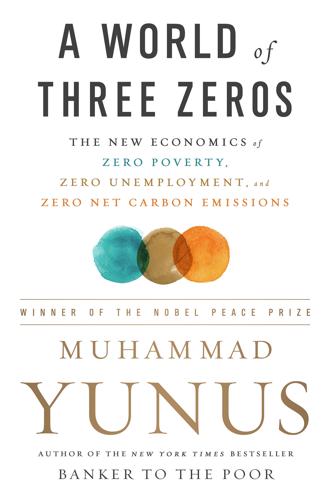
A World of Three Zeros: The New Economics of Zero Poverty, Zero Unemployment, and Zero Carbon Emissions
by
Muhammad Yunus
Published 25 Sep 2017
We need to address the issues from all sides, including concerns about lifestyle; government policies about energy, mining, and businesses; and other factors. And since profit-maximizing businesses will represent the great bulk of business activity for the foreseeable future, we must insist that they operate in an environmentally responsible fashion. Government regulations as well as social pressure from customers and citizens’ groups will play an important part in enforcing this norm. It would make no sense to create a world in which social businesses are working to repair the damage to the environment that human behavior has caused while at the same time profit-maximizing companies are allowed to create fresh damage.
…
For example, in my book Creating a World Without Poverty, I explained how big infrastructure projects like a mega port can be built through a social business corporation owned by the poor people of the area.2 If we make public demands that governments give priority to social businesses in selecting companies for all purchases and contracts, big or small, it will reduce the involvement of greedy profit-maximizing businesses in public affairs. One risk is that unscrupulous owners of profit-maximizing businesses will start creating fake social business “front” companies to compete for government contracts. However, even if this happens, matters won’t be worse than before. Close scrutiny by independent watchdog groups and journalists can reduce the problem.
…
When you are building an organization whose mission is not to enrich any individual but rather to help make the world a better place for those in need, most people are happy to support it in the same spirit of altruism. Competition among market participants seeking to outwit each other becomes unnecessary. Elaborate safeguards to prevent exploitation are less important than they are in the world of profit-maximizing business. As long as a clear separation is made between the realm of social business and the realm of traditional profit-maximizing business, both realms will be able to flourish. And as more and more people become familiar with the concept of selfless business, participate in creating social businesses, and enjoy the benefits they create, an understanding of “dog-help-dog” economics will spread.
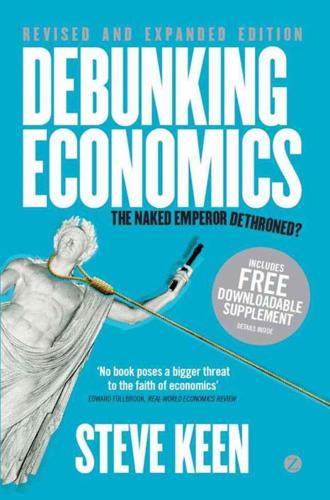
Debunking Economics - Revised, Expanded and Integrated Edition: The Naked Emperor Dethroned?
by
Steve Keen
Published 21 Sep 2011
But all the problems that I had identified in this chapter still remained: in particular, producing where supply equaled demand required ‘profit-maximizing’ firms to actually make losses on all goods sold past the point at which industry-level marginal revenue equaled marginal cost. There was only one explanation: equating marginal cost and marginal revenue couldn’t be profit-maximizing behavior. I followed the logic forward and proved that the true profit-maximizing formula was quite different. If competitive firms did actually profit-maximize, they would produce an output much lower than the level where marginal cost equaled marginal revenue.
…
A catalogue record for this book is available from the British Library Library of Congress Cataloging in Publication Data available eISBN 9781780322209 CONTENTS Tables, figures and boxes Preface to the second edition Preface to the first edition 1 Predicting the ‘unpredictable’ 2 No more Mr Nice Guy Part 1 Foundations: the logical flaws in the key concepts of conventional economics 3 The calculus of hedonism 4 Size does matter 5 The price of everything and the value of nothing 6 To each according to his contribution Part 2 Complexities: issues omitted from standard courses that should be part of an education in economics 7 The holy war over capital 8 There is madness in their method 9 Let’s do the Time Warp again 10 Why they didn’t see it coming 11 The price is not right 12 Misunderstanding the Great Depression and the Great Recession Part 3 Alternatives: different ways to think about economics 13 Why I did see ‘It’ coming 14 A monetary model of capitalism 15 Why stock markets crash 16 Don’t shoot me, I’m only the piano 17 Nothing to lose but their minds 18 There are alternatives Bibliography Index TABLES, FIGURES AND BOXES Tables 2.1 Anticipations of the housing crisis and recession 3.1 ‘Utils’ and change in utils from consuming bananas 3.2 Utils arising from the consumption of two commodities 3.3 The commodities in Sippel’s ‘Revealed Preference’ experiment 4.1 Demand schedule for a hypothetical monopoly 4.2 Costs for a hypothetical monopoly 4.3 Sales and costs determine the level of output that maximizes profit 4.4 Cost and revenue for a ‘perfectly competitive’ industry identical in scale to hypothetical monopoly 5.1 Input and output data for a hypothetical firm 5.2 Cost drawings for the survey by Eiteman and Guthrie 5.3 Empirical research on the nature of cost curves 7.1 Sraffa’s hypothetical subsistence economy 7.2 Production with a surplus 7.3 Relationship between maximum and actual rate of profit and the wage share of surplus 7.4 The impact of the rate of profit on the measurement of capital 10.1 Anderson’s ranking of sciences 12.1 The alleged Money Multiplier process 13.1 A hypothetical example of the impact of decelerating debt on aggregate demand 13.2 The actual impact of decelerating debt on aggregate demand 14.1 A pure credit economy with paper money 14.2 The dynamics of a pure credit economy with no growth 14.3 Net incomes 14.4 A growing pure credit economy with electronic money 15.1 Von Neumann’s procedure for working out a numerical value for utility 15.2 The Allais ‘Paradox’ 15.3 The Allais ‘Paradox’ Part 2 16.1 The solvability of mathematical models 17.1 Marx’s unadjusted value creation table, with the rate of profit dependent upon the variable-to-constant ratio in each sector 17.2 Marx’s profit distribution table, with the rate of profit now uniform across sectors 17.3 Steedman’s hypothetical economy 17.4 Steedman’s physical table in Marx’s value terms 17.5 Steedman’s prices table in Marx’s terms 17.6 Profit rate and prices calculated directly from output/wage data 17.7 Marx’s example where the use-value of machinery exceeds its depreciation Figures 2.1 US inflation and unemployment from 1955 2.2 Bernanke doubles base money in five months 2.3 Private debt peaked at 1.7 times the 1930 level in 2009 3.1 Rising total utils and falling marginal utils from consuming one commodity 3.2 Total utils from the consumption of two commodities; 3.3 Total ‘utils’ represented as a ‘utility hill’ 3.4 The contours of the ‘utility hill’ 3.5 Indifference curves: the contours of the ‘utility hill’ shown in two dimensions 3.6 A rational consumer’s indifference map 3.7 Indifference curves, the budget constraint, and consumption 3.8 Deriving the demand curve 3.9 Upward-sloping demand curve 3.10 Separating out the substitution effect from the income effect 3.11 Engel curves show how spending patterns change with increases in income 3.12 A valid market demand curve 3.13 Straight-line Engel ‘curves’ 3.14 Economic theory cannot rule out the possibility that a market demand curve may have a shape like this, rather than a smooth, downward-sloping curve 4.1 Leijonhufvud’s ‘Totems’ of the Econ tribe 4.2 Stigler’s proof that the horizontal firm demand curve is a fallacy 4.3 Profit maximization for a monopolist: marginal cost equals marginal revenue, while price exceeds marginal cost 4.4 Profit maximization for a perfectly competitive firm: marginal cost equals marginal revenue, which also equals price 4.5 A supply curve can be derived for a competitive firm, but not for a monopoly 4.6 A competitive industry produces a higher output at a lower cost than a monopoly 4.7 The standard ‘supply and demand’ explanation for price determination is valid only in perfect competition 4.8 Double the size, double the costs, but four times the output 4.9 Predictions of the models and results at the market level 4.10 Output behavior of three randomly selected firms 4.11 Profit outcomes for three randomly selected firms 4.12 Output levels for between 1- and 100-firm industries 5.1 Product per additional worker falls as the number of workers hired rises 5.2 Swap the axes to graph labor input against quantity 5.3 Multiply labor input by the wage to convert Y-axis into monetary terms, and add the sales revenue 5.4 Maximum profit occurs where the gap between total cost and total revenue is at a maximum 5.5 Deriving marginal cost from total cost 5.6 The whole caboodle: average and marginal costs, and marginal revenue 5.7 The upward-sloping supply curve is derived by aggregating the marginal cost curves of numerous competitive firms 5.8 Economic theory doesn’t work if Sraffa is right 5.9 Multiple demand curves with a broad definition of an industry 5.10 A farmer who behaved as economists advise would forgo the output shown in the gap between the two curves 5.11 Capacity utilization over time in the USA 5.12 Capacity utilization and employment move together 5.13 Costs determine price and demand determines quantity 5.14 A graphical representation of Sraffa’s (1926) preferred model of the normal firm 5.15 The economic theory of income distribution argues that the wage equals the marginal product of labor 5.16 Economics has no explanation of wage determination or anything else with constant returns 5.17 Varian’s drawing of cost curves in his ‘advanced’ microeconomics textbook 6.1 The demand for labor curve is the marginal revenue product of labor 6.2 The individual’s income–leisure trade-off determines how many hours of labor he supplies 6.3 An upward-sloping individual labor supply curve 6.4 Supply and demand determine the equilibrium wage in the labor market 6.5 Minimum wage laws cause unemployment 6.6 Demand management policies can’t shift the supply of or demand for labor 6.7 Indifference curves that result in less work as the wage rises 6.8 Labor supply falls as the wage rises 6.9 An individual labor supply curve derived from extreme and midrange wage levels 6.10 An unstable labor market stabilized by minimum wage legislation 6.11 Interdependence of labor supply and demand via the income distributional effects of wage changes 7.1 The standard economic ‘circular flow’ diagram 7.2 The rate of profit equals the marginal product of capital 7.3 Supply and demand determine the rate of profit 7.4 The wage/profit frontier measured using the standard commodity 9.1 Standard neoclassical comparative statics 9.2 The time path of one variable in the Lorenz model 9.3 Structure behind the chaos 9.4 Sensitive dependence on initial conditions 9.5 Unstable equilibria 9.6 Cycles in employment and income shares 9.7 A closed loop in employment and wages share of output 9.8 Phillips’s functional flow block diagram model of the economy 9.9 The component of Phillips’s Figure 12 including the role of expectations in price setting 9.10 Phillips’s hand drawing of the output–price-change relationship 9.11 A modern flow-chart simulation program generating cycles, not equilibrium 9.12 Phillips’s empirically derived unemployment–money-wage-change relation 10.1 Hicks’s model of Keynes 10.2 Derivation of the downward-sloping IS curve 10.3 Derivation of the upward-sloping LM curve 10.4 ‘Reconciling’ Keynes with ‘the Classics’ 10.5 Unemployment–inflation data in the USA, 1960–70 10.6 Unemployment–inflation data in the USA, 1950–72 10.7 Unemployment–inflation data in the USA, 1960–80 10.8 The hog cycle 11.1 Supply and demand in the market for money 11.2 The capital market line 11.3 Investor preferences and the investment opportunity cloud 11.4 Multiple investors (with identical expectations) 11.5 Flattening the IOC 11.6 How the EMH imagines that investors behave 11.7 How speculators actually behave 12.1 Inflation and base money in the 1920s 12.2 Inflation and base money in the post-war period 12.3 Bernanke’s massive injection of base money in QE1 12.4 Change in M0 and unemployment, 1920–40 12.5 Change in M1 and unemployment, 1920–40 12.6 Change in M0 and M1, 1920–40 12.7 M0–M1 correlation during the Roaring Twenties 12.8 M0–M1 correlation during the Great Depression 12.9 Bernanke’s ‘quantitative easing’ in historical perspective 12.10 The volume of base money in Bernanke’s ‘quantitative easing’ in historical perspective 12.11 Change in M1 and inflation before and during the Great Recession 12.12 The money supply goes haywire 12.13 Lindsey, Orphanides, Rasche 2005, p. 213 12.14 The empirical ‘Money Multiplier’, 1920–40 12.15 The empirical ‘Money Multiplier’, 1960–2012 12.16 The disconnect between private and fiat money during the Great Recession 13.1 Goodwin’s growth cycle model 13.2 My 1995 Minsky model 13.3 The vortex of debt in my 1995 Minsky model 13.4 Cyclical stability with a counter-cyclical government sector 13.5 Australia’s private debt-to-GDP ratio, 1975–2005 13.6 US private debt to GDP, 1955–2005 13.7 Aggregate demand in the USA, 1965–2015 13.8 US private debt 13.9 The change in debt collapses as the Great Recession begins 13.10 The Dow Jones nosedives 13.11 The correlation of debt-financed demand and unemployment 13.12 The housing bubble bursts 13.13 The Credit Impulse and change in employment 13.14 Correlation of Credit Impulse and change in employment and GDP 13.15 Relatively constant growth in debt 13.16 The biggest collapse in the Credit Impulse ever recorded 13.17 Growing level of debt-financed demand as debt grew faster than GDP 13.18 The two great debt bubbles 13.19 Change in nominal GDP growth then and now 13.20 Real GDP growth then and now 13.21 Inflation then and now 13.22 Unemployment then and now 13.23 Nominal private debt then and now 13.24 Real debt then and now 13.25 Debt to GDP then and now 13.26 Real debt growth then and now 13.27 The collapse of debt-financed demand then and now 13.28 Debt by sector – business debt then, household debt now 13.29 The Credit Impulse then and now 13.30 Debt-financed demand and unemployment, 1920–40 13.31 Debt-financed demand and unemployment, 1990–2011 13.32 Credit Impulse and change in unemployment, 1920–40 13.33 Credit Impulse and change in unemployment, 1990–2010 13.34 The Credit Impulse leads change in unemployment 14.1 The neoclassical model of exchange as barter 14.2 The nature of exchange in the real world 14.3 A nineteenth-century private banknote 14.4 Bank accounts 14.5 A credit crunch causes a fall in deposits and a rise in reserves in the bank’s vault 14.6 A bank bailout’s impact on loans 14.7 A bank bailout’s impact on incomes 14.8 A bank bailout’s impact on bank income 14.9 Bank income grows if debt grows more rapidly 14.10 Unemployment is better with a debtor bailout 14.11 Loans grow more with a debtor bailout 14.12 Profits do better with a debtor bailout 14.13 Bank income does better with a bank bailout 14.14 Modeling the Great Moderation and the Great Recession – inflation, unemployment and debt 14.15 The Great Moderation and the Great Recession – actual inflation, unemployment and debt 14.16 Modeling the Great Moderation and the Great Recession – output 14.17 Income distribution – workers pay for the debt 14.18 Actual income distribution matches the model 14.19 Debt and GDP in the model 14.20 Debt and GDP during the Great Depression 15.1 Lemming population as a constant subject to exogenous shocks 15.2 Lemming population as a variable with unstable dynamics 17.1 A graphical representation of Marx’s dialectics Boxes 10.1 The Taylor Rule 13.1 Definitions of unemployment PREFACE TO THE SECOND EDITION Debunking Economics was far from the first book to argue that neoclassical economics was fundamentally unsound.
…
If monopolies were the rule, then there could be no supply curve, and standard neoclassical microeconomic analysis would be impossible. Conversely, neoclassical economists love the market structure they call ‘perfect competition,’ because it guarantees that profit-maximizing behavior will cause firms to produce an output at which marginal cost equals price. Only it won’t. The manner in which neoclassical economics derives the result that profit-maximizing behavior by competitive firms means that they will produce where marginal cost equals price commits one of the simplest mathematical mistakes possible: it confuses a very small quantity – an ‘infinitesimal,’ as mathematicians describe it – with zero.
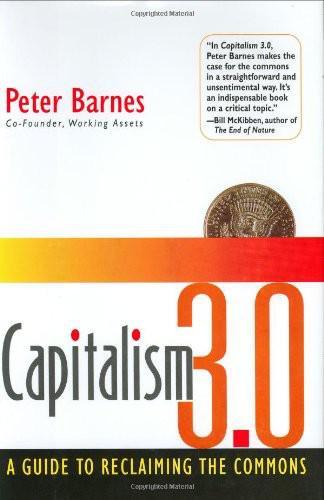
Capitalism 3.0: A Guide to Reclaiming the Commons
by
Peter Barnes
Published 29 Sep 2006
Hypothetical answers to such questions can no doubt be drafted, but what would happen in the real world, I suspect, is what The Economist surmises: profit maximization would dominate, accompanied by obfuscation about other goals. Corporate communications departments would try to maximize the appearance of social responsibility for the lowest actual cost. We’d see beautiful ads and reports, but little change in core behavior. It’s important to remember that the profit-maximizing algorithm is enforced not just by laws, but by a variety of carrots and sticks. For example, CEO compensation is typically based on a list of goals established by the board.
…
Filling needs contributes more to human well-being than does selling thneeds, yet our economic system increasingly devotes scarce resources to thneeds. Time to Upgrade | 11 Why do we have so much illth and so many thneeds? Because our economic operating system is far out of balance. On one side, representing owners of capital, are powerful profit-maximizing corporations. On the other side, representing future generations, nonhuman species, and millions of humans with unmet needs, are— almost nothing. The system lacks institutions that preserve shared inheritances, charge corporations for degrading nature, or boost the “demanding” power of people whose basic needs are ignored.
…
Since arising in the eighteenth century, capitalism has changed the face and chemistry of the earth. It keeps doing so, despite signals of planetary peril, like a runaway steam engine without a governor. It has built mountains of private wealth, but much of that wealth was taken from the commons, and a great deal of it adds little to our happiness. Its main actors, profit-maximizing corporations, are essentially out of control, and the fruits of their exertions are dispensed in a highly unequal way. Why does surplus capitalism behave this way? It’s possible that we consistently hire bad CEOs, but I think otherwise. I think it’s the 32 | THE PROBLEM operating system that causes most CEOs to act not with the next generation, but with the next quarterly statement, foremost in mind.
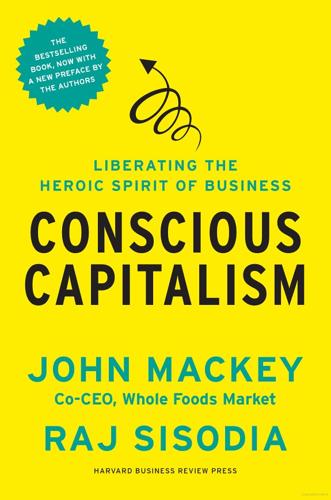
Conscious Capitalism, With a New Preface by the Authors: Liberating the Heroic Spirit of Business
by
John Mackey
,
Rajendra Sisodia
and
Bill George
Published 7 Jan 2014
This is a very different narrative than the one that sees history through the lens of profit maximization. Bill Gates did not start Microsoft with the goal of becoming the richest man in the world. He saw the potential of computers to transform our lives and was on fire to create software that would make them so useful that eventually all of us would own one. He followed his passion and, in the process, became the richest man in the world—but that was the outcome, not his goal or purpose. The myth that profit maximization is the sole purpose of business has done enormous damage to the reputation of capitalism and the legitimacy of business in society.
…
This idea is at the core of capitalism’s extraordinary and unique ability to generate wealth. The Unintended Consequences of Low-Consciousness Business When businesspeople operate with a low level of consciousness about the purpose and impact of business, they engage in trade-off thinking that creates many harmful, unintended consequences. Such businesses view their purpose as profit maximization and treat all participants in the system as means to that end. This approach may succeed in creating material prosperity in the short term, but the resultant price tag of long-term systemic problems is increasingly unacceptable and unaffordable. Too many businesses fail to recognize the significant impacts they have on the environment, on other creatures that inhabit the planet (such as wildlife and livestock animals), and on the physical health and psyches of team members and customers.
…
Corporations are widely seen as greedy, selfish, exploitative, and untrustworthy. Big business, in particular, has a terrible reputation today. Gallup has found that Americans’ confidence in big business has declined steadily, from about 34 percent in 1975 to a historic low of 16 percent in 2009, rebounding to 19 percent in 2011.15 The Myth of Profit Maximization The persistent myth claiming that the ultimate purpose of business is always to maximize profits for the investors probably originated with the industrial revolution’s earliest economists. How did this myth originate? It appears to have come from two sources: a narrow view of human nature and an inadequate explanation of the causes of business success.

Virtual Competition
by
Ariel Ezrachi
and
Maurice E. Stucke
Published 30 Nov 2016
Instead, price discrimination in some contexts, such as higher education, is more accepted than in many other contexts, where people view it as unfair. Why is this? One must examine price discrimination beyond the neoclassical economic analysis, which assumes that we are self-interested (greedy) profit maximizers, to the frontiers of behavioral economics, which views price discrimination through the prism of fairness and equality. 122 Behavioral Discrimination First, price discrimination may be accepted where its primary purpose is to advance social goals, not simply profit maximization. For many elite U.S. universities, the full tuition does not cover the university’s marginal cost of supplying a year of education to an undergraduate student.18 The same applies for some private high schools, like Phillips Exeter Academy.
…
Department of Justice noted, “if the competitors know each other well through social connections, trade associations, legitimate business contacts, or shifting employment from one company to another.”35 Pricing algorithms will not “congregate in the same building or town,” thereby having “an easy opportunity for last-minute communications.”36 Instead, it is often assumed that algorithms, in engaging in cold, profit-maximizing calculations, won’t agree with, or trust, other computers; even if they did, they would find ways to cheat on any agreements. Price discrimination should also be less likely. The collation of information makes it easier for consumers to compare the prices of advertised goods—thus making it harder for sellers to selectively increase the prices or degrade the quality of goods.37 Armed with more information, consumers become aware of the full range of substitutes, which they can take into account when making purchasing decisions.38 On the Path to Better Competition With the growth of online platforms—from search engines to price comparison websites—we are seemingly on the road to optimizing competition.
…
Many adherents of neoclassical economic theory assume competition to be “a self-initiating process,”7 which, when left alone by government regulators, will generally allocate resources efficiently toward users who value them the most. Any company’s attempt to secure or maintain market power would likely be defeated by other well-informed profit maximizers—either new entrants or existing competitors. The key proponents were economists and lawyers associated with the University of Chicago.8 They generally assumed that market participants were rational, were self-interested, and had strong willpower, that most markets were competitive, that mergers and vertical arrangements often created efficiencies, and that market forces would often defeat any attempt to exercise market power.

Drive: The Surprising Truth About What Motivates Us
by
Daniel H. Pink
Published 1 Jan 2008
But that's changing thanks in part to the rising tide of aging baby boomers reckoning with their own mortality. In Motivation 3.0, purpose maximization is taking its place alongside profit maximization as an aspiration and a guiding principle. Within organizations, this new purpose motive is expressing itself in three ways: in goals that use profit to reach purpose; in words that emphasize more than self-interest; and in policies that allow people to pursue purpose on their own terms. This move to accompany profit maximization with purpose maximization has the potential to rejuvenate our businesses and remake our world. Drive Drive: The Glossary A new approach to motivation requires a new vocabulary for talking about it.
…
The venture hopes to make money, but its real purpose is to help revitalize a struggling region. Meanwhile, Nobel Peace Prize winner Muhammad Yunus has begun creating what he calls social businesses. These are companies that raise capital, develop products, and sell them in an open market but do so in the service of a larger social mission or as he puts it, with the profit-maximization principle replaced by the social-benefit principle. The Fourth Sector Network in the United States and Denmark is promoting the for-benefit organization a hybrid that it says represents a new category of organization that is both economically self-sustaining and animated by a public purpose.
…
And they won't consign the public corporation to the trash heap. But their emergence tells us something important about where we're heading. There's a big movement out there that is not yet recognized as a movement, a lawyer who specializes in for-benefit organizations told The New York Times. One reason could be that traditional businesses are profit maximizers, which square perfectly with Motivation 2.0. These new entities are purpose maximizers which are unsuited to this older operating system because they flout its very principles. How We Think About What We Do When I took my first economics course back in the early 1980s, our professor a brilliant lecturer with a Patton-like stage presence offered an important clarification before she'd chalked her first indifference curve on the blackboard.
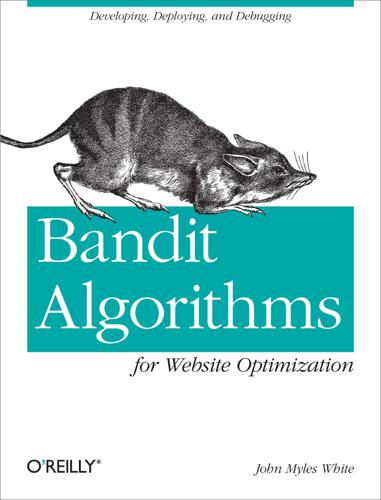
Bandit Algorithms for Website Optimization
by
John Myles White
Published 10 Dec 2012
Deb knew that Oscar was an established expert in business decision-making, so she suspected the Oscar would have something intelligent to say about her newfound questions about balancing experimentation with profit-maximization. And Oscar was indeed interested in Deb’s idea: "I entirely agree that you have to find a way to balance Cynthia’s interest in experimentation and Bob’s interest in profits. My colleagues and I call that the Explore-Exploit trade-off." "Which is?" "It’s the way Operations Researchers talk about your need to balance experimentation with profit-maximization. We call experimentation exploration and we call profit-maximization exploitation. They’re the fundamental values that any profit-seeking system, whether it’s a person, a company or a robot, has to find a way to balance.
…
Thinking Critically about the epsilon-Greedy Algorithm Before we do anything else, let’s demonstrate that the epsilon-Greedy algorithm can be configured to behave exactly in the way that Cynthia suggested, which involved completely random experimentation like you’d do during traditional A/B testing. After we show that you can configure the epsilon-Greedy algorithm to behave like A/B testing, we’ll show you that the epsilon-Greedy algorithm can also be configured to behave exactly like the profit-maximization rule that Bob hoped Deb would settle upon after her experimental phase was over. Setting up the epsilon-Greedy algorithm to achieve either of these goals is surprisingly easy: Cynthia’s original experimental design involves assigning each visitor to Deb’s website to one of two colors completely at random, which is exactly how the epsilon-Greedy algorithm behaves if it knows about 2 arms and has set epsilon = 1.0.
…
Setting up the epsilon-Greedy algorithm to achieve either of these goals is surprisingly easy: Cynthia’s original experimental design involves assigning each visitor to Deb’s website to one of two colors completely at random, which is exactly how the epsilon-Greedy algorithm behaves if it knows about 2 arms and has set epsilon = 1.0. We can do that by simplying instantiating our EpsilonGreedy class with the right parameters: algo = EpsilonGreedy(1.0, []) initialize(algo, 2) Bob’s rule for profit-maximization is also a single line: algo.epsilon = 0.0 Those three lines fully describe Cynthia and Bob’s approaches, which are literally the two most extreme ways that you can configure the epsilon-Greedy algorithm. Cynthia wanted to do nothing but exploration, while Bob wanted to do nothing but exploitation.
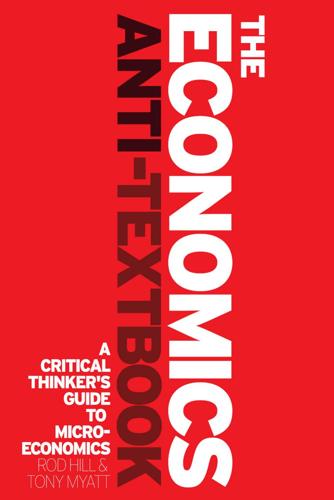
The Economics Anti-Textbook: A Critical Thinker's Guide to Microeconomics
by
Rod Hill
and
Anthony Myatt
Published 15 Mar 2010
Let’s consider our long-run average cost curves to be for the firm as a whole, regardless of the number of plants it has. So, for example, a firm may find it more cost effective to expand production within one plant or to establish another plant to produce a particular total output. Profit maximization: two cases Figure 5.6 shows the profit-maximizing output in the long run in the case of the perfectly competitive firm, which takes the market price as given. Using the usual profit-maximizing logic, the firm produces output up to the point where its long-run marginal cost equals its marginal revenue, in this case the market price. In the situation illustrated, the firm is just covering all 99 5 | The firm A.
…
Kurt Rothschild (1971: 7) 1 the standard text The business firm is an organization within which factors of production – workers, capital (buildings, machinery, equipment and so on) and land – are used with inputs purchased from other firms (raw materials, parts, security services, for example) to produce goods and services for sale. The organization can have different legal forms: a sole proprietorship, a partnership, a cooperative or a corporation. Although non-profit firms (such as universities) are not uncommon, the firm’s goal is assumed to be profit maximization. More precisely, this is the maximization of the present discounted value of the profits it will earn now and into the future. Production The firm’s managers (who may or may not be its owners) make decisions about such things as how much to produce, how they will produce it and what prices to charge.
…
Since marginal costs determine the firm’s willingness to supply output, the firm’s supply curve will be a horizontal line at $1 per loaf. If all firms face the same costs, that means that the industry’s supply curve is also a horizontal line at $1 per loaf, and supply must equal demand at that price. But if the price were $1, how much would the individual firm produce? Profit-maximizing output is indeterminate: the marginal revenue from producing an extra loaf of bread is $1 and the marginal cost is also $1 at any level of output. No matter what it does, the firm makes the same profit (or loss in this case, as the firm’s fixed costs are not covered). Similarly, we can’t say how many firms there would be.
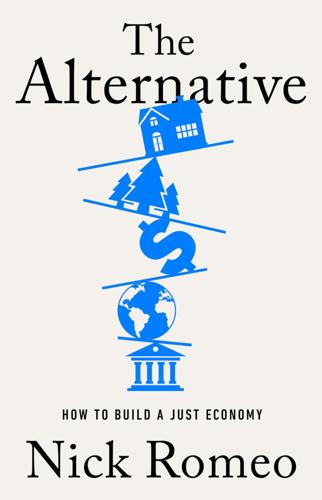
The Alternative: How to Build a Just Economy
by
Nick Romeo
Published 15 Jan 2024
The notion that astronomically high CEO compensation is necessary for business efficacy is a myth: a potent alternative model already exists at scale and needs only to be implemented more widely. Chapter 7 exposes another foundational myth of modern capitalism: that profit maximization is necessarily the objective of businesses and the people who own them. A growing number of retiring founders and young business owners are putting an old legal instrument to new use by transferring ownership of their businesses to legal trusts that stipulate a purpose other than profit maximization as the goal of their businesses. These purposes include profit sharing with employees, the longevity of the business, protection of the environment, or donation to nonprofits.
…
He depicts an arrogant disregard for traditional ways of life and a brazen attempt to profit by their destruction. Tolstoy was not an economist, yet in one story he illuminated more about wealth, psychology, and ethics than most professional economists do in a lifetime. Pursuing growth at all costs, Pahóm behaves with the profit-maximizing rationality of orthodox economic models, expanding into new regions of perceived opportunity and ignoring negative externalities like the exhausted soil and his damaged relationships. For a time, this cycle of expansion looks like success. But the idea that an externality—indirect costs or benefits of economic transactions—can remain external is soon exposed as a beguiling myth.
…
“In short, positive economics is, or can be, an ‘objective’ science, in precisely the same sense as any of the physical sciences,” he wrote.23 Friedman argued that political disagreements will diminish once everyone accepts the results of this “science.” Put differently, all politics is just misunderstood economics. In fact, the opposite is closer to the truth: most economics is misunderstood politics. Many consider Friedman’s 1970 essay “The Social Responsibility of Business Is to Increase Its Profits,” with its unabashed embrace of profit maximization, a founding document of neoliberalism. But this 1953 essay claiming economics as a natural science may be the more destructive text. If this is true, the “discovery” that businesses should only care about profits is like a law of the physical universe. The so-called Nobel Memorial Prize in Economic Sciences, first awarded in 1969, also helps the discipline retain a scientific veneer.

The Blockchain Alternative: Rethinking Macroeconomic Policy and Economic Theory
by
Kariappa Bheemaiah
Published 26 Feb 2017
As the tokens are unique and non-falsifiable, every user within the network is capable of verifying the total quantity in circulation and witnessing the flows between users. Thus, money supply is determined by profit maximization. As users witness the transfer flows of other users, they form belief systems about the exchange value of the private fiat and alter their behavior (save/spend) in order to protect their own individual interests. Profit maximization thus serves the same purpose as monetary policy with private monies (Fernández-Villaverde and Sanches, 2016). The difference in the way the supply of private and state fiat currencies occurs is a key issue to determining how they can compete within a common state, and some recent work from researchers at the Federal Reserve Bank of Philadelphia and the University of Pennsylvania have highlighted the consequences of this difference.
…
Bitter Lake (2015) traces the beginnings of Islamic terrorist groups and shows they have their origins in the longstanding economic alliance between the USA and Saudi Arabia. A good documentation of the US-Saudi alliance can also be seen in the 2005 PBS Frontline documentary, House of Saud. The events described in this sidebar seem to portray debt as a necessary evil which was used unscrupulously under the guise of profit maximization. However, this was the result of economic pressures and the decisions of leaders of a new regime who were experimenting with new ideas. This is not to say that an increase in the demand for debt and the growth of the private credit industry was a completely manufactured process. Debt by itself is vital to growth, and any civilization that used some form of money has also used some form of debt instrument (Graeber, 2012).
…
The response to this question is multifaceted in nature, but the underlying issue is that subjects pertaining to identity and KYC cannot be resolved if banks do not have mutually beneficial circles of trust between themselves. The lack of shared narratives in this arena is impeding adaptation and progress in a world where customer-centric approaches to delivering services and products equate to value generation. Banks currently attempt to sidestep this issue by focusing on short-term profit maximization instead of dealing with the longer-term structural issue. What is therefore required is a merging of identities with value exchange networks. The argument for a more inclusive way of looking at KYC is also one that needs to be looked at from a contextual scenario . What is required today is not just a dependence on the identity documents that we use to control our physical presence within politically established borders (passports, driving licences, etc.), but also our virtual borders.
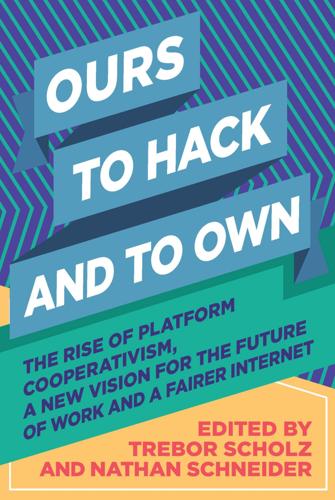
Ours to Hack and to Own: The Rise of Platform Cooperativism, a New Vision for the Future of Work and a Fairer Internet
by
Trebor Scholz
and
Nathan Schneider
Published 14 Aug 2017
In January 2016, Uber slashed wages once again, this time by 30 percent to about 50 cents per mile in some locations (after Uber’s 25 percent cut of each fare is subtracted). If driving for Uber was such a great job and paid halfway decently, wouldn’t more drivers last longer and drive more hours? Many businesses are increasingly relying on these types of operations as a core part of their profit-maximizing model. If this new corporate model is left unregulated, it will destroy what remains of a vibrant middle class. But fortunately there are solutions. One that I and others have proposed is creating a “universal and portable safety net.” Each worker should be assigned an “Individual Security Account” into which every business that hires that worker would pay a small “safety net fee,” prorated to the number of hours a worker is employed by that business.
…
In our competition-driven economy, a scarcity mentality has given many people—or even most—an insatiable drive to accumulate wealth. Even a cooperative can get swept up in this dynamic if powerful stakeholders use their leverage to extract value from the cooperative. Executives could vie for higher and higher pay. Although cooperatives generally—and preferably—do not allow for profit-maximizing equity investment, a cooperative could still end up giving up too much to lenders or preferred shareholders. To prevent these possibilities from even making it to the negotiation table, a cooperative’s bylaws should establish caps on employee pay, investment return, and other payouts. Where to set those caps?
…
True, a company won’t be able to attract the kind of talent that thinks of everything in terms of commodities and maximizing monetary profit. But it will attract talented people who are smart enough and have enough self-awareness to know that doing good work with good people is what makes for a good life. If you hire someone who is driven not by profit-maximization, but rather by a desire to do meaningful work, they will also be more intuitively oriented to the cooperative’s purpose of benefiting members. Which leads me to the third item… 3. Adopt a staff trusteeship model of governance. Staff trusteeship is a governance model that views all staff members of the cooperative as trustees who manage the platform for its beneficiaries, the body of members as a whole.

Internet for the People: The Fight for Our Digital Future
by
Ben Tarnoff
Published 13 Jun 2022
The privatization of the internet was a process, not an event. It did not involve a simple transfer of ownership from the public sector to the private but rather a more complex movement whereby corporations programmed the profit motive into every level of the network. A system built by scientists was renovated for the purpose of profit maximization. This took hardware, software, legislation, entrepreneurship. It took decades. And it touched all of the internet’s many pieces. The internet’s pieces don’t fit together in an especially obvious way. Most of the infrastructure on which our daily lives depend is easy to visualize: a highway, a power plant.
…
But their affordable rates also reflect a deeper fact: that community networks are guided by a different philosophy. “Community-owned ISPs typically regard the provision of high-speed Internet access as an end in itself and a means to achieving other community benefits,” observed the Harvard researchers. In other words, they tend to focus on social needs, such as universal connectivity, rather than profit maximization. This makes them uniquely effective in places where profits are hard to maximize. Rural North Dakota is one such place. You might expect the best internet service in the state to be found in the cities, such as Fargo. Instead, it’s in the farmlands of Nelson County (population 2,879), Logan County (population 1,850), and Kidder County (population 2,480), where 100 percent of residents can get gigabit speeds.
…
A community-owned network that gives users cheap or free service is a very different model for organizing the pipes of the internet than the one that has prevailed since 1995. It upends the assumption, long dominant in policymaking circles, that the internet should be controlled by private firms and run for the purpose of profit maximization. Thanks to EII, Detroiters who would otherwise be too poor to afford internet service can look up bus schedules and video-chat with their grandchildren. They have access to a resource they need in order to exercise meaningful control of their lives. But by embedding the network within a community organizing effort, EII is also subverting privatization in a subtler sense.
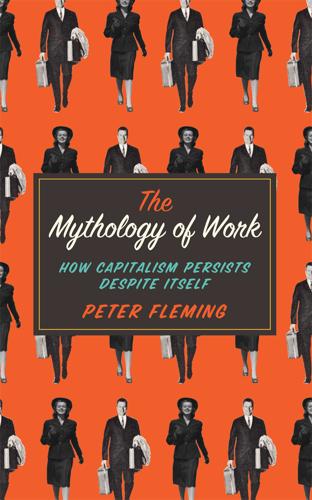
Mythology of Work: How Capitalism Persists Despite Itself
by
Peter Fleming
Published 14 Jun 2015
For example, a large funeral home corporation in the United Kingdom recently had to break some bad news to its shareholders. Dividends will be less than expected because the winter was rather mild. Therefore, fewer elderly people died. The valuable ends of providing funeral home services now become a mere means for profit maximization. The more deaths, the more money made, which is now the end that matters. One may even imagine the firm’s managing directors eventually hoping for a harsh winter (as energy firms clearly do), perhaps even encouraging a speculative market around future weather patterns (as Enron notoriously did) and so forth.
…
Ultimately, this is a cruel form of employment (low real wages, unpaid ‘waiting time’, no guarantee of work, employees bearing the negative externalities of business, etc.). But it makes perfect rational sense from a myopic economic perspective because it more effectively facilitates the subsidization process. Who will carry the real price that underlies the cost-saving and profit-maximizing employment policies of fast-food restaurants and online book stores? Perhaps family, more reluctantly the now emasculated welfare state, but ultimately the working class itself. We must place this rationalization process once more in the context of class relations defined by subsidization. In the thought experiment above, we travelled back to that alien world 20 or 30 years ago and noted an unfathomable abundance of ‘waste’.
…
Hence the socially manufactured scarcity that even Dallas, the beggar cum drug dealer residing outside my East London flat, understands well enough. The most interesting trait of the workforce today is the sheer amount of labour exerted that not only goes unpaid (discretionary work, unrecognized overtime, etc.) but is also functionally unessential to the firm, even by the firm’s own standards of profit maximization. This is work done for its own sake, which may look from the outside to be meaningless, but is driven by extant concrete forces not greatly different from ancient rites of superfluous sacrifice. And as we shall note in the forthcoming chapters, this does not undermine the process of hyper-rationalization mentioned in the Introduction, but is integral to it.
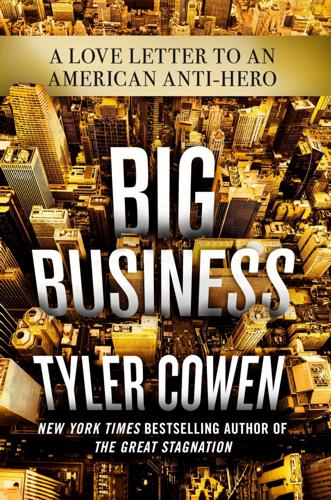
Big Business: A Love Letter to an American Anti-Hero
by
Tyler Cowen
Published 8 Apr 2019
This push for tolerance shouldn’t come as any surprise. Big business has lots of customers and relies on the value of brand names. It doesn’t want any group of those customers to feel put out or discriminated against or to have cause for complaint, not least because we live in an age of social media. Profit maximization alone—not to mention the consciences of some CEOs—puts big business these days on the side of inclusion and tolerance.6 Larger firms, in particular, which you can think of as wildly successful businesses and thus embodiments of the logic of business, tend to be more tolerant of employee personal tastes than smaller firms.
…
Don’t forget that the media, too, are American corporate enterprises. A BRIEF ROAD MAP I’m here to speak up for business, to persuade you that it deserves more of your love and less hate. Perhaps, like you, I am not entirely comfortable with ceding so much of the daily human realm to apparently selfish, profit-maximizing, and even sometimes corrupt entities, but on closer examination this is a better bargain than it might seem at first. Indeed, at its best, business gives our lives more scope for the heroic and the noble, as we can use the outputs of business to satisfy our own creative desires and to better our lives.
…
Friedman thought that ends other than profit could be valuable for society, but in his mind those ends were better pursued through charity, nonprofit institutions, or government policy, as corporations could not perform those tasks efficiently or in accordance with their basic natures.14 Although I am a fan of Milton Friedman and I share his skepticism about socialist solutions, I think this article reflected significant ideological blinders. Goals other than simple profit maximization often end up boosting both business profits and social benefits. For example, the people who work at SpaceX, the Elon Musk company that launches satellites using advanced and sometimes revolutionary rocket technology, often really do believe in the dream of colonizing other planets and the stars.
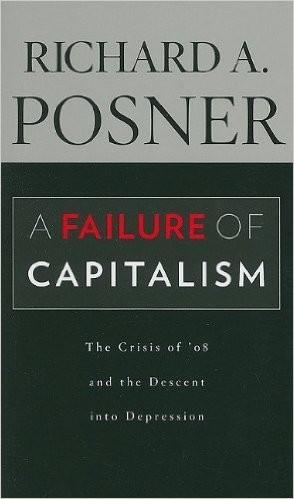
A Failure of Capitalism: The Crisis of '08 and the Descent Into Depression
by
Richard A. Posner
Published 30 Apr 2009
Rational indifference to the indirect consequences of one's business and consumption behavior is the reason the government has a duty, in regulating financial behavior, to do more than prevent fraud, theft, and other infringements of property and contract rights, which is the only duty that libertarians believe government has. Without stronger financial regulation than that, the rational behavior of law-abiding financiers and consumers can precipitate an economic disaster. Not only does competition force businessmen to be profit maximizers, which implies, as we have seen, that they will accept a small risk of bankruptcy; we want them to be profit maximizers—it is what drives economic progress. But in this example private virtue is a public vice, because the profitmaximizing businessman rationally ignores small probabilities that his conduct in conjunction with that of his competitors may bring down the entire economy.
…
That is why asymmetric compensation schemes in which compensation tied to stock value is combined with a generous severance package may be in investors' interest. But such schemes may not be in the interest of the nation as a whole if they enhance the risk of a depression — and they do. Securitization also played a role in encouraging short-term profit maximization. Instead of having to wait twenty-five or thirty years to receive the full return on a residential mortgage, exchanging the mortgage for a security gave a bank the present value of the loan up front, increasing the bank's current profits, some part of which would accrue to the bank's executives in the form of salary, bonus, benefits, or stock.
…
Because of the absence of such a relationship, he does not bear the cost and so is unlikely to give it much weight in deciding what to do —especially if his action creates a significant externality only in conjunction with similar actions of many other people. That is the situation of the individual consumer who desires to plume himself on his frugality by reducing the purchase of luxury items that he can well afford, and of the businessman who decides to take less risk than is profit maximizing in order to benefit the economy as a whole. Still another reason for the epidemic of dissaving that preceded the crash was rapid advances in marketing sophistication and technology. The World Wide Web played a role here (think how easy oneclick ordering makes the buying of consumer products), along with advances in cognitive psychology.

Governing the Commons: The Evolution of Institutions for Collective Action
by
Elinor Ostrom
Published 29 Nov 1990
Further, price is a sufficient statistic for summarizing an incredible amount of specific information of value to an entrepreneur. Profit maximization is a useful theoretical tool for predicting behavior in static market situations; it does not enable a theorist to predict which firms are most likely to survive or to predict innovative technolog ical or institutional changes. 13 CPR situations are rarely as powerful in driving participants - even survivors - toward efficiency as are competitive markets. Nor is there any single variable, such as market price, that can be used as the foundation for making rational choices in a CPR environment. Simply following short term profit maximization in response to the market price for a resource unit may, in a CPR environment, be exactly the strategy that will destroy the CPR, leaving everyone worse off.
…
One can predict that in a highly competitive environment, those who do not search for and select alternative rules that can enhance net benefits will lose out to those who are successful in adopting better rules. It is the operation of firms in competitive, or at least contestable, markets that enables theorists to predict that surviving firms will choose strategies that will maximize profits (Alchian 1950). Theoretical equilibria exist in market models after all of the inefficient or non-profit-maximizing firms have been eliminated. The process of getting to equilibrium is not the focus of these models; rather, they focus on the characteristics of the market and the firms in the market at theoretical equilibrium. That many firms do not maximize profits prior to equilibrium is unimportant when the theoretical question of interest concerns the characteristics of actors who are present at equi librium.
…
R., 38 Port Lameron Harbour, Nova Scotia, 179-80 Scotian inshore fisheries 229n33 108-9, 119, l>rice, M., 225n7 277 Index principal-agent problem, 17 prisoner's dilemma, 3-5, 6-7, 11, 16,39, 42-3,46-8, 182-3, 217nl see also games privatization, 12-14, 136 see also property rights, private; voluntary association privileged group, 111 profit maximization, 207 property rights, 20, 66-7 communal, 13, 60-4, 66, 224n3, 224-5n5, 229n37; see also common pool resource private, 12-13, 18,22,60-1,63--4,157, 175-6; see also privatization provision, 32-3, 47, 49-50, 55-6, 223n26 demand-side problem of, 49 supply-side problem of, 49 see also design principles, congruent rules entrepreneurship, 127-33 133-6 quasi-voluntary compliance, 94-5, 97-9, 125-6, 229n39 see also compliance rate Rabibhadena, A., 241n26 Radnitzky, G., 221n6 Rahman, A., 241n26 H., 217n1 action, 33-8, 193 rationality principle, 38 see also rational action Raymond Basin, California, 111-14, 116, 122, 124, 128, 134, 179-80,189-90,202,209,212-13, 231n8,232n18,235n32 exchange pool in, 114 report of the referee in, 111-12 watermaster in, 114, 125, 234n26 see also California groundwater basins Reder, M. w., 243n15 Renshaw, w., 232n18 rent dissipation, 48-9, 145, 150, 155, 157, 179, 238n6 Replenishment District Boundary Committee, 131 resource common pool, see common pool resource flow, 30,47 nonstationary (fugitive), 13 open-access, 32,175-6 renewable, 30-1 stock, 30, 47 see also common pool resource resource system, 13, 30-3, 43 resource units, 30-3, 43 Rhodes, R.
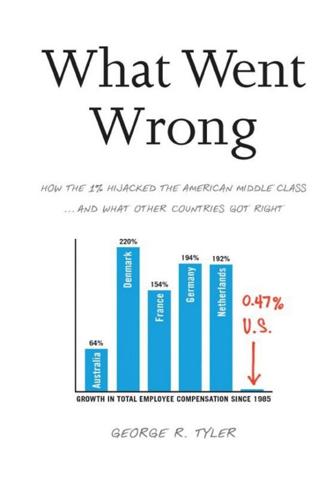
What Went Wrong: How the 1% Hijacked the American Middle Class . . . And What Other Countries Got Right
by
George R. Tyler
Published 15 Jul 2013
Moreover, it is simply too time consuming to determine where the profit-maximizing intersections of marginal costs and marginal revenues rest for hundreds of products in hundreds of overlapping markets, each with unique dynamics. Far worse, it turns out that even the most informed, analytical, and competent American executives have not even bothered to clarify the proper data set required for profit-maximizing production and pricing. CEOs tend to base pricing decisions on sunk or fixed costs, even though economists have long taught MBA students that profit-maximizing price and output decisions should be dictated by marginal revenues and costs.
…
I’ll let Justin Fox of the Harvard Business Review and Harvard professor Jay Lorsch explain: “Conflict between shareholders and managers is asymmetric warfare, with shareholders in no position to prevail.”5 Because of management’s ability to control information, it was inevitable that shareholder capitalism would devolve to managerial capitalism, where enterprises in Reagan-era America neither maximize profits nor maximize shareholder returns. That has made shareholder capitalism useless as an operational philosophy. The Myth of Profit-Maximizing Enterprises During the golden age, US executives were paid modestly, with the rare outstanding performance rewarded with bonuses or higher salaries. Compensation was important, but so were other issues. That changed in the Reagan era. Firms nominally became profit maximizers, ostensibly managed solely for the benefit of shareholder-owners. And that outcome was to be accomplished by linking executive compensation to profits. This conceptualization of shareholder capitalism argued that management should pivot from the golden age ethos of prioritizing profits along with community and employee goals to a sole focus on profits.
…
And that trail teaches us that profits and share prices have risen much less than executive compensation. Management—not shareholders—has been the big winner in Reaganomics. Indeed, economists have determined that executives don’t even bother to maximize firm profits. The extensive research documenting this reality has been unkind to Milton Friedman’s 1953 dictate that profit maximization should drive executive suite behavior: “Whenever this determinant happens to lead to behavior consistent with rational and informed maximization of returns, the business will prosper and acquire resources with which to expand; when it does not, the business will tend to lose resources and can be kept in existence only by the addition of resources from outside.”6 Friedman’s market determinism has been discredited.
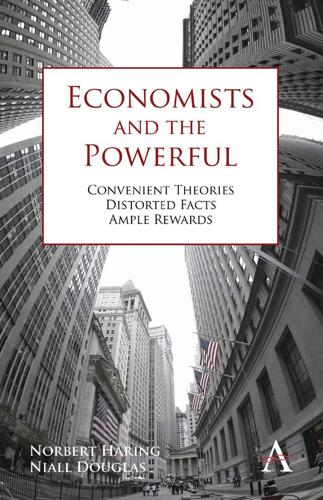
Economists and the Powerful
by
Norbert Haring
,
Norbert H. Ring
and
Niall Douglas
Published 30 Sep 2012
In the US, the big prize for a money management firm running a family of mutual funds is to become trustee of a corporate 401(k) retirement plan. If such firms face a tradeoff between increasing their chances of becoming (and remaining) trustee and making the optimal investment choices for their clients, the profit-maximizing choice is simple. They do the bidding of MONEY IS POWER 57 the company that has the power to name the trustee. The retirement savers would benefit from having a diversified portfolio. In particular, they should not be overinvested in the stock of their employer since they already face the risk of low income or job loss if their employer should fare badly.
…
“This is consistent with the view that important aspects of executive compensation are chosen as a way to transfer wealth from shareholders to executives ex post,” reads the blunt conclusion of Garvey and Milbourn (2006). The outrage constraint in action According to the managerial power theory, the pay level of managers is determined by social norms, not by the mathematical solution of a profit maximization problem. What top managers get depends on what the public and the shareholders are willing to accept. After the subprime crisis hit the world economy and drew attention to the extremely large THE POWER OF THE CORPORATE ELITE 121 paychecks that many executives in the financial industry had collected despite having caused the disaster, the public was outraged, at least temporarily.
…
The problem with this theory is that due to the very high sunk fixed costs for plant and machinery before a production run begins, most MARKET POWER 143 industrial goods are produced under conditions of constant or falling marginal costs – indeed the only globally commonplace industries today known to normally have rising marginal costs are nonmechanized laborintensive industries such as subsistence farming. It gets worse, because information goods (e.g. IT, media content such as movies, music, art etc.) typically cost a very great deal for the very first copy and almost zero for every subsequent copy; so as Shapiro and Varian (1999) point out, the optimal profit-maximizing strategy is to maximize sales right down to a marginal cost of almost zero (i.e. to allow some, but not too much, piracy) which implies a scale of mass production approaching infinity, and therefore is exactly the textbook economics model flipped upside down. Building 100,000 cars in a big factory tends to be cheaper per car than building 1,000 or 20,000 in a smaller factory.
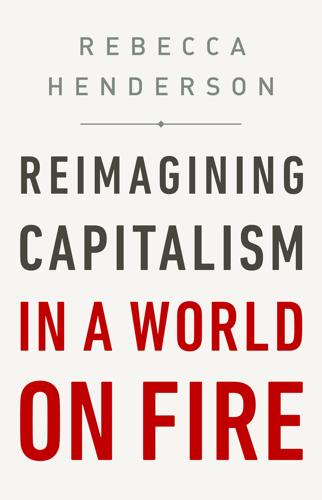
Reimagining Capitalism in a World on Fire
by
Rebecca Henderson
Published 27 Apr 2020
It is going to be hard to make money if the major coastal cities are underwater, half the population is underemployed or working at jobs that pay less than a living wage, and democratic government has been replaced by populist oligarchs who run the world for their own benefit. Moreover, embracing a pro-social purpose beyond profit maximization and taking responsibility for the health of the natural and social systems on which we all rely not only makes good business sense but is also morally required by the same commitments to freedom and prosperity that drove our original embrace of shareholder value. A mere decade ago the idea that business could help save the world seemed completely crazy.
…
Since December 2015, when the Paris Climate Agreement was signed, for example, the world’s fossil fuel companies have spent more than a billion dollars lobbying against controls on greenhouse gas (GHG) emissions.21 Lobbying in favor of heating up the planet may have maximized shareholder value in the short term, but in the long run, was it a good idea? Taken literally, a single-minded focus on profit maximization would seem to require that firms not only jack up drug prices but also fish out the oceans, destabilize the climate, fight against anything that might raise labor costs—including public funding of education and health care, and (my personal favorite) attempt to rig the political process in their own favor.
…
In a nutshell, markets require adult supervision. They only lead to prosperity and freedom when they are genuinely free and fair, and in the last seventy years the world has changed almost beyond recognition. Global capitalism looks less and less like the textbook model of free and fair markets on which the injunction to focus solely on profit maximization is based. Free markets only work their magic when prices reflect all available information, when there is genuine freedom of opportunity, and when the rules of the game support genuine competition. In today’s world many prices are wildly out of whack, freedom of opportunity is increasingly confined to the well connected, and firms are rewriting the rules of the game in ways that maximize their own profits while simultaneously distorting the market.
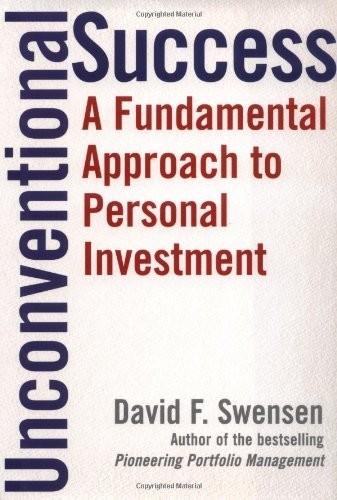
Unconventional Success: A Fundamental Approach to Personal Investment
by
David F. Swensen
Published 8 Aug 2005
Agents take on the role of principal either by allowing the satisfaction of client interests to transcend the imperative of profit generation or by employing the technique of side-by-side investment to transform the fundamental character of the incentive structure. In the case of subordinating profit maximization to client outcomes, the agent pursues the unusual path of valuing client results more highly than personal profit. Unfortunately, few agents in the financial services profession reject the Economics 101 notion of profit-maximizing behavior. In the case of agent co-investment alongside the principals’ assets, the agent becomes a principal. As the degree of co-investment increases, so does the principal orientation of the manager.
…
At the end of the day, as described in Chapter 7, The Performance Deficit of Mutual Funds, investors cannot win the active management game. The failure of the mutual-fund industry to produce attractive investment results stems from the inherent conflict between behaving as a fiduciary and acting as a profit-maximizer. The contest between serving investor interests and making money never even makes the starting gate. Profits win in a runaway. The crux of the conflict stems from divergence between the goals of the mutual-fund-investor principal and the mutual-fund-manager agent. Investors benefit from low fees, low taxes (related to low portfolio turnover), and fair, transparent arrangements.
…
Before management fees, before commissions, before market impact, before sales loads, before contingent fees, and before taxes, investors in actively managed mutual funds face a coin flip. After all fees and expenses, investors experience a performance deficit. Rational mutual-fund investors avoid active management. CHAPTER SUMMARY Management fees and trading costs represent the most important battlegrounds in the contest between fiduciary responsibility and profit maximization. In the arena of active management, investor interests suffer a resounding defeat. Profits win and responsibility loses. Sales loads constitute an affront to investors. A sales load leads to certain-return diminution that no-load investors avoid. In fact, evidence suggests that the size of the load corresponds to the load fund’s performance deficit.

Willful: How We Choose What We Do
by
Richard Robb
Published 12 Nov 2019
They just don’t want to engage with too many options or waste too much time relative to the matter at hand—after all, it’s only jam. In any case, this experiment tells us little about the real world where merchants learn to offer only as many options as consumers want to analyze. I trust my belief that profit-maximizing merchants know what they are doing over an intuition that consumers truly prefer less variety. While anxiety may accompany choice, consumers evidently want to experience this anxiety and its subsequent release once the choice is made. Are we drawn to movies in which only good fortune befalls the protagonist?
…
Businesses may deliberately make experiences harder than necessary for consumers. “Why don’t they just raise the price?” the economist asks in response to long lines at popular restaurants and sporting events. The restaurant owner who could reduce lines by raising prices might instead reinforce the authenticity of the waiting line by citing a motive other than profit maximization, such as fair pricing. Whatever the owner’s motive, for the consumer, the fight is part of the product and part of its appeal. Players Must Stay in the Game Suppose you suddenly and unexpectedly receive a significant amount of money. Would you act with caution and set the whole amount aside?
…
Iyengar and Lepper, “When Choice Is Demotivating.” 13. Tversky and Shafir, “Disjunction Effect,” 305–306. 14. Personal finance guides counsel living by a budget, but many people resist this advice. We want each spending decision to feel, to the extent possible, like a unique act of will. 15. Oprea, “Survival versus Profit Maximization,” 2227, 2234–2235. 16. Plutarch, Lives of Illustrious Men, 438. 17. Ricardo, On the Principles, 158–170. 18. Knight, “World Justice, Socialism, and the Intellectuals,” 442. 19. See Karabarbounis, “Labor Wedge,” 212. 20. Keynes, “Economic Possibilities,” 365–373. 21. The grandnephew’s comment is from Kestenbaum, “Keynes Predicted.” 22.

The Enablers: How the West Supports Kleptocrats and Corruption - Endangering Our Democracy
by
Frank Vogl
Published 14 Jul 2021
Challenging the enablers and their activities demands new laws, new financial regulations, increases in enforcement and investigation budgets, and far greater international cooperation between law enforcement authorities. Even more important to secure sustainable reforms, and far harder to achieve, is the need to transform the short-term profit maximization culture prevalent in many financial institutions into one where integrity and serving the public interest are paramount. Even more challenging and still more crucial is breaking the back of close-knit elite structures that see informal tight personal relationships between leading enablers, politicians, government overseers, and those holding power in law enforcement.
…
In 1970, I was the first foreign economics correspondent for the Times (UK) to be based in Deutsche Bank’s hometown, Frankfurt, Germany, and, in fact, the first foreign newspaper reporter to be based there since the post–World War II era. Over the following fifty years, I have watched the bank soar to the very heights of global financial power, and in recent years its decline. It was once the most powerful banking franchise in continental Europe. The combination of a commitment to short-term profit maximization, competitiveness to be a leading global player in the most profitable trading markets, and determined efforts to secure lucrative business from kleptocrats and oligarchs combined to play important roles in its downfall. Handsome, articulate, and charismatic, Ackermann, who had previously held a top position at Credit Suisse, radiated confidence.
…
Some of the same banks that have paid large fines for enabling the international movement of dirty cash have also been held to account by banking oversight authorities and justice authorities for rigging international interest rates, assisting in tax evasion, and perpetrating fraud related to US sub-prime mortgages, as well as losing substantial amounts of cash through high-risk speculative investments, and, in some cases, financing high-risk speculators. In each case, the paramount goal of short-term profit maximization has been the internal driver in these institutions. The operations of banks today are hugely impacted by mounting competition, be it from non-banking institutions that are aggressive in investment markets, from the businesses of mortgages and student debt and other retail finance, and through advances in technology that are bringing new players into financial endeavors.
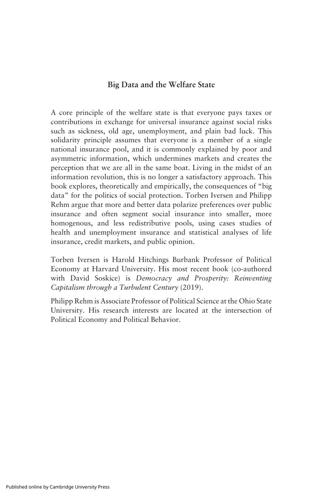
Big Data and the Welfare State: How the Information Revolution Threatens Social Solidarity
by
Torben Iversen
and
Philipp Rehm
Published 18 May 2022
Second, if better information is available to insurers, they can differentiate good from bad risks, which makes markets easier to construct, with low-risk types being attracted to market insurance schemes, assuming information can be accessed by, or credibly shared with, insurance companies. Segmentation of insurance schemes by risk group is a profit-maximizing strategy, and it will expand the range of insurance policies that can, in principle, be provided through the market – but, of course, only at the expense of risk pooling and therefore equality. Our second argument is that the feasibility of markets in insurance is affected not only by information but also by the capacity of insurers to redistribute from younger to older generations.
…
Second, if better information is available to insurers, they can differentiate good from bad risks, which makes markets easier to construct, with low-risk types being attracted to market insurance schemes, assuming information can be accessed by, or credibly shared with, insurance companies. Segmentation of insurance schemes by risk group is a profit-maximizing strategy, and it will expand the range of insurance policies that can, in principle, be provided through the market – but, of course, only at the expense of risk pooling and therefore equality. Our second argument is that the feasibility of markets in insurance is affected not only by information but also by the capacity of insurers to redistribute from younger to older generations.
…
Second, if better information is available to insurers, they can differentiate good from bad risks, which makes markets easier to construct, with low-risk types being attracted to market insurance schemes, assuming information can be accessed by, or credibly shared with, insurance companies. Segmentation of insurance schemes by risk group is a profit-maximizing strategy, and it will expand the range of insurance policies that can, in principle, be provided through the market – but, of course, only at the expense of risk pooling and therefore equality. Our second argument is that the feasibility of markets in insurance is affected not only by information but also by the capacity of insurers to redistribute from younger to older generations.
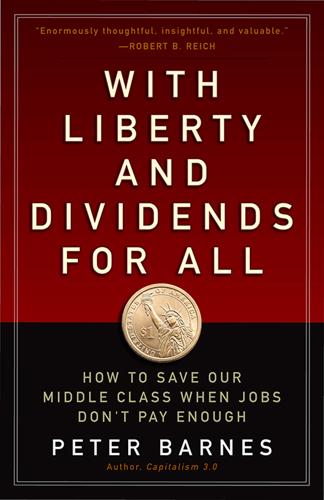
With Liberty and Dividends for All: How to Save Our Middle Class When Jobs Don't Pay Enough
by
Peter Barnes
Published 31 Jul 2014
This better-balanced capitalism—we could call it everyone-gets-a-share capitalism—wouldn’t solve all our problems, but it would do more than any other potential remedy to preserve our middle class, our democracy, and our planet. ODDLY ENOUGH, THIS BOOK BEGAN as an idea for a board game. The idea came to me while I was teaching a course at Schumacher College in England. I wanted to make the point that capitalism—that is, a market economy with private property and profit-maximizing corporations — isn’t necessarily inconsistent with a healthy planet or an equitable society. I projected a PowerPoint slide of the iconic Monopoly board game and said, “Imagine a game like this, except with slightly different rules. There’d be private property, profit-seeking corporations, winners and losers, but at the same time, nature and the middle class would fend for themselves and flourish.”
…
To sustain a large middle class, a nation must consciously and continuously temper the natural impulse of capitalism to minimize labor costs. That has been done by various countries in various ways, but there’s always pushback and never a guarantee that gains for the middle class will endure. Sustaining a large middle class requires counterbalancing the profit-maximizing imperative of corporations. For much of the twentieth century, the requisite counterforce came from labor unions. In the United States and Western Europe, labor unions finished the job that Henry Ford started. Through collective bargaining, they drove up wages and shortened the workweek; through political power, they won such benefits as unemployment insurance and Medicare.
…
There are many reasons why the United States spends 80 percent more per capita on health care than does Canada, while achieving no better results, but one of the biggest is that Canada has wrung huge amounts of rent out of its health-care system and we haven’t.9 Every Canadian is covered by nonprofit rather than profit-maximizing health insurance, and pharmaceutical prices are tightly controlled. By contrast, in the United States, drug companies overcharge because of patents, Medicare is barred from bargaining for lower drug prices, and private insurers add many costs and inefficiencies.10 Not even major reforms won by President Obama in 2010 are likely to change this.
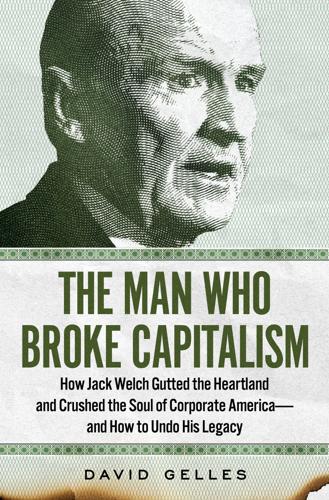
The Man Who Broke Capitalism: How Jack Welch Gutted the Heartland and Crushed the Soul of Corporate America—and How to Undo His Legacy
by
David Gelles
Published 30 May 2022
“Crotonville had to become deliberately evangelical, its every graduate a missionary capable of spreading the word,” wrote Noel Tichy, a University of Michigan business school professor who ran the program for Welch, and Stratford Sherman, a Fortune reporter, in their 1993 book, Control Your Destiny or Someone Else Will. Yet in the end, what was being taught was not sound business practices designed to deliver long-term value. Instead, it was a crash course in bare-knuckled cost cutting and profit maximization—Welchism 101—and the curriculum informed a generation of CEOs that was about to reshape the economy. “No bozos” GE’s distinguished managerial pedigree and its training facility at Crotonville, colloquially known as GE University, gave Welch enormous credibility. GE executives were considered the gold standard in corporate America; executives who worked with Welch were believed to be as dependable as the company’s products.
…
That year, the Business Roundtable, the influential group of CEOs that GE had helped establish two decades earlier, redefined its mission statement. Gone was the nuanced view it previously held that corporations should balance the needs of workers and communities with those of investors. In its place was the assertion that profit maximization was the purpose of business. “The paramount duty of management and of boards of directors is to the corporation’s stockholders,” the BRT pronounced, pledging allegiance to the Friedman doctrine. “The interests of other stakeholders are relevant as a derivative of the duty to stockholders.” Nor was it just conservative economists and pro-business Republicans who embraced the free market ideology.
…
There are other ways in which shareholder primacy appears to be losing its grip on the marketplace, too. In recent years, a handful of major investors, including the largest asset manager in the world, BlackRock, have begun encouraging companies to look beyond profits as a way of measuring their success. For years, BlackRock thrived on unqualified profit maximization. Fatter quarterly margins at the companies BlackRock invested in meant higher returns for the asset manager itself, and BlackRock’s portfolio managers pressed companies to boost returns by any means necessary. But starting in 2014, Larry Fink, BlackRock’s CEO, began embracing the rhetoric of stakeholder capitalism.
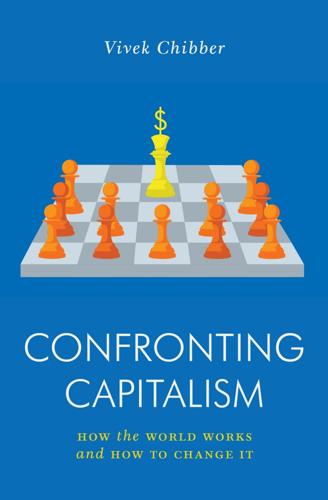
Confronting Capitalism: How the World Works and How to Change It
by
Vivek Chibber
Published 30 Aug 2022
When it comes to the basic conditions of their lives—how much money they have, their basic economic security, and how much they get to work—most people have no control over it. Even more, the decisions about them are made by people who have a direct interest in limiting workers’ security on all these matters. And the incentive to limit this security is built into the system. It is the natural outcome of the profit-maximizing strategy pursued by every firm. Capitalists don’t undermine their employees’ well-being because they are mean, greedy or callous. They do it because this is how they keep themselves afloat, and how they grow. As long as firms compete on the market, their owners and managers will be punished if they don’t squeeze the most out of their labor force.
…
But we don’t typically object to this because we assume that parents will use that power to the benefit of their kids. In the case of the employment relation, however, employers aren’t motivated by their employees’ well-being. Their motivation is to maximize profits and minimize costs. Employees’ interests are not part of the consideration. Indeed, as we have seen, profit maximization typically comes at the cost of employee interests. Hence, from the workers’ standpoint, this is nothing other than being subjected to an arbitrary authority. They have no control over the boss’s power, and that power is often used in a way that undermines their well-being. This is how capitalism breeds injustice.
…
I have also tried to present the connection between class structure and the vicissitudes of class conflict in my own book The Class Matrix: Social Theory after the Cultural Turn (Harvard University Press, 2022). These books and articles explain how workers can come together to collectively defend their interests. Then there is the more specific issue of how these unions, when they have organized, are constrained by the profit-maximizing strategies of firms. A brilliant, though somewhat demanding, examination of this is Howard Botwinick, Persistent Inequalities: Wage Disparity under Capitalist Competition (Princeton University Press, 1993). These rather abstract analyses ought to be read in conjunction with some labor history, so readers can relate the general principles to real events.
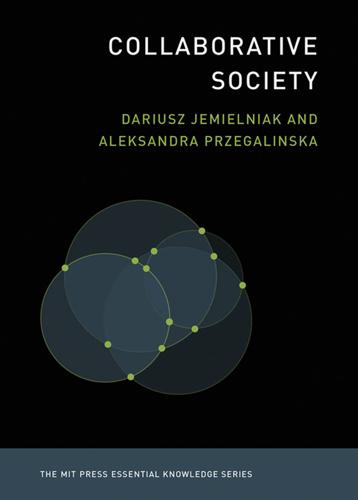
Collaborative Society
by
Dariusz Jemielniak
and
Aleksandra Przegalinska
Published 18 Feb 2020
The nonreciprocal exchanges, social bonding, and solidarity are powerful drivers of the new, collaborative turn.52 A quantitative analysis of the academic literature about the sharing economy shows an equal focus on four main areas: sustainable development and commons governance; community building and participation; labor, production, and digital markets; and new production and consumption models.53 A clear divide exists not only between capitalist and cooperativist platforms but also between users oriented toward profit maximization or nonprofit status. The commonly used terms shown below in bold often align themselves according to this divide: Table 2.1 Profit-maximization-oriented users/producers Nonprofit-oriented users/producers Capitalist platform Platform capitalism, gig economy Uber, Airbnb, TaskRabbit, Turo Collaborative economy TripAdvisor, Yelp, Couchsurfing, 9GAG Quantified Self Cooperativist platform Online cooperatives Time banks (Timebank.cc, Hourworld.org) Food co-ops Peer-to-peer lending Peer production Wikipedia, Linux, OpenStreetMap Citizen science Online activism #MeToo, Occupy Wall Street Biohacking We believe that many of these examples refer to the phenomena of open collaboration or collaborative consumption, but neither term, sharing economy nor peer production, adequately covers their scope.
…
Profit-driven organizations exert great power in a large number of industries; they test different models and mechanisms to gain a competitive edge over sharing economy “incumbents,” including “tight or loose control over participants and high or low rivalry between the participants.”37 The motivation of the participants themselves is another important factor to consider: as we previously explained, if organizations focus on profit or even profit maximization, they do not share. At the same time, online cooperativism provides viable alternatives to many contemporary participants and organizations consciously trying to avoid the exacerbating effects of platform capitalism.38 Their actions starkly contrast with the pseudo-sharing approach typical of the second platform type we identified earlier, in which technology is used to actively undermine a capitalistic system that relies on profit motives, the expectation of reciprocity, and the lack of communal feeling.39 The Green Taxi Initiative in Denver, a worker-owned alternative to Uber, is one such example with a focus on cooperative sharing.
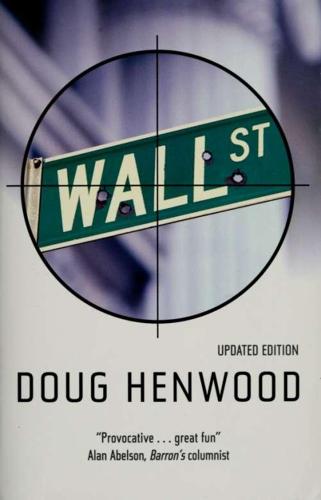
Wall Street: How It Works And for Whom
by
Doug Henwood
Published 30 Aug 1998
The difference in emphasis is important, because the Coasian view sees the corporation's role as maximizing efficiency, not profit, which is another matter entirely. Advertising, planned obsolescence, predatory pricing, and spurious innovation are partly or wholly socially useless, even malignant, activities, but they are profit-maximizing. Veblen also argued that an industrial system run for social efficiency rather than maximum profit might see more internalized and fewer market transactions. Sometimes profit-maximizing will lead to socially beneficial combination and coordination, but sometimes it won't. Janet Knoedler (1995) argued, for example, that GM's integration with its suppliers (like Fisher auto body) had less to do with economizing on costs than with simplifying the annual style change, a marketing rather than an industrial consideration.
…
Reading the updated Berle 27 years later, even more than the 1932 original, it's hard to imagine that anyone could have thought that modern corporate society moves by anything significantly different from the maximization of profit. But the belief that the advent of the large corporation had changed capitalism into a more humane, progressive force was a core belief of American liberalism from the New Deal through the end of the 1960s. Profit maximization, the motor of 19th century entrepreneurial capitalism, had been replaced by growth, and competition by long-term corporate planning and administered prices. In one moving cri de rentier (pp. 115-116), Berle and Means denounced the potential for managerial abuse of the poor owner: "out of professional pride," managers may "maintain labor standards above those required by competitive conditions," or "improve quality above the point" that is likely to be maximally profitable to shareholders!
…
Stockholder rebellion among large corporations was "so rare that it can be ignored," because trouble-free GOVERNANCE profitability was the norm. Of course, management told Congressional committees that the board and the stockholders were in control, and conducted yearly meetings to flatter the nominal owners, but Galbraith's corporation was run by the technostructure. Unlike Baran and Sweezy, Galbraith dismissed profit maximization as the goal of the giant firm in favor of the growth in sales and prestige. To thrive, it needed not maximum profits, but "a secure minimum of earnings" that would keep it from having to tap troublesome capital markets or cope with demanding outside stockholders (pp. 151-152). Secure mediocrity was the ideal.
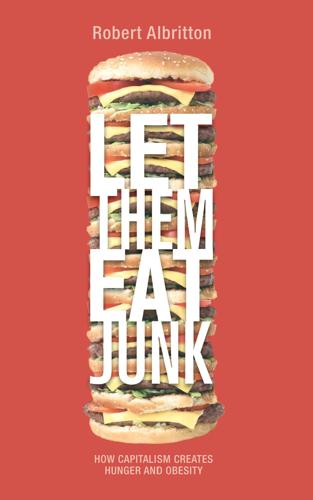
Let them eat junk: how capitalism creates hunger and obesity
by
Robert Albritton
Published 31 Mar 2009
First, capital’s privileging of short-term profits over all other considerations leads to an indifference to preserving the long-term quality of land, lakes, rivers and oceans. Profits may dictate deforestation, land degradation, and the pollution of bodies of water. Longterm conservation for the sake of future generations requires a relationship of stewardship, a relationship diametrically opposed to short-term profit maximization by private corporations only concerned for their own immediate gain. In principle, the imperatives 24 L E T T H E M E AT J U N K of profit could drive capital to cut down all forests; cover arable land with suburbs; convert arable land to growing tobacco and other addictive drugs; empty bodies of water of fish; pollute land, water, and air; or divert food crops to ethanol production even when large numbers of people do not have enough food.
…
In general space is homogenized by capital when its diversity gets in the way of capital mobility, when mass production and consumption require standardization, and when the built environment is standardized by capitalist commercialization and profit fixation. The material, qualitative or use-value characteristics of space can be quite resistant to being totally subsumed to short-term profit maximization. A major result of this is that capital has always developed unevenly spatially. Yes, it has always had an expansive and globalizing thrust, but this has run up against oceans and untamed land masses, the limits of technology, political policies stemming from semi-sovereign nation-states, and social formations that are to varying degrees resistant or hostile to capitalism.
…
For the first time in history, the natural qualitative/material constraints that had always figured so large in limiting the ability of capital in this sector seemed to be overcome. Now it seemed that human technology could at last subsume the vagaries of nature to the quantitative concerns of profit maximization, and nature could be forced to submit to the rapid increases in productivity needed by capital to keep up with industrial rates of expansion. As is characteristic of capital in general, social costs could be ignored since either they were sufficiently long-term that damages would not show up immediately, they would be hard to trace, or they could by paid for by the taxpayer.
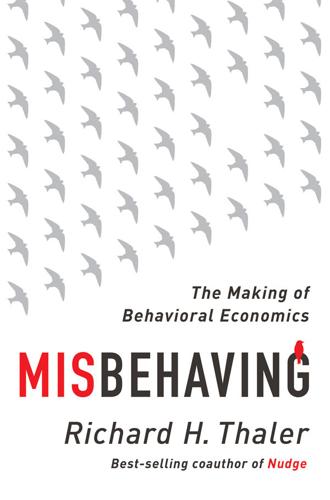
Misbehaving: The Making of Behavioral Economics
by
Richard H. Thaler
Published 10 May 2015
Simon had coined the term “bounded rationality,” but had not done much fleshing out of how boundedly rational people differ from fully rational ones. There were a few other precedents, but they too had never taken hold. For example, the prominent (and for the most part, quite traditional) Princeton economist William Baumol had proposed an alternative to the traditional (normative) theory of the firm (which assumes profit maximization). He postulated that firms maximize their size, measured for instance by sales revenue, subject to a constraint that profits have to meet some minimum level. I think sales maximization may be a good descriptive model of many firms. In fact, it might be smart for a CEO to follow this strategy, since CEO pay oddly seems to depend as much on a firm’s size as it does on its profits, but if so that would also constitute a violation of the theory that firms maximize value.
…
For example, after Hurricane Katrina devastated New Orleans, Home Depot and other chains loaded up trucks with emergency supplies of food and bottled water to give away. At the same time, such a natural disaster will induce some entrepreneurial folks to load a truck with plywood in a nearby city and sell it in the devastated areas for whatever price it will fetch. In this case, both sellers are profit-maximizing. The chain store is establishing a reputation for fair dealing that will have long-term payoffs, whereas the “temporary entrepreneurs” will be back home in a couple days with a tidy profit and either a slightly guilty conscience or pride in their efforts to help improve the allocation of scarce resources, depending on their point of view.
…
It is less clear that people feel morally obliged to make fair offers. Although it is true that in the Ultimatum Game the most common offer is often 50%, one cannot conclude that Proposers are trying to be fair. Instead, they may be quite rationally worried about being rejected. Given the empirical evidence on respondents’ behavior, the profit-maximizing strategy in the Ultimatum Game is for the Proposer to offer about 40% of the pie. Lower offers start to run the risk of being rejected, so a 50% offer is not far from the rational selfish strategy. Whether the offers made by Proposers are driven by fairness or selfish concerns, the outcomes of the Ultimatum Game appear to be quite robust.
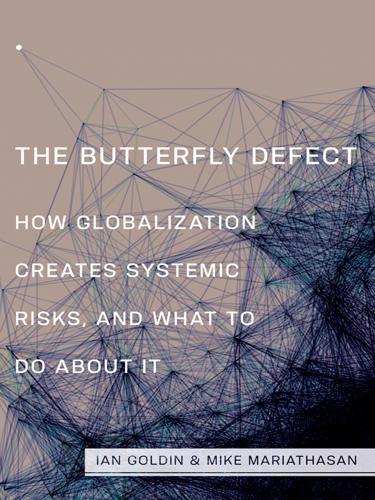
The Butterfly Defect: How Globalization Creates Systemic Risks, and What to Do About It
by
Ian Goldin
and
Mike Mariathasan
Published 15 Mar 2014
Our focus is on the systemic risk that is embedded in the current wave of globalization and the complexity it engenders, which give rise to uncertainty and unintended consequences, including the erosion of the responsibilities of individuals and firms. These unintended outcomes are “externalities” because profit-maximizing agents do not incorporate these social costs in their cost–benefit analyses. Systemic risks may thus be considered a contemporary manifestation of the tragedy of the commons. Exploiting Ricardo’s comparative advantage creates efficiency gains but simultaneously fosters interdependence.55 Using the benefits of trade leads to output growth but also to inequality.
…
Although this section focuses on how the rise of international trade created longer and deeper supply networks, it is important to remember that these networks, in turn, fuel globalization. In this chapter we diagnose the risks of supply chain management and of global business management more generally. As in the case of the financial sector, we show that the efficiency benefits of globalization have associated risks and that profit-maximizing behavior can create negative externalities. We start by noting the rise of international trade in the twenty-first century. We examine how political changes and technological innovation gave rise to global supply chains. An analysis of “best practices” in supply chain management shows how these supply networks are vulnerable to systemic risk.
…
The steering system producer is likely to depend on his own network of suppliers, and failure by any of them affects world auto production. A real-world example of such risks can be seen in table 3.1, which shows sourcing for the manufacture of Apple products worldwide. The company assembles parts delivered from producers around the globe. Under normal circumstances, these parts arrive just in time, resulting in profit-maximizing efficiency for the final producer, here Apple. Under adverse circumstances, however, the fragmentation of supply chains leaves firms exposed to risks beyond their control. In the case of Apple, quality problems and a strike at the Foxconn production plant in Zhengzhou, Taiwan, for example, caused delays in the delivery of the iPhone 5 during October 2012.27 TABLE 3.1 APPLE SUPPLIERS, 2011 AAC Technologies Holdings Inc.
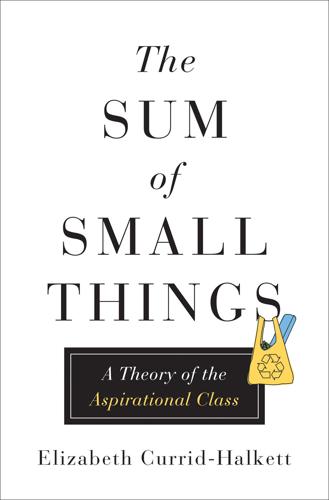
The Sum of Small Things: A Theory of the Aspirational Class
by
Elizabeth Currid-Halkett
Published 14 May 2017
The farmer or the craftsman is now connected to his labor. We are connected to the good.” In fighting alienated labor (even if most of the conspicuous producers interviewed did not call it such, nor reference Marx), conspicuous producers give up another tenet of modern capitalism: profit maximization. In neoclassical economics, the general theory is that firms work to the goal of profit maximization above all others. Yet, every single one of the conspicuous producers I interviewed, from food to fashion to farmers’ markets, admitted they are making very little profit (if any at all) or they are giving up the chance to make real money given the expense and time it takes to produce their socially conscious goods.
…
Those who conspicuously produce are still operating within a market economy, but with different motivations and rules. Money is exchanged for goods, rarity is prized, and yet some of the other hallmarks of capitalism, namely exploitation, Marx’s alienated labor, and the neoclassical theory of profit maximization, have been shunned to create a whole new economic ethos working with a capitalistic framework. As the Industry of All Nations’ website defines itself, “I.O.A.N. is pure capitalism. We don’t seek people in need; we seek productive people. There is nothing noble about suffering, there is nothing courageous about poverty; but industriousness, working for a better life, it is the bravest thing in the world.
…
See also motherhood peer-to-peer e-commerce companies, 130–31 Peet’s, 142 pensions, 29, 72, 74f personal insurance, 29, 72, 74f personal saving, 190–91 Peterson, Richard, 54 Philadelphia, 162–64, 168 Physique 57, 102 Piketty, Thomas, 188 Pollan, Michael, The Omnivore’s Dilemma, 125, 137 Polo, 11 the poor and low-income group: conspicuous consumption of, 24, 25, 31; education expenditures of, 69–70; inconspicuous consumption of, 62; status markers for, 25; things bought by, 33–34 Pop Physique, 102 Portland, 180 postmodern values, 135–37 power elite, 16 preschool tuition, 108 Probat, 114 productive conspicuous leisure, 100–109 productive leisure, 22, 98–109 profit maximization, 142 Protestant work ethic, 99 Pump Station, 82 Quakerism, 138 quality of life, 61, 153, 158, 189 race/ethnicity: breastfeeding by, 225n6; consumption influenced by, 34, 37, 38t; of farm employees, 124; suburbanization and, 152–53 Raffaelli, Ryan, 184 Ralph Lauren, 11–12 Ramney, Garey and Valerie, 96 recreation, 67, 68t red wine, 81 Reich, Robert, 17 rent, 166–67 Rent-the-Runway, 12 Replogle, John, 144 retirement expenditures, 29–30, 72, 74f, 75 the rich: conspicuous consumption expenditures of, 26, 30, 32, 35–36, 38, 61, 63f; education expenditures of, 69–70; inconspicuous consumption expenditures, 38–39, 61–77, 63f; status markers for, 32, 175; things bought by, 32.
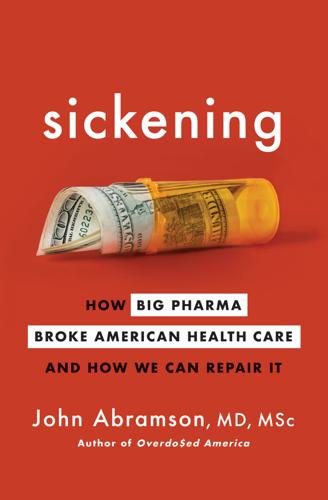
Sickening: How Big Pharma Broke American Health Care and How We Can Repair It
by
John Abramson
Published 15 Dec 2022
Americans were grateful to them for working so quickly to integrate the best of medical science into effective vaccines, which allowed us to take the first step toward putting the pandemic behind us. But a look behind the curtain reveals how the manufacturers exploited the public’s desperation and hope, and how they adapted their tried-and-true profit-maximizing tactics to the entirely new opportunity presented by the pandemic. First, the vaccine manufacturers’ claim that the innovative drive of private enterprise was solely, or even primarily, responsible for the rapid development of COVID-19 vaccines was self-serving fiction. The foundational research that made the rapid development of vaccines possible had been completed in 2016 by scientists at the National Institutes of Health (NIH), working with researchers at Dartmouth College and Scripps Research Institute.
…
This transition, along with opening the money spigots from corporations and superwealthy individuals, created the political and economic context that led to unprecedented inequality of wealth and the declining health of Americans relative to the citizens of other wealthy nations. In this corporate-profit-maximizing context, clinical research became ever more privatized, focusing on the creation of wealth rather than health. Universities and academic medical centers needed to seek funding from drug companies to continue their research programs, and financial ties with those same drug companies — something that was once beneath the dignity of academic physicians — became a sign of prestige.
…
Publicly held corporations came under pressure to focus on their bottom line, the percentage of workers belonging to unions declined by more than two-thirds (from 35 percent in the mid-1950s to 10.3 percent in 2019), and globalization and automation took American jobs, but the government could not (or would not) provide an effective “countervailing balance” to protect Americans from profit-maximizing corporate behavior. The days when working Americans prospered in proportion to the American economy faded into the history books. And, as we will see, this change in corporate priorities profoundly affected the way that pharmaceutical and medical-technology industries produced and disseminated new medical knowledge.
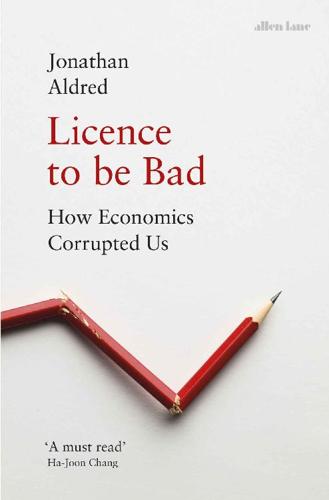
Licence to be Bad
by
Jonathan Aldred
Published 5 Jun 2019
This kind of absurd invitation violates common sense so, unsurprisingly, its genesis lies in economic theory. In textbook economics, a prerequisite for successful capitalism is that firms seek to maximize profits. But profit-maximizing firms are unlikely in reality, because profits traditionally go to shareholders, whereas the CEO and senior managers who make the decisions are more likely to be interested in enlarging their own salary or status. Economists proposed ‘optimal contracting’ as the way to make firms more like the profit-maximizing textbook ‘ideal’: give senior managers a relatively modest basic salary, along with the opportunity to earn a substantial bonus contingent on good profits (or some other outcome serving the interests of investors, such as a rising share price).
…
air travel, commercial, 63–4 Akerlof, George, 223, 237, 248 altruism, 150–51, 159, 162–4 game theory’s denial of, 31–2, 41, 42–3 misunderstanding of, 13–14, 25, 31–2, 41–3, 112, 178–9 as not depleted through use, 14 seen as disguised selfishness, 11–12, 25, 112, 178–9 Amazon, 155, 178, 208 American Economic Association, 257, 258 Angrist, Joshua, 249 antitrust regulation, 56–8 Apple, 222–3 Aristotle, 14 Arrow, Ken awarded Nobel Prize, 71 and blood donations, 14, 163 at City College, New York, 74–5, 91 collective preference, 73–4, 75–7, 78–82 and democracy, 72–4, 75–7, 78–83, 95, 97 framework presented as scientific, 81–2, 124–5 and free marketeers, 78–9, 82 Impossibility Theorem, 72, 73–4, 75–7, 78–83, 89, 97 and mathematics, 71, 72, 73–5, 76–7, 82–3, 97 and Mont Pèlerin Society, 9 preference satisfaction’, 80–82, 97, 124–5, 129 and Ramsey, 189 at RAND, 70–71, 72–3, 74, 75–6, 77, 78 top-secret-level security clearance, 71–2 ‘A Cautious Case for Socialism’ (1978), 83 ‘On the Optimal Use of Winds for Flight Planning’, 71 Social Choice and Individual Values (1951), 71, 72, 75–7, 78–80, 97 artificial intelligence, 214, 242 Atlas Economic Research Foundation, 7–8 Austen, Jane, 134 austerity policies, recent, 258 Axelrod, Robert, 41 Babbage, Charles, 222 baby-market idea, 61, 138, 145, 146 Bachelier, Louis, 193 Baird, Douglas, 58–9 bandwagon effect, 110 Bank of England, 96, 120, 185, 211–12, 258 bankers excuse/permission to be greedy, 1–2, 204, 238 and Keynesian economics, 5 performance as wholly relative, 204 quantification and recklessness, 213 rigged pay-for-performance contracts, 229–30, 238 role in 2007 crisis, 1–2, 57, 182, 192 as serial offenders over uncertainty, 201 see also financial markets Barro, Josh, 63, 64 Bateson, Gregory, 28 battery-chicken farming, 7 Baumol, William, 90–92, 93, 94 BBC, 48, 98 Beaverbrook, Lord, 157 Becker, Gary amoral understanding of crime, 137, 152 and citizenship rights, 146 and Coase, 69 Freakonomics followers of, 130, 134, 148–9, 156 and Friedman, 126, 131 hidden assumptions of, 130–31, 133–4 human capital idea, 149 and individualism, 134, 135–8 and maximization, 129–31, 133–4, 147 as outsider, 50 and Posner, 56 rejects need for realistic assumptions, 132, 133–4, 148 and sale of body parts, 147–8 sees poor health as just a preference, 135, 136, 140 sees values as mere tastes, 136–8, 140 theories as deeply controversial, 127–9, 130 theories as slippery, 129, 133–4 and ‘universality’ of economics, 125, 126–31, 133–4, 135–8, 147–8 version of ‘rational’ behaviour, 128–9, 135, 140, 151 De Gustibus Non Est Disputandum (with Stigler, 1977), 135–6 The Economic Approach to Human Behavior (1976), 130 The Economics of Discrimination (1957), 126–7 A Treatise on the Family (1981), 127–8, 130–31, 133 behaviourism, 154–8, 237 behavioural economics context and culture, 175–6 framing effects, 170–71, 259 and incentives, 160, 171, 175, 176–7 methods from psychology, 170–71 and Nudge, 171–2 and orthodox economics, 173, 174–5, 247, 255 and physics envy, 175–6 problems with, 173–5, 250–51 ‘self-command’ strategies, 140 theory of irrationality, 12, 171, 250–51 and welfare maximization, 149 Bell, Alexander Graham, 222 bell curve distribution, 191–4, 195, 196, 201, 203–4, 218–19, 257 Bentham, Jeremy, 102 Berlin, Isiah, 166, 167–8 Beveridge Report (1942), 4 Bezos, Jeff, 208 Black, Duncan, 77–8, 95 Blackstone (private equity firm), 235 black swans, 192, 194, 201, 203–4 Blinder, Alan, The Economics of Brushing Teeth (1974), 136 blood donors, 14, 112, 162–3, 164, 169, 176 Borel, Émile, 185* Brennan, William, 56 broadcasting, 48–50, 98 spectrum auctions, 39–40, 47, 49–50 Buchanan, James McGill, 8, 83–5, 87–8, 89, 95, 115 Buffett, Warren, 229, 230, 236 Calcraft, John, 120, 121 Cameron, David, 172 Caplan, Brian, The Myth of the Rational Voter, 245–6 carbon markets, 47, 65–7 Carlson, Jack, 141–2 Carroll, Lewis (Charles Lutwidge Dodgson), 72, 77 cartels and monopolies, 101, 102, 103–4 Cheney, Dick, 232–3 Chicago, University of, 2, 4, 34, 40, 49–51 antitrust ideas, 56–8 Buchanan at, 84 and Coase, 49–52, 53–4, 55, 56–7, 61, 68–9, 132 Friedman’s dominance, 50, 132 law and economics movement, 40, 55, 56–63, 64–7 revolution of 1968 at, 56, 58–9 zero-transaction-costs assumption, 51–2, 68–9 Chicago law school, 55, 56, 58–9 child labour, 124, 146 China, 65 City College, New York, 74–5, 91 climate change average temperature rises, 205–6, 207 and carbon markets, 47, 65–6 ‘cashing in’ on carbon markets, 67 Coasean worldview on pollution, 65–7, 68 denialists, 8 ‘discount rate’ on future costs, 208–9, 212 discrimination against future generations, 208–9 and free-riding theory, 2, 99, 113–17, 120 Intergovernmental Panel on, 207 measurement in numerical terms, 206–11, 213 and precautionary principle, 211–12 premature deaths due to, 207–9 and Prisoner’s Dilemma, 27 Stern Review, 206, 209–10 threat to economic growth, 209 Coase, Ronald argument given status of theorem, 51–2, 67 awarded Nobel Prize, 52 background of, 47–8 and Chicago School, 49–52, 53–4, 56–7, 61, 68–9, 132 and created markets, 47, 65–7 dismissal of ‘blackboard economics’, 48, 54, 64, 67–9 on Duncan Black, 77 evening at Director’s house (early 1960), 49–51, 132 fundamental misunderstanding of work of, 51, 52–3, 67–9 hypothetical world invoked by, 50–51, 52, 54–5, 62, 68 as Illinois resident, 46–7 and Mont Pèlerin Society, 8 and public-sector monopolies, 48–51 and transaction costs, 51–3, 54–5, 61, 62, 63–4, 68 ‘The Nature of the Firm’ (1932 paper), 48 The Problem of Social Cost’ (1960 paper), 47, 48, 50–51, 52, 54–5, 59 cognitive dissonance, 113–14 Cold War, 18–19, 20, 21–2, 24, 27, 181 Cuban Missile Crisis (1962), 33–4, 140 and Ellsberg, 184, 197, 198, 200 and game theory, 18, 20, 21–2, 24, 27, 33–4, 35, 70, 73, 198 and Impossibility Theorem, 75–6 RAND and military strategy, 18, 20, 21–2, 24, 27, 33–4, 70, 73, 75–6, 141, 200, 213 and Russell’s Chicken, 33 and Schelling, 138, 139–40 Washington–Moscow hotline installed, 139–40 collective preference and Ken Arrow, 73–4, 75–7, 78–82 Black’s median voter theorem, 77, 95–6 Sen’s mathematical framework, 80–81 communism, 82, 84, 101, 104, 237 Compass Lexecon, 58, 68 Condorcet Paradox, 76, 77 conspiracy theories, 3, 8, 9 cooperation cartels, monopolies, price-fixing, 101, 102, 103–4 and decision-making processes, 108–10 and free-riding theory, 2, 101, 102, 103–10 office teamwork, 109–10, 112 older perspective on, 100–102, 108, 111, 122 and Scandinavian countries, 103 view of in game theory, 21–2, 23, 25–32, 36–8, 41–3 corporate culture and antitrust regulation, 57–8 changes due to Friedman, 2, 152 Chicago approach to regulation, 40 and climate change, 113, 114, 115 executive pay, 215–16, 219, 224, 228–30, 234, 238 Jensen and Murphy’s article, 229 ‘optimal contracting’/pay-for-performance, 228–30, 238 predatory pricing, 57 and tax evasion/avoidance, 105–6 cost disease, 90–92, 93, 94 Cowles Commission in Chicago, 78 CP/M (Control Program for Microcomputers), 222 criminal responsibility, 111, 137, 152 Cuban Missile Crisis (1962), 33–4, 140 Damasio, Antonio, 14 data geeks, 248–50 ‘dead peasants insurance’, 124 decision-making processes, 108–10, 122, 170–71 ‘anchoring effect’, 212 authority figure–autonomy contradiction, 180 avoidance of pure uncertainty, 198–9 axioms (abstract mathematical assumptions), 198 Ellsberg Paradox, 184, 199–200 Ellsberg’s experiment (1961), 182–4, 187, 197, 198–200, 205 Linda Problem, 202–3 orthodox decision theory, 183–4, 185–6, 189–91, 193–4, 198–200, 201–2, 203–5, 211, 212–14 and the Savage orthodoxy, 190–91, 197, 198–200, 203 scenario planning as crucial, 251 Von Neumann’s theory of decision-making, 189, 190, 203 see also probability; risk and uncertainty democracy and Ken Arrow, 72–4, 75–7, 78–83, 95, 97 Black’s median voter theorem, 77, 95–6 and crises of the 1970s, 85–6 and economic imperialism, 145–7 equal citizenship principle at heart of, 145–6, 151 free-riding view of voting, 99, 110, 112, 115–16, 120–21 marketing by political parties, 95–6 modern cynicism about politics, 94–7 paradox of voter turnout, 88–9, 95–6, 115–16 paradox of voting, 75–7 politicians’ support for depoliticization, 96–7 post-war scepticism about, 78–9 and public choice theory, 85–6, 95–7 replacing of with markets, 79 Sen’s mathematical framework, 80–81 voter turnout, 88–9, 95–6, 115–16, 120–21 see also voting systems Dennison, Stanley, 13 dentistry, 258–9, 261 Depression (1930s), 3 digital technology, 68, 214, 222–3 data revolution, 247–50 and rising inequality, 215, 220, 242 Director, Aaron, 4–5, 49–51, 132 Disney World, 123 Dodd–Frank Act, 256 Dodgson, Charles Lutwidge (Lewis Carroll), 72, 77 dot.com bubble, 192, 201 Douglas Aircraft Corporation, 18 Downs, Anthony, An Economic Theory of Democracy (1957), 86, 89, 95 Dr Strangelove (Kubrick film, 1964), 19, 35, 139 DreamTours Florida, 123 Drucker, Peter, 153 Dulles, John Foster, 20 Dundee School of Economics, 48, 77–8 Dürrenmatt, Friedrich, The Visit of the Old Lady, 166 earthquakes, 194–5 Econometrica (journal), 77–8 economic imperialism arrogance of, 246–7 auctioning of university places, 124, 149–50 continuing damage wrought by, 151–2 and democracy, 145–7 emerges into the limelight, 130 Freakonomics, followers of, 130, 134, 148–9, 156 and inequality, 145–7, 148, 151, 207 markets in citizenship duties, 146 origins of term, 125 price as measure of value, 149, 150, 151 purchase of immigration rights, 125, 146 and sale of body parts, 123, 124, 145, 147–8 sidelining of moral questions, 125–9, 135–8, 141–5, 146–7, 148–9, 151–2, 207 value of human life (‘statistical lives’), 141–5, 207 welfare maximization, 124–5, 129–31, 133–4, 146–7, 148–9 see also Becker, Gary economic theory Arrow establishes benchmark for, 71 Baumol’s cost disease, 90–92, 93, 94 Coase Theorem, 45–7, 48–55, 56–7, 61, 63–6 and data revolution, 247–50 exclusion of by data geeks, 248–50 and financial markets, 9, 12–13, 182, 253 as focus of economics courses, 260 Kahneman and Tversky’s theory of irrationality, 12, 171, 250–51 of labour, 237 marginal productivity theory, 223–4, 228 Pareto efficiency, 217–18, 256* perfect competition, 103, 193–4 profit-maximizing firms, 228–9 rent-seeking, 230, 238 theory of motivation, 157–8, 164, 166–7, 168–70, 178–9 see also game theory; homo economicus; public choice theory; social choice theory economics accidental economists, 47–8 and Arrow’s framework, 78–9, 82 causes of growth, 223, 239 created markets, 47, 65–7 crises of the 1970s, 85–6 digital technology, 68, 214 efficiency as fundamental, 63, 64–5, 141, 153, 155, 193–4, 201, 211, 217–18, 255 empirical research as still rare, 247–8 extension into non-economic aspects of life, 40, 54–60, 65, 123–31, 132–4, 135–6, 145–50 gulf between reality and theory, 10–13, 31–2, 41–3, 51–3, 64–9, 86–9, 133, 136, 144–5, 228–30, 250–53, 260–61 history of, 260 lack of objective ‘facts’, 253 modern debate on, 9 and Olson’s analysis, 104 our love–hate relationship with, 3, 245 as partially self-fulfilling, 12–13, 14, 159, 253 percentage of GDP impact of climate change, 206–11, 213 positional goods, 239–41 Posner’s wealth-maximization principle, 57–63, 64–7, 137 predatory pricing, 57 principles for new relationship with, 251–61 privatization, 50, 54, 88, 93–4 rise of game theory, 40–41 Smith’s enlightened self-interest, 11 value of human life (‘statistical lives’), 141–5, 207 vocational role of, 260 see also behavioural economics; free-market economics economics, aims/pretensions to be science arrogance of, 205, 245–7, 258 Arrow’s framework presented as scientific, 72, 81–2, 124–5 attitude to value judgements, 10, 60–61, 64–9, 112, 136–8, 173–4, 204–5, 218, 247 claims of game theory, 21, 24–6, 28–9, 32, 34, 35, 38, 41 and data revolution, 247–50 desire for neutral science akin to physics, 9–10, 20–21, 34–5, 41, 116, 125, 132–3, 151, 175–6, 187–90, 212, 217–18, 246–56 desire for science of social control, 153, 154, 155, 164, 167 Friedman’s ‘The Methodology of Positive Economics’, 132–3 hidden political/ethical agendas, 10, 213, 253, 255–8 measurement of risk in numerical terms, 181–4, 187, 189, 190–94, 196–7, 201–2, 203–5, 212–13 natural experiments, 248–50 Pareto improvements, 217–18 and physics envy, 9, 20–21, 41, 116, 175–6, 212, 247 and public choice theorists, 88 quantification of all risks and values, 201–2, 203, 212–13 real world as problem for, 10–13, 31–2, 42–3, 51–3, 64–9, 86–9, 133, 136, 144–5, 228–30, 250–53, 260–61 ‘some number is better than no number’ mantra, 212–13 uncertainty as obstacle to, 190–91, 212–13 and use of mathematics, 9–10, 26, 72, 247, 248, 255, 259 use of term ‘rational’, 12 Von Neumann and Morgenstern’s grand project, 20–21, 24–5, 26, 35, 125, 151, 189 and wealth-maximization approach, 58, 60 economists advice to former Soviet Bloc nations, 257 conflicts of interest, 256–7, 258 data geeks, 248–50 economics curriculum reform needed, 259–60 errors and misjudgements, 13–14, 16, 132–3, 144–5, 256*, 257–8, 260–61 failure to explain ideas, 254–5 insularity of, 246–7 Keynes’ dentistry comparison, 258–9, 261 lack of ethics codes, 257–8 misunderstanding of altruism, 13–14, 25, 31–2, 41–3, 112, 178–9 need to show more humility, 258–9, 260–61 as not separate from economy, 251–3 and ordinary people, 245–6, 254–5, 258, 261 self-image as unsentimental and honest, 10 sneering descriptions of virtuous behaviour, 112 stating of the obvious by, 134, 259 education auctioning of university places, 124, 149–50 Baumol’s cost disease, 91, 92, 93, 94 incentivization as pervasive, 156, 169 value of, 150, 169, 170 ‘efficient market hypothesis’, 193–4, 201, 255 Einstein, Albert, 17, 22, 33, 213 Eisenhower, Dwight D., 19, 20, 231 Ellsberg, Daniel, 182–4, 187, 197–8 Ellsberg Paradox, 184, 199–200 and the ‘Pentagon Papers’, 200 probability experiment (1961), 182–4, 187, 197, 198–200 ‘Risk, Ambiguity and the Savage Axioms’ (paper, 1961), 198–9, 200 Engelbart, Douglas, 222–3 Engels, Friedrich, 223 English, Bill, 222–3 Enlightenment thinking, 11, 185 Epstein, Richard, 127 ethics and morality and autonomy, 164, 165–6, 168, 169–70, 180 bad behaviour redefined as rational, 12 and blame for accidents, 55, 60–61 and Coase Theorem, 46–7, 54–5, 56–7, 61, 63–6 Coasean worldview on pollution, 66–7, 68 as conditioned and limited by economics, 3, 10, 15, 43, 55, 60–61, 64–5, 179, 204–5, 218, 247 cooperative behaviour in game theory, 29, 30–32 core principles of current economic orthodoxy, 253 distinction between values and tastes, 136–8 economists’ language on virtuous behaviour, 112 inequality as moral issue, 242–3 influence of recent economic ideas, 1–3, 15–16 Keynes on economics as moral science, 252–3 law and economics movement, 40, 55, 56–63, 64–7 moral disengagement, 162, 163, 164, 166 morally wrong/corrupting incentives, 168–9 and Nash program, 25 Nudge economists, 173–4, 251 Posner’s wealth-maximization principle, 57–63, 64–7, 137 Puzzle of the Harmless Torturers, 118–19 Ramsey Rule on discounting, 208–9, 212 sale of body parts, 123, 124, 145, 147–8 sidelined by economic imperialism, 125–9, 135–8, 141–5, 146–7, 148–9, 151–2, 207 small contributions as important, 110, 114–15, 122 Smith’s enlightened self-interest, 11 value of human life (‘statistical lives’), 141–5, 207 see also altruism; free-riding behaviour European Commission, 96 Facebook UK, 99 fairness, 1, 149, 218, 228, 253 and Coase, 54, 55 and free-riding behaviour, 107 and game theory, 43 and incentives, 177, 179 and lucky geniuses, 221–3 and Posner’s wealth-maximization principle, 60, 61, 62 see also inequality family life, 127–8, 130–31, 133, 156 famine relief, 99, 114–15 Farmer, Roger, 259 Federal Communications Commission (FCC), 48–9 Ferdinand, Archduke Franz, 185 financial crisis, global (2007–10) Becker on, 128–9 and bell curve thinking, 192, 193–4, 196, 257 ‘blame the regulators’ argument, 1–2 and financial economists, 9, 88, 260–61 persuasive power of extreme numbers, 181–2 and Posner’s wealth-maximization principle, 57 underlying maths of, 194, 195–6 financial markets Bachelier’s theory of speculation, 193 bell curve thinking, 192, 193–4, 195, 196–7, 201, 203–4, 257 benchmarking against the market, 204 Black Monday (1987), 192 deregulation of US banks, 194 derivatives, 253 dot.com bubble, 192, 201 East Asian crisis (1997), 192 and economic theory, 9, 12–13, 182, 253 economists’ ignorance of, 260–61 and First World War, 185 and fractals (scale-invariance), 194, 195–6, 201 orthodox decision theory, 190–91, 193–4, 201 persuasive power of extreme numbers, 181–2, 191, 192 and rent-seekers, 230, 238 rigged pay-for-performance contracts, 229–30, 238 First World War, 185, 210, 211–12 Fisher, Antony, 6–8 Forster, E.
…
objection, 107, 119–20 Friedman, Milton, 4–5, 56, 69, 84, 88, 126, 189 awarded Nobel Prize, 132 and business responsibility, 2, 152 debate with Coase at Director’s house, 50, 132 as dominant Chicago thinker, 50, 132 on fairness and justice, 60 flawed arguments of, 132–3 influence on modern economics, 131–2 and monetarism, 87, 132, 232 at Mont Pèlerin, 5, 132 rejects need for realistic assumptions, 132–3 Sheraton Hall address (December 1967), 132 ‘The Methodology of Positive Economics’ (essay, 1953), 132–3 ‘The Social Responsibility of Business is to Increase Its Profits’ (article, 1970), 2, 152 Frost, Gerald, Antony Fisher: Champion of Liberty (2002), 7* Galbraith, John Kenneth, 242–3 game theory assumptions of ‘rational behaviour’, 18, 28, 29–32, 35–8, 41–3, 70, 124 Axelrod’s law of the instrument, 41 backward induction procedure, 36–7, 38 and Cold War nuclear strategy, 18, 20, 21–2, 24, 27, 33–4, 35, 70, 73, 198 focus on consequences alone, 43 as form of zombie science, 41 and human awareness, 21–3, 24–32 and interdependence, 23 limitations of, 32, 33–4, 37–40, 41–3 minimax solution, 22 multiplicity problem, 33–4, 35–7, 38 Nash equilibrium, 22–3, 24, 25, 27–8, 33–4, 41–2 the Nash program, 25 and nature of trust, 28–31, 41 the Prisoner’s Dilemma, 26–8, 29–32, 42–3 real world as problem for, 21–2, 24–5, 29, 31–2, 37–8, 39–40, 41–3 rise of in economics, 40–41 and Russell’s Chicken, 33–4 and Schelling, 138–9 and spectrum auctions, 39–40 theory of repeated games, 29–30, 35 tit-for-tat, 30–31 and trust, 29, 30–31, 32, 41 uses of, 23–4, 34, 38–9 view of humanity as non-cooperative/distrustful, 18, 21–2, 25–32, 36–8, 41–3 Von Neumann as father of, 18, 19, 20–22, 25, 26, 28, 30, 34, 41 zero-sum games, 21–2 Gates, Bill, 221–2 Geithner, Tim, 105 gender, 127–8, 130–31, 133, 156 General Electric, 159 General Motors (GM), 215–16 George, Prince of Cambridge, 98 Glass–Steagall Act, repeal of, 194 globalization, 215, 220 Goldman Sachs, 182, 184, 192 Google, 105 Gore, Al, 39 Great Reform Act (1832), 120 greed, 1–2, 196, 197, 204, 229, 238 Greenspan, Alan, 57, 203 Gruber, Jonathan, 245 Haifa, Israel, 158, 161 Harper, ‘Baldy’, 7 Harsanyi, John, 34–5, 40 Harvard Business Review, 153 Hayek, Friedrich and Arrow’s framework, 78–9 economics as all of life, 8 and Antony Fisher, 6–7 influence on Thatcher, 6, 7 and Keynesian economics, 5–6 and legal frameworks, 7* at LSE, 4 at Mont Pèlerin, 4, 5, 6, 15 and Olson’s analysis, 104 and public choice theory, 89 rejection of incentive schemes, 156 ‘spontaneous order’ idea, 30 The Road to Serfdom (1944), 4, 5, 6, 78–9, 94 healthcare, 91–2, 93, 178, 230, 236 hedge funds, 201, 219, 243–4 Heilbroner, Robert, The Worldly Philosophers, 252 Heller, Joseph, Catch-22, 98, 107, 243–4 Helmsley, Leona, 105 hero myths, 221–3, 224 Hewlett-Packard, 159 hippie countercultural, 100 Hoffman, Abbie, Steal This Book, 100 Holmström, Bengt, 229–30 homo economicus, 9, 10, 12, 140, 156–7 and Gary Becker, 126, 129, 133, 136 and behaviour of real people, 15, 136, 144–5, 171, 172, 173, 250–51 and behavioural economics, 170, 171, 172, 255 long shadow cast by, 248 and Nudge economists, 13, 172, 173, 174–5, 177 Hooke, Robert, 223 housing market, 128–9, 196, 240–41 separate doors for poor people, 243 Hume, David, 111 Huxley, Thomas, 114 IBM, 181, 222 identity, 32, 165–6, 168, 180 Illinois, state of, 46–7 immigration, 125, 146 Impossibility Theorem, 72, 73–4, 75, 89, 97 Arrow’s assumptions, 80, 81, 82 and Duncan Black, 77–8 and free marketeers, 78–9, 82 as misunderstood and misrepresented, 76–7, 79–82 ‘paradox of voting’, 75–7 as readily solved, 76–7, 79–80 Sen’s mathematical framework, 80–81 incentives adverse effect on autonomy, 164, 165–6, 168, 169–70, 180 authority figure–autonomy contradiction, 180 and behavioural economics, 171, 175, 176–7 cash and non-cash gifts, 161–2 context and culture, 175–6 contrast with rewards and punishments, 176–7 ‘crowding in’, 176 crowding out of prior motives, 160–61, 162–3, 164, 165–6, 171, 176 impact of economists’ ideas, 156–7, 178–80 and intrinsic motivations, 158–60, 161–3, 164, 165–6, 176 and moral disengagement, 162, 163, 164, 166 morally wrong/corrupting, 168–9 origins in behaviourism, 154 and orthodox theory of motivation, 157–8, 164, 166–7, 168–70, 178–9 payments to blood donors, 162–3, 164, 169, 176 as pervasive in modern era, 155–6 respectful use of, 175, 177–8 successful, 159–60 as tools of control/power, 155–7, 158–60, 161, 164, 167, 178 Indecent Proposal (film, 1993), 168 India, 123, 175 individualism, 82, 117 and Becker, 134, 135–8 see also freedom, individual Industrial Revolution, 223 inequality and access to lifeboats, 150–51 and climate change, 207–9 correlation with low social mobility, 227–8, 243 and demand for positional goods, 239–41 and economic imperialism, 145–7, 148, 151, 207 and efficiency wages, 237–8 entrenched self-deluding justifications for, 242–3 and executive pay, 215–16, 219, 224, 228–30, 234, 238 as falling in 1940–80 period, 215, 216 Great Gatsby Curve, 227–8, 243 hero myths, 221–3, 224 increases in as self-perpetuating, 227–8, 230–31, 243 as increasing since 1970s, 2–3, 215–16, 220–21 and lower growth levels, 239 mainstream political consensus on, 216, 217, 218, 219–21 marginal productivity theory, 223–4, 228 new doctrine on taxation since 1970s, 232–5 and Pareto, 217, 218–19, 220 poverty as waste of productive capacity, 238–9 public attitudes to, 221, 226–8 rises in as not inevitable, 220, 221, 242 role of luck downplayed, 222, 224–6, 243 scale-invariant nature of, 219, 220 ‘socialism for the rich’, 230 Thatcher’s praise of, 216 and top-rate tax cuts, 231, 233–5, 239 trickle-down economics, 232–3 US and European attitudes to, 226–7 ‘you deserve what you get’ belief, 223–6, 227–8, 236, 243 innovation, 222–3, 242 Inside Job (documentary, 2010), 88 Institute of Economic Affairs, 7–8, 15, 162–3 intellectual property law, 57, 68, 236 Ishiguro, Kazuo, Never Let Me Go, 148 Jensen, Michael, 229 Journal of Law and Economics, 49 justice, 1, 55, 57–62, 125, 137 Kahn, Herman, 18, 33 Kahneman, Daniel, 170–72, 173, 179, 202–3, 212, 226 Kennedy, President John, 139–40 Keynes, John Maynard, 11, 21, 162, 186, 204 and Buchanan’s ideology, 87 dentistry comparison, 258–9, 261 on economics as moral science, 252–3 Friedman’s challenge to orthodoxy of, 132 Hayek’s view of, 5–6 massive influence of, 3–4, 5–6 on power of economic ideas, 15 and probability, 185, 186–7, 188–9, 190, 210 vision of the ideal economist, 20 General Theory (1936), 15, 188–9 Khomeini, Ayatollah, 128 Khrushchev, Nikita, 139–40, 181 Kilburn Grammar School, 48 Kildall, Gary, 222 Kissinger, Henry, 184 Knight, Frank, 185–6, 212 Krugman, Paul, 248 Kubrick, Stanley, 35*, 139 labour child labour, 124, 146 and efficiency wages, 237–8 labour-intensive services, 90, 92–3 lumpenproletariat, 237 Olson’s hostility to unions, 104 Adam Smith’s ‘division of labour’ concept, 128 Laffer, Arthur, 232–3, 234 Lancet (medical journal), 257 Larkin, Philip, 67 law and economics movement, 40, 55, 56–63, 64–7 Lazear, Edward, ‘Economic Imperialism’, 246 legal system, 7* and blame for accidents, 55, 60–61 and Chicago School, 49, 50–52, 55 and Coase Theorem, 47, 49, 50–55, 63–6 criminal responsibility, 111, 137, 152 economic imperialist view of, 137 law and economics movement, 40, 55, 56–63, 64–7 ‘mimic the market’ approach, 61–3, 65 Posner’s wealth-maximization principle, 57–63, 64–7, 137 precautionary principle, 211–12, 214 transaction costs, 51–3, 54–5, 61, 62, 63–4, 68 Lehmann Brothers, 194 Lexecon, 58, 68 Linda Problem, 202–3 LineStanding.com, 123 Little Zheng, 123, 124 Lloyd Webber, Andrew, 234–5, 236 lobbying, 7, 8, 88, 115, 123, 125, 146, 230, 231, 238 loft-insulation schemes, 172–3 logic, mathematical, 74–5 The Logic of Life (Tim Harford, 2008), 130 London School of Economics (LSE), 4, 48 Long-Term Capital Management (LTCM), 201, 257 Machiavelli, Niccoló, 89, 94 Mafia, 30 malaria treatments, 125, 149 management science, 153–4, 155 Mandelbrot, Benoît, 195, 196, 201 Mankiw, Greg, 11 marginal productivity theory, 223–4 Markowitz, Harry, 196–7, 201, 213 Marx, Karl, 11, 101, 102, 104, 111, 223 lumpenproletariat, 237 mathematics, 9–10, 17–18, 19, 21–4, 26, 247, 248, 255, 259 of 2007 financial crash, 194, 195–6 and Ken Arrow, 71, 72, 73–5, 76–7, 82–3, 97 axioms (abstract assumptions), 198 fractals (scale-invariance), 194, 195–6, 201, 219 and orthodox decision theory, 190–91, 214 Ramsey Rule on discounting, 208–9, 212 and Savage, 189–90, 193, 197, 198, 199, 205 and Schelling, 139 Sen’s framework on voting systems, 80–81 standard deviation, 182, 192, 194 and stock market statistics, 190–91, 195–6 use of for military ends, 71–2 maximizing behaviour and Becker, 129–31, 133–4, 147 and catastrophe, 211 and Coase, 47, 55, 59, 61, 63–9 economic imperialism, 124–5, 129–31, 133–4, 147, 148–9 Posner’s wealth-maximization principle, 57–63, 64–7, 137 profit-maximizing firms, 228 see also wealth-maximization principle; welfare maximization McCluskey, Kirsty, 194 McNamara, Robert, 138 median voter theorem, 77, 95–6 Merton, Robert, 201 Meucci, Antonio, 222 microeconomics, 9, 232, 259 Microsoft, 222 Miles, David, 258 Mill, John Stuart, 102, 111, 243 minimum wage, national, 96 mobility, economic and social correlation with inequality, 226–8, 243 as low in UK, 227 as low in USA, 226–7 US–Europe comparisons, 226–7 Modern Times (Chaplin film, 1936), 154 modernism, 67 Moivre, Abraham de, 193 monetarism, 87, 89, 132, 232 monopolies and cartels, 101, 102, 103–4 public sector, 48–9, 50–51, 93–4 Mont Pèlerin Society, 3–9, 13, 15, 132 Morgenstern, Oskar, 20–22, 24–5, 28, 35, 124, 129, 189, 190 Mozart, Wolfgang Amadeus, 91, 92–3 Murphy, Kevin, 229 Mussolini, Benito, 216, 219 Nash equilibrium, 22–3, 24, 25, 27–8, 33–4, 41–2 Nash, John, 17–18, 22–3, 24, 25–6, 27–8, 33–4, 41–2 awarded Nobel Prize, 34–5, 38, 39, 40 mental health problems, 25, 26, 34 National Health Service, 106, 162 ‘neoliberalism’, avoidance of term, 3* Neumann, John von ambition to make economics a science, 20–21, 24–5, 26, 35, 125, 151, 189 as Cold War warrior, 20, 26, 138 and expansion of scope of economics, 124–5 as father of game theory, 18, 19, 20–22, 25, 26, 28, 30, 34, 41 final illness and death of, 19, 34, 35, 43–4 genius of, 19–20 as inspiration for Dr Strangelove, 19 and Nash’s equilibrium, 22–3, 25, 38* simplistic view of humanity, 28 theory of decision-making, 189, 190, 203 neuroscience, 14 New Deal, US, 4, 194, 231 Newton, Isaac, 223 Newtonian mechanics, 21, 24–5 Nixon, Richard, 56, 184, 200 NORAD, Colorado Springs, 181 nuclear weapons, 18–19, 20, 22, 27, 181 and Ellsberg, 200 and game theory, 18, 20, 21–2, 24, 27, 33–4, 35, 70, 73, 198 MAD (Mutually Assured Destruction), 35, 138 and Russell’s Chicken, 33–4 and Schelling, 138, 139 Nudge economists, 13, 171–5, 177–8, 179, 180, 251 Oaten, Mark, 121 Obama, Barack, 110, 121, 157, 172, 180 Olson, Mancur, 103, 108, 109, 119–20, 122 The Logic of Collective Action (1965), 103–4 On the Waterfront (Kazan film, 1954), 165 online invisibility, 100* organs, human, trade in, 65, 123, 124, 145, 147–8 Orwell, George, Nineteen Eighty-Four, 42–3 Osborne, George, 233–4 Packard, David, 159 Paine, Tom, 243 Pareto, Vilfredo 80/20 rule’ 218 and inequality, 217, 218–19, 220 life and background of, 216–17 Pareto efficiency, 217–18, 256* Paul the octopus (World Cup predictor, 2010), 133 pensions, workplace, 172, 174 physics envy, 9, 20–21, 41, 116, 175–6, 212, 247 Piketty, Thomas, 234, 235 plastic shopping bag tax, 159–60 Plato’s Republic, 100–101, 122 political scientists and Duncan Black, 78, 95–6 Black’s median voter theorem, 95–6 Buchanan’s ideology, 84–5 crises of the 1970s, 85–6 influence of Arrow, 72, 81–2, 83 see also public choice theory; social choice theory Posner, Richard, 54, 56–63, 137 ‘mimic the market’ approach, 61–3, 65 ‘The Economics of the Baby Shortage’ (1978), 61 precautionary principle, 211–12, 214 price-fixing, 101, 102, 103–4 Princeton University, 17, 19–20 Prisoner’s Dilemma, 26–8, 29–32, 42–3 prisons, cell upgrades in, 123 privatization, 50, 54, 88, 93–4 probability, 182–4 and Keynes, 185, 186–7, 188–9, 210 Linda Problem, 202–3 modern ideas of, 184–5 Ramsey’s personal probabilities (beliefs as probabilities), 187–8, 190, 197, 198, 199, 204–5 and Savage, 190, 193, 197, 198, 199, 203, 205 ‘Truth and Probability’ (Ramsey paper), 186–8, 189, 190 see also risk and uncertainty Proceedings of the National Academy of Sciences, 22 productivity Baumol’s cost disease, 90–92, 93, 94 and efficiency wages, 237–8 improvement in labour-intensive services, 92–3 labour input, 92 protectionism, 246, 255 psychology availability heuristic, 226 behaviourism, 154–8, 237 and behavioural economics, 12, 170–71 cognitive dissonance, 113–14 and financial incentives, 156–7, 158–60, 163–4, 171 framing effects, 170–71, 259 of free-riding, 113–14, 115 intrinsic motivations, 158–60, 161–3, 164, 165–6, 176 irrational behaviour, 12, 15, 171 learning of social behaviour, 163–4 moral disengagement, 162, 163, 164, 166 motivated beliefs, 227 ‘self-command’ strategies, 140 view of in game theory, 26–31 view of in public choice theory, 85–6 and welfare maximization, 149 ‘you deserve what you get’ belief, 223–6, 227–8, 236, 243 public choice theory as consensus view, 84–5 and crises of the 1970s, 85–6 foolish voter assumption, 86–8 ‘paradox of voter turnout’, 88–9, 95–6, 115–16 partial/self-contradictory application of, 86, 87–9 ‘political overload’ argument, 85, 86–7 ‘public bad, private good’ mantra, 93–4, 97 and resistance to tax rises, 94, 241 self-fulfilling prophecies, 95–7 and selfishness, 85–6, 87–8, 89, 94, 95–7 as time-bomb waiting to explode, 85 public expenditure in 1970s and ’80s, 89 Baumol’s cost disease, 90–92, 93, 94 and Keynesian economics, 4 and public choice theory, 85–8, 89, 241 and tax rises, 241–2 public-sector monopolies, 48–9, 50–51, 93–4 Puzzle of the Harmless Torturers, 118–19 queue-jumping, 123, 124 QWERTY layout, 42 racial discrimination, 126–7, 133, 136, 140 Ramsey, Frank, 186–8, 189, 190, 205, 208 Ramsey Rule, 208–9, 212 RAND Corporation, 17, 41, 103, 138, 139 and Ken Arrow, 70–71, 72–3, 74, 75–6, 77, 78 and behaviourism, 154 and Cold War military strategy, 18, 20, 21–2, 24, 27, 33–4, 70, 73, 75–6, 141, 200, 213 and Ellsberg, 182–4, 187, 197–8, 200 and Russell’s Chicken, 33 Santa Monica offices of, 18 self-image as defender of freedom, 78 rational behaviour assumptions in game theory, 18, 28, 29–32, 35–8, 41–3, 70, 124 axioms (abstract mathematical assumptions), 198 Becker’s version of, 128–9, 135, 140, 151 behavioural economics/Nudge view of, 173, 174–5 distinction between values and tastes, 136–8 economic imperialist view of, 135, 136–8, 140, 151 and free-riding theory, 100–101, 102, 103–4, 107–8, 109–10, 115–16 and orthodox decision theory, 198, 199 public choice theory relates selfishness to, 86 term as scientific-sounding cover, 12 see also homo economicus Reader’s Digest, 5, 6 Reagan, Ronald, 2, 87–8, 89, 104, 132 election of as turning point, 6, 216, 220–21 and top-rate tax cuts, 231, 233 regulators, 1–2 Chicago view of, 40 Reinhart, Carmen, 258 religion, decline of in modern societies, 15, 185 renewable energy, 116 rent-seeking, 230, 238 ‘right to recline’, 63–4 risk and uncertainty bell curve distribution, 191–4, 195, 196–7, 201, 203–4, 257 catastrophes, 181–2, 191, 192, 201, 203–4, 211–12 delusions of quantitative ‘risk management’, 196, 213 Ellsberg’s experiment (1961), 182–4, 187, 197, 198–200 errors in conventional thinking about, 191–2, 193–4, 195–7, 204–5, 213 financial orthodoxy on risk, 196–7, 201–2 and First World War, 185 and fractals (scale-invariance), 194, 195–6, 201 hasard and fortuit, 185* ‘making sense’ of through stories, 202–3 ‘measurable’ and ‘unmeasurable’ distinction, 185–6, 187–9, 190, 210–11, 212–13 measurement in numerical terms, 181–4, 187, 189, 190–94, 196–7, 201–2, 203–5, 212–13 orthodox decision theory, 183–4, 185–6, 189–91, 193–4, 201–2, 203–5, 211, 212–14 our contemporary orthodoxy, 189–91 personal probabilities (beliefs as probabilities), 187–8, 190, 197, 198, 199, 204–5 precautionary principle, 211–12, 214 pure uncertainty, 182–3, 185–6, 187–9, 190, 197, 198–9, 210, 211, 212, 214, 251 redefined as ‘volatility’, 197, 213 the Savage orthodoxy, 190–91, 197, 198–200, 203, 205 scenario planning as crucial, 251 Taleb’s black swans, 192, 194, 201, 203–4 ‘Truth and Probability’ (Ramsey paper), 186–8, 189, 190 urge to actuarial alchemy, 190–91, 197, 201 value of human life (‘statistical lives’), 141–5, 207 see also probability Robertson, Dennis, 13–14 Robinson, Joan, 260 Rodrik, Dani, 255, 260–61 Rogoff, Ken, 258 Rothko, Mark, 4–5 Rumsfeld, Donald, 232–3 Russell, Bertrand, 33–4, 74, 97, 186, 188 Ryanair, 106 Sachs, Jeffrey, 257 Santa Monica, California, 18 Sargent, Tom, 257–8 Savage, Leonard ‘Jimmie’, 189–90, 193, 203, 205scale-invariance, 194, 195–6, 201, 219 Scandinavian countries, 103, 149 Schelling, Thomas, 35* on access to lifeboats, 150–51 awarded Nobel Prize, 138–9 and Cold War nuclear strategy, 138, 139–40 and economic imperialism, 141–5 and game theory, 138–9 and Washington–Moscow hotline, 139–40 work on value of human life, 141–5, 207 ‘The Intimate Contest for Self-command’ (essay, 1980), 140, 145 ‘The Life You Save May be Your Own’ (essay, 1968), 142–5, 207 Schiphol Airport, Amsterdam, 172 Schmidt, Eric, 105 Scholes, Myron, 201 Schwarzman, Stephen, 235 Second World War, 3, 189, 210 selfishness, 41–3, 178–9 and Becker, 129–30 and defence of inequality, 242–3 as free marketeers’ starting point, 10–12, 13–14, 41, 86, 178–9 and game theory, 18 and public choice theory, 85–6, 87–8, 89, 94, 95–7 Selten, Reinhard, 34–5, 36, 38, 40 Sen, Amartya, 29, 80–81 service sector, 90–93, 94 Shakespeare, William, Measure for Measure, 169 Shaw, George Bernard, 101 Shiller, Robert, 247 Simon, Herbert, 223 Skinner, Burrhus, 154–5, 158 Smith, Adam, 101, 111, 122 The Wealth of Nations (1776), 10–11, 188–9 snowflakes, 195 social choice theory, 72 and Ken Arrow, 71–83, 89, 95, 97, 124–5, 129 and Duncan Black, 78, 95 and free marketeers, 79, 82 Sen’s mathematical framework, 80–81 social media, 100* solar panels, 116 Solow, Bob, 163, 223 Sorites paradox, 117–18, 119 sovereign fantasy, 116–17 Soviet Union, 20, 22, 70, 73, 82, 101, 104, 167, 237 spectrum auctions, 39–40, 47, 49 Stalin, Joseph, 70, 73, 101 the state anti-government attitudes in USA, 83–5 antitrust regulation, 56–8 dismissal of almost any role for, 94, 135, 235–6, 241 duty over full employment, 5 economic imperialist arguments for ‘small government’, 135 increased economic role from 1940s, 3–4, 5 interventions over ‘inefficient’ outcomes, 53 and monetarism, 87, 89 and Mont Pèlerin Society, 3, 4, 5 and privatization, 50, 54, 88, 93–4 public-sector monopolies, 48–50, 93–4 replacing of with markets, 79 vital role of, 236 statistical lives, 141–5, 207 Stern, Nick, 206, 209–10 Stigler, George, 50, 51, 56, 69, 88 De Gustibus Non Est Disputandum (with Becker, 1977), 135–6 Stiglitz, Joseph, 237 stock markets ‘Black Monday’ (1987), 192 and fractals (scale-invariance), 194, 195–6, 201 orthodox decision theory, 190–91, 193–4, 201 Strittmatter, Father, 43–4 Summers, Larry, 10, 14 Sunstein, Cass, 173 Nudge (with Richard Thaler, 2008), 171–2, 175 Taleb, Nassim, 192 Tarski, Alfred, 74–5 taxation and Baumol’s cost disease, 94 and demand for positional goods, 239–41 as good thing, 231, 241–2, 243 Laffer curve, 232–3, 234 new doctrine of since 1970s, 232–4 property rights as interdependent with, 235–6 public resistance to tax rises, 94, 239, 241–2 and public spending, 241–2 revenue-maximizing top tax rate, 233–4, 235 tax avoidance and evasion, 99, 105–6, 112–13, 175, 215 ‘tax revolt’ campaigns (1970s USA), 87 ‘tax as theft’ culture, 235–6 top-rate cuts and inequality, 231, 233–5, 239 whines from the super-rich, 234–5, 243 Taylor, Frederick Winslow, 153–4, 155, 167, 178, 237 Thaler, Richard, 13 Nudge (with Cass Sunstein, 2008), 171–2, 175 Thatcher, Margaret, 2, 88, 89, 104, 132 election of as turning point, 6, 216, 220–21 and Hayek, 6, 7 and inequality, 216, 227 privatization programme, 93–4 and top-rate tax cuts, 231 Theory of Games and Economic Behavior (Von Neumann and Morgenstern, 1944), 20, 21, 25, 189 Titanic, sinking of (1912), 150 Titmuss, Richard, The Gift Relationship, 162–3 tobacco-industry lobbyists, 8 totalitarian regimes, 4, 82, 167–8, 216, 219 see also Soviet Union trade union movement, 104 Tragedy of the Commons, 27 Truman, Harry, 20, 237 Trump, Donald, 233 Tucker, Albert, 26–7 Tversky, Amos, 170–72, 173, 202–3, 212, 226 Twitter, 100* Uber, 257 uncertainty see risk and uncertainty The Undercover Economist (Tim Harford, 2005), 130 unemployment and Coase Theorem, 45–7, 64 during Great Depression, 3–4 and Keynesian economics, 4, 5 United Nations, 96 universities auctioning of places, 124, 149–50 incentivization as pervasive, 156 Vietnam War, 56, 198, 200, 249 Villari, Pasquale, 30 Vinci, Leonardo da, 186 Viniar, David, 182, 192 Volkswagen scandal (2016), 2, 151–2 Vonnegut, Kurt, 243–4 voting systems, 72–4, 77, 80, 97 Arrow’s ‘Independence of Irrelevant Alternatives’, 81, 82 Arrow’s ‘Universal Domain’, 81, 82 and free marketeers, 79 ‘hanging chads’ in Florida (2000), 121 recount process in UK, 121 Sen’s mathematical framework, 80–81 Waldfogel, Joel, 161* Wanniski, Jude, 232 Watertown Arsenal, Massachusetts, 153–4 Watson Jr, Thomas J., 181 wealth-maximization principle, 57–63 and Coase, 47, 55, 59, 63–9 as core principle of current economics, 253 created markets, 65–7 extension of scope of, 124–5 and justice, 55, 57–62, 137 and knee space on planes, 63–4 practical problems with negotiations, 62–3 and values more important than efficiency, 64–5, 66–7 welfare maximization, 124–5, 129–31, 133–4, 148–9, 176 behavioural economics/Nudge view of, 173 and vulnerable/powerless people, 146–7, 150 welfare state, 4, 162 Wilson, Charlie, 215 Wittgenstein, Ludwig, 186, 188 Wolfenschiessen (Swiss village), 158, 166–7 Woolf, Virginia, 67 World Bank, 96 World Cup football tournament (2010), 133 World Health Organization, 207 Yale Saturday Evening Pest, 4–5 Yellen, Janet, 237 THE BEGINNING Let the conversation begin … Follow the Penguin twitter.com/penguinukbooks Keep up-to-date with all our stories youtube.com/penguinbooks Pin ‘Penguin Books’ to your pinterest.com/penguinukbooks Like ‘Penguin Books’ on facebook.com/penguinbooks Listen to Penguin at soundcloud.com/penguin-books Find out more about the author and discover more stories like this at penguin.co.uk ALLEN LANE UK | USA | Canada | Ireland | Australia India | New Zealand | South Africa Allen Lane is part of the Penguin Random House group of companies whose addresses can be found at global.penguinrandomhouse.com First published 2019 Copyright © Jonathan Aldred, 2019 The moral right of the author has been asserted Jacket photograph © Getty Images ISBN: 978-0-241-32544-5 This ebook is copyright material and must not be copied, reproduced, transferred, distributed, leased, licensed or publicly performed or used in any way except as specifically permitted in writing by the publishers, as allowed under the terms and conditions under which it was purchased or as strictly permitted by applicable copyright law.
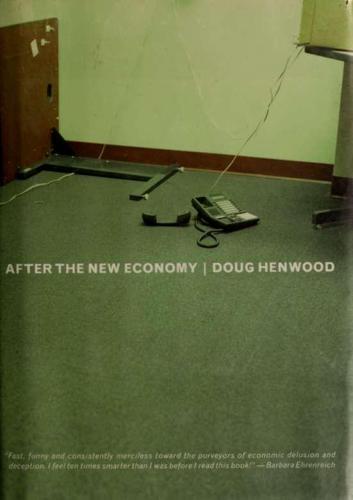
After the New Economy: The Binge . . . And the Hangover That Won't Go Away
by
Doug Henwood
Published 9 May 2005
In an article on union battles with Verizon Communications over the growth of the firm's nonunion operations, particularly in wireless, New York Times reporter Steven Greenhouse (2000) described it as "a struggle, stripped to its essentials, [that] pits old-line labor against the New Economy." That's one way to read it. You could also read it as a classic labor-management battle, with a profit-maximizing firm favoring a new nonunion subsidiary over an old, unionized one. But Greenhouse's interpretation—assisted by the phrase "stripped to its essentials," which is pretty devious, given that he's adding spin, not stripping anything away— gives the nonunion strategy the cachet of newness and the inevitabiHty of technological progress, making the unions seem Hke stodgy holdovers.
…
Firms operating internationally show a lower return on assets and a lower stock market value relative to assets than do otherwise similar domestic firms. Companies that export from their home base, however, show superior performance. In this analysis, multinationahzation looks Hke a poor substitute for old-fashioned exports. Reasons are unclear, but it may be that managers of MNCs are more interested in empire-building than in profit maximization. Even if this conclusion is overstated, there's Httle evidence that going worldwide is the profit-sweUing strategy that both antiglobalizers and business ideologues assume. On the facing page is a table showing the location and profitabihty of foreign investments by U.S. multinationals. A couple of points stand out from the colorless mass of numbers.
…
When displeased with "their" corporation, they would sell the stock rather than pick a fight wdth management. Stockholder rebellion among large corporations was "so rare that it can be ignored," because trouble-free profitabihty was the norm. Galbraith's corporation was run by a "technostructure" of suits and geeks. Profit maximization was a thing of the 1960s past. To Galbraith, high profits would only be passed along to shareholders and would undoubtedly come only with an increase in risk. Pay was relatively modest and unconnected to the stock price. Secure mediocrity was the goal. Galbraith's corporation had become subservient to the larger society and the state, with the state providing economic stabilization and an educated workforce.
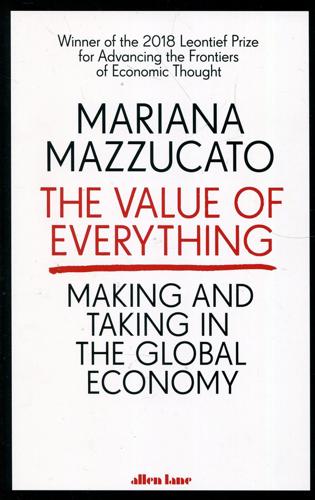
Value of Everything: An Antidote to Chaos The
by
Mariana Mazzucato
Published 25 Apr 2018
In sharp contrast to Friedman and Michael Jensen, who advocated strongly that a company succeeds simply through profit maximization, a stakeholder view emphasizes the social relationships between management and employees, between the company and the community, the quality of the products produced, and so on. These relationships give the company social goals as well as financial ones. Together they can create more sustainable ‘competitive advantage'. And because value is created collectively, through investments of resources by a multitude of actors, it should also be distributed more collectively - not just to the shareholders. In contrast to MSV and its goal of short-term profit maximization and its marginalization of human capital and R&D, stakeholder value sees people not just as inputs but as essential contributors who need to be nurtured.
…
Titled ‘The Social Responsibility of Business Is to Increase its Profits', Friedman's article advanced the idea that America's economic performance was declining because a cardinal principle of mainstream economics - that firms maximize profits - was being violated. There was no longer any punishment for managers who failed to profit-maximize. Shareholders could not inflict such punishment because they were too dispersed and uncoordinated; and markets could not do so, because listed companies had monopoly power and would not be assailed by new competitors if their costs and prices drifted upwards. Some 1960s economists had viewed ‘managerialism' as potentially good for society, if bosses allowed profit to be eroded by paying better wages to employees, meeting higher environmental or health and safety standards and investing more in new products.
…
Mistakes that arise from rent-seeking behaviour can lead to vested interests influencing government. As we know, rent occurs when value is extracted through special privileges, for example a subsidy or tax break, and when a company or individual grabs a large share of wealth without having created it. Profit-maximizing firms can try to increase their profits by soliciting special policy-related favours, and are often successful because politicians and policymakers are open to influence and even corruption. The possibility of this sort of capture (of government by vested interests) is a problem, but it becomes even more acute when there is no clear appreciation of government value.
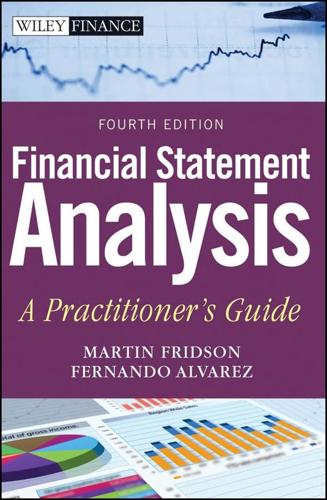
Financial Statement Analysis: A Practitioner's Guide
by
Martin S. Fridson
and
Fernando Alvarez
Published 31 May 2011
Analysts need not go to the extreme of resigning in protest, but they will benefit if they can avoid getting caught up in the prevailing delusion. To be sure, organizational behavior has not been entirely overlooked up until now in the literature of financial statement analysis. Typically, academic studies depict issuers as profit-maximizing firms, inclined to overstate their earnings if they can do so legally and if they believe it will boost their equity market valuation. This model lags behind the portrait of the firm now prevalent in other branches of finance.16 Instead of a monolithic organization that consistently pursues the clear-cut objective of share price maximization, the corporation is now viewed more realistically as an aggregation of individuals with diverse motivations.
…
The present system is not the product of objective analysis by panels of experts driven solely by a desire to provide accurate and transparent financial statements to the public. On the contrary, the design of the rule-making bodies and the rules they issue are outcomes of fierce political struggles. Auditing firms are profit-maximizing businesses that face unavoidable conflicts between upholding professional standards, on the one hand, and retaining clients and controlling costs, on the other. Given these facts, individual cases of audit failure cannot be viewed as isolated incidents. A systematic component perpetuates financial misreporting, despite reforms that periodically emerge in reaction to exceptionally shocking accounting scandals.
…
As the reform process drags on, popular anger over accounting issues tends to subside, as the public's attention shifts to new controversies in other areas of legislation and regulation. With attention diverted from reform of the accounting system, persistent lobbying by corporations and auditors waters down the original sweeping proposals. Systematic problems in the audit process arise not only from the regulatory structure but also from the business strategies of profit-maximizing accounting firms.14 The problem dates back to the 1970s, when the American Institute of Certified Public Accountants lifted a ban on auditors advertising their services, soliciting rival firms’ clients unless invited, and participating in competitive bids for business. This change resulted from a federal government crackdown on such rules within professions, deeming them anticompetitive and threatening to launch antitrust suits to abolish them.
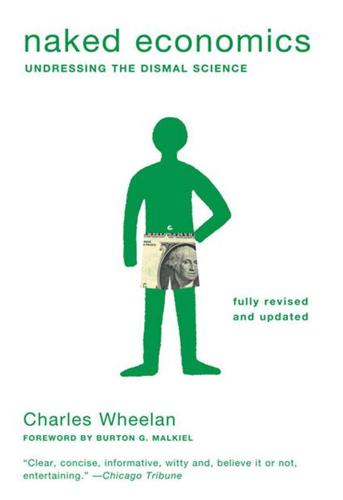
Naked Economics: Undressing the Dismal Science (Fully Revised and Updated)
by
Charles Wheelan
Published 18 Apr 2010
Instead, the Gap, like most other firms, has some degree of market power, which means very simply that the Gap has some control over what it can charge. The Gap could sell sweatshirts for $9.99, eking out a razor-thin profit on each. Or it could sell far fewer sweatshirts for $29.99, but make a hefty profit on each. If you were in the mood to do calculus at the moment, or I had any interest in writing about it, then we would find the profit-maximizing price right now. I’m pretty sure I had to do it on a final exam once. The basic point is that the Gap will attempt to pick a price that leads to the quantity of sales that earn the company the most money. The marketing executives may err either way: They may underprice the items, in which case they will sell out; or they may overprice the items, in which case they will have a warehouse full of sweatshirts.
…
Never mind that he made up the story after reading about the pricing disparity between humans and canines. The example is still perfect. There is nothing surprising about the fact that the same medicine will be sold to dogs and people at different prices. It’s airline seats all over again. People will pay more for their own medicine than they will for their pet’s. So the profit-maximizing strategy is to charge one price for patients with two legs and another price for patients with four. Price discrimination will become even more prevalent as technology enables firms to gather more information about their customers. It is now possible, for example, to charge different prices to customers ordering on-line rather than over the phone.
…
(Remember, I was the speechwriter for the governor of Maine; I have tried to explain that.) Trade, like technology, can destroy jobs, particularly low-skilled jobs. If a worker in Maine earns $14 an hour for something that can be done in Vietnam for $1 an hour, then he had better be 14 times as productive. If not, a profit-maximizing firm will choose Vietnam. Poor countries lose jobs, too. Industries that have been shielded from international competition for decades, and have therefore adopted all the bad habits that come from not having to compete, can be crushed by ruthlessly efficient competition from abroad. How would you like to have been the producer of Thumbs-Up Cola in India when Coca-Cola entered the market in 1994?
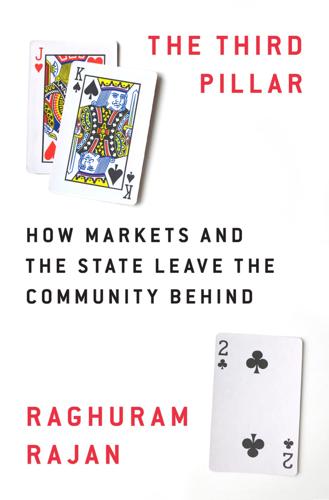
The Third Pillar: How Markets and the State Leave the Community Behind
by
Raghuram Rajan
Published 26 Feb 2019
Clearly, corporations are not meant to be political organizations, and should not attempt to be so. Nevertheless, they ought to stand up and be counted when the fundamental tenets of society are at risk, for in the long run, this will affect everyone’s ability to make profits. An overly narrow focus on firm profit maximization will ensure that when needed, many will be missing in action. The renewed emphasis on individualism, on profits, and on rolling back the state, as exemplified by Friedman’s dictum, certainly raised efficiency initially. The roll back has been selective, though, typically favoring powerful large private players at the expense of weaker smaller ones.
…
Volkswagen doctored emission test results for its diesel cars, while many European banks were also fined for misleading customers. In an integrated world, behavioral norms do spill over between leading firms. The larger difference between the Anglo-American economies and continental Europe is that the former elevated the deregulated profit-maximizing free market onto a pedestal, while the latter has been more skeptical of its behavioral aberrations. Europe has not gotten all the efficiency benefits that it could from the unfettered market, but neither has society been undermined as much by the accompanying ideology. AND MISTAKES MADE . . .
…
We have to examine and reduce barriers to competition, including new forms of incumbent property rights that have built up in recent years. Finally, policies can help jump-start adjustment but both the market and the community will also adjust on their own over time. They should be given the space and time to do so. CHANGING FROM PROFIT MAXIMIZATION TO VALUE MAXIMIZATION We have seen that along with the search for more productive efficiency, shareholder value maximization also encourages aberrant behavior, such as violating implicit contracts with employees. Can corporations not do better? If the private sector is to be trusted by the community, and if it is to be a reliable check on the state, it does not just have to be well behaved, it has to be seen to be well behaved.

Against Intellectual Monopoly
by
Michele Boldrin
and
David K. Levine
Published 6 Jul 2008
This form of inefficiency is specific to the kind of monopoly power that patents and copyrights bring about. Being its “discoverers,” we will christen it “IP-inefficiency” and illustrate its working by means of a few significant examples. The theory of why IP-efficiency comes about is rather simple: like every profit maximizing entrepreneur, monopolists are willing and able to do anything legally and technically feasible to retain their monopoly profits. Later in the book, we talk about the Schumpeterian model of dynamic efficiency via creative destruction. This model dreams of a continuous flow of innovation due to new entrants overtaking incumbents and becoming monopolists until new innovators quickly take their place.
…
This is an important point, which deserves a separate comment. In a world in which strong patent protection in some countries coexists with weak protection in others, a country that increases patent protection should observe an increase in the inflow of foreign investment, especially in those sectors where patented technologies are used. Profit-maximizing entrepreneurs always choose to operate in those legal environments where their rights are the strongest. In the United States, for example, economists and people with common sense alike have long argued that the policy of offering tax incentives and subsidies to companies that relocate in one state or another is not a good policy for the United States as a whole.
…
The argument goes as follows: monopoly power allows price discrimination – that is, the sale of the same good for a high price to people valuing it a lot (usually people richer than average) and for a low price to people valuing it little (usually people poorer than average). As a result of the absence of patent protection, there are very many new drugs that are not marketed in poor countries by their original producer, as the latter is not protected by reliable patents in that country. If it were, the profit-maximizing monopolist would have an incentive to quickly introduce those drugs, at prices lower than in rich countries, also in poor countries. This would increase the welfare of the poor country’s residents, as they would receive the medicine earlier rather than later. Although the argument sounds perfectly logical (leave aside the issue of how large the gains from this earlier marketing of new medicines would be), there are two points its advocates either do not notice or underplay.
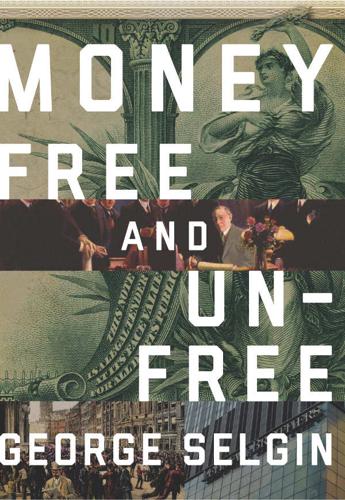
Money Free and Unfree
by
George A. Selgin
Published 14 Jun 2017
Instead, the public banks that later became full-fledged central banks were established solely for the purpose of catering to their sponsoring governments’ fiscal needs—by managing their deposits, administering their debt, and, especially, accommodating their short-run credit needs. Despite their close relationships with the national governments that helped to establish them, these proto-central banks were profit-maximizing firms, and as such were managed solely in their owners’ interest rather than in the interest of the broader financial community. The notion that public banks’ privileges obliged them to promote general economic stability came only in the aftermath of numerous financial crises—crises which, I intend to show, the public banks themselves helped to bring about.
…
The second shows how restrictions on private currency issue in particular have historically been an especially significant cause of financial weakening; its focus is more on developments in Great Britain. Because central banking presupposes a monopoly in currency supply, the existence of central banks itself turns out to be a crucial cause of financial crises. A “FINANCIAL WEAKENING” HYPOTHESIS Why should banks, unlike other profit-maximizing firms, evolve in a manner that exposes them lemming-like to periodic waves of bankruptcy? I believe the answer is that they do not evolve that way at all but have been weakened by legal restrictions ultimately aimed at generating revenue for the government or at propping up special interests within the banking industry.
…
Nor is there any basis for the claim, made by Jack Guttentag and Richard Herring (1983: 5) and implied elsewhere, that a government lender of last resort “may have better information than the private markets . . . and may know that [a] bank is solvent when the private market does not.” In fact, private providers of last-resort assistance are much more likely than any central bank is to conform to the “classical” recipe of lending only to solvent institutions at penalty rates, in part because doing so is entirely consistent with profit maximization. As will be seen below, by refusing last-resort assistance, central banks in the past have managed to reinforce their own privileged status—a status that rendered them peculiarly immune to confidence externalities. More recently, on the other hand, central banks have been inclined to extend aid at subsidy rates and often to insolvent institutions (Garcia and Plautz 1988: 54; Sprague 1986).
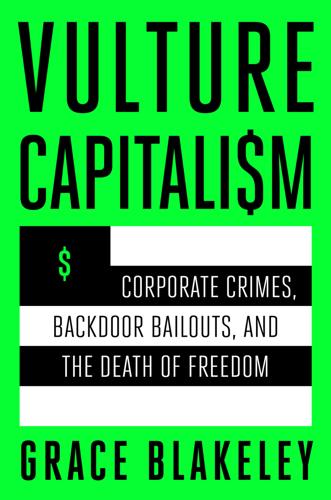
Vulture Capitalism: Corporate Crimes, Backdoor Bailouts, and the Death of Freedom
by
Grace Blakeley
Published 11 Mar 2024
The point of a corporation is to maximize its profits—and when corporations maximize profits, they create jobs and products that benefit everyone. States tend to get in the way of corporate planning through taxes, regulation, and other unwarranted interference with the operation of the free market. The first problem with this argument is that, in the largely unfree markets that exist within all modern capitalist societies, profit maximization does not lead to outcomes that are beneficial to everyone else. Without the competitive pressure to invest or pay decent wages, profits are simply distributed to the wealthy while workers face lower wages and higher prices. A world of pervasive corporate power is one characterized by low investment, low productivity, low wages, and high inequality.20 And even the very limited view of freedom held by the neoliberals is not safeguarded under the capitalist monster they have created.
…
Rather than investing in jobs creating infrastructure investment programs, or public services designed to support working people, neoliberal states instead handed out unfathomable amounts of cash to big businesses and wealthy individuals while claiming to promote “free markets.”87 Privatization, for example, was supposed to create efficient, profit-maximizing private corporations out of inefficient public behemoths run by unaccountable bureaucrats.88 Instead, it simply transferred governance of vital national infrastructure from the public sector to an oligopoly of quasi-public corporations, whose profits were effectively guaranteed by the state.
…
Rising monopoly power has been linked to rising national and international inequality, a global race to the bottom on tax, declining innovation, falling wages, regulatory capture, and even the erosion of democracy.95 Concern about these problems is not confined to progressives: ardent defenders of capitalism can frequently be found lamenting the problems created by corporate concentration.96 But the solutions they offer—from more stringent antitrust law to better corporate governance—fail to cut to the heart of the issue. Monopolization is as central to capitalism as profit maximization: you can’t have one without the other. Marx’s understanding of the capitalist firm allowed him to show that what he called centralization—the concentration of production into a smaller number of larger corporations—was an inherent part of the development of capitalism.97 As production becomes more technologically advanced, the amount a business needs to invest to commence operations increases.98 Building a factory from scratch requires more investment today than it did a hundred years ago because you need more technology to compete with incumbents.
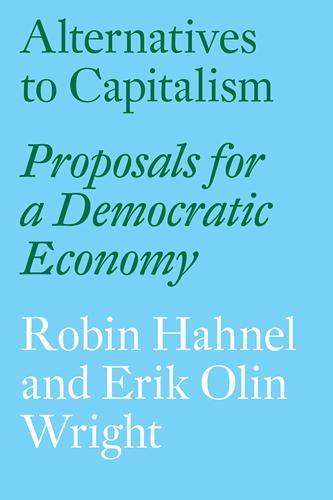
Alternatives to Capitalism
by
Robin Hahnel
and
Erik Olin Wright
The Solidarity Economy The “solidarity economy” goes beyond other forms of social empowerment by constituting an alternative way of directly organizing economic activity that is distinct from capitalist market production, state organized production, and household production (Figure 11).6 Its hallmark is production organized by collectivities directly to satisfy human needs not subject to the discipline of profit-maximization or state-technocratic rationality. The state may be involved in funding these collectivities, but it does not directly organize them or their services.7 The system of child daycare provision in Quebec is a good example. In 2008 parents only paid seven Canadian dollars per day for full-time daycare for preschool children provided by community-based nonprofit daycare center, but provincial government subsidies ensured that providers were paid a living wage.
…
What sustainability requires is that the participants’ commitment to the institutions is not undermined by the effects of its operation. 4Throughout this paper I will address my comments strictly to Robin’s writing on participatory economics. I recognize, of course, that many of the ideas were developed jointly with Michael Albert. 5Like Robin, I reject the narrow meaning of efficiency adopted by many economists as the profit-maximizing use of resources in a market. Rather, efficiency refers to the allocation of all resources (including the time of all participants) that best reflects the optimal trade-offs for alternative uses of those resources. Efficiency must include a full account of positive and negative externalities. 6I don’t think my lack of intuition here is because I have not read the technical economic papers that Robin refers to in his essay, papers which he describes as proving that his planning mechanism generates optimal outcomes.

Democracy at Work: A Cure for Capitalism
by
Richard D. Wolff
Published 1 Oct 2012
However, the real contents and effects of government regulations depend on the interests that govern their design and implementation. The New Deal–era taxes on business and the rich and regulations of enterprise behavior proved vulnerable and unsustainable. The enemies of the New Deal had the incentives (profit maximization) and the resources (their returns on investments) to undo many of its reforms after World War II, with ever-greater effect in the period since the 1970s. They systematically evaded, then weakened, the taxes and regulations of the New Deal, and eventually, when politically possible, eliminated them altogether.
…
The fact that from 2009 to 2012, such programs failed to diminish unemployment in any serious way (let alone end it) did not lead to proposals to fashion contemporary equivalents of Roosevelt’s federal employment program. Capitalist economies, including that of the United States, have a long history of limiting, regulating, or socializing enterprises and industries whose profit-maximizing strategies risk undermining those of capitalist enterprises collectively. Thus, to take but a few examples, transportation and communication industries have been managed in this way across many societies. In the United States, every one of the fifty states has an insurance commission to monitor and regulate profits of enterprises in that industry—after a long experience of its negative consequences for other capitalist industries and society as a whole generated outcries and alliances strong enough to impose commissions on the insurance industry.
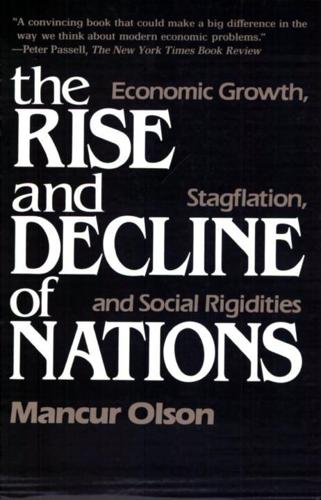
The Rise and Decline of Nations: Economic Growth, Stagflation, and Social Rigidities
by
Mancur Olson
A moment's reflection will, however, make it clear that a profit-maximizing firm that owns plant and equipment that is not up-to-date will be either better off for owning the old capital or alternatively no worse off than if it had no capital left at all. If the use of the old capital will generate receipts in excess of average variable costs, the firm will profit from using the old capital and be better off than if it did not own this capital. Should the use of the capital not generate a return above average variable costs, the profit-maximizing firm will not use it, and will be in essentially the same position as it would have been had this old capital been destroyed.
…
The fact remains that a sufficiently powerful union could, if bargaining costs and delays are ignored, serve its members' interests by encouraging the firm with which it bargains to adopt any innovations that increased the total surplus available for profits and wages in the aggregate. 23. This special case occurs when there is such an underutilization of labor in relation to the amount of other factors that the average product of labor would increase if another laborer were added. But the profit-maximizing firm could never be in this range. 24. Sir John Hicks, "Structural Unemployment and Economic Growth: A 'Labor Theory of Value' Model," in Mueller, The Political Economy of Growth. 25. Strictly speaking, Hicks's proof applies only to a two-sector economy with labor as the only factor of production.

The Problem of Political Authority: An Examination of the Right to Coerce and the Duty to Obey
by
Michael Huemer
Published 29 Oct 2012
If, for example, a company held a monopoly on shoe production, there would be too few shoes, and they would be too expensive.33 That is the problem with a rationally self-interested monopolist. But matters are worse than this, because we cannot even assume that a monopolist will be rational. Competition makes firms act as something approximating rational profit maximizers by eliminating those who do not behave in that way. In the absence of competitive pressures, a firm has much more leeway. Optimists may observe that an organization with a robust monopoly can survive while magnanimously sacrificing profits for the good of society, if it happens to be so inclined.
…
The reason is that customers are likely to place a greater negative value on Sally’s dispute resolution procedure than the positive value that Sally places on it, because customers tend to place negative value on perceived unfairness in addition to the potential monetary costs of unfair procedures. Instead, Sally’s best (profit-maximizing) option is simply to raise her price by $50. The same principles apply to employer-employee relationships. There is an optimal wage for an employer to pay such that, if the employer pays more than that, he lowers his total profits due to increased labor costs, but if he pays less, he lowers his total profits due to difficulty in attracting desirable employees.
…
Eventually, either all firms would go out of business, in which case society would devolve into a state of chaos, or the last firm able to hold out would acquire a monopoly on the industry, whereupon it would evolve into a state. There are several reasons why the foregoing scenario is unlikely to transpire: i) The argument unrealistically assumes that actual and potential crime victims favor unlimited compensation. This assumption may be driven by a conception of human beings as homo economicus, pure profit maximizers: since higher compensation equals higher profit, crime victims will favor unlimited increases in compensation. Normal human beings, however, do not see criminal victimization as an opportunity to get rich; that sort of thinking is generally reserved for scam artists. Most normal people wish to avoid being crime victims, if possible, and to secure justice in the event that they are victimized.

Cities in the Sky: The Quest to Build the World's Tallest Skyscrapers
by
Jason M. Barr
Published 13 May 2024
In it, they play the role of a hypothetical developer of an office skyscraper in Manhattan, on a large lot directly across from Grand Central Terminal on 42nd Street. In fine-grained detail, they itemize the various costs and revenues from erecting a building with varying heights, to identify the one that maximizes the return on the investment. Based on their calculations, they found that the profit-maximizing height was sixty-three stories, with a seventy-five-story one a close second. When we start comparing the costs and revenues from their hypothetical sixty-three-story project to the Empire State Building, the differences between the two seem relatively minor. The ESB lot was ninety-one thousand square feet; the CK lot was eighty-one thousand square feet—pretty close.
…
When one does all the math and assumes that both buildings were totally filled up and devoted only to office space with retail on the ground floor (and no observatories), the estimated return relative to the total cost for CK was 10.24 percent and for the ESB it was about 9.5 percent. Thus, in August 1929, the Empire State Building had a strong economic rationale, even if its height was not profit maximizing. Rendering of the Waldorf-Astoria Office Building (1928) Early rendering of the Empire State Building ca. 1929 Hypothetical skyscraper rendering from Clark and Kingston (1930) Ironically, however, in the long run, the final iteration was likely more profitable than the original version by Smith and Raskob would have been.
…
The original skyscraper rendering issued by the MTRCL to showcase its vision for the neighborhood had a building coming in at 1,919 feet (585 m) and with a long spire, which would have placed it as the fifth tallest in the world. However, SHK decided to use its maximum allowable floor area to widen its floor plates rather than go taller, and it eliminated the spire. Though the ICC is still the tallest building in Hong Kong, SHK chose a more practical and profit-maximizing tower that neither was a record breaker nor had funky architecture. “You can do any shape, but it has to be a square,” the developer told KPF. But why did Hong Kong develop such an attitude? For this, we need to go back to the beginning. FROM GETTING HIGH TO GOING HIGH On January 25, 1841, a wooden navy vessel pulls in at what is today Victoria Harbour, a calm stretch of sea between the island of Hong Kong and the Chinese mainland.

Damsel in Distressed: My Life in the Golden Age of Hedge Funds
by
Dominique Mielle
Published 6 Sep 2021
In the first decade of the industry, it was not rare to see forced sellers, such as a mutual fund whose mandate prohibits holding bonds of a bankrupt or downgraded company, or an insurance company that faces a large claim and needs cash. These types of investors sometimes have to cope with investment constraints beyond pure trading-profit maximization. Hedge funds, on the other hand, were the rare breed that could buy when others had to sell and sell when others had to buy. They were the buyers or sellers of last resort and in such capacity, generally if not consistently, commanded a better execution price. If there is a forced seller and few viable buyers, the buyer gets a good deal.
…
Females face harsher outcomes despite engaging in misconduct that is 20 percent less costly and having a substantially lower propensity toward repeat offenses. And here is the clincher: the gap shrinks for branches with more female managers, meaning a greater number of women in positions of power. No profit-maximization reason can explain these observed results. It is as pure a sexist model as can be. The authors call it “the gender punishment gap.” And so my meeting preparation began long before the first conference call and the first meeting, well in advance of getting on the road at all, with a solid thesis.
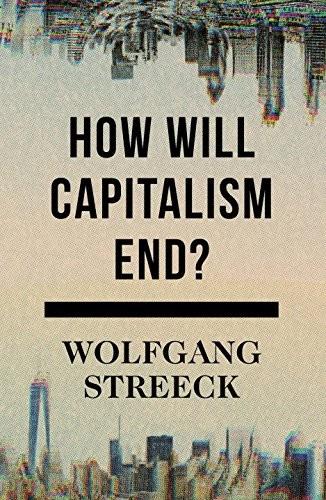
How Will Capitalism End?
by
Wolfgang Streeck
Published 8 Nov 2016
If we say that a society has ended, we mean that certain features of its organization that we consider essential to it have disappeared; others may well have survived. I propose that to determine if capitalism is alive, dying or dead, we define it as a modern society17 that secures its collective reproduction as an unintended side-effect of individually rational, competitive profit maximization in pursuit of capital accumulation, through a ‘labour process’ combining privately owned capital with commodified labour power, fulfilling the Mandevillean promise of private vices turning into public benefits.18 It is this promise, I maintain, that contemporary capitalism can no longer keep – ending its historical existence as a self-reproducing, sustainable, predictable and legitimate social order.
…
Taking class and power into consideration, one can see the state, government and politics in democratic-capitalist societies being fundamentally exposed to continuous pressures to accommodate contradictory needs and demands – pressures that permanently produce new constraints and opportunities for revision of the institutions governing the political economy. On the one hand, it is only by political intervention into the free play of market forces that the collective benefits that a democratic society expects from a capitalist economy can be extracted from it – that, in other words, the private vice of profit maximization may be converted into the public benefit of social progress, to sustain a political equilibrium helping the sitting government to build political legitimacy. On the other hand, except in special situations of very high economic growth, it would appear that the social corrections of the market that are needed to achieve political equilibrium in a democracy tend to undermine the confidence of capital owners and investors, thereby upsetting the economic equilibrium that is equally essential for capitalist-democratic stability.
…
Rather than the straightforward functionalism of much of the ‘new economic sociology’, the approach I propose features a dialectical version of it, one under which the functioning of capitalism depends vitally on the presence, essential but never guaranteed, of effective opposition to it. Whether such opposition can arise and do its work depends, in turn, on the existence of political resources that allow for the mobilization of countervailing power, a condition that cannot fundamentally be entrusted to the self-interest of capitalist profit maximizers. Capitalism entails, in addition to whatever else it may entail, an ever-present possibility of self-destructive destruction of its social containment, in the course of a politics of liberalization conceived as progressive removal of boundaries of all sorts, towards a final triumph of collectively irresponsible individual interests.
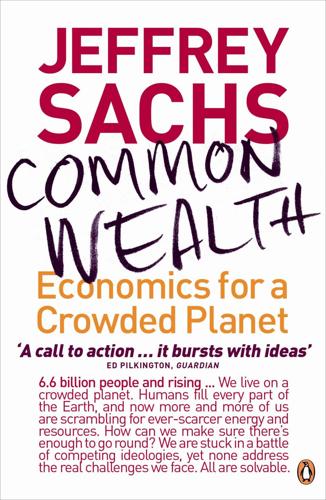
Common Wealth: Economics for a Crowded Planet
by
Jeffrey Sachs
Published 1 Jan 2008
Smokestack scrubbers can remove the sulfur dioxide from the flue gas by mixing the gas with lime to produce calcium sulfate, thereby preventing the acid rain. The flue gas desulfurization represents an added cost for the factory, but a cost that is much less than the benefit of saving the forests. The problem is that in a free and unregulated market, each profit-maximizing power plant lacks the incentive to buy a scrubber. Despite the large social benefits, the firm itself would reduce its profits by investing in the scrubber. A public policy to correct the market prices is needed to give the power plants the incentive to buy the smokestack scrubbers. Four types of policies can be used to align private incentives and society’s environmental interests.
…
Since money in the pocket today is worth more than the same amount in the future (because money today can be invested at the market interest rate and thereby grow over time), the decision will be to keep the fish in the lake only if the market value of the fish stock is expected to increase more rapidly than the rate of interest. If the price of the fish per ton is expected to remain unchanged, and if the fish is a slow-growing species, then the value of the fish in the lake will grow less rapidly than the rate of interest. The profit-maximizing owner will deplete the fish stock and perhaps drive a rare species to extinction, rather than wait to sell more fish in the future. Private (or community) ownership alone will not save the species. Two subtle issues are at work in this example. The first is that the market price of a species will generally not reflect the species’ societal value as part of Earth’s biodiversity.
…
Privatization, if done in a sloppy manner, can result in the changeover from a public monopoly to a private monopoly, with the private monopolist not even constrained by the need to win the next election. Private monopolies may have no interest whatsoever in ensuring access for the poor, specifically those households which are unable to pay the monopolist’s profit-maximizing price of water. One effective compromise between public ownership and privatization can be the insistence that private providers offer a lifeline tariff, which guarantees to each household a free fixed amount of water each day for uses that the household needs to stay alive (drinking, cooking, and hygiene).
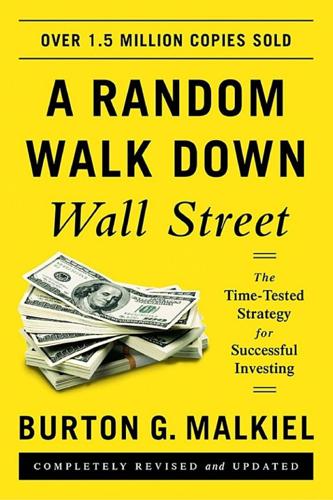
A Random Walk Down Wall Street: The Time-Tested Strategy for Successful Investing (Eleventh Edition)
by
Burton G. Malkiel
Published 5 Jan 2015
This suggests that others will try to anticipate the signal still earlier. Of course, the earlier they anticipate, the less certain they are that the signal will occur and that the trade will be profitable. Perhaps the most telling argument against technical methods comes from the logical implications of profit-maximizing behavior. Suppose that Universal Polymers is selling at around 20 when Sam, the chief research chemist, discovers a new production technique that promises to double the company’s earnings. Sam is convinced that the price of Universal will hit 40 when the news of his discovery comes out. Because any purchases below 40 will provide a swift profit, he may well buy up all the stock he can until the price hits 40, a process that could take no longer than a few minutes.
…
Perhaps a better version of the story would be to remember that if any $100 bills are lying around, they will not be there for long. As long as there are stock markets, mistakes will be made by the collective judgment of investors. And undoubtedly, some market participants are demonstrably less than rational. But even if price setting was always determined by rational profit-maximizing investors, prices can never be “correct.” Suppose that stock prices are rationally determined as the discounted present value of all future cash flows. Future cash flows can only be estimated and are never known with certainty. There will always be errors in the forecasts of future sales and earnings.
…
Standard & Poor’s 500, 179, 181 see also specific funds Nagel, Stefan, 250 NASDAQ, 80–81, 82, 109, 128, 254 National Cash Register, 48, 53 national income changes, as element in systematic risk, 224 National Student Marketing (NSM), 67–68, 69 “naughties,” 344, 411 New Economy, 241, 249 accounting fraud in, 93–95 Internet-driven, 79–97, 104–5 New Economy stocks, 172, 177 New England Patriots, 148 new investment technology, 26, 31, 189–228 alpha in, 219 beta in, see beta CAPM in, see capital-asset pricing model MPT in, see modern portfolio theory risk in, 190 new issues, 257, 318 caution with, 75 of Internet stocks, 84–87 of 1959–62, 57–59 of 1980s, 70–75 Newsweek, 57 Newton, Isaac, 47 New Yorker, 88 New York Post, 89 New York State Teachers Association, 384 New York Stock Exchange (NYSE), 56, 109, 144, 151, 397 Babson Break in, 51–52 speculation in, 48–55 New York Times, 91, 393 Nifty Fifty, 36, 68–70 NINJA loans, 101 Nobel Prize, 35, 183, 197, 209 No-Brainer Step, 379, 380–82 NO-DOC loans, 101 no-equity loans, 100 Non-Random Walk Down Wall Street, A (Lo and MacKinlay), 139 Nortel Networks, 83, 90, 161, 166 NSM, see National Student Marketing NTT Corporation, 76 nucleus theory of growth, 64 NYSE, see New York Stock Exchange odd-lot theory, 149 Odean, Terrance, 93, 234, 246, 256 O’Higgins, Michael, 150 Once in Golconda (Brooks), 49 “one-decision” stocks, 69 online brokers, Internet bubble aided by, 91–92 online investment advisers, 408 OPEC, 337 open-end funds, 402 operating expenses, 402 option premiums, 39 O’Shaughnessy, James, 150 Outlook (S&P), 393 overconfidence, 231, 232–35 overtrading, 234, 255–56 PalmPilot, 83 Paternot, Stephen, 86 P/BV ratios, see price-to-book value ratios P/E effect, 263 P/E multiples, see price-earnings multiples pension funds, 167, 182, 184, 303–4 P/E ratios, see price-earnings multiples performance, 65–68 of buy-and-hold strategy, 158 of common stocks (1970s), 340 of concept stocks, 65–68 of mutual funds, 66, 174–82, 398–400 vs. future results in mutual funds, 399, 401 Performance Systems, 68, 69 Personal Digital Assistants (PDAs), 83 Peters, Thomas J., 233 Pets.com, 84 Philadelphia 76ers, 145 Phillips, Don, 400 Phoenix, University of, 169 Pittsburgh Steelers, 148 Polaroid, 68, 69, 161 Ponzi schemes: Internet investment as, 80, 242 of Madoff, 258–59 ZZZZ Best as, 74 portfolio management, 66, 160–61, 164, 170, 174–84, 261, 349–50, 351, 361–62, 366–67, 389, 398 see also “smart beta” Portfolio Selection (Markowitz), 197 portfolio theory, see modern portfolio theory positive feedback loops, 80 Pound, John, 253 PowerShares, 270, 281 Prechter, Robert, 151–52 present value, 32, 125n price-dividend multiples, 330, 340, 341, 343 price-earnings (P/E) multiples, 57, 64, 65, 126, 264, 274, 336, 344, 346–47, 394–95 of blue-chip stocks, 68 crash in (1970s), 340 cyclically adjusted (CAPE), 347, 387 of growth stocks, 121–23, 130–33, 406 of high-tech stocks, 81 inflation of, 64 performance and, 263, 396 see also performance, of common stocks (1970s); performance, of concept stocks Priceline.com, 83 price stability, 54 price-to-book value (P/BV) ratios, of stocks, 264, 270, 274 price-volume systems, 143–44 Price Waterhouse, 153 Princeton University, 161 probability judgments, 233–34, 238 Producers, The, 166 product asset valuation, 72 professional investors: limitations of, 162–63 profit-maximizing behavior, as argument against technical analysis, 116–17 profits, 339 in inflation, 339 measurement of, 339 profit-sharing plans, 304 Prohibition, 52 property taxes, 314 prospect theory, 243–45 prospectuses, warnings on, 59 PSI Net, 90 psychological factors in stock valuation, see castle-in-the-air theory; technical analysis Puckle Machine Company, 45 Puerto Rico, 404 purchasing power, effects of inflation on, 28–29, 125n, 307, 315 Purdue University, 82 Quandt, Richard, 140 quant, defined, 221n Quinn, Jane Bryant, 91 Qwest, 166 Radio Corporation of America (RCA), 48, 53 railroad industry, 91, 96 RAND Corporation, 197 Randell, Cortes W., 66–68 random events, forecasting influenced by, 164–65, 176 random walk: defined, 26–28, 139, 140 difficult acceptance of, 145–46 fundamental conclusion of, 154 summarized, 35–36 random-walk theory, 105–6, 266–67 assumptions of, 190, 229, 230 fundamental analysis and, 182–84 guide for, 291 and housing bubble, 105–6 index funds and, 379–80 role of arbitrage in, 248–49 semi-strong form of EMH, 26, 182–84 strong (broad) form of EMH, 26, 182–84 technical analysis and, 137–41, 154–57 weak (narrow) form of EMH, 26, 140, 183 Raptor, 94 rate of return: after inflation, 338 for bonds, 194–96, 307, 315–21, 342–43, 344, 345 in CAPM, 213–19 for common stocks, 194–96, 307 compounded, 351 diversification and, 198–200 expected, see expected rate of return future events and, 30, 343–48 high, for bearing greater risk, 194–96, 212–13, 350, 408 investment objectives and, 306–13 negative, 196 for real estate, 313 rebalancing to, 360 risk-free, 215–18 “small caps” vs.

Adaptive Markets: Financial Evolution at the Speed of Thought
by
Andrew W. Lo
Published 3 Apr 2017
Instead of a bell curve, the distribution of Fama’s stock returns showed what are now known as fat tails, as though a teacher grading on a curve gave the top 10 percent of students an A instead of the Gaussian 2.5 percent.24 In 1965, with the publication of his Ph.D. thesis, Fama explained his growing theory of random walks to the financial analyst community, introducing the term efficient market into the financial lexicon for the very first time: An “efficient” market is defined as a market where there are large numbers of rational, profit-maximizers actively competing, with each trying to predict future market values of individual securities, and where important current information is almost freely available to all participants.… In an efficient market, on the average, competition will cause the full effects of new information on intrinsic values to be reflected “instantaneously” in actual prices.25 Fama summarized his version of the Efficient Markets Hypothesis in an epigram that became famous: in an efficient market, “prices fully reflect all available information.”
…
Let’s choose the variation where “A” is randomly displayed 75 percent of the time and “B” is displayed 25 percent of the time. Humans will choose a suboptimal strategy: we will match probabilities and choose “A” around 75 percent of the time, and choose “B” around 25 percent of the time—meaning that we would win on average 62.5 percent of the time. A purely rational, profit-maximizing individual would choose “A” consistently and win 75 percent of the time. Michael Gazzaniga, Sperry’s former student, and his colleagues discovered something very peculiar about the Psychic Hotline game. The simplified popular left-brain/right-brain model claims the left hemisphere is the intelligent, “rational” half, and the right hemisphere is the intuitive, “emotional” half.
…
Today, Veblen is viewed as one of the great sociologists of the twentieth century, but during his life, he was considered something of a renegade economist. Veblen believed that economics needed to be remade into an evolutionary science. He felt that economics was too preoccupied with the “hedonistic”—but here we should think of profit-maximizing Homo economicus rather than a partygoer on Spring Break. In Veblen’s words, “The economists have accepted the hedonistic preconceptions concerning human nature and human action, and the conception of the economic interest which a hedonistic psychology gives does not afford material for a theory of the development of human nature.… It is therefore not readily apprehended or appreciated in terms of a cumulative growth of habits of thought, and does not provoke, even if it did lend itself to, treatment by the evolutionary method.”25 Apart from the formal academic-speak, this should sound very familiar.
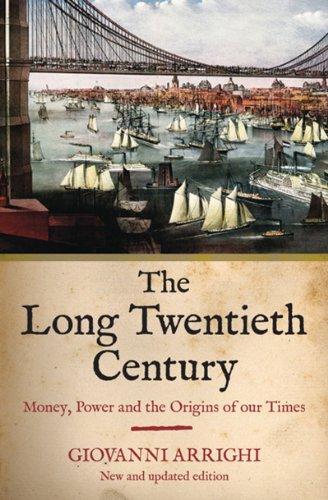
The Long Twentieth Century: Money, Power, and the Origins of Our Times
by
Giovanni Arrighi
Published 15 Mar 2010
This combination of circumstances leads some (mostly capitalist) agencies to divert their cash flows from the trading to the credit system, thereby increasing the supply of loanable funds, and other (mostly territorialist) agencies to seek through borrowing the additional financial resources needed to survive in the more competitive environment, thereby increasing the demand for loanable funds. It follows that the revenue-maximizing and profit-maximizing branches into which logistics of world economic expansion are assumed to bifurcate do not describe actual trajectories. Rather, they describe a field of forces defined by the coexistence of two alternative and mutually exclusive ideotypical paths of capital accumulation, the unity and opposition of which is the source of turbulence and instability in the world system of trade and accumulation. A single path means that the profit-maximizing logic of capital accumulation and the revenue-maximizing logic of trade expansions coincide and sustain one another.
…
This instability of processes of capital accumulation may be merely local and temporary, or it may be systemic and permanent. In the pattern shown in figure 3.8, the downswings and upswings in the amount of capital invested in trade are confined to the range of values enclosed by the revenue-maximizing and the profit-maximizing paths of expansion, and eventually bring the world-economy back on a path of stable expansion. In the pattern shown in figure 3.9, in contrast, the downswings and upswings are not confined to the range of values enclosed by the two ideotypical paths and they do not bring the worldeconomy back on a path of stable expansion.
…
Galbraith’s discussion of the various ways in which large-scale, bureaucratically managed, industrial organizations (his “technostructures”) can protect themselves from the disruptions of price-making markets. Like Veblen, Galbraith detects a fundamental contradiction between the pecuniary rationality involved in profit-maximization in a self-regulating market and the technological rationality involved in the use of expensive and specialized industrial facilities and personnel: The market has only one message for the business firm. That is the promise of more money. If the firm has no influence on its prices . . . it has no options as to the goals that it pursues.
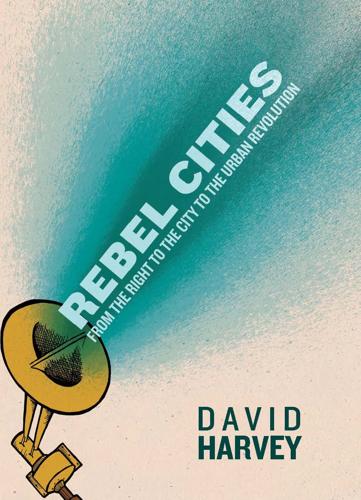
Rebel Cities: From the Right to the City to the Urban Revolution
by
David Harvey
Published 3 Apr 2012
Hernando de Soto argues influen tially that it is the lack of cle ar property rights that holds the poor down in misery in so much of the global south (ignoring the fact that poverty is abundantly in evidence in societies where clear prop erty rights are readily established). To be sure, there will be instances where the grant ing of such rights in Rio's favelas or in Lima's slums l ib erates individual energies and entrepreneurial endeavors leading to personal advance m ent. But the concomitant effect is often to destroy collective and non-profit-maximizing modes of social solidarity and mutual support, while any aggregate effect w ill almost certainly be nullifi ed in the absence of secure and adequately remunerative employment. In Cairo, Elya char, for example, notes how these seemingly progressive policies create a "market of d ispossession" that in effect seeks to suck value out of a moral THE RIGHT TO THE CITY 21 economy based o n mutual respect and re ciprocity, t o the advantage of capitalist institu tions. 19 Much the same commentary applies to the m icro-credit and m icro finance solutions to global poverty now touted so persuasively among the Washington financial institu tions.
…
Th ose who create an interesting and stimulating everyday neighborhood life lose it to the predatory practices of the real estate entrepreneurs, the financiers and upper class consumers bereft of any urban social imagination. The better the common qualities a social group creates, the more likely it is to be raided and appropriated by private profit-maximizing interests. But there is a further analytic point here that must be remarked. Th e collective labor that Marx envisaged was for the most part confined t o th e factory. What if we broaden that conception to think, as H ardt and Negri suggest, that it is the metropolis that now constitutes a vast common pro duced by the collective labor expended on and in the city?
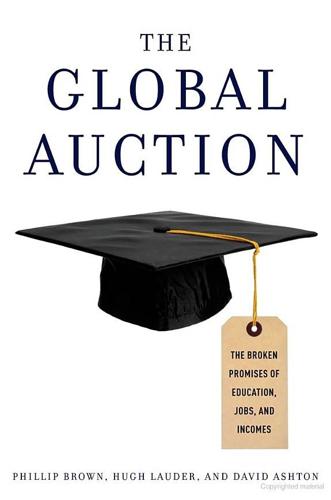
The Global Auction: The Broken Promises of Education, Jobs, and Incomes
by
Phillip Brown
,
Hugh Lauder
and
David Ashton
Published 3 Nov 2010
Just as the breakdown of national barriers exposed workers to the full force of the global auction, erstwhile national champions were similarly exposed to foreign competition. When one firm acts to take advantage of lower costs offshore, it often leads their competitors to follow, unless they can create a particular niche advantage by remaining at home. Those corporations that exist just for profit—maximizing returns to shareholders—are more likely to strip out costs within global operations by taking advantage of differences in wage rates and cultural differences in social expectations. As we were told in more that one company interview, “In China, they’re hungry to work.” Such companies are at the forefront of the trends toward offshoring high-value activities to low-cost locations.
…
It is the societal, state, or local capacity to exploit the collective intelligence of workers, sometimes in collaboration with those living in other countries, in the production of goods and services that people want. This is what counts rather than merely increasing the supply of college graduates.23 However, rebuilding a productive economy that contributes to the quality of people’s lives is difficult to envisage within a model of shareholder capitalism that rewards senior executives for short-term profit maximization based on driving down labor costs both at home and overseas. It has been too easy for the short-term interests of corporate managers and shareholders to be put before those of American workers and the longer-term interests of the nation’s economy. Companies need to operate within a regulatory framework where they are encouraged to balance immediate competitive pressures to reduce costs and increase profits with an eye on the medium term and the interests of employees and local communities.
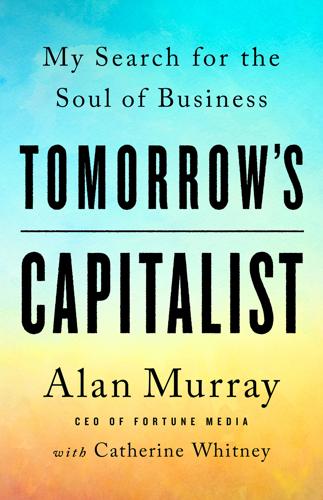
Tomorrow's Capitalist: My Search for the Soul of Business
by
Alan Murray
Published 15 Dec 2022
And they also think that embracing purpose, saying, ‘I want to have a broader purpose,’ is a better way to run the railroad.” She was describing the type of win-win situation I had heard so often from CEOs committed to stakeholder capitalism. It seemed to me that this was a fight well worth having. Profit maximizing, in theory, was clear-cut behavior. But in fact, it was anything but. As chief content officer, I had the opportunity to sit in the C-suite of the legendary media company Time, Inc., parent of Fortune, during the final days of its existence, before it was sold to Meredith. I saw the decisions that were made when you’re faced with a shareholder activist who’s demanding quarterly results.
…
If you have made it this far in the book, it should be clear that the job of leading a large business has become immensely more difficult than it was in the past. As another business guru, Gary Hamel, likes to remind us, it has also become immensely more human. The beauty of the shareholder primacy model, with its goal of profit maximization, was its simplicity. Here was a well-developed set of tools you could use to drive results. But running a business today involves a much more complicated set of calculations. At the Fortune Global Forum in Paris in November 2019, James Manyika, chairman of the McKinsey Global Institute, posed a thought-provoking list of ten questions that today’s best business leaders feel they must answer: • What is our mission and purpose as a company?

Competition Overdose: How Free Market Mythology Transformed Us From Citizen Kings to Market Servants
by
Maurice E. Stucke
and
Ariel Ezrachi
Published 14 May 2020
Overall, 92.3 percent of UK forensic scientists predicted that closing the FSS and turning over forensic work to private companies—and in-house police labs—would have a mostly negative impact on criminal justice, and 76.4 percent predicted it would lead to an increase in miscarriages of justice.50 Why weren’t the pessimistic forensic scientists blinded by the competition ideology? FIRST, they were aware that crime had declined in the United Kingdom, which meant that private sector forensic companies would be operating in an industry that was shrinking. Profit-maximizing firms would therefore have much less incentive to make significant investments in research and development, which would add to their costs but not, given the decrease in crime, to their bottom line. Innovation and progress would suffer, and a field in which the United Kingdom had long been a global leader in making groundbreaking discoveries would fall into decline.51 SECOND, they were concerned that private firms, under the pressure of toxic competition, might compromise the integrity of their analysis.
…
Moreover, about half the time recipients will reject low offers (generally less than 20 percent of the total amount available), even if it means they will get nothing at all.38 So if you offer $20 and try to keep $80 for yourself, the perception of unfairness and the desire to retaliate against that unfairness are likely to cause the other person to say no.39 The willingness of players to make a fair offer cannot be explained as the result of wanting to maintain their reputation or goodwill, since the Ultimatum Game and other iterations of it are often exercises in which you play anonymously (or only once so you don’t have to worry about playing again with the same person).40 Knowing this, even a savvy Chicago School economist would ditch the assumption of “cold” self-interest, and offer far more than the nominal, profit-maximizing amount of one penny. Now, let us turn to another recent experiment, in which the researchers used the Ultimatum Game (along with two other games, Public Goods and Dictator) to study fifteen small-scale economies in twelve countries on five continents.41 The groups studied were diverse—three foraging groups (East Africa’s Hadza, Papua New Guinea’s Au and Gnau, and Indonesia’s Lamalera), six slash-and-burn horticulturists (the Aché, Machiguenga, Quichua, and Achuar of South America and East Africa’s Tsimané and Orma), four nomadic herding groups (the Torguud, Mongols, and Kazakhs of Central Asia, and East Africa’s Sangu), and two sedentary, small-scale agricultural societies (South America’s Mapuche and Africa’s Zimbabwe farmers).
…
Schroeder, “The Midas Touch: The Lethal Effect of Wealth Maximization,” Wisconsin Law Review 1999, no. 4 (1999): 687, 754–60. 31.George J. Stigler, “Economics or Ethics?,” in The Tanner Lectures on Human Values, ed. Sterling M. McMurrin (Salt Lake City, UT: University of Utah Press, 1981), 143, 176; see also Robert H. Bork, The Antitrust Paradox: A Policy at War with Itself (New York: Basic Books, 1978), 119 (reasoning profit-maximization assumption is “crucial” to the Chicago School’s theories); Richard A. Posner, Economic Analysis of Law, 3rd ed. (Boston: Little, Brown 1986), 3 (“The task of economics . . . is to explore the implications of assuming that man is a rational maximizer of his ends in life, his satisfactions—what we shall call his ‘self-interest’”); Robert A.
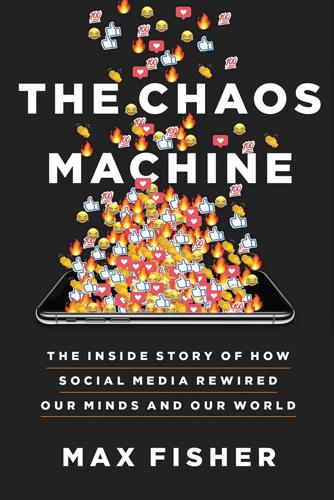
The Chaos Machine: The Inside Story of How Social Media Rewired Our Minds and Our World
by
Max Fisher
Published 5 Sep 2022
This is the real “social-validation feedback loop,” as Sean Parker called it: unconsciously chasing the approval of an automated system designed to turn our needs against us. “It is very common for humans to develop things with the best of intentions and for them to have unintended, negative consequences,” Justin Rosenstein, a former Facebook engineer who’d also worked on the Like button, told The Guardian. “If we only care about profit maximization, we will go rapidly into dystopia,” he warned. “One reason I think it is particularly important for us to talk about this now is that we may be the last generation that can remember life before.” 6. The Slingshot FOR ALL THE weight that attention and approval exert over users like Pearlman, and all the addictive pull of casino-like badges, the single most powerful force on social media is identity.
…
Social media’s governing rules, he wrote in his first message, “are not adapted to [the] reality of the content we see.” And something else worried him. Facebook, he wrote, had dumped “sensitive work that impacts world security” on multinationals like his employer, a “for-profit company that cares only about maximizing productivity.” However bad the rules were, the business model of corner-cutting, profit-maximization, and secrecy only made the failures in moderating the content that much worse. In the months to come, Jacob and I talked regularly on secure apps, and eventually I flew out to collect the guidebooks that he had sneaked out of his employer’s computer systems. The files promised something powerful: evidence that Facebook had integrated itself, however reluctantly, into the governance of a world whose politics and social relations increasingly routed through its systems.
…
Debates in the Valley over how to use their power—defer to governments more or less, emphasize neutrality or social welfare, consistency or flexibility—rarely considered the possibility that they should not have such power at all. That consolidating information and social relations under the control of profit-maximizing companies was fundamentally at odds with the public good. But since the scale of the backlash to big tech, and the evidence for its harms, couldn’t be completely dismissed, the Valley settled on an internal narrative, throughout 2018 and 2019, that let its leaders feel like they were still the good guys.
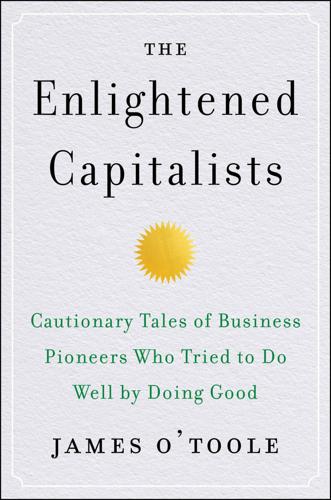
The Enlightened Capitalists
by
James O'Toole
Published 29 Dec 2018
But his optimism proved misplaced, and the outcome he so desired was not to be. Instead of diffusion of the knowledge he created, he was met with a barrage of criticism from left and right and, ultimately, near total public rejection. Owen was attacked as a socialist by his fellow industrialists, on the grounds that he broke two sacred laws of economics: profit maximization and the iron law of wages. Nonetheless, he was, in fact, a believer in Adam Smith’s free market, arguing, “The natural course of trade, manufactures and commerce should not be disturbed except when it interferes with measures affecting the well-being of the whole community.”33 Acting on that belief, he twice led the efforts of British industrial free-traders to put an end to mercantilist tariffs.
…
In order to fully integrate ethical practices, social responsibility, and environmental sustainability in Unilever’s corporate strategies, CEO Polman has pledged to create an organizational culture built on “doing the right thing,” rather than viewing such behavior as an inessential add-on. Perhaps the most radical aspect of Unilever’s transformation is its decision to abandon the traditional goal of short-term profit maximization. Polman acknowledged that transforming the culture of a £50 billion company with a thousand brands sold in 190 countries would not be easily accomplished. For example, the company has vowed to make the production of its Hellmann’s mayonnaise certifiably sustainable. In an interview with the New York Times, Unilever managers illustrated how difficult reaching that seemingly simple goal will be.30 For starters, there is no independent certification program for the soybeans used in the product, nor is there a standard measure of farm sustainability.
…
Instead of having a low-skilled, undereducated workforce, the company now employs educated designers, marketers, buyers, and managers in well-paying jobs. The downside of hiring such people has been that many are not fully committed to the company’s historic values. As early as the 1990s, when I spoke with the company’s chief operating officer—who had been brought in from the outside—I was surprised to discover that he believed profit maximization was the only legitimate business goal, privately confessing his discomfort with many of the company’s enlightened practices. Nonetheless, he assured me that, when needed, he was willing to publicly pay lip service to the stated values! At the time, it probably made little difference how he felt about the company’s values, because Bob Haas was on the scene to reinforce them.
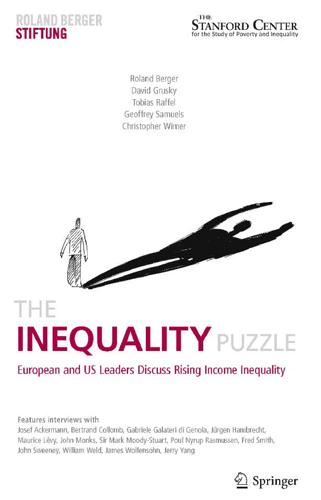
The Inequality Puzzle: European and US Leaders Discuss Rising Income Inequality
by
Roland Berger
,
David Grusky
,
Tobias Raffel
,
Geoffrey Samuels
and
Chris Wimer
Published 29 Oct 2010
Wimer into college,4 while the demand for college students is kept artificially low because, in at least some countries, elite private and public schools engage in explicit rationing of their available slots. It’s not as if Oxford University, for example, is meeting the rising interest in its degrees by selling some profit-maximizing number of them. If top universities did meet the demand in this way, the excessive returns to a high-prestige education would disappear. But instead they’ve decided to ration. When, by contrast, the demand for hybrid cars increased dramatically in the U.S., car manufacturers responded by ramping up production to a profit-maximizing level, not by setting up hybrid-car “admissions committees,” not by carefully interviewing and testing prospective buyers, not by asking them to submit detailed resumes and statements about how the hybrid-owning experience will change their lives.
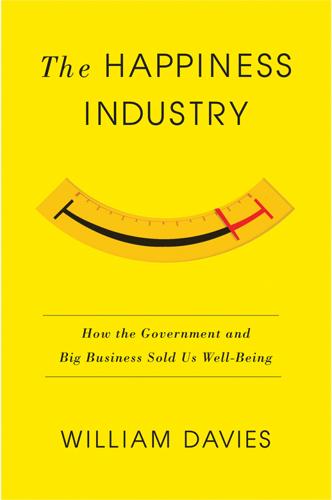
The Happiness Industry: How the Government and Big Business Sold Us Well-Being
by
William Davies
Published 11 May 2015
Hsieh advises businesses to identify the 10 per cent of employees who are least enthusiastic towards the happiness agenda, and then lay them off.18 Once this is done, the remaining 90 per cent will apparently become ‘super-engaged’, a finding which is open to more than one psychological interpretation. As the science of happiness has moved closer to the front line of profit-maximizing business, something curious has happened to it. For Bentham, happiness was something which resulted from certain activities and choices. Neo-classical economists such as Jevons and behaviourist psychologists such as Watson assumed something similar, implying that individuals could be lured to make certain choices by dangling a pleasurable carrot in front of them.
…
They are the last transcendent moral principles for a society which rejects moral authority. As Slavoj Žižek has argued, enjoyment has become an even greater duty than to obey the rules. Thanks to the influence of the Chicago School over government regulators, the same is true for corporate profitability. The entanglement of psychic maximization and profit maximization has grown more explicit over the course of the neoliberal era. This is partly due to the infiltration of corporate interests into the APA. In the run up to the DSM-V, published in 2013, it was reported that the pharmaceutical industry was responsible for half of the APA’s $50 million budget, and that eight of the eleven-strong committee which advised on diagnostic criteria had links to pharmaceutical firms.33 The ways in which we describe ourselves and our mental afflictions are now shaped partly by the financial interests of big pharma.

Buying Time: The Delayed Crisis of Democratic Capitalism
by
Wolfgang Streeck
Published 1 Jan 2013
Contrary to neo-Marxist theories, a legitimation crisis may therefore also grow out of discontent on the part of ‘capital’ with democracy and its associated obligations – hence without a progressive, system-transcending evolution of the demands of society on economic and social life, such as many thought to lie ahead in the 1970s. A legitimation crisis theory that starts with capital treats firms and their owners and managers as advantage-seeking profit maximizers rather than as prosperity machines, or functionaries obediently carrying out government economic policy. ‘Capital’ will appear in it as a self-willed and self-interested collective actor, strategic and capable of communication but only to a limited extent predictable, which may be dissatisfied and express itself accordingly.
…
In it we find various forms of payment by results, akin to piece-rates for manual industrial workers; small savers who rely on both wage and capital income; and the proceeds from so-called ‘human capital’, which may be regarded as income from both labour and capital. What matters here is the analytical distinction between the dynamic of capital accumulation geared to open-ended profit maximization and the traditionalism of a secure livelihood at a given, or predictably rising, level of income. Both economic cultures exist alongside each other in capitalism as different action orientations, represented by different social groups and institutions with conflicting, and partly overlapping, expectations and requirements (W.
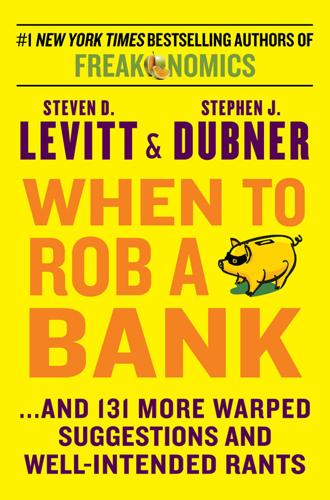
When to Rob a Bank: ...And 131 More Warped Suggestions and Well-Intended Rants
by
Steven D. Levitt
and
Stephen J. Dubner
Published 4 May 2015
Here is how perch is priced: 2-piece perch meal: $3.58 3-piece perch meal: $4.69 4-piece perch meal: $6.45 So you get that third piece of perch cheap, but they nail you on the fourth piece. This certainly hints at Harold’s thinking there is some logic to this sort of pricing. Ultimately, though, my guess is that the person who chose these prices was just confused. One thing I have realized as I have worked more with businesses is that they are far from the idealized profit-maximizing automatons of economic theory. Confusion is endemic to firms. After all, firms are made up of people, and if people are confused most of the time by economics, why wouldn’t that carry over to firms? Why Are Kiwifruits So Cheap? (SJD) I’ve been eating a lot of kiwifruits lately. (You may also know them as the Chinese gooseberry.)
…
A quick Google search, however, revealed that the Postal Service isn’t condoning the chain mail. Actually, the explanation for why the letter got delivered without postage is even more interesting to me: apparently the automated mail-sorting machines fail to catch many letters that are missing a stamp. On reflection, this does make sense—profit maximization requires setting the marginal cost of an action equal to the marginal benefit. If almost all letters have stamps, then the benefit of checking each one with 100 percent accuracy is infinitesimal, so it makes sense to let some unstamped letters through. (The same idea holds for catching people who don’t pay their train fare.)
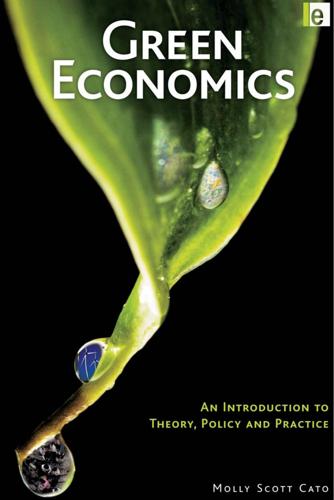
Green Economics: An Introduction to Theory, Policy and Practice
by
Molly Scott Cato
Published 16 Dec 2008
The problem with this is for the water companies, who make their profits by charging us for delivery and removal of water. 50 GREEN ECONOMICS In the years since the Second World War in the more developed economies of the world the exploitation of land for growing food has gradually been organized more along the lines of a capitalist business, demonstrated by the use of the term ‘agribusiness’ to describe it. The culture of competitiveness, profit maximization and short-term thinking has replaced the traditional values of land management.25 This has had horrendous consequences for the natural world that we are part of: species have become extinct, soil fertility has declined, and the landscape has been turned into a monocultural wilderness that fails to feed us both literally and figuratively.26 A green economist might suggest that we reverse the process – not only should we relearn the culture of care for the land, but we might also use an approach of care and protection for our industries.
…
The ‘natural capitalism’ school builds on earlier work by the Rocky Mountain Institute which suggested that, with more efficient energy use, twice as much value could be produced for half as much energy.5 Lovins and Lovins gave the example of improving a pipe system by straightening the pipe and enlarging its diameter, thus reducing the energy needed to pump fluid through it. Few green economists would argue with the idea of maximizing the efficient use of energy, but there is unlikely to be agreement about whether profit-maximization is compatible with a sustainable future. Issues of scale and ownership The issue of the increasing power of the larger multinational corporations in the globalized economy will be discussed elsewhere (see Chapter 8). Combined with the removal of political restraints on the movement of capital this has allowed owners of production facilities to dictate environmental standards as well as rates of pay.6 The decentralized nature of production allows them to operate with much less concern for social responsibility.
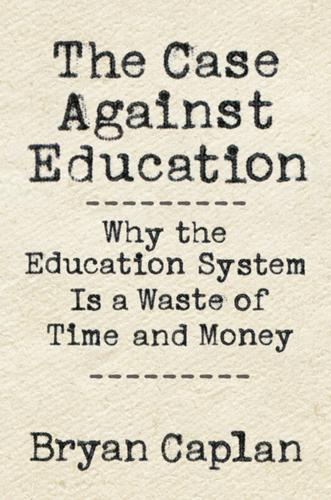
The Case Against Education: Why the Education System Is a Waste of Time and Money
by
Bryan Caplan
Published 16 Jan 2018
Employers don’t have to tell a modern model worker what’s socially acceptable case by case. Now we’re up to three broad traits that education signals: intelligence, conscientiousness, and conformity. We could easily extend this list: education also signals a prosperous family, cosmopolitan attitudes, and fondness for foreign films.21 For a profit-maximizing employer, however, the extensions are a distraction. The road to academic success is paved with the trinity of intelligence, conscientiousness, and conformity.22 The stronger your academic record, the greater employers’ confidence you have the whole package. Why do employers seek this package?
…
When government pays the educated more than they’re worth, private employers need not follow suit. Business could instead scoff, “If government wants credentialed workers so badly, it can have them.” Indeed, if government credentialism artificially inflates the education premium, refusing to match inflated government salaries is the profit-maximizing response. In the real world, however, the private sector values education more than the public sector. Researchers consistently find that government pay scales are “compressed”: governments overpay the least-educated workers and underpay the most-educated workers.59 The U.S. federal government is a case in point (see Table 3.3).
…
Schmidt 2009 documents the robust connection between intelligence and job performance. 96. Hanushek 2003, Hanushek, Schwerdt, et al. 2015. 97. Sociology has a long “credentialist” tradition—the idea that firms focus on formal credentials rather than skill. But sociologists tend to treat this focus as costly snobbery rather than a profit-maximizing response to imperfect information (Berg 1970, R. Collins 1979). Economists’ signaling models steered sociologists in a new direction; see, e.g., Labaree 1997, 2012, Bills 1988, 2003, 2004, David Brown 2001, 1995, Rosenbaum and Jones 2000, Kerckhoff 2000, and Spilerman and Lunde 1991. Thurow 1972, which actually slightly predates both Arrow and Spence, straddles the economic and sociological approaches.

The Quiet Coup: Neoliberalism and the Looting of America
by
Mehrsa Baradaran
Published 7 May 2024
He argued that high-cost debt and installment contracts like the one in Walker-Thomas were “merely redressing an imbalance created by the welfare laws, which encourage risky borrowing by truncating the downside of the risk.” Posner cited his son, Eric, for the idea that welfare laws distort incentives. The neoliberal economists spoke abstractly of a future of pure market freedom and profit maximization; less law, they reasoned, led to more freedom. Posner and Epstein were lawyers whose targets were much more precise. They pushed for more law when it came to property rights, contract enforcement, and the creation of new categories of protected legal interests such as patents and trademarks.
…
These economists and scholars cannot say, like Alan Greenspan once claimed of installment lenders, that they were not making exorbitant profits—those were the days when usury laws were in effect. Today, the profit margins on loans are upward of 34 percent, which fulfills the dream of shareholder profit maximization that Friedman championed.35 As many would discover, the neoliberal nirvana of efficient free markets contained some fine print, which was that efficiency referred to capital growth and the freedom was for investors who could enjoy unprecedented capital growth without limit. The people, meanwhile, were free to choose their debts among an expanding array of exotic loans from fringe lenders.
…
of 1896, 189 of 1960, 8 of 1964, 7–8, 15, 19, 24, 185–86 of 1968, 3, 7, 8, 18, 24–27 of 1980, 114, 228 of 1992, 114 of 2000, 114 of 2004, 114 of 2008, 114, 285, 299, 301 of 2016, 114, 319 of 2020, xxiii–xxiv, xl, 114 press, the, 26, 101–2 Price, Ray, 14 price controls, 30, 33, 62 pricing, 201, 204, 233–34 primogeniture, xxix printing press, 274 Private Choices and Public Health: The AIDS Epidemic in an Economic Perspective (Posner and Philipson), 176–78 private enterprise, 25–26, 323 private equity firms, xxvii, 91, 268, 271–73, 278, 300, 307, 323, 348 private law, 174–75 private property, xxx, xl, 44, 53, 190 privatization, xviii, xxvi–xxvii, 55, 60, 128, 216, 322 “Problem of Social Costs, The” (Coase), 171, 210 “Problem of the Negro, The” (Stigler), 22–23 productivity, xxxvi, 231 profit maximization, 84, 215, 239 profit motive, 51 profits, corporate, 57, 79, 84, 220, 237–38 Progressive Era, 129, 189, 232 progressive taxation, 128 pro-life movement, 188 Prometheus Unbound (Aeschylus), 319 Promised Land, A (Obama), 286 property law(s), xxix–xxxi, 172, 209, 220 property rights, xvi, xxix, xxxix, 9, 21, 48, 51, 101, 102, 125, 132–34, 171–73, 175, 205, 274, 276, 330, 341 property taxes, 222–23 prosperity gospel, 189 Proud Boys, 319 pseudo-Darwinian race science, 40–41 psychology, 166, 297 public choice theory, 222–25, 227, 228 Public Citizen, 76 public interest law firms, 88 public law, 174–75 public opinion, 87, 92, 101, 288 public schools (public education), 121, 124, 221.
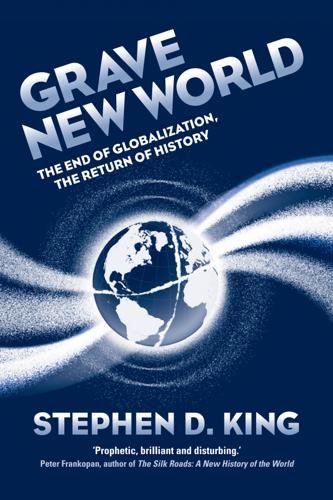
Grave New World: The End of Globalization, the Return of History
by
Stephen D. King
Published 22 May 2017
The authors of Basel I, signed in 1988 and enforced in 1992, regarded corporate lending as more risky than mortgage lending, and mortgage lending, in turn, as more risky than lending via investments in triple-A-ranked mortgage-backed securities. The regulators took the – superficially sensible – view that the riskier the class of asset, the more capital a bank would have to hold. But Basel I was indifferent about the quality of lending within asset classes (prompting profit-maximizing banks to lend more in any one category to riskier customers, who would pay higher interest rate spreads) and it was overly dependent on the judgements of ratings agencies, which, on too many occasions, had no more understanding of the inherent riskiness of innovative financial assets – collateralized debt obligations, for example – than anybody else.
…
In her view, the key driver of economic advance is ‘trade-tested betterment’, an ethical approach to economic exchange first elucidated by – in their very different ways – Adam Smith, Jane Austen and Benjamin Franklin.8 In McCloskey’s world, the ethics of good business revolves around the idea that human beings are not merely profit-maximizing or utility-maximizing drones, but instead people capable of integrity, trust, respect, prudence, thrift, affection and the other ‘bourgeois virtues’. Seen in this light, institutions may only serve to restrict the beneficial economic exchanges that ultimately have allowed so many billions of people to escape grinding poverty.

The Financial Crisis and the Free Market Cure: Why Pure Capitalism Is the World Economy's Only Hope
by
John A. Allison
Published 20 Sep 2012
We retained the servicing to ensure a high level of customer satisfaction. There were times when, from an interest-rate risk and loan demand perspective, we would have liked to hold the loans in our own portfolio. However, the front-end accounting cost was so large that we sometimes kept selling the mortgages even though we did not think it was an economic profit-maximizing strategy. You may say that we were maximizing short-term profit. However, the income from holding mortgages would be spread over seven or eight years rather than being recognized in the current quarter. It is impossible to explain this difference to even sophisticated investors because it does not make sense.
…
This situation creates a major competitive advantage for these giant firms in the long term. When times are good again and the regulators look away (because of political pressure created by the massive lobbying efforts of these crony capitalist/socialist firms), the companies will be back taking irrational risk, with the goal of short-term profit maximizing. A zebra does not change its stripes. In my career, Citigroup has been saved by the government three times. Each time, it has afterward become bigger and worse. This is an almost certain outcome of the distorted incentive system that keeps incompetent companies in business. In the meantime, these government-supported companies will develop strategies that involve terribly risky investments and that will drive their remaining midsize competitors out of whole market segments.
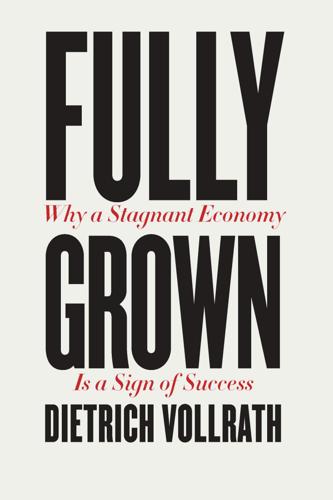
Fully Grown: Why a Stagnant Economy Is a Sign of Success
by
Dietrich Vollrath
Published 6 Jan 2020
That would make sense, as high-productivity establishments are also more likely to be profitable establishments, and it would be odd if firms left open unprofitable establishments or added establishments that were not profitable to begin with. It would be odd, but before I was an economist I worked for several large corporations, and I had plenty of bosses who made decisions that were anything but profit maximizing. So it’s possible that the slower turnover of establishments was good for productivity growth, but it seems more likely that slower turnover was a drag on productivity growth. What I’ll show you at the end of this chapter, though, is some evidence that in fact slower turnover of firms did contribute to slower productivity growth.
…
This N could be the number of people (so the more people, the more demand there is for a good), or N could be something like total income (so the richer everyone is, the more demand there is). Either way, it tells us something about the scale of the market the firm operates in. Turning this around, you get P = Y−1/ϵN1/ϵ. Finally, let the firm produce output using Y = AL. Put this together with the profit function above, and you get . (A.56) Do the profit maximization problem here, and you get that , (A.57) which is just that the marginal cost of labor should equal the marginal revenue product of labor. Note that the tax rate doesn’t affect this. Solve this for labor and you get . (A.58) If you use this answer for L*, the assumption that Y = AL*, and the demand Y = NP−ϵ, you can solve for the price that the firm charges: , (A.59) which says that the price is a markup over the marginal cost, w/A.
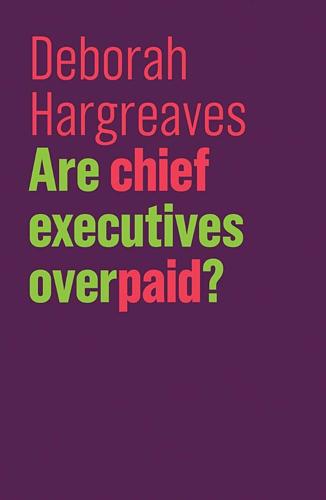
Are Chief Executives Overpaid?
by
Deborah Hargreaves
Published 29 Nov 2018
Whether we call this a stakeholder approach or caring capitalism, it is nothing short of a new corporate ethos. We are starting to see some tentative steps emerging. For example, the Benefit Corporation movement that started in the US gives for-profit corporate entities new legal goals. These include a positive impact on society, workers, community and the environment, rather than just profit maximization for shareholders. Other smaller companies – often technology firms – are introducing low pay ratios or getting their employees to vote on the right level of pay for the boss. A Canadian initiative, Wagemark, was set up in 2014 to give an endorsement to companies with fair pay ratios. It aims to set a kitemark for best practice in pay.
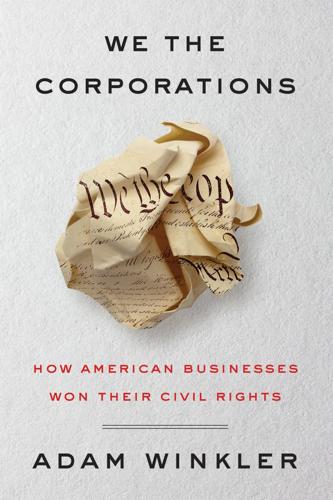
We the Corporations: How American Businesses Won Their Civil Rights
by
Adam Winkler
Published 27 Feb 2018
Nonetheless, today nearly every law student reads the Ford case and learns that, by law, a corporation exists to further the interests of stockholders, not the interests of employees, customers, or the larger community. For those who believe that corporations should be more than profit-maximizing automatons, Dodge v. Ford Motor Company, writes Greenfield, is “corporate law’s original sin.”30 * * * IN THE LOUISIANA ADVERTISING tax case, Eberhard P. Deutsch and Esmond Phelps, the lawyers for the newspaper companies, sought to portray their clients as being fundamentally different from ordinary profit-maximizing corporations. These companies played a special role in a democratic society. They were an essential part of “the press” protected by the Constitution, and their unique mission was “to gather and disseminate information” in order to educate voters and keep the government in check.
…
The organization claimed that the NAACP had “its own right of freedom of association” that would be infringed by the mandated disclosure. Like the Louisiana newspaper companies that distinguished themselves from ordinary business corporations by citing the special role of the press in a democracy, Carter and Marshall argued that the NAACP was unique too. Unlike a profit-maximizing business, the NAACP was a “political organization” that “seeks to influence public opinion and affect the political structure to achieve its objectives.” Although a corporation, the NAACP was truly a voluntary membership organization operating in the public interest.10 THURGOOD MARSHALL (FOURTH FROM LEFT) AND ROBERT CARTER’S (SECOND FROM LEFT) FIGHT AGAINST RACIAL SEGREGATION LED THEM TO DEFEND THE RIGHTS OF NONPROFIT CORPORATIONS.
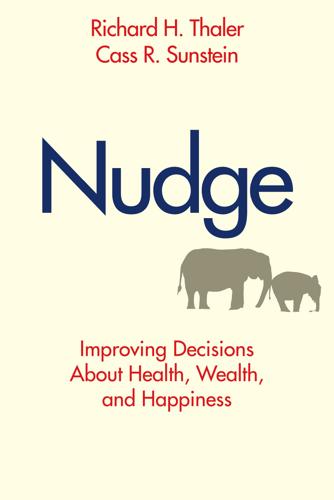
Nudge: Improving Decisions About Health, Wealth, and Happiness
by
Richard H. Thaler
and
Cass R. Sunstein
Published 7 Apr 2008
Indeed, some of those who are most suspicious of governments think that the only responsibility of private managers is to maximize share prices. As we have emphasized, the invisible hand will, in some circumstances, lead those trying to maximize profits to maximize consumer welfare too. But when consumers are confused about the features of the products they are buying, it can be profit maximizing to exploit their confusion, especially in the short run but possibly in the long run too. The invisible hand works best when products are simple and purchased frequently. We worry very little about consumers being ripped off by their dry cleaners. A dry cleaner who loses shirts or suddenly doubles prices will not be in business long.
…
In the environmental domain, we have suggested that disclosure can be an effective, and low-cost, monitoring device. We would love to see similar principles used to monitor governments. Require government officials to put all their votes, earmarks, and contributions from lobbyists on their Web sites. Require those determining the future of energy policy (to cite a random example) to reveal which profit-maximizing firms were invited to lend their all-too-invisible hands to the process of designing the rules. Require those determining the future of educational policy to reveal which interest groups, and which unions, gave them money in the most recent campaign. Require government agencies, not merely the private sector, to disclose their contributions to air and water pollution, and their greenhouse gas emissions.
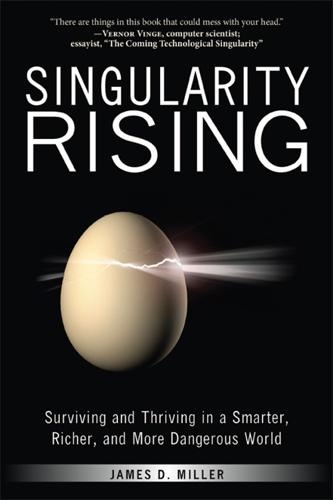
Singularity Rising: Surviving and Thriving in a Smarter, Richer, and More Dangerous World
by
James D. Miller
Published 14 Jun 2012
To understand his reasoning, let’s delve into a simple economic scenario: Pretend that someone emulates Robin and places the software in the public domain. Anyone can now freely copy e-Robin, although it still costs something to buy enough computing power to run him on, say a hundred thousand dollars a year. A profit-maximizing business would employ an e-Robin if the e-Robin brought the business more than $100,000 a year in revenue. After Moore’s law pushes the annual hardware costs of an e-Robin down to a mere $1, then a company would hire e-Robins as long as each brought the business more than $1 per annum. What happens to the salary of bio-Robin if you can hire an e-Robin for only a dollar?
…
In a world of trillions of emulations in which we attempt to rule, our existence would depend on maintaining control of the entire group, something that at least intuitively appears to be exponentially more difficult than coding one ultra-AI to like us. A business certainly wouldn’t want rebellious emulations. But a profit-maximizing company wouldn’t be too bothered by creating a group of emulations that had a one-in-a-million chance of rebelling because compared to all the other risks that normal companies face, this danger would be trivial. But, of course, if enough organizations each create a small risk of something very bad happening, then that very bad thing becomes very likely to happen.
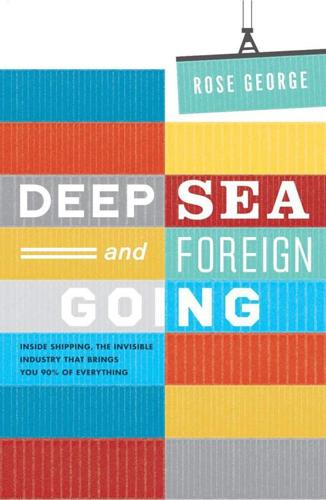
Deep Sea and Foreign Going
by
Rose George
Published 4 Sep 2013
They decide that it operates best in a stable environment, not anarchy, which is why many pirates come from the less chaotic areas of Somalia like Puntland. Stability is needed to get supplies. I read that the average profit margin for piracy in 2010 was 25–30 per cent, that pirates are ‘the very essence of rational, profit-maximizing entrepreneurs described in classical economics’. In 2010, Harvard Business School chose Somali piracy as the best business model of the year. Breakdowns of the pirate economic model have been done. One suggests that it costs $300,000 to kit out a pirate attack, including $2000 for weapons and ammunition; $14,000 for skiffs and outboards; $1200 for curved ladders; $4000 for GPS receivers and radios; $7000 for food; $30,000 for miscellaneous equipment; $180,000 for bribes.
…
id=10PORTLOUIS44&q=high-seas-affairs Chapter 7: No Man’s Land 1 None of these is piracy Hugh Williamson, ‘Piracy at Sea: The Humanitarian Impact’, presentation given at International Conference on Piracy at Sea, 16–18 October 2011, Malmo, Sweden. 2 Yo-Ho-Toe David Willetts, ‘Yo-ho-toe: Navy nab pirate with 24 digits’, Sun, 6 February, 2012. – A thin Somali in a yellow jumpsuit Indian Ocean with Simon Reeve, Kenya and the Horn of Africa, BBC, released 22 April 2012. – Profit-maximizing entrepreneurs ‘The Economics of Piracy: pirate ransoms and livelihoods off the coast of Somalia’, Geopolicity, May 2011, p.ii. – $300,000 to kit out a pirate attack Pelton, op. cit. 3 100 most important people in shipping ‘4. Garaad Mohammed, Pirate, Somalia Inc.’, Lloyd’s List, 14 December 2010, http://www.lloydslist.com /ll/incoming/article351642.ece – Hostages killed in 2011 ‘A Moment for Victims of Piracy At Sea’, OceanusLive. org, 1 January 2012, http://www.oceanuslive.org/Main/ ViewNews.aspx?
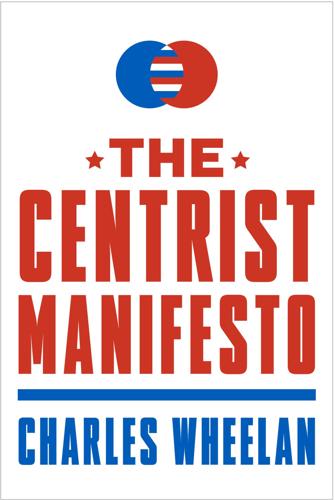
The Centrist Manifesto
by
Charles Wheelan
Published 18 Apr 2013
If the aforementioned block party were run like a business, all of the complexity of the decision-making would be solved with one simple analytical exercise: Which option makes us the most money? If that is a steak dinner followed by an adult-film marathon, then that is what the block party will look like. Too bad for the vegetarian families with kids. The profit-maximizing approach is fine for Starbucks; people who do not like coffee can spend their money elsewhere. It does not work for any shared endeavor in which those who disapprove of some course of action cannot simply go elsewhere. Public policy involves two inexorable realities: 1) We have no objective measure of the “best” course of action in many situations. 2) In such situations, many stakeholders have significantly different opinions on what the best course of action ought to be.

The Gated City (Kindle Single)
by
Ryan Avent
Published 30 Aug 2011
A worker thinking about taking a position that pays twice his current wage in a city that's three times as expensive will quickly realize that this means a reduction in his real earnings, and he'll think twice before accepting. Employers in high cost areas must pay wages that are high relative to those in other cities if they’re to have any workers at all. But these employers are, in most cases, profit-maximizing firms. They're not going to pay higher wages if they don't have to. Say you're a software entrepreneur who sells products to companies all over the world, and who locates in Silicon Valley. The Valley is very expensive; the rent is high and it takes high wages to lure workers. Those costs eat into your profits.

Human Compatible: Artificial Intelligence and the Problem of Control
by
Stuart Russell
Published 7 Oct 2019
The Internet and the global-scale machines that it supports—the ones that already interact with billions of “users” on a daily basis—provide the perfect medium for the growth of machine control over humans. I don’t expect that the purpose put into such machines will be of the “take over the world” variety. It is more likely to be profit maximization or engagement maximization or, perhaps, even an apparently benign goal such as achieving higher scores on regular user happiness surveys or reducing our energy usage. Now, if we think of ourselves as entities whose actions are expected to achieve our objectives, there are two ways to change our behavior.
…
A simple supervised learning algorithm may not have this effect, unless it is wrapped within an A/B testing framework (as is common in online marketing settings). Bandit algorithms and reinforcement learning algorithms will have this effect if they operate with an explicit representation of user state or an implicit representation in terms of the history of interactions with the user. 9. Some have argued that profit-maximizing corporations are already out-of-control artificial entities. See, for example, Charles Stross, “Dude, you broke the future!” (keynote, 34th Chaos Communications Congress, 2017). See also Ted Chiang, “Silicon Valley is turning into its own worst fear,” Buzzfeed, December 18, 2017. The idea is explored further by Daniel Hillis, “The first machine intelligences,” in Possible Minds: Twenty-Five Ways of Looking at AI, ed.

Rage Inside the Machine: The Prejudice of Algorithms, and How to Stop the Internet Making Bigots of Us All
by
Robert Elliott Smith
Published 26 Jun 2019
Inevitably, the economic pressures will begin to yield the same effects in these social contexts that they had in manufacturing, resulting in the rising expense of human-to-human interactions, making them less a part of common life and more a luxury for the better off. Moreover, because human work exists within a system where machines are likely to economically displace jobs, many more people will be driven into isolating work environments, like the Turkers. The merging of profit-maximizing economic and metric-optimizing scientific objectives, driven by and driving technological progress, forms a Gordian knot at the heart of AI. Perceived optimality and the efficiency of specialization drives economic progress, but with it we lose the art of the craftsman and the benefits of synergistic working.
…
Facebook’s algorithms are the virtual limbs of this corporate body, tasked with reaching out into the marketplace and finding the best financial returns. In such a situation, where only a single agenda is present, the optimization algorithms involved are the ultimate realization of the rational agents at the centre of two centuries of economic theory. They are allowed to act on their profit-maximizing agendas autonomously, and the particulars of their ‘actions’ are not controlled (or even tractable) by human beings. In fact, the massive growth in AI speculation and development that we’ve seen over the last decade would not be occurring if these self-organizing algorithms did not link so seamlessly with self-organizing free-market theories.

Don't Be Evil: How Big Tech Betrayed Its Founding Principles--And All of US
by
Rana Foroohar
Published 5 Nov 2019
We assume that rising share prices signify something good for the economy as a whole, as opposed to merely increasing wealth for those who own them. In this process, we’ve moved from being a market economy to being what Harvard law professor Michael Sandel would call a “market society,” obsessed with profit maximization in every aspect of our lives. Our access to the basics—healthcare, education, justice—is determined by wealth. Our experiences of ourselves and those around us are thought of in transactional terms, something that is reflected in the language of the day (we “maximize” time and “monetize” relationships).
…
But you could argue that, in a deeper way, Silicon Valley—not the old Valley that was full of garage start-ups and true innovators, but the financially driven Valley of today—represents the apex of the shift toward financialization. Today the large tech companies are run by a generation of business leaders who came of age and started their firms at a time when government was viewed as the enemy, and profit maximization was universally seen as the best way to advance the economy, and indeed society. Regulation or limits on corporate behavior have been viewed as tyrannical or even authoritarian. “Self-regulation” has become the norm. “Consumers” have replaced citizens.16 All of it is reflected in the Valley’s “move fast and break things” mentality, which the tech titans view as a fait accompli.
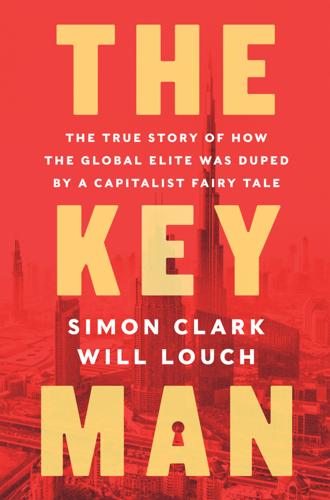
The Key Man: The True Story of How the Global Elite Was Duped by a Capitalist Fairy Tale
by
Simon Clark
and
Will Louch
Published 14 Jul 2021
“Arif Naqvi promotes transparency, accountability, and sustainability in a world where business often spends vast resources to achieve their opposites.” For his Norwegian hosts Arif was the perfect example of an impact investor who was triumphing over Milton Friedman’s shareholder value theory of profit maximization. “He has stated that stakeholder value must be on a level with or surpass shareholder value,” the presenter said. “This is a powerful idea but one that is not mainstream in a world of business, where too often it is claimed that shareholder interests by definition must trump all others.” Arif stood on the stage, struggling under the weight of a large trophy.
…
See U.K. government British Asian Trust, 43 Bronfman, Edgar, 100–102, 290, 291 Bronfman, Hannah, 102 Brown, Gordon, 199 Bruebaker, Gary, 243 Buffett, Warren, 6, 151, 164–65, 185 Bugg-Levine, Antony, 88 Burger King, 23 Burton, Richard, 283 Bush, George W., 136, 209 Business Roundtable, 292 Cai, Jin-Yong, 150, 178 Calvin, Kathy, 208 Cameron, Alexander, 272 Cameron, David, 272 capitalism Andrew Carnegie on, 85–86 Arif Naqvi’s use of impact investing for social purposes, 2, 6, 7, 149, 291 Barack Obama’s economic peace plan and, 73 shareholder value theory of profit maximization and, 88, 89, 100, 291 Care Hospitals, 167, 179–81, 182 Carlyle, 22–23, 208 Carnegie, Andrew, 85–86, 101 Catholic Church, 89–90, 91, 148–49, 243 Cayman Islands Abraaj companies incorporated in, 54, 252, 260, 262, 279, 290 Abraaj Private Equity Fund VI registered in, 206 Arif Naqvi’s private companies in, 152, 159, 194–95, 195, 279, 285 as offshore tax haven, 293 Cayman Islands Monetary Authority, 290 CDC Group, 92–98, 182, 225, 226–27, 232, 240, 288–89 Celano, Alessandro, 285 Celebration of Entrepreneurship (November 2010), 78–82, 83 Cerberus Capital Management, 261–63 Chambers, Stephan, 133 Charles, Prince of Wales, 1, 43, 175, 291 Chaudhary, Binod, 218–19 Chávez, César, 133 Chawla, Vinay, 207 China, 4, 139–40, 186–88, 267, 269–70 Chipman, John, 105, 289 Chvatal, Andrew, 235 Citibank, 49 Citigroup, 152–53, 285 Clark, Simon Abraaj article in Wall Street Journal published, 239–40, 267 anonymous emails on Abraaj sent to, 4–5, 267–68 Kito de Boer interview, 235–36, 247–48, 294 investigator interview, 264–65 Arif Naqvi interviews, 52–53, 255–60 Arif Naqvi’s attempts to stop investigation, 237, 239 research on Abraaj, 4–6, 235, 266–67, 287–90 Sev Vettivetpillai interview, 271–72 Cleary, Sean, 105, 263, 289 Clinton, Bill, 42, 46, 98, 139, 199, 222 Clinton, Hillary, 46, 74, 81, 197, 199, 200 Clinton Global Initiative, 98 Cohen, Ronald, 90, 132–33, 175, 198 Cold War, 14, 16, 72 Colony Capital, 261, 263 Colson, Barry, 231, 248–49 Commercial Bank of Dubai, 220, 225, 226 Commerzbank, 285 Cortés Garcia, Julieta, 138 Coutts, 117, 274 Crimson Tide (film), 252 Cupola Group, 17, 27, 37 Danish newspaper cartoon, 47 Danone, 123, 124, 125, 293 Dave, Ashish accounting at Abraaj Group and, 185, 225, 246 Andrew Farnum and, 220, 228 indictment of, 281 KPMG ties and, 185, 241 resignation reported by, 244 on valuations, 210 Dawood family, 15 de Boer, Kito as advisor to Arif Naqvi, 22, 26–27, 197, 198 on Air Arabia loans, 241–42 Simon Clark’s interview with, 235–36, 247–48, 294 as executive for Abraaj Group, 202–3, 247 on Fadi Ghandour, 25 McKinsey & Company and, 22, 137, 197–98 Marshall Plan for Middle East and, 198–201 United Nations Quartet and, 197, 198–99, 202 de Franco, Clarisa, 225 Dell computers, 23 Deloitte, 262, 263, 279, 294 democracy, 292 Deutsche Bank, 27, 46–48, 49, 96, 119, 194, 236, 285 development finance institutions, 92–93, 97–98 DHL, 38 Diana, Princess of Wales, 272 Dubai Abraaj Group’s status in, 111, 143 Burj Khalifa tower in, 21, 50, 208 Capital Club in, 103, 108, 127 Celebration of Entrepreneurship conference in, 78–82, 83 criminal charges against Arif Naqvi in, 269, 270 as global financial center, 21–24, 27–28 globalization and, 205 legal jurisdiction of Abraaj Group in, 206 Arif Naqvi in, 17–19, 21–28, 38, 42–43, 51, 52 nationalities represented in, 22 royal dictator ruling, 80 social order of, 52 Dubai Financial Services Authority, 54–55, 242, 244, 249, 253, 266, 289 Dubai International Finance Centre, 103, 246 Dumas, Alexandre, 29 Dunleavy, Frank, 288 eBay, 129 Ebbers, Bernie, 215–16 Economist, 191–92 EFG Hermes, 48–49, 50, 52, 57 Egypt, 45, 48, 74, 82–83, 91, 128, 143 Egyptian Fertilizers Co., 53 Elias, Christopher, 227–28 Elizabeth II (queen of England), 117, 175, 177, 272, 274 Elkann, John, 222 Emborg, Erik, 123 emerging markets Abraaj Group and, 45, 99–100, 104, 115, 118, 127, 150 corruption in, 218–19 currency values and, 125, 126 Kito de Boer on, 22 financial crisis of 2008 and, 95 Arif Naqvi on, 135, 139–41, 161, 173, 206, 217–20, 221, 222 Arif Naqvi’s investments in, 4 Arif Naqvi’s providing access to, 45, 47 political crises and, 117–18, 121, 125, 126 poverty programs and, 45–46, 91–93 C.
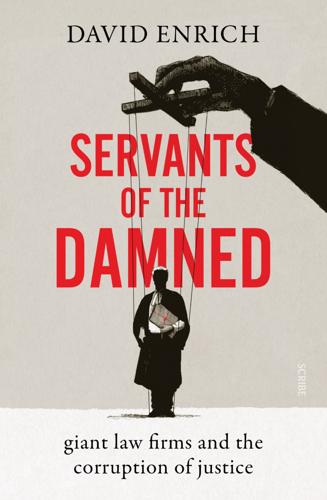
Servants of the Damned: Giant Law Firms and the Corruption of Justice
by
David Enrich
Published 5 Oct 2022
Even handing out business cards at a cocktail party could be construed as an improper act of self-promotion. The ostensible purpose of these restrictions was to insulate the bar from the sorts of degrading commercial pressures that afflicted normal industries. Lawyers were not supposed to be businessmen. They were above the seamy profit-maximizing ethos of traditional capitalists. But the practical implication was that it was all but impossible for lawyers to make an independent start, and that served the interests of large, powerful firms, which did not have to compete against upstarts that promised lower prices or better services.
…
“The moral judgments I leave to God,” another Jones Day tobacco litigator told me. “Law firms generally don’t draw lines. It becomes a slippery slope,” a third partner explained. “Once you start trying to put a moral or ethical screen, it becomes a really hard line to be able to draw. At the end of the day, law firms are profit-maximizing institutions.” That, at least, was something that everyone could agree on. And nowhere were there more profits for a tobacco-focused law firm to maximize than in Florida. In 2006, the state’s Supreme Court had issued a landmark decision in Engle v. R.J. Reynolds Tobacco Co. It was named for Howard Engle, who, twelve years earlier, had sued RJR for the health problems associated with smoking.

The Age of Surveillance Capitalism
by
Shoshana Zuboff
Published 15 Jan 2019
For example, economic historian Ellen Meiksins Wood documents the origins of capitalism in the changing relations between English property owners and tenant farmers, as the owners began to favor productivity over coercion: “The new historical dynamic allows us to speak of ‘agrarian capitalism’ in early modern England, a social form with distinctive ‘laws of motion’ that would eventually give rise to capitalism in its mature, industrial form.”10 Wood describes how the new “laws of motion” eventually manifested themselves in industrial production: The critical factor in the divergence of capitalism from all other forms of “commercial society” was the development of certain social property relations that generated market imperatives and capitalist “laws of motion”… competitive production and profit-maximization, the compulsion to reinvest surpluses, and the relentless need to improve labour-productivity associated with capitalism.… Those laws of motion required vast social transformations and upheavals to set them in train. They required a transformation in the human metabolism with nature, in the provision of life’s basic necessities.11 My argument here is that although surveillance capitalism does not abandon established capitalist “laws” such as competitive production, profit maximization, productivity, and growth, these earlier dynamics now operate in the context of a new logic of accumulation that also introduces its own distinctive laws of motion.
…
In the course of the last ten chapters I have argued that surveillance capitalism represents an unprecedented logic of accumulation defined by new economic imperatives whose mechanisms and effects cannot be grasped with existing models and assumptions. This is not to say that the old imperatives—a compulsion toward profit maximization along with the intensification of the means of production, growth, and competition—have vanished. However, these must now operate through the novel aims and mechanisms of surveillance capitalism. I briefly review the new imperatives here, both as a summary of the ground that we have covered and as prelude to the question How did they get away with it?
…
The answer to this question requires a return to imperatives. Industrial capitalism brought us to the brink of epic peril, but not as a consequence of an evil lust for destruction or runaway technology. Rather, this result was ineluctably driven by its own inner logic of accumulation, with its imperatives of profit maximization, competition, the relentless drive for labor productivity through the technological elaboration of production, and growth funded by the continuous reinvestment of surplus.23 It is Weber’s “economic orientation” that matters, and how that orientation merges with the specific form of capitalism that rises to dominance in each age.
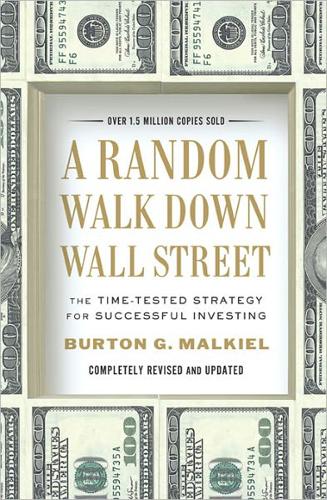
A Random Walk Down Wall Street: The Time-Tested Strategy for Successful Investing
by
Burton G. Malkiel
Published 10 Jan 2011
This suggests that others will try to anticipate the signal still earlier. Of course, the earlier they anticipate, the less certain they are that the signal will occur and that the trade will be profitable. Perhaps the most telling argument against technical methods comes from the logical implications of profit-maximizing behavior. Suppose that Universal Polymers is selling at around 20 when Sam, the chief research chemist, discovers a new production technique that promises to double the company’s earnings. Sam is convinced that the price of Universal will hit 40 when the news of his discovery comes out. Because any purchases below 40 will provide a swift profit, he may well buy up all the stock he can until the price hits 40, a process that could take no longer than a few minutes.
…
Third, the predictable pattern that has been found, such as the dividend yield effect, may simply reflect general economic fluctuations in interest rates or, in the case of the small-firm effect, an appropriate premium for risk. Finally, if the pattern is a true anomaly, it is likely to self-destruct as profit-maximizing investors seek to exploit it. Indeed, the more profitable any return predictability appears to be, the less likely it is to survive. An exchange between Robert Shiller, a skeptic about market efficiency, and Richard Roll, an academic economist who was also a businessman running billions of dollars of investment funds, is quite revealing.
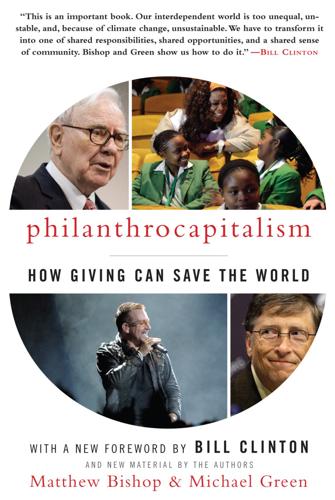
Philanthrocapitalism
by
Matthew Bishop
,
Michael Green
and
Bill Clinton
Published 29 Sep 2008
“To credit these corporations with being ‘socially responsible’ is to stretch the term to mean anything a company might do to increase profits if, in doing so, it also happens to have some beneficent impact on the rest of society.” Reich misses the point, however, about the difficult choices that companies face. Many executives are so focused on dealing with short-term pressures for bigger profits that they do not devote sufficient time to thinking about what is in their long-term-profit-maximizing, enlightened self-interest. Even if they do think about it, it is all too rare that an executive is willing to incur the short-run costs (such as that R&D–like philanthropy) necessary to achieve that more profitable long-term goal. Spending on lobbying against change that may impose a short-term cost is often the reflex reaction.
…
In his article “Global Corporate Citizenship,” he calls on international business leaders to “fully commit to sustainable development and address paramount global challenges,” including climate change, the provision of public health care, energy conservation, and the management of resources, particularly water, as part of a long-term profit-maximization strategy. Schwab argues that the emergence of global corporate citizenship is the “inevitable result” of several factors. One is the weakness of government: Schwab would reject Reich’s big-government prescriptions because the role of the nation-state is declining and global governance institutions (such as the U.N. and World Trade Organization) are inadequate to address global challenges.
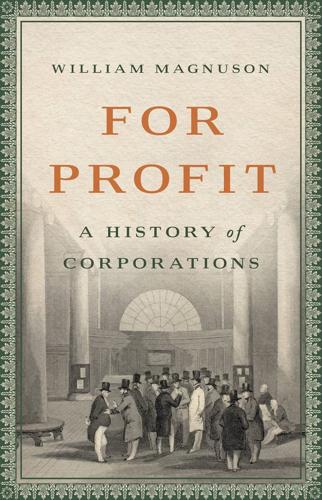
For Profit: A History of Corporations
by
William Magnuson
Published 8 Nov 2022
Over time, as corporations have evolved, so too have the ways in which unscrupulous managers have figured out how to “game the system” to extract wealth from others. What happens in the next chapter of the global economy depends on whether we can return to the original intent of the corporation or we have sunk irrevocably into the swamp of profit maximization at all costs. IN THIS BOOK, I SEEK TO DEPICT THE WORLD OF CORPORATIONS. IT is a world I have spent my career studying. After graduating from Harvard Law School, I worked as an associate in the mergers and acquisitions (M&A) group of Sullivan & Cromwell (S&C). Sullivan & Cromwell is one of Wall Street’s most storied law firms.
…
seven THE RAIDER IN 1976, TWO ECONOMISTS WROTE AN ARTICLE THAT CALLED into question everything we thought we knew about the corporation. In “Theory of the Firm,” University of Rochester professors Michael Jensen and William Meckling argued that the structure of the corporation was rotten. Economists had long assumed that the corporation was a profit-maximizing entity: that it pursued its self-interest in a rational and considered way. But Jensen and Meckling argued that this was all wrong. In order to understand how a corporation worked, we needed to look inside of it, to open up the “black box” and peer in at the incentives of the people who worked there.

Money Changes Everything: How Finance Made Civilization Possible
by
William N. Goetzmann
Published 11 Apr 2016
The current debate about foreign ownership of companies has contrasted the argument that sovereign funds have the same interests as any other shareholder (profit maximization) versus the suggestion that foreign owners will use their stake to further national interests. I believe that profit maximization will dominate most board decisions by sovereign funds, but that the potential for the exercise of rights in the national interest is also present and of potential concern. The reason for this is governance. States have a fiduciary duty to their citizens, not to other shareholders in a company. In certain circumstances, they will face trade-offs between profit maximization and national interest, and it is only right that they serve their citizens first.
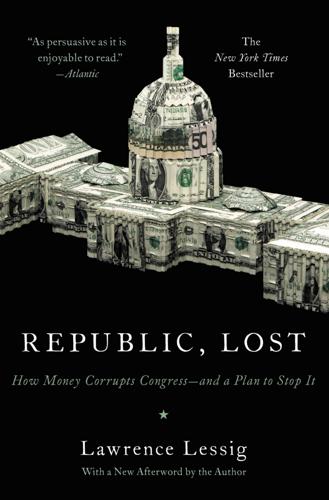
Republic, Lost: How Money Corrupts Congress--And a Plan to Stop It
by
Lawrence Lessig
Published 4 Oct 2011
It was as if the head of the Environmental Protection Agency, criticized for not enforcing federal antipollution laws, had said he thought the self-interest of the polluters implied that they are best capable of protecting their shareholders and their equity. They are indeed the best capable of doing that. The reason for laws regulating pollution is that pollution is an external cost of production, which is to say a cost not borne by the polluting company or its shareholders, and in making business decisions profit maximizers don’t consider costs they don’t bear. Banks consider the potential costs of bankruptcy to themselves in deciding how much risk to take but do not consider the potential costs to society as a whole.34 The banks were thus freed of the burden of federal regulation, yet driven by the discipline of market regulation to assume far more risk than was good for the economy.
…
As Posner concludes: Am I saying that deregulation made bankers and through them borrowers take risks that were excessive from an overall social standpoint? Yes, once we recognht=ougize that competition will force banks to take risks (in order to increase return) that the economic and regulatory environment permits them to take, provided the risks are legal and profit-maximizing, whatever their consequences for the economy as a whole.35 This was also the conclusion of the Financial Crisis Inquiry Commission: “Unchecked, competition… can place the entire financial system at risk.”36 And indeed, as the commission concluded, in this case it did: More than 30 years of deregulation and reliance on self-regulation by financial institutions championed by former Federal Reserve chairman Alan Greenspan and others, supported by successive administrations and Congresses, and actively pushed by the powerful financial industry at every turn, had stripped away key safeguards, which could have helped avoid catastrophe.37 From the perspective of the economy as a whole, the banks thus took on more risk than was sensible.

Career and Family: Women’s Century-Long Journey Toward Equity
by
Claudia Goldin
Published 11 Oct 2021
They invest in finding and securing employees at the time of hire, and they continue to invest heavily throughout their early years. As employees have increased their preference for family time and for more equitable relationships, time demands that go beyond usual working hours require even greater compensatory payment from firms. Profit-maximizing firms naturally don’t want to increase salaries. As a result, many firms are inventing ways to conserve the time of their most valued and expensive workers. There are a range of possibilities. Some render workers better substitutes for one another other so that they can hand off clients with greater ease or substitute for their colleagues in meetings.
…
There will always be some medical specialties, such as surgery, that require long hours and on-call time. Worker demand produced some of the transformations—such as for my brother-in-law, the pediatrician, who wanted to spend more time with his own children. But other changes came about because profit-maximizing firms wanted to reduce the costs of their high-priced professionals. Less progress has been made in transforming up-or-out careers. Women have greatly increased their numbers as partners in law, consulting, and accounting firms and as tenured members of academic faculties. But even in fields in which women have been half of all entrants for decades, they are nowhere near close to being half of the winners in the up-or-out race to the top.

Click Here to Kill Everybody: Security and Survival in a Hyper-Connected World
by
Bruce Schneier
Published 3 Sep 2018
It’s part of what I meant when I talked about engineering security by design at the beginning of this chapter: if we’re building a system and the only way to secure it is by not connecting it, that should be considered a valid option. This might be regarded as heresy in today’s race to network everything, but large, centralized systems are not inevitable. Technical and corporate elites may be pushing us in that direction, but they really don’t have any good supporting arguments other than profit maximization. Disconnecting can happen in several ways. It can mean creating separate “air gapped” networks. (These have vulnerabilities as well, and are not a security panacea.) It can mean going back to non-interoperable systems. And it can mean not building connectivity into systems in the first place.
…
Abbott Labs, 38, 41 Access Now, 214 accountability, 112, 128, 147 ACLU, 223 ad blockers, 16 African Union, 89 airline safety, 144 airplanes: bugs in, 41 remote control of, 1–2, 16 air traffic control, 210 Alexa (Amazon’s virtual assistant), 4, 61 Alexander, Keith, 118 algorithms: accurate inputs required by, 84 autonomous, 7, 82–87 data needed by, 84 hacking of, 83–84 machine learning, 82–83, 85, 111–12 physical agency of, 83 and robots, 86–87 security standards for, 111–12, 148 speed of, 84–85 Alibaba website, 169 Alphabet (Google’s parent company), 57 Alphonso, 58 Amazon, 57, 61, 62 Amnesia IoT botnet, 37 Amnesty International, 223 Anderson, Ross, 185 Andromeda botnet, 52 Angry Birds, 58 anonymity, 52, 53, 110, 199–200 Apple, 57, 60, 78, 174, 196 Applied Cryptography (Schneier), 32 Arab Spring, 67 arbitration agreements, 129 Arthur Andersen, 127 artificial intelligence (AI), 7, 86–87, 95, 148, 149, 219 Ashley Madison, hacking of, 78 AT&T, 113 Atomic Energy Commission (AEC), 149 attack vs. defense, 160–79 attack as US priority in, 73 attack easier than defense, 219 attacks changing in, 32–33 “defense dominant” strategy, 160 design for security vs. surveillance, 167–70 fixing vulnerabilities in, 162–67 in law enforcement, 173–76 offensive autonomous attack software, 85 and relationship between government and industry, 176–79 security as, 10, 16, 26–28 zero days in, 162, 163, 165 attribution, 52–55 in cyberattacks, 72, 203 detection evasion, 55 main points of, 54 authentication, 45–51 continuous, 47 differential, 47, 49 hub-and-spoke model of, 50 and identification, 51 and identity theft, 50–51, 171 and impersonation, 51 in Internet+, 49–51 methods of, 46 standards of, 109, 169 trade-off between security and usability in, 47 two-factor, 47, 49, 200 automobiles: aging, 39–40 bugs in, 41 driverless, 4, 205 industry regulation of, 182, 186 international markets for, 186, 187 Internet connection in, 6 manufacturer support of, 39–40 remote hacking of, 1, 3, 16 repair manuals for, 139 safety of, 139, 182 security standards for, 151 availability, attacks on, 78–82 Azimuth, 162 baby monitors, 133–35 backdoors, 26, 87, 88, 172, 174, 193–98, 220 Baker, Stewart, 204 balkanization, 157 banks, data manipulation attacks on, 81–82 Baratov, Karim, 30 Beckstrom, Rod, 19 Belan, Alexsey, 30 Bell, Alexander Graham, 152 best efforts, 122 Beyond Fear (Schneier), 211 “big data,” 57 biometrics, authentication via, 46, 47 Bismarck, Otto von, 220 bitcoin, 15, 74, 75, 77, 198, 218 blackouts, 29, 90 Blade Runner (film), 218 Blaster worm, 94 Bluetooth, 50, 58, 79 Bohm, Nick, 220 Border Gateway Protocol (BGP), 22, 23, 24, 115 Boston Marathon bombing (2013), 95, 202 Boston MBTA, 42 botnets, 26, 75, 77, 95, 139 Bowman Dam, Rye, New York, 79 breach disclosure laws, 137–38 bribery, 183 Brightest Flashlight, 58 BT, 113 Buckshot Yankee, 66 Budapest Convention on Cybercrime, 157 buffer overflow bug, 21 bug bounties, 36 bugs, 20–21, 41 CALEA (Communications Assistance for Law Enforcement Act) [1994], 168, 170 California, “Teddy Bears and Toasters” bill in, 187–88 Calo, Ryan, 149 Cameron, David, 197 Campos, Hugo, 63 CAN-SPAM Act (2003), 154 Caproni, Valerie, 193 “Capture the Flag” (hacking sport), 85 Carbon Black, 74 Carson, Rachel, Silent Spring, 183 caveat emptor, 131 Cellebrite, 174 cell towers, 32–33 fake, 168–70 Center on Privacy and Technology, 224 CEO fraud, 75 Challenger, 29 Check Point (Israeli company), 87 Cheney, Dick, 76, 93, 94 Chertoff, Michael, 198 Child Online Protection Act (1998), 154, 192–93 child porn, 183 China: and African Union headquarters, 89 censorship in, 67–68 and cybercrime law, 156, 158 cyberespionage by, 66, 67, 81 eavesdropping on communications, 195–96 hacking by, 45 intellectual property theft by, 66, 72–73 social control in, 67–68 China Telecom, 113 chips: general-purpose, 6 vulnerabilities in, 21 CIA, 73, 77, 165–67 Cisco Internet switches, 170 cities, smart sensors in, 4, 6 Citizen Lab, 64 Clapper, James, 66, 81 Clark, David, 23 class-action lawsuits, 129 class breaks: hacking via, 33, 95 use of term, 31–32 click fraud, 16, 75 cloud computing, 7, 190 Code for America, 223 Cogent ISP, 115 Cohen, Julie, 154 Comcast, 62, 113 Comey, James, 193–94 Commission on Enhancing National Cybersecurity, 180–81 complexity, 11, 27 and accidents, 80 theory of, 210 and unpredictability, 211 Computer Fraud and Abuse Act (1986), 42 computers: extensibility of, 24–26 as ubiquitous, 1–5, 19 vulnerabilities in, 30–32 confidentiality, threats to, 78–81 Consumers Union, 136, 145 copy protection, 25, 41, 62, 131, 154, 155, 205 Core Infrastructure Initiative, 115 corporations: CEO fraud in, 75 consumers controlled by, 59–64 data sought by, 57 infrastructure controlled by, 117 insecurity favored by, 56 profit maximization by, 118 regulation evaded by, 154–55 surveillance capitalism in, 57–59, 65, 209 CrashOverride, 2, 4–5 credential stealing, 45–47 credit card fraud, 16, 100 crime rate, public toleration of, 92 crimeware-as-a-service (CaaS), 76 cryptanalysis, differential, 33 cryptocurrencies, 172, 198 Cuban Missile Crisis (1962), 95 “cyber,” as umbrella term, 183–84 cyberattacks, 68–74, 116, 203, 217 Cyberbit (Israel), 65 cybercrime, 74–77, 156, 158 cyberdefense: “active,” 203 national agency for, 148 cyberespionage, see espionage Cyber Grand Challenge, 85 cyber incident data repository, 177 cyber peace, 213–14 cyberphysical systems, 7 cyber resilience, 211–12 cybersecurity, see Internet+ security Cybersecurity Improvement Act (2017), 180, 208 Cyber Shield Act (2017), 136 cyberstalking, 76 Cyber Threat Alliance, 177 cyberwar, 68–74 arms race in, 73, 116, 212–14 attribution in, 72 autonomous weapons in, 86 cyberespionage vs., 72 cyber mercenaries in, 70 limited response in, 71 “preparing the battlefield,” 69 and unpeace, 71–74 cyberweapons: in armed conflict, 72 autonomous, 86 instability of, 72, 212 manufacturers, 65 nonproliferation standards for, 158 theft of, 73 Daniel, Michael, 164 Darknet, 198 DARPA (US Defense Advanced Research Projects Agency), 85 data: accuracy of, 84 in adversarial machine learning, 84 anonymity of, 110 as byproduct, 57 “Collect it all,” 118 deletion of, 110 encryption of, 109, 171 integrity of, 80, 81, 109 jurisdiction over, 146 limits on collection of, 109 metadata, 174 natural bias of, 84 ownership of, 109 personal, control of, 62–63, 64, 109–11 sharing of, 177–79 storage and processing of, 174 Data and Goliath (Schneier), 110, 172 databases: encryption of, 171 threats to, 79, 80, 81 data brokers, 58 Data Encryption Standard (DES), 32, 33 DDoS (distributed denial-of-service) attack, 29, 130, 202 Deepwater Horizon disaster, 124 “defense dominance,” 160 see also attack vs. defense Democratic National Committee, Russian attacks on (2016), 30, 45, 78, 80 denial of service, 29, 79, 81, 130, 202 Department of Homeland Security, 117, 138 Derechos Digitales, Chile, 214 detection evasion, 55 Digital HKS, Harvard, 224 Digital Millennium Copyright Act (DMCA), 41–42, 62, 154, 193, 205–6, 220 digital rights management (DRM), 25, 62, 205 Digital Security Helpline, 214 DNSChanger malware, 37 Doctorow, Cory, 163 Dodd-Frank Act (2010), 126 Domain Name Service, 24, 115 security (DNSSEC), 24 domino effect, 210 “Don’t Panic,” 174 drones, 7, 80, 91, 95, 151, 200 Dyn, botnet attack against, 94, 202 Edgehill program (UK), 168 Electronic Communications Privacy Act (1986), 153 Electronic Frontier Foundation, 32, 223 Who Has Your Back?
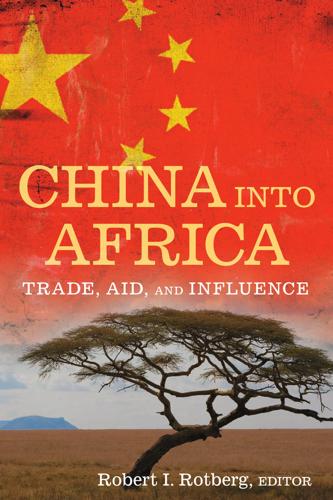
China into Africa: trade, aid, and influence
by
Robert I. Rotberg
Published 15 Nov 2008
Debates go on inside China’s policymaking circles all the time. The Chinese leadership may want certain outcomes from China’s engagement in Africa and Latin America, but it may not be able to control a rapidly expanding network of state and private actors who have entered these markets based on the logic of globalization and profit maximization. Domestic Developmental Dynamics It is not sufficient to study Africa’s or Latin America’s or any individual country’s relations with China from a narrow bilateral perspective. Nor is it complete to focus on a particular theme, such as energy, human rights, or strategic ambitions. China’s domestic developmental dynamics will have a decisive impact on how the Chinese government and Chinese firms behave abroad.
…
These constraints and limitations primarily come from the current stage in China’s own domestic development, which is characterized by 03-7561-4 ch3.qxd 9/16/08 4:08 PM Page 61 China’s Emerging Partnerships in Africa 61 —a brutal, cutthroat capitalist market economy (or as some call it, a primitive accumulation process in its classical Marxist sense); —severe exploitation of labor forces; —a lack of protection for workers and the collapse of the welfare and health care system; —greedy forces of profit maximization; —widespread corruption in both political and economic areas; —the worsening of environmental and ecological conditions; —a lack of corporate responsibility and transparency; and —no experience or expertise with democratic governance. All of these market-driven developments will not just stay within Chinese borders; they will move to the rest of the world as China expands into Africa and other parts of the globe.
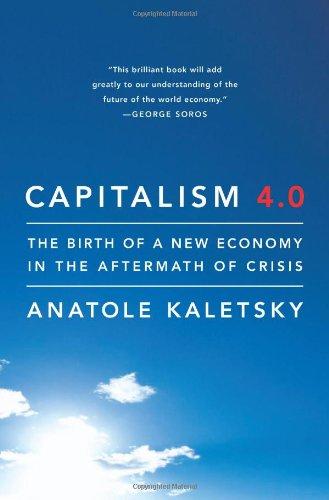
Capitalism 4.0: The Birth of a New Economy in the Aftermath of Crisis
by
Anatole Kaletsky
Published 22 Jun 2010
As the socio-political system began to evolve from the first era of capitalism to the second, economics also had to reinvent itself. It did this by dividing into two distinct branches. The traditional branch, later described as microeconomics, continued to use the tools of nineteenth-century marginal theory to analyze the behavior of utility-maximizing individuals and profit-maximizing companies in competitive markets for ordinary commodities such as coal, tomatoes, or shoes. The new branch of the subject, called macroeconomics, was invented more or less from scratch in the 1930s by Keynes and his Cambridge collaborator, Richard Kahn, along with the Polish economist Michal Kalecki.
…
The reality, as demonstrated by the Third World debt crisis, when the institutions that went bankrupt were all strictly regulated utility banks, is that finance always and everywhere involves a combination of the utility and the casino, of socially indispensable fiduciary functions and privately profitable speculation on unpredictable risks. Rather than trying artificially to separate out the public and private characteristics of banking, the new thinking about capitalism should acknowledge that financial institutions will always be in some sense public-private hybrids, subject to the messy confusion of political and profit-maximizing incentives that infuriated Henry Paulson and the other free-market ideologues who wanted to demolish Fannie Mae and Freddie Mac. Banks may be legally structured as private companies, answerable only to their shareholders, but they have a uniquely important social function and thus operate in the public realm, with implicit government support.

A Line in the Tar Sands: Struggles for Environmental Justice
by
Tony Weis
and
Joshua Kahn Russell
Published 14 Oct 2014
Today, ENGO campaigns have retained key features that are at the root of the tensions with grassroots campaigning: the bureaucratic and top-down organizing style; accountability to campaign funders rather than affected communities; the narrow focus on the official policy-making process; and the single-issue (non-systemic) approach to popular education. Below, I will discuss the case of the Great Bear Rainforest campaign in British Columbia. Throughout this chapter, I indicate how ENGOs have, for the most part, shied away from anything that might smack of anti-capitalism, and even from identifying corporate power and profit maximization as central to the problems that they claim to address. On the contrary, many have embraced the frameworks of “green capitalism” or “ethical consumerism”—no doubt, in part, to appease funders and reassure policy-makers of their respectability. ENGOs’ Failure to Address Colonialism and Environmental Racism In Canada, ENGOs have begun to recognize how resource extraction is a racialized issue, in which business priorities outweigh concerns about the pollution and destruction wrought on First Nations communities.
…
Their options are evaluated in terms of how they positively or negatively affect the organization’s vital interests, which centre on growth, the maximization of profits, and shareholder returns.3 As a result, if activists want to influence corporate behaviour, the only way to do so is to threaten the corporation’s vital interest in profit maximization. Can the movement to shut down the tar sands carry out actions that directly threaten the profitability of firms like Suncor, Syncrude, TransCanada, and Enbridge? In my view, it can do so only to a very limited degree. Consider the kinds of threats that grassroots activism can pose for these corporations when relying on popular education, public protest, and confrontational disruption or defiance.
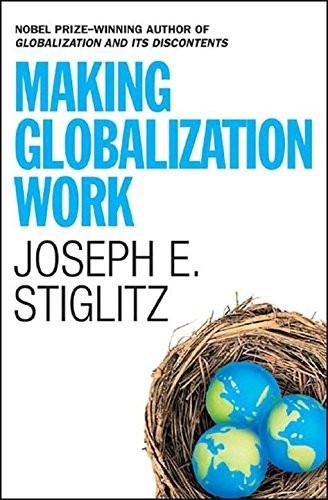
Making Globalization Work
by
Joseph E. Stiglitz
Published 16 Sep 2006
If we consider the problem to be overborrowing, then we naturally think of making it more difficult for borrowers to discharge their debts; on the contrary, if the problem is overlending, we focus on strengthening incentives for lenders to exercise due diligence. The political economy of overborrowing is easy to understand. The current borrowing government benefits, and later governments have to deal with the consequences. But why have sophisticated, profit-maximizing lenders so often overlent? Lenders encourage indebtedness because it is profitable.8 Developing country governments are sometimes even pressured to overborrow. There may be kickbacks in loans, or even more frequently in the projects that they finance. Even without corruption, it is easy to be influenced by Western businessmen and financiers.
…
A key criticism of globalization discussed in this book is that it has attempted to “depoliticize” decisions that are quintessentially political. 9.As we shall explain in chapter 3, the underlying economic forces for globalization too may change over time, as the composition of production and trade changes. 10.These are views already incorporated into corporate governance in many European countries. The views expressed here are, I should note, as reasonable as they may seem to the laymen, highly controversial—particularly within American academia. There are some extreme conditions under which one can show value(or profit-) maximizing behavior of firms lead to economic efficiency, and it is upon these extreme models that much of the economics literature focuses. But so long as there is imperfect information or an incomplete set of markets, then maximizing the well-being of shareholders does not lead either to economic efficiency or general well-being.
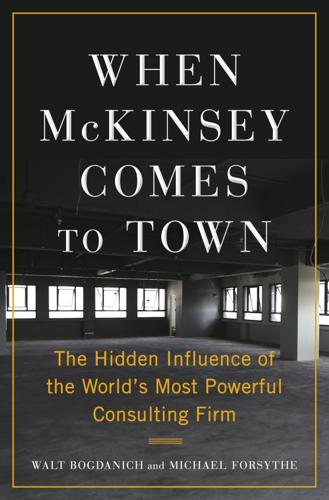
When McKinsey Comes to Town: The Hidden Influence of the World's Most Powerful Consulting Firm
by
Walt Bogdanich
and
Michael Forsythe
Published 3 Oct 2022
As corporations evolved, their priorities changed, including their attitude toward employees. In the 1950s and most of the 1960s—the era of giant conglomerates—CEOs were risk averse, content to take the long view in building for the future. As John Kenneth Galbraith wrote in his 1967 book, The New Industrial State, these companies favored stability, not profit maximization, allowing time to develop products that improved people’s lives. Within limits, they sought to keep their employees content, if not wealthy. While not everyone got what they wanted, most generally found that their lives seemed more predictable and secure. The former McKinsey consultant Louis Hyman, an economic historian, described the benefits of this approach: “Paper pushers of the middle class could count on their jobs as their families grew.
…
See also specific companies Mandela, Nelson, 224, 225 Manfred, Rob, 219–21 Mango, Paul, 65–66 Manners, Michael, 192, 194 Manufacturing Jobs Initiative, 8 Mao Zedong, 92, 100, 104 Market Unbound (Farrell), 186 Markovits, Daniel, 38 Marks, Peter, 68–69 Marlboro cigarettes, 114, 120 Marshall Field’s, 34 Massachusetts, 148 Massachusetts General Hospital, 123 Massachusetts Institute of Technology (MIT), 211 Masters, Adrian, 267 Masters of the Universe (documentary), 261 maternal mortality rates, 259 matrix management, 175–79 Mayer Brown law firm, 184 McCall, Billy, 6, 7–9 McCollom, James P., 177, 179 McDonald, Duff, 19, 38–39, 209 McDonald’s, 98 McKinsey, James O., 3–4, 19, 34, 174 McKinsey & Company Abdulaziz suit vs., 255–56 ACA and, 62–65 accountability and, 16, 25, 28, 236–41, 277 addictive products and, 129, 278 Al-Elm Information Security and, 256–57 Allstate and, 192–203, 212 alumni network, 17–18, 22, 38, 93, 161, 272 Alzheimer’s drug approval and, 67–68 Aramco and, 243–44, 247–48 Arkansas Medicaid program and, 57, 60–62 Aspen Ideas Festival and, 149–51, 153–55 AT&T and, 48–49 at-risk contracts and, 232–34 Australian Green Team and, 159 autocratic states and, 25–28, 74, 108–9, 279 China, 92–109, 257 Russia, 108, 257 Saudi Arabia, 108, 243–57 Ukraine, 257, 279 auto industry and, 29, 32–33, 37 auto insurance and, 191–94 auto loans and, 172, 182, 182–84 Azar as HHS and, 146–47 banks as clients and, 172–89 matrix management, 175–79 securitization of credit, 182–89 BCG as rival of, 246, 248–49 Belt and Road strategy and, 101–3 Britain and Chairman’s Dinners, 262 “clubbable” consultants, 260–61, 275 Health and Social Care Act, 271–74 manufacturers in, 261–62 NHS cost-cutting, 259, 262, 264–75, 280 rail privatization, 263–65 steel privatization, 261 Budlender report and, 236–38 Buttigieg as consultant for, 26–27, 76 campaign contributions and, 65–66 carbon emissions and messaging by, 150–55, 159, 161–62, 164–70 CBP and, 83, 87 Centene purchase of AT Medics and, 274 Center for Drug Evaluation and Research and, 141–42, 145–46 Center for Societal Benefit Through Healthcare created by, 144 Chase as client of, 177–78, 180 Chevron and, 163 China and, 26, 46, 91–109, 165–66, 257, 279 consultants and, 95–103 financial crisis of 2007–10 and, 189 Muslim Uyghur detentions and, 105–6 SOEs and, 26, 91–93, 96–102, 107–8 Chinese copycat of, 99 client and billing lists and, 55, 107–8, 162–63, 168, 278, 280 client interests and, 18–19, 22, 24–25 clients and regulators both represented by, 22–23 clients competing in same market and, 22–23, 278, 281 client selection democracy index, 108–9 harms and, 25–28, 30–31, 143, 154, 161, 278 new oversight of 2019, 257 public-sector work, 242 values of, 18, 23–31, 108–9, 161–62 climate change and, 150–55, 166–69 CMS contract and, 70 coal-mining clients of, 28, 156–58, 160–69 companies acquired by, 30 compensation system of, 180–81 confidentiality and, 18, 22–23, 25, 28–29, 59, 66–67, 69–70, 83–84, 107–8, 168–69, 239, 278, 281 conflicts of interest and, 22, 35, 55–56, 59, 61–62, 66, 68, 74, 120, 123–29, 145–46, 238, 272, 278, 281 consultants advancement by, 21–22, 28, 38, 160 ability to do good, 20–21, 25 ability to opt out on ethical grounds, 28, 78, 158–60 China-based, 95–98, 103, 108 earnings and investments by, 180 number of, 22, 30–31 “on the beach” status, 22, 158–60 recruitment and training, 17, 19–22, 25, 28–31, 152–53, 161–63, 167, 249 up-or-out policy and, 38, 207 consultants’ dissent and, 24–28, 31, 278 disallowed in Saudi Arabia, 249–50 Edstrom, 160–62, 167 Elfenbein, 83–85, 88–90 ICE revelations and, 76–79, 83–90 Naveed, 169–70 opioid work and, 148 polluting clients and, 155–63, 167–70 Continental Illinois collapse and, 177–80, 186 corporate downsizing and, 33, 36–39 COVID-19 and, 71–73, 274–75 data analytics and, 204–22 athlete injury prediction, 210–12 Houston Astros, 204–6, 212–22 prescriptions, 130–31, 139–40 Davos and, 149–50 Disneyland and, 9–16, 281 Earth Day and, 168 Elixir bought by, 249–50 employee layoffs by clients of, 27–29, 34, 37–41, 44–46, 48–49 Enron and, 25, 42, 173, 187, 190, 204–9 environmentally focused work of, 152, 158–61, 165, 170 Eskom and Trillian and, 231–37, 239–42 executive compensation vs. worker wages and, 32–35, 41–43, 50, 180–81, 194, 198 FARA filings and, 246 FDA as client of, 22, 66–70, 145–46, 281 cigarettes and, 73, 120–22 contracts awarded 2008–2021, 145–46 e-cigarettes and vaping, 122–29 fees, 66, 68, 120, 145–46 no-bid contracts, 69–70 opioids and, 132, 134, 137, 141–42, 144–47, 280 pharmaceutical clients and, 22, 66–69, 141, 145–47, 281 federal contracts COVID-19, 71–73 GSA, 69–70 health-care industry, 65–72 ICE, 74–90 Federal Reserve report on, 186 financial industry and, 171–90 deregulation, 171–74 financial crisis of 2008–10 and, 173–74, 176–77, 188–90, 265 Financial Institutions Group, 180 financialization and, 180, 194, 196–97 foreign governments as clients of, 18 Britain, 258–75 corruption and, 25–28, 279 secrecy and, 239 Saudi Arabia, 108, 243–57, 279–80 South Africa, 223–42 fossil fuel companies and, 26, 156–59, 162–64, 166, 168 founding of, 3–4, 19, 159 Gary, Indiana, and, 1–9 George Floyd protests and, 107 globalization and, 41, 43, 189 Global Energy and Materials team, 166 global reach of, 18, 20, 39, 43, 94, 97, 189–90 GM and, 32–33, 37, 260 gold-mining clients of, 162 greenwashing and, 162, 165, 169 GSA on federal contracts with, 69–71 health-care benefits by clients of, 45–47 health-care industry clients of, 61–66, 148, 280 ACA and, 62–65 Centene, 274 NHS overhaul and, 259, 262, 264–75 state and federal clients and, 51–73, 280 home mortgage lending and, 181–82, 187–89 homeowners’ insurance, 194, 199–200 human rights and, 31, 99–101, 104–7 Chinese Uyghurs, 100, 104–6, 160 Hong Kong protests, 106–7 Moscow protests, 31 ICE and, 26, 74–90, 279 Illinois Medicaid program and, 51–57, 61 inequality and, 27–28, 32–50, 147–48, 278 influence and status of, 17–23, 28, 30, 64, 199, 278 insurance claims payouts and, 180, 191–203 Interior Department contract and, 70 job security and loyalty downplayed by, 37–38, 44–45 Johnson & Johnson as client of, 133–35 Juul as client of, 123–29 Khashoggi murder and, 253–54, 256–57 Made in China 2025 and, 102–3 maintenance cuts advised by, 1–16, 264, 280–81 Malaysia and, 26, 102 management philosophy and, 2–3, 17–18 shift to strategic planning, 36–37 management structure and style of, 26, 121, 278 managing partners Barton, 63, 86, 99, 101–2, 106, 165, 238, 241, 257, 272 Bower, 19, 32–33 Daniel, 98, 181 Davis, 98, 241, 249 Gupta, 39, 206 Sneader, 29–31, 74–75, 86, 90, 106–7, 143, 168, 239, 241, 254, 255, 257 Strenfels, 127–30, 168–70 Marshall Field’s and, 34 Massachusetts future of work study and, 148 matrix management and, 175–79, 260 media exposés of, 23, 25–28, 74–76, 79–85, 107–8, 133, 146, 148, 168–69, 257 Missouri Medicaid program and, 57–61 MLB review by, 221 Monitor as client of, 266–69 multinationals and, 95–96, 98–99 New York City contracts and, 225 New York Knicks and, 211 NOAA contract and, 70 nondisclosure agreements and, 27, 278 oil and gas companies and, 155–58, 162–64, 166 Aramco, 156, 243–44, 248 BP, 164 Chevron, 163–64 China and, 99 Enron and, 206–9 ExxonMobil, 20, 156–57, 163 Gazprom, 163, 257 PDVSA, 156 Pemex, 156 Royal Dutch Shell, 156, 163, 260–61 Texaco, 156–57 outsourcing and offshoring and, 33, 39–46, 49–50 partners compensation of, 18, 135 election of, 22 number of, 30 Peters’s critique of, 27–28, 36–37, 179 pharmaceutical companies and, 20, 22, 73, 281 FDA and, 66–69 opioids and, 26–27, 74, 109, 130–48, 280 opioid settlement and, 143, 148 polluters as clients of, 162, 164–70, 278 profit maximization and, 35–39, 198 public scrutiny of, 25–28, 74, 107, 148, 277–78 public-sector practice begun, 94 Purdue Pharma and, 109, 131–45, 148, 280 QuantumBlack bought by, 210–12 Railtrack maintenance and, 263–64 revenues and profits of, 24, 242, 257 Rice as consultant for, 224 Russia and, 26, 31, 108, 257 Saudi Arabia and, 108, 243–57, 279–80 consultants hired in, 248 ministries as clients of, 243–45, 249–51, 256 NEOM project and, 247, 256 purge of 2017 and, 250 sentiment analysis and, 251–57 “Saudi Arabia Beyond Oil” report and, 247–48 Saudi Center for International Strategic Partnerships and, 247 Seafirst and, 177–78, 180 secrecy and, 18, 25, 27, 54–58, 107, 111–12, 120, 136, 162, 168, 256–57, 277–78 securitization of credit and, 172 Enron and, 187, 207–9 financial crisis and, 188–90 launched by Bryan, 182–87, 189–90 Shanghai urban planning and, 99 shareholder profits and stock prices and, 24, 27–28, 36, 38–39, 42–43, 49–50, 198 shell companies and, 18 smart cities and, 103–4 South Africa and, 26, 30, 74, 223–42, 250, 257, 279–80 state capture investigations and, 236–42 South African Airways and Regiments and, 239–40 sovereign wealth funds and, 18, 165, 257 sports and, 209–22 steel industry and British, 261 coking coal and, 164–66 maintenance and safety in, 1–9, 280–81 U.S. steel, 1–10, 16, 280–81 St.
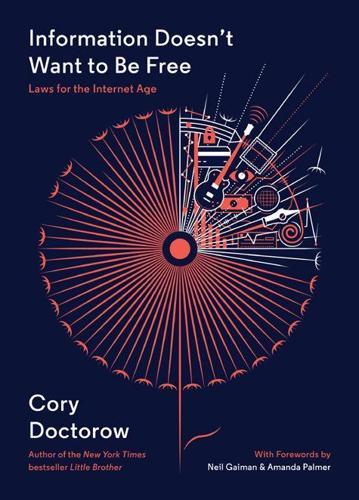
Information Doesn't Want to Be Free: Laws for the Internet Age
by
Cory Doctorow
,
Amanda Palmer
and
Neil Gaiman
Published 18 Nov 2014
After all, 2011 was the year that a silent film (The Artist) swept the Oscars. Despite the waxing fortunes of recorded performances, live music and live theater continue to thrive—indeed, taken as a whole, these industries are bigger than they have ever been. The entertainment industry has a long history of characterizing its profit-maximization strategies as do-or-die existential crises. If we can’t control the printing press/the record player/the radio/cable/VCRs/the Internet, they say, we will die. The reality is more like “If we can’t control these things, we’ll have to invent some new ways of making money, and make less from the old ways.”

Masters of Mankind
by
Noam Chomsky
Published 1 Sep 2014
Similarly, the American people “understand” the necessity for the grotesquerie of the space race, which is quite susceptible to Madison Avenue techniques and thus, along with the science-technology race in general, serves as “a transfigured, transmuted and theoretical substitute for an infinite strategic arms race; it is a continuation of the race by other means.”53 It is fashionable to decry such analyses—or even references to the “military-industrial complex”—as “unsophisticated.” It is interesting, therefore, to note that those who manipulate the process and stand directly to gain by it are much less coy about the matter. There are some perceptive analysts—J. K. Galbraith is the best example—who argue that the concern for growth and profit maximization has become only one of several motives for management and technostructure, that it is supplemented, perhaps dominated, by identification with and adaptation to the needs of the organization, the corporation, which serves as a basic planning unit for the economy.54 Perhaps this is true, but the consequences of this shift of motivation may nevertheless be slight, since the corporation as planning unit is geared to production of consumer goods55—the consumer, often, being the national state—rather than satisfaction of social needs, and to the extension of its dominion in the organized international economy.
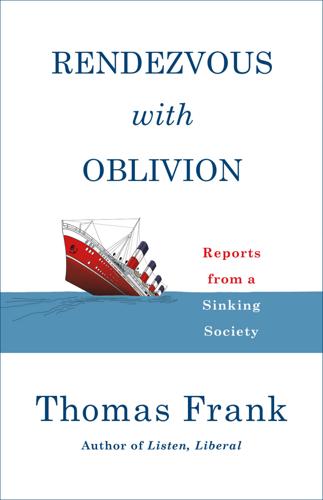
Rendezvous With Oblivion: Reports From a Sinking Society
by
Thomas Frank
Published 18 Jun 2018
What they sell, in other words, is something we believe to be so valuable it is almost impossible to measure. Anyone in her right mind would pay an enormous price for it. Another fact: this same industry, despite its legal status as a public charity, is today driven by motives almost indistinguishable from those of the profit-maximizing entities traded on the New York Stock Exchange. The coming of “academic capitalism” has been anticipated and praised for years; today it is here. Colleges and universities clamor greedily for pharmaceutical patents and ownership chunks of high-tech start-ups; they boast of being “entrepreneurial”; they have rationalized and outsourced countless aspects of their operations in the search for cash; they fight their workers nearly as ferociously as a nineteenth-century railroad baron; and the richest among them have turned their endowments into in-house hedge funds.

The Sovereign Individual: How to Survive and Thrive During the Collapse of the Welfare State
by
James Dale Davidson
and
William Rees-Mogg
Published 3 Feb 1997
If you could do no better than that and you are among the top 1 percent of American earners, then your net worth is reduced by more than $33 million just by the income tax you pay in excess of $45,000 annually. Compared to a jurisdiction without income tax, the loss is $55 million. $55 Rather Than $55 Million If the profit-maximizing assumptions of economists are correct, as we believe they generally are, one of the more certain predictions you could make is that most people would act to salvage $55 million if they could. That is our prediction. When the black magic of compound interest becomes more clear in the minds of successful people in high-tax countries, they will begin to shop in earnest among jurisdictions, just as they now shop for automobiles or compare rates on insurance policies.
…
The Sovereign Individuals of the future will take advantage of the "transient" inclinations that so offend Christopher Lasch and other critics of the information elite, and they will shop for the most profitable jurisdictions in which to domicile. While this is contrary to the logic of nationalism, it accords with a compelling economic logic. A 10 percent, let alone a tenfold, bottom-line difference will frequently motivate profit-maximizing individuals to alter their lifestyles and production techniques, as well as their place of abode. The history of Western civilization is a record of restless change in which people and prosperity have repeatedly migrated to new areas of opportunity under the spur of meandering megapolitical conditions.
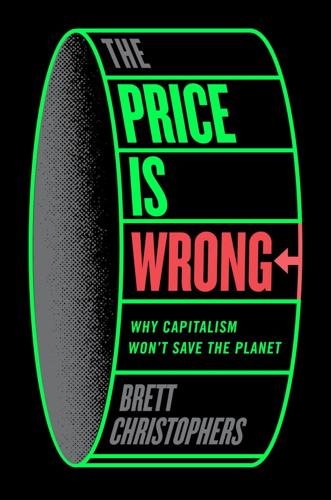
The Price Is Wrong: Why Capitalism Won't Save the Planet
by
Brett Christophers
Published 12 Mar 2024
Indeed, in many countries (though not everywhere), it was in large measure because electricity was in public ownership that reform was believed to be necessary; hence privatization was ordinarily a central pillar of restructuring proposals. This was very much neoliberal orthodoxy in action: proponents of reform were convinced that it was right and proper that the state should own as little as possible, the premise being that profit-maximizing private enterprises would always be leaner, more competitive and more efficient, and would generate better outcomes for consumers. Whether it was electricity, water or telephony did not much matter. Of course, this was pure ideology: there never was any persuasive evidence that private sector enterprises were inherently more efficient than their state counterparts; and, generally speaking, the argument in favour of privatization conveniently elided the question of whether private enterprises would in practice share any efficiency gains with consumers, or whether they would simply pocket them.
…
It would be easy to imagine that the cheaper it becomes to generate electricity, the more profit the generator will earn. But it would also be wrong. This was the lesson of Chapter 5: there is no straightforward such relationship, and thus even if solar and wind power are now ‘cheap’ it does not mean that profit-maximizing actors in the field of power generation will necessarily privilege them. Third, from Chapter 6, we know that in the type of electricity sector that dominates the Global North, and towards which the rest of the world is indubitably shifting – which is to say, a sector in which electricity is predominantly traded in spot markets using merit order dispatch – renewable generators’ expected profit is highly uncertain and unpredictable because wholesale prices are highly volatile.
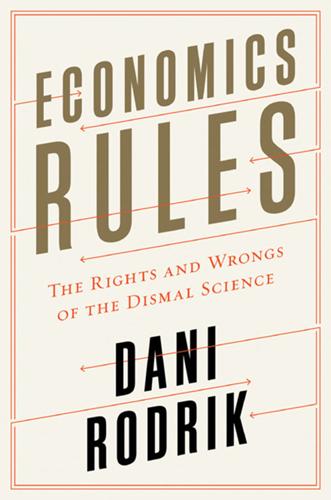
Economics Rules: The Rights and Wrongs of the Dismal Science
by
Dani Rodrik
Published 12 Oct 2015
Compensation levels of high income earners such as CEOs seem also to be determined largely by bargaining.3 Other models highlight the role of norms in the spread that is considered acceptable between, say, the CEO’s compensation and the amounts earned by rank-and-file employees. Most economists would acknowledge that workers in the United States and Europe greatly benefited from the more egalitarian social understanding of the 1950s and 1960s. Yet other models suggest that profit-maximizing reasons motivate certain firms to pay more than the going market wage, without departing from the marginal-productivity framework as such. For example, above-market “efficiency” wages, as they are called, may make sense for employers in order to motivate workers or minimize labor turnover (to reduce costs of hiring and training).

50 Future Ideas You Really Need to Know
by
Richard Watson
Published 5 Nov 2013
Pew Oceans Report, 2003 If you find all this a little fanciful, consider for a moment that there is already a system in use in parts of the UK whereby video feeds are used to monitor animals automatically, working out when they’re ready to be slaughtered. The technology maps animal outlines, then uses algorithms to work out weight, feed requirements and likely market days. Why bother? Because of cost savings and profit maximization. Fishing without fishermen But applying cutting-edge science and technology to the food chain won’t be limited to the land. Out at sea similar techniques will be applied to farm fish in the open ocean. The idea here is to build vast motorized—or possibly sail-powered—cages, fill them with laboratory-bred baby fish and float them out to sea.
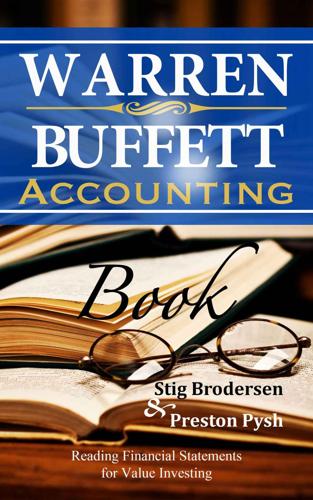
Warren Buffett Accounting Book: Reading Financial Statements for Value Investing (Warren Buffett's 3 Favorite Books)
by
Stig Brodersen
and
Preston Pysh
Published 30 Apr 2014
I am not talking about remembering to turn off the lights when leaving your home, or taking the bus instead of the car. I am talking about one of your biggest expenses in personal finances: taxes. Few people notice it because they only look at the bottom of their pay slip, but taxes are a major expense in every household. In investing, taxes are equally a problem for profit maximization. If you are like me, your goal with value investing is to establish a new source of income outside your daily job. By minimizing your tax, you indirectly improve your return on investments. Luckily, minimizing taxes on capital gains is very easy to do. The following table shows the current American tax bracket for 2014.
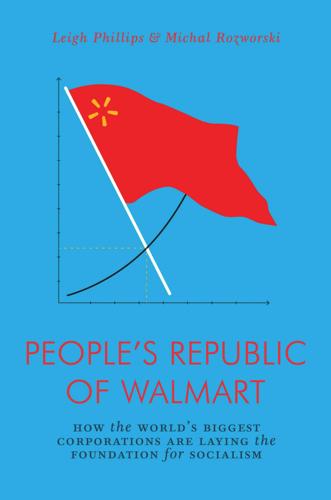
The People's Republic of Walmart: How the World's Biggest Corporations Are Laying the Foundation for Socialism
by
Leigh Phillips
and
Michal Rozworski
Published 5 Mar 2019
In the capitalist firm, the technique is put in the service of maximizing profit for the gain of the owners, and indeed, most linear programming textbooks and software manuals assume profit as the objective. In the socialist society, the objective function may still be an increase in wealth, but that of the society as a whole; that is, mathematically akin to profit-maximization, but socially determined. The steady expansion of leisure time might be another objective function, as might the maximization of ecosystem services and minimization of their disruption. In this way, we see how while the replacement of market allocation with economic planning may be a necessary condition for the realization of socialism, it is not a sufficient condition: it must be married to democracy.
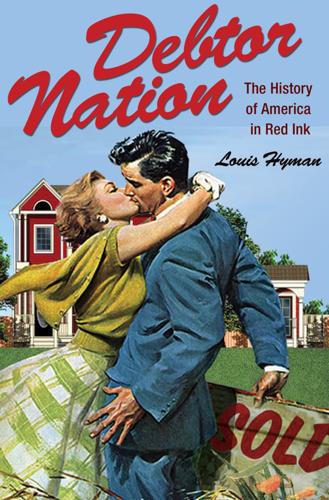
Debtor Nation: The History of America in Red Ink (Politics and Society in Modern America)
by
Louis Hyman
Published 3 Jan 2011
Policymakers, in numerous instances, often acted with the best of intentions, seeking to solve pressing economic and social problems, like unemployment, wealth inequality, and discrimination. Yet the policies, once enacted, often had far-reaching, unexpected consequences. For lenders, figuring out ways to extend credit met with both success and failure. The short-hand way in which historians describe capitalist decision-making as “profit maximizing” obscures the gut-wrenching difficulty of discovering new ways to make money. But once discovered, whether borne by profit or inscribed in law, new ways to lend spread throughout the economy. At certain junctures, which are the focus of this book, sudden changes in the larger political, economic, and social structures surrounding debt abruptly reoriented lending practices.
…
W., 260 Bussing, Irvin, 77, 83, 85 Buy Now, Pay Later: Advertising Credit, and Consumer Durables in the 1920s (Olney), 293n3, 294n9 Calder, Lendol, 294n9, 297n26, 297n39, 297n41, 297n44, 301n149 INDEX Caldor’s, 168; “Caldor’s Credit Card,” 168 Calvert, Robert, 152 Campbell, Sharyn, 195, 203 capital, 5; allocation of, 5–6; risk-weighted capital, 256; transformation of into debt, 5 Capital Moves (Cowie), 295n11 Capital One, 257, 272, 273 capitalism: and the allocation of capital, 5–6; consumer capitalism, 7; and “profit maximizing,” 2; success of, 284–85 Caplan, P. I., 96 Caplovitz, David, 175–76, 176, 177, 343n25 “‘Carry Credit in Your Pocket’: The Early History of the Credit Card at Bank of America and Chase Manhattan” (Wolters), 316n2 Cassaday, Norman, 117 CBS News, 210 Central Bank (Walnut Creek, California), 250 Chadbourne, Archie, 36 Changing Times, 171 Charga-Plates, 117–18, 133, 145, 146, 149–50; group Charga-Plate plan, 326; in the postwar era, 120–27, 127–28 charge account credit.
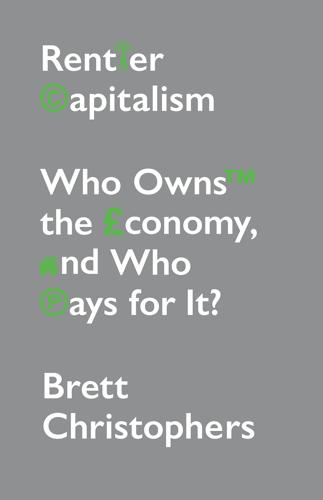
Rentier Capitalism: Who Owns the Economy, and Who Pays for It?
by
Brett Christophers
Published 17 Nov 2020
Experts who attempted to publicize the true extent of the companies’ reserves therefore made themselves deeply unpopular – none more so than a certain Peter Odell: ‘Odell claimed that there might be as much as 78 billion barrels in reserve, perhaps as much as 100 billion (10.5 to 13 billion tons). This did not meet with oil company approval. At all. Odell would become a close runner-up to Tony Benn as licensed offshore bogeyman.’54 In any case, the government did not listen to Odell; taxes would remain minimal, and thus industry profits maximal. ‘The British North Sea’, Mommer wrote at the turn of the millennium, ‘is nowadays by far the lowest-taxed and most profitable oil province of the world’. The UK government had committed to ‘a radical liberal fiscal regime’, becoming ‘the textbook example and the model pupil of liberal governance in oil’.55 Indeed, there is an argument to be made that, from the early 1980s, the UK oil-and-gas sector was not only a model of radical liberal governance specifically in hydrocarbons and, as such, a prototypical example of a privatized natural-resources rentier regime, but also a model of and for (neo)liberal rentierism much more generally, both in the UK economy and further afield: it was the domain in which this model was first fully developed and perfected.
…
Disinclined on principle to regulate the sector meaningfully, on matters of health and safety as much as labour relations, successive Tory administrations have in fact engaged in a series of deregulatory initiatives, inspired by the growing discourse of globalization and the associated common-sense that imposing regulatory ‘burdens’ would precipitate capital flight.62 Furthermore, when the industry was required to regroup in the early 1990s in the aftermath of the Piper Alpha tragedy, which killed 167 people, its Cost Reduction Initiative for the New Era was a quintessentially ‘oligopolistic response’ that further attenuated competition – ‘generating barriers to entry; ensuring the dominance of large, existent companies; encouraging bureaucratic inefficiency, stifling innovation; and creating the conditions for possible price-fixing and cartelisation’.63 Here, in short, was a paradigmatic example of neoliberal-era rentierism: an offshore prototype of a monopolistic, asset-based, profit-maximizing economic model that, in due course, would also become the norm onshore. Had it levied the kinds of taxes that represent the norm for oiland-gas fiscal regimes outside of the UK, the government clearly could have earned considerably more from the private-sector-led exploitation of the North Sea Continental Shelf than it has done – even if the pace of remuneration might have been slower.
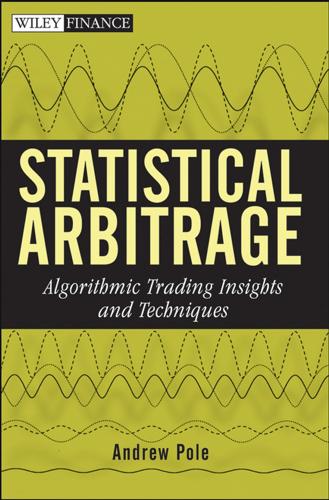
Statistical Arbitrage: Algorithmic Trading Insights and Techniques
by
Andrew Pole
Published 14 Sep 2007
Defining risk moments (or events) as times when a stock price trace changes direction such that a peak or trough is formed, it is desirable for risk minimization purposes to select pairs that show similar event histories—peaks and troughs close in time with similar 22 STATISTICAL ARBITRAGE sized moves for the two stocks between these events. Such pairs are less likely to react divergently (except, perhaps, in the immediate aftermath) following a disturbance to the market (political, industrial development, etc.). For profit maximization, it is desirable that between events the two stocks develop along different price trajectories, exhibiting as much negative correlation—moving apart, then together—as possible. See Chapter 5 for a formal treatment of desirable and undesirable pair correlations. 2.4.2 Event Analysis The turning point algorithm works as follows: 1.
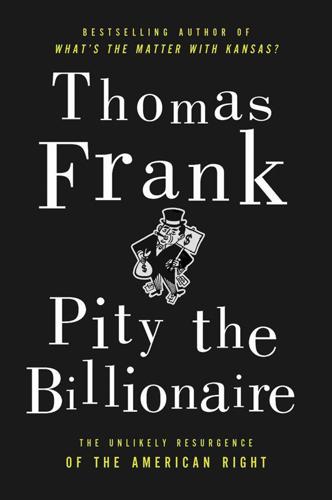
Pity the Billionaire: The Unexpected Resurgence of the American Right
by
Thomas Frank
Published 16 Aug 2011
One of the stranded passengers, meanwhile, possesses great political power; he is able to threaten top railroad officials and have the train proceed into the tunnel of desire just like the flesh-and-blood passengers of 1910 wanted. And then the passengers are suffocated for his insolence. Politics, in short, is what causes train accidents. Government does not protect passengers; it imperils them. If allowed to act on their profit-maximizing own, corporations would never endanger passengers’ lives, much as those moochers deserve to be endangered. For more on the Wellington disaster, see Ruby El Hult, Northwest Disaster: Avalanche and Fire (Portland, OR: Binfords and Mort, 1960) and Gary Krist, The White Cascade: The Great Northern Railway Disaster and America’s Deadliest Avalanche (New York: Henry Holt, 2007).
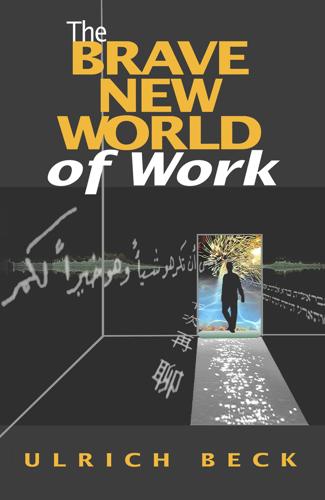
Brave New World of Work
by
Ulrich Beck
Published 15 Jan 2000
And the crises of ecology and justice form an inner unity: ‘There can be no justice between the sexes in a world of ecological crises and global apartheid, if the social and political structures that protect the poor are dismantled because they “block” free trade or are considered “inefficient” or “extravagant” in the sense of the market logic of profit maximization.’28 In so far as capitalist successes based on information tech-nology remove the shackles of human labour, reports of victories and bad tidings become two sides of the same coin. Both the profits of transnational corporations and the unemployment figures are on the rise in the welfare niche-societies of Western Europe.
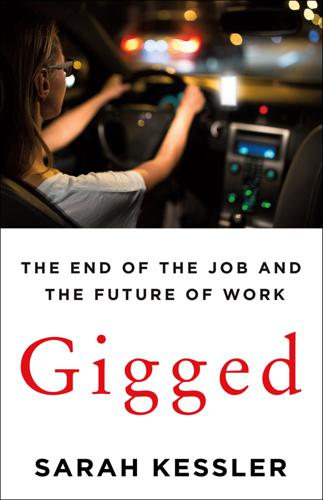
Gigged: The End of the Job and the Future of Work
by
Sarah Kessler
Published 11 Jun 2018
The lobby of Uber’s San Francisco headquarters featured a ceiling-high world map outlined on a black wall, with blue dots sprinkled over most of it, to show where Uber’s service was available. They sure had a head start. That’s not the point, Trebor believed. “These questions are coming from the assumption about profit maximization rather than serving a set of members,” he told me in an interview. “You don’t need to destroy Uber. But can you create an ethical, smaller alternative?” In other words, if you’re not trying to create a jackpot win for investors, there’s really no need to paint a black map on the wall with which to track an expanding empire.
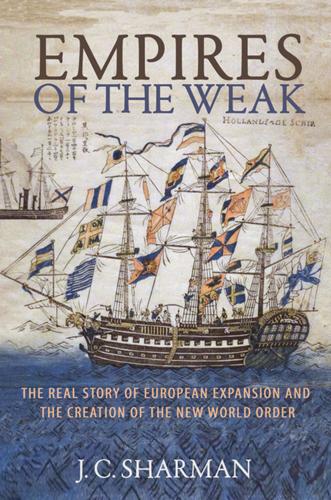
Empires of the Weak: The Real Story of European Expansion and the Creation of the New World Order
by
Jason Sharman
Published 5 Feb 2019
Those who fail to imitate are unlikely to survive.”50 More generally Kenneth Waltz, the doyen of theory in the same field, holds that, thanks to the anarchical nature of the international system, maladapted units “fall by the wayside.”51 Adopting Waltz’s logic to nineteenth-century military competition in Latin America, another scholar makes the same point: “Whether firms in the market or states in the system, units in competitive realms are continually pressed to ensure they are internally well organized and equipped to thrive and survive.”52 The explanation here relies on differential survival rates rather than learning: obsolete or maladapted ideas and organizations give way, leaving more suitable ideas and organizations to diffuse, multiply, and dominate.53 Firms that don’t learn to keep up with the competition will tend to go out of business.54 If selection is working to weed out inefficient organizations and promote efficient ones, the end result will be very similar to that in which organizations are adept learners. Often these two mechanisms are said to reinforce each other. The threat of elimination provides the incentive to learn. Because inefficient organizations are eliminated, economists assume that firms behave as if they have mastered complex profit-maximization calculations. Yet, if anything, Elster sees even bigger problems with the idea that organizations’ characteristics can be explained as functional adaptations to environmental pressures, in this case the pressures of military competition. Rather like learning, what at first seems to be a commonsense presumption on closer inspection turns out to rely on quite demanding and restrictive conditions.
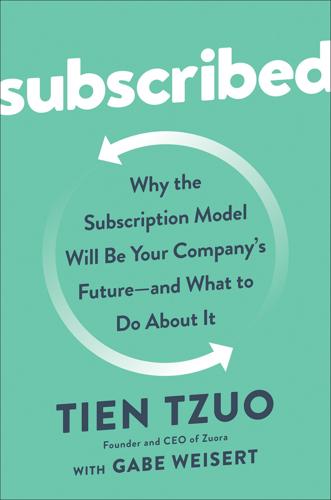
Subscribed: Why the Subscription Model Will Be Your Company's Future - and What to Do About It
by
Tien Tzuo
and
Gabe Weisert
Published 4 Jun 2018
Today the market is much more sophisticated about subscription models as growth engines. What do the Adobe and PTC transition stories have in common? As Lah and Wood note, successful enterprise transitions share some common themes: “They communicated their transition objectives very clearly and they committed to a firm timeline. They ran with an aggressive profit maximizer mentality. They were open and transparent in their financial reporting . . . the louder and more publicly aggressive companies seem to be about their pivot to technology as a service, the better chance their stock price has of weathering the transition period.” Today the tech sector is booming again.
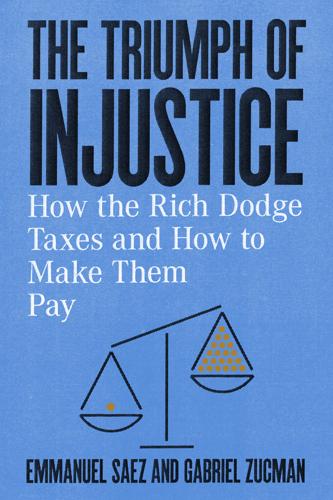
The Triumph of Injustice: How the Rich Dodge Taxes and How to Make Them Pay
by
Emmanuel Saez
and
Gabriel Zucman
Published 14 Oct 2019
The small-government ideas championed by the Mont Pelerin Society from its creation in 1947, embodied by Barry Goldwater in his 1964 presidential run, and advanced by a network of conservative foundations in the 1970s, had finally spread into mainstream thought and prevailed politically.4 In this ideology, the primary role of government is to defend property rights and the key engine of growth is the profit-maximizing business, minimizing taxes paid along the way. “There is no such thing as society, there are only individual men and women,” according to this world view.5 For the atomized individual, taxation is a dead loss; it amounts to legalized theft. And indeed, speaking on the lawn of the White House, pen at the ready, Reagan denounced a tax system that had become ‘‘un-American”; its “steeply progressive nature struck at the heart of the economic life of the individual.”
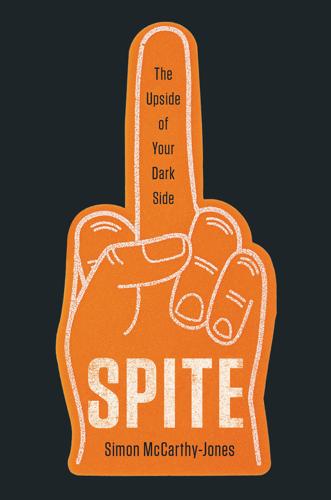
Spite: The Upside of Your Dark Side
by
Simon McCarthy-Jones
Published 12 Apr 2021
Finding the right amount of revenge—and the right amount of spite—is a challenging process of what Barclay notes is “brinkmanship.” Spite is a powerful tool not only to influence the behavior of other individuals but also to use against corporations that are acting in their narrow self-interest. As Daniel Kahneman and colleagues point out, profit-maximizing firms will be incentivized to be fair if customers are prepared to spite them for their unfair practices.44 We need to be prepared to refrain from buying products we like, costing ourselves pleasure and corporations money, when we know the products are problematic. We need to view the corporation’s immoral actions not simply as being expected or “the way business is done.”
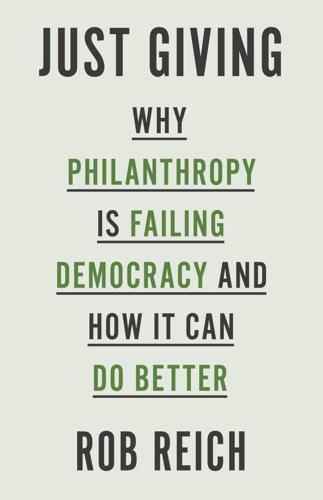
Just Giving: Why Philanthropy Is Failing Democracy and How It Can Do Better
by
Rob Reich
Published 20 Nov 2018
That is to say, a successful innovation reaches a broader population not because the foundation that funded the initial experiment now pays for its distribution or adoption across a much larger group of people. The hoped for outcome is that the marketplace or the government plays this role. In the case of the marketplace, foundation-funded projects can be demonstrations that a revenue-generating, if not profit-maximizing, market for some social goods exists. At which point it is reasonable to expect that capital investments and the ordinary operation of the marketplace economy will kick in. In the case of the government, the foundation’s social policy innovation can be presented, as it were, to citizens for incorporation as a public undertaking or responsibility.
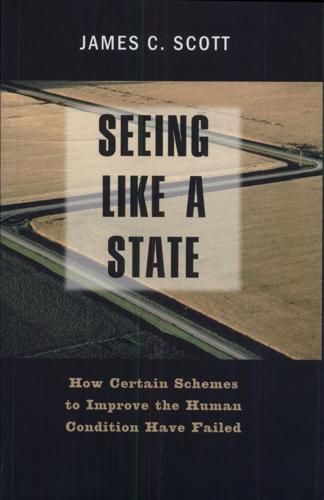
Seeing Like a State: How Certain Schemes to Improve the Human Condition Have Failed
by
James C. Scott
Published 8 Feb 1999
Cultivators can reduce the danger of going hungry if they sow, instead of only one or two cultivars, crops of long and short maturity, crops that are drought resistant and those that do well under wetter conditions, crops with different patterns of resistance to pests and diseases, crops that can be stored in the ground with little loss (such as cassava), and crops that mature in the "hungry time" before other crops are gath- ered.4S Finally, and perhaps most important, each of these crops is embedded in a distinctive set of social relations. Different members of the household are likely to have different rights and responsibilities with respect to each crop. The planting regimen, in other words, is a reflection of social relations, ritual needs, and culinary tastes; it is not just a production strategy that a profit-maximizing entrepreneur took straight out of the pages of a text in neoclassical economics. The high-modernist aesthetic and ideology of most colonial agronomists and their Western-trained successors foreclosed a dispassionate examination of local cultivation practices, which were regarded as deplorable customs for which modern, scientific farming was the corrective.
…
Alcorn, "Huastec Noncrop Resource Management: Implications for Prehistoric Rain Forest Management," Human Ecology 9, no. 4 (1981): 395-417; and Christine Padoch, "The Woodlands of Tae: Traditional Forest Management in Kalimantan," in William Bentley and Marcia Gowen, eds., Forest Resources and Wood Based Biomass Energy as Rural Development Assets (New Delhi: Oxford and IBH, 1995). 2. For marketed crops in a fully commercialized system, profit maximization would rarely be precisely the same as crop-volume maximization. Where labor was scarce, cultivators would be more concerned about maximizing the crop return per unit of labor, whereas if land was scarce, the return per acre would be the focus. 3. Paul Richards, Indigenous Agricultural Revolution: Ecology and Food Production in West Africa (London: Unwin Hyman, 1985), p. 160; in this chapter I rely heavily on this brilliant book.
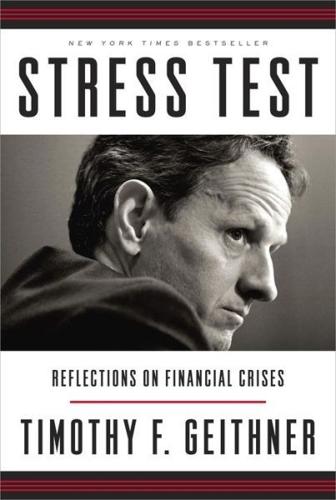
Stress Test: Reflections on Financial Crises
by
Timothy F. Geithner
Published 11 May 2014
I took his discomfort seriously, but I didn’t have the strength of his convictions. I had never worked in banking, so I had no basis for comparison to the past. I didn’t see the financial sector as either irretrievably broken or inherently wise. I saw it as an inherently risky business, a collection of profit-maximizing individuals with profit-maximizing shareholders, providing generally valuable economic services. I was rarely shocked by reports of rapacious behavior. I took it as a given. I rarely socialized with Wall Street executives—I did run into Volcker once at a lavish celebration of Peterson’s Blackstone Group, and he whispered, only half-jokingly: “You shouldn’t be here!”
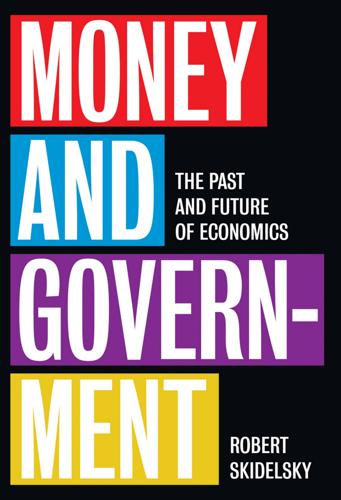
Money and Government: The Past and Future of Economics
by
Robert Skidelsky
Published 13 Nov 2018
The 311 M ac roe c onom ic s i n t h e C r a s h a n d A f t e r , 2 0 0 7 – implication of this is that shares are always correctly priced on average, because investors adjust their buy/sell actions instantaneously and accurately to any newly released information. Thus, in the words of Fama, ‘I take the market efficiency hypothesis to be the simple statement that security prices fully reflect all available information.’11 An ‘efficient’ market is defined as a market where there are large numbers of rational, profit-maximizers actively competing, with each trying to predict future market values of individual securities, and where important current information is almost freely available to all participants. In an efficient market, competition among the many intelligent participants leads to a situation where, at any point in time, actual prices of individual securities already reflect the effects of information based both on events that have already occurred and on events which, as of now, the market expects to take place in the future.
…
Populations are better educated and less submissive to the unbridled will of rulers. This in itself militates against a return to a much more primitive political style. None of this means that globalization should or can continue, 383 A N e w M ac roe c onom ic s heedless of national sentiment. Identity politics is telling us that there are limits to the rule of profit-maximizing capitalism which we ignore at our peril. Economics can help us understand what those limits are. But it has to be a different kind of economics. Specifically, those who think about economics should spell out the economic conditions for a decent migration policy. V I I I. R e for m i ng E conom ic s 51 Economics has a crucial part to pay in preserving the liberal political system.
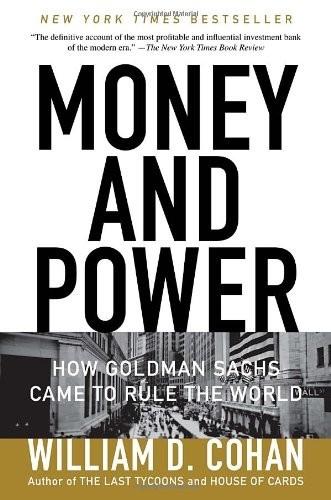
Money and Power: How Goldman Sachs Came to Rule the World
by
William D. Cohan
Published 11 Apr 2011
These innovations, however, took the firm only so far toward the modernization it desperately needed. To get the firm the rest of the way fell to the next generation of the firm’s leaders, Friedman and Rubin. According to Institutional Investor, the firm’s new leaders established an “Ad Hoc Profit Maximization Committee,” whose members were “intelligent men from Mars,” according to Friedman, and the purpose of which was “to bring new perspectives to the firm’s various businesses by questioning how things are run … without threatening the ethos.” Then there was the “bevy” of new consultants who showed up at the firm.
…
.” —— WHATEVER SOCIAL AND behavioral problems the firm seemed to be having as the John Weinberg era faded away, there was no question Goldman Sachs—more than ever—still knew how to make money. Institutional Investor estimated the 1990 “honeypot” at “north of $600 million,” and Forbes wrote, without caveat, that the firm made $1 billion in net income in 1991. The Ad Hoc Profit Maximization Committee seemed to be working quite well. Goldman was not only the leader in the traditional investment banking businesses of underwriting debt and equity securities and in advising on M&A deals, but it had also started to become a leader in the business of investing its own capital, as a principal in trades and as a major investor in a variety of its own private-equity, bridge loan, and hedge funds.
…
Goldman, Julius Goldman, Louisa see Sachs, Louisa Goldman Goldman, Marcus in arrival to U.S. death of gold coins of IOUs bought and sold by, 1.1, 1.2, 1.3, 1.4, 1.5, 1.6, 5.1 money for Jewish immigrants collected by Sam Sachs made partner of, 1.1, 1.2 Goldman, Rebecca Goldman, Rosa see Sachs, Rosa Goldman Goldman, Sachs & Dreyfus Goldman Sachs: “Ad Hoc Profit Maximization Committee” at, 12.1, 12.2 Administrative Department of American Cyanamid Corporation lawsuit against annual budgeting at antitrust lawsuit against, 4.1, 8.1 arbitrage department of, 5.1, 5.2, 5.3, 5.4, 6.1, 6.2, 6.3, 6.4, 7.1, 7.2, 9.1, 9.2, 10.1, 11.1, 11.2, 11.3, 12.1, 15.1; see also Levy, Gustave Lehmann; Rubin, Robert bad news not shared by, 7.1, 7.2, 7.3; see also “big short” in battles with other companies board of directors at, 17.1, 17.2, 22.1 bond department of, 3.1, 3.2, 5.1, 5.2, 10.1, 10.2, 14.1 Bouton’s potential lawsuit against branch offices of, 3.1, 4.1 Broad Street building of, 4.1, 5.1, 6.1, 7.1 Buffett’s loan to, prl.1, prl.2 business department of Business Standards Committee of, 24.1, 24.2 Buying Department of, 7.1, 7.2, 7.3 calling effort of capital of, 1.1, 1.2, 4.1, 4.2, 5.1, 5.2, 6.1, 7.1, 9.1, 10.1, 10.2, 12.1, 12.2, 12.3, 14.1, 14.2, 14.3, 15.1, 15.2, 15.3, 16.1 Capital Structure Franchise Trading Group of Catching’s company created for Catching’s power grab at collusion accusations against commercial paper traded by, 1.1, 1.2, 1.3, 1.4; see also commercial paper compensation at, prl.1, prl.2, prl.3, prl.4, 5.1, 7.1, 7.2 competitiveness at confidentiality and nondisparagement agreements at, prl.1 conflict management by, prl.1, 15.1, 17.1 Corporate Finance Department of, 7.1, 7.2, 7.3, 17.1 Corzine’s desire to enlarge in crash of 1929, 2.1, 2.2, 2.3, 2.4, 3.1 Depression strategy of, prl.1, 3.1 discipline at 85 Broad Street building of, prl.1, 8.1, 10.1, 10.2, 17.1 envy of ethical code of, prl.1, 8.1, 16.1, 17.1 Executive Committee of, 15.1, 16.1, 16.2, 16.3, 16.4 factors in prowess of as family business fear of Financial Institutions Group of (FIG), 15.1, 15.2, 16.1, 16.2, 16.3, 16.4, 16.5, 16.6 fine paid by Firmwide Risk Committee at Fixed-Income, Currencies and Commodities (FICC) at, 14.1, 16.1, 17.1, 17.2, 17.3, 17.4, 17.5, 19.1 fixed-income division of, 10.1, 10.2, 10.3, 12.1, 12.2, 12.3, 13.1, 14.1, 14.2, 14.3, 14.4, 15.1, 15.2, 15.3, 16.1, 17.1 Ford IPO handled by, 4.1, 5.1, 5.2, 8.1, 12.1 foreign exchange department of, 1.1, 9.1, 14.1, 15.1, 15.2, 17.1 “great rehabilitation” of, 3.1, 3.2 hot IPO’s distributed by hundredth anniversary of internal e-mails of, prl.1, prl.2, prl.3, prl.4 International Advisory Committee of international expansion of, 8.1, 12.1, 12.2, 14.1, 14.2, 14.3, 14.4, 15.1, 15.2, 15.3, 16.1, 17.1, 17.2 interview process at investment banking of, prl.1, prl.2, 3.1, 4.1, 4.2, 4.3, 4.4, 5.1, 6.1, 7.1, 7.2, 8.1, 8.2, 8.3, 9.1, 9.2, 10.1, 10.2, 14.1, 14.2, 15.1, 15.2, 16.1, 18.1; see also investment banking Investment Banking Services (IBS) investment trusts of, 2.1, 2.2, 2.3, 2.4, 3.1, 3.2, 4.1, 5.1, 8.1, 9.1 J.
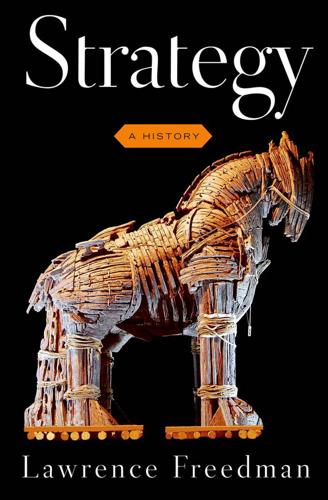
Strategy: A History
by
Lawrence Freedman
Published 31 Oct 2013
This style, he acknowledged, had the “great attractions of predictability and functional simplicity.” All military effort could be geared to attacking sets of targets in a systematic fashion. Under its misleading aura, war would be “governed by a logic analogous to that of microeconomics.” The “conduct of warfare at all levels” would be “analogous to the management of a profit-maximizing industrial enterprise.” In the end, superior resources should win, even though applied with routine and repetitive tactics and procedures. The greater the input, the greater the output. The costs would lie in absorbing the enemy’s reciprocal attrition and the calculation could be upended should the enemy attract an ally to achieve a superior balance of power.
…
It was now seeking to use the “stock market’s collective judgment to resolve conflicts of interest that had plagued scholars, executives, and shareholders for generations.”2 By assuming perfect labor markets, so that employees cost no more than what they were worth to the company and if necessary could move without cost to an alternative job, their analysis concluded that the most important risks were those carried by shareholders.3 By 1983, because of the growing interest shown by economists, Jensen felt able to claim that a “revolution would take place” over the coming decades “in our knowledge about organizations.” Though organization science was in its infancy, the foundation for a powerful theory was in place. This involved departing from the economists’ view of the firm as “little more than a black box that behaves in a value- or profit-maximizing way” in an environment in which “all contracts are perfectly and costlessly enforced.” Instead he argued that firms could be understood in terms of systems geared to performance evaluation, rewards, and the assignment of decision rights. Relationships within an organization, including those between suppliers and customers, could be understood as contracts.
…
Contrary to the pejorative connotations of hostile takeovers, the argument of Jensen and his colleagues was that these could increase the efficiency of the market. Managers dare not get sidetracked by loose and fashionable talk of multiple “stakeholders” but must keep their focus on the needs of the “shareholders” for profit maximization. While managers might complain about takeovers, they were a way of increasing value, redeploying assets, and protecting companies from mismanagement. “Scientific evidence indicates that the market for corporate control almost uniformly increases efficiency and shareholders’ wealth.”5 Companies were viewed as a bundle of assets, formed and reformed according to the demands of the market.
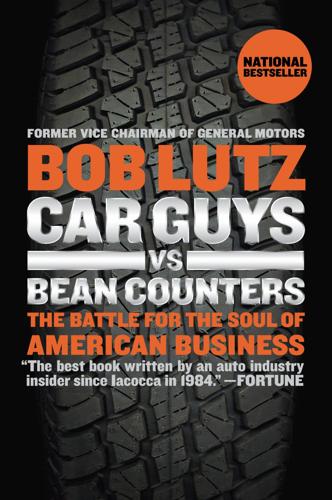
Car Guys vs. Bean Counters: The Battle for the Soul of American Business
by
Bob Lutz
Published 31 May 2011
It’s better to have Manufacturing lose ground in the Harbour Report, building high net-margin vehicles with many more hours, than being best in the world building low-hour vehicles that we take a loss on. We need to recognize that everything is a trade-off, that we can’t maximize the performance of any one function to the detriment of overall profit maximization. The same goes for every discipline: A gorgeous vehicle that disappoints in quality will fail. A car incorporating every conceivable new safety technology makes no contribution to safety if it becomes unaffordable to the customer or we can’t afford to build it. A vehicle with a single-minded focus on “absence of thingsgone-wrong” will fail miserably if it is dull, unexciting, a dog to drive, and ugly.
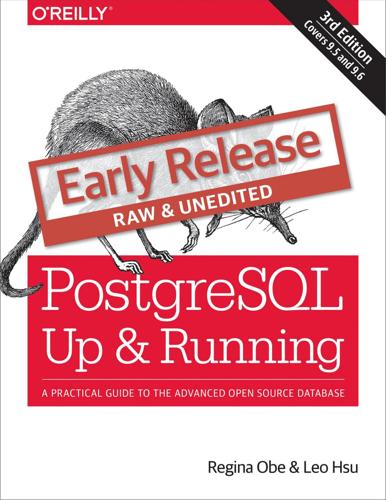
PostgreSQL: Up and Running, 3rd Edition
by
Unknown
Every year brings a new major release, offering enhanced performance along with features that push the envelope of what’s possible in a database offering. Finally, PostgreSQL is open source with a generous licensing policy. PostgreSQL is supported by a community of developers and users where profit maximization is not the ultimate pursuit. If you want features, you’re free to contribute, or at least vocalize. If you want to customize and experiment, no one is going to sue you. You, the mighty user, make PostgreSQL what it is. In the end, you will wonder why you ever used any other database, because PostgreSQL does everything you could hope for and does it for free.
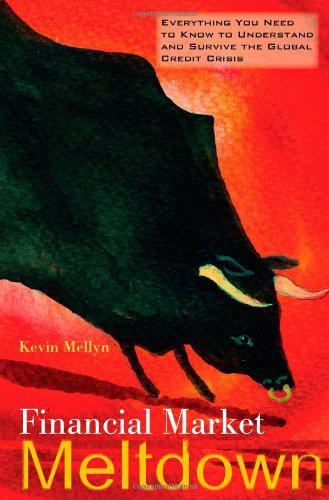
Financial Market Meltdown: Everything You Need to Know to Understand and Survive the Global Credit Crisis
by
Kevin Mellyn
Published 30 Sep 2009
Morgan acted the same way when he personally ended the panic of 1907 in New York by taking all the other bankers into his library one by one and making them come clean about their loans and investments. He decided which banks deserved loans and which needed to be merged or shut down. It worked, though the politicians in Washington never forgave him for saving the economy when they could not. The idea that a private, profit-maximizing banker could be the ‘‘lender of last resort’’ for the whole system drove them nuts. Despite nearly a century of populist resistance to a government-sponsored bank, Congress passed the Federal Reserve Act in 1913. A CAMEL IS BORN Like almost all legislative sausage-making in Congress, the Federal Reserve Act was an ugly compromise.

Makers
by
Chris Anderson
Published 1 Oct 2012
And what’s clear about these new producers is that they’re not going to be making the same one-size-fits-all products that defined the mass-production era. Instead, they’re going to be starting with one-size-fits-one and building from there, finding out how many other consumers share their interests, passions, and unique needs. Happiness economics What’s interesting is that such hyperspecialization is not necessarily a profit-maximizing strategy. Instead, it is better seen as meaning-maximizing. Writing in The New York Times Magazine, Adam Davidson sees this as a natural evolution of an affluent country where the basic needs for the middle class and above have all been more than met: The hot field of happiness economics argues, rather persuasively, that once people reach some level of comfort, they are willing—even eager—to trade in potential earnings at a lucrative but uninspiring job for less (but comfortable) pay at more satisfying work.
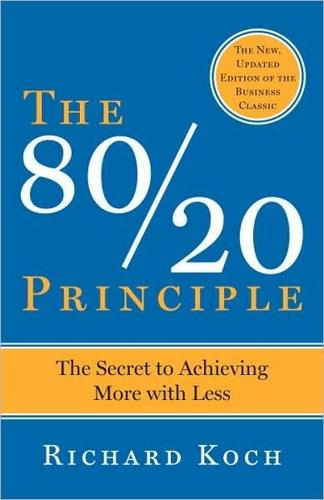
The 80/20 Principle: The Secret of Achieving More With Less
by
Richard Koch
Published 15 Dec 1999
The organization was streamlined and flattened. At the heart of the market meltdown, Corning turned away business. This might seem perverse, but it worked. A simpler, smaller operation rapidly restored profits. Less was more. MANAGERS LOVE COMPLEXITY At this point it is worth asking: why do supposedly profit-maximizing organizations become complex, when this plainly destroys value? One important answer, alas, is that managers love complexity. Complexity is stimulating and intellectually challenging; it leavens boring routine; and it creates interesting jobs for managers. Some people believe that complexity obtrudes when no one is looking.
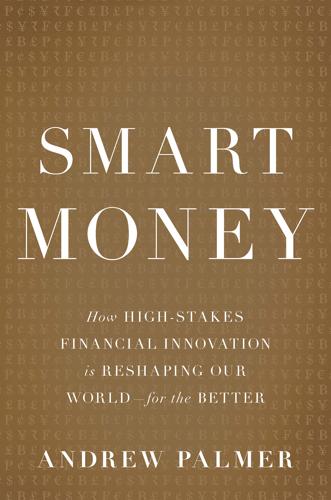
Smart Money: How High-Stakes Financial Innovation Is Reshaping Our WorldÑFor the Better
by
Andrew Palmer
Published 13 Apr 2015
They are also able to attract capital more easily: the amount of venture capital flowing into European financial-technology firms, for example, has not been this high since the dot-com era. That is not to be complacent about finance. Growth and greed can distort good ideas. But when the next financial crisis comes, my bet is that it will stem from an established market, probably property, in which mainstream investors and profit-maximizing institutions have gotten carried away once again. The balance that regulators have to strike is watchfulness for the risks that can cause real economic damage and tolerance for the ideas that can produce real benefits. My belief is that tremendous good will come out of the financial industry in the coming years, thanks to the sorts of entrepreneurs and innovators we have met in the preceding pages.
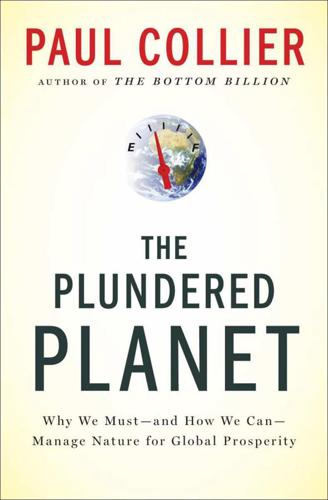
The Plundered Planet: Why We Must--And How We Can--Manage Nature for Global Prosperity
by
Paul Collier
Published 10 May 2010
To internalize these externalities, which means to align incentives with the social interest, the value of the entitlements should accrue to the entity setting the rules. In a fish farm this happens automatically: the owner of the fish farm takes out only the number of fish that is consistent with long-term profit maximization. The miracle of the market is that his interest is aligned with ours. He makes money by providing us with what we want. By assigning the rights over the oceans to the United Nations the high seas would, in effect, be turned into a giant fish farm. The bare minimum would be for the United Nations to limit the harvest to a scientifically determined sustainable rate; that which would keep the stock constant.

Prediction Machines: The Simple Economics of Artificial Intelligence
by
Ajay Agrawal
,
Joshua Gans
and
Avi Goldfarb
Published 16 Apr 2018
For a business school, for example, it is easy to say that they are focused on recruiting the “best” students, but in order to specify the prediction, we need to specify what “best” means—highest salary offer upon graduation? Most likely to assume a CEO role within five years? Most diverse? Most likely to donate back to the school after graduation? Even seemingly straightforward objectives, like profit maximization, are not as simple as they first appear. Should we predict the action to take that will maximize profit this week, this quarter, this year, or this decade? Companies often find themselves having to go back to basics to realign on their objectives and sharpen their mission statement as a first step in their work on their AI strategy. 14 Job Redesign Before the advent of AI and the internet was the computer revolution.
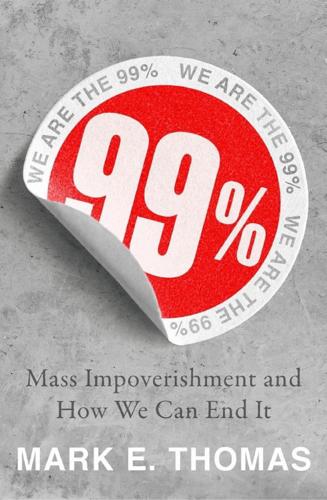
99%: Mass Impoverishment and How We Can End It
by
Mark Thomas
Published 7 Aug 2019
Warren Buffett, for example, has suggested an expansion of the earned income tax credit as a way of ensuring that those whose market value has fallen below what it takes to enjoy a decent life can still have one.28 Paul Tudor Jones II, a hedge fund manager whose personal wealth is estimated at around US$5 billion, has set up the Just Capital Foundation29 to encourage corporations to act in the interests of society as a whole rather than to focus on short-term profit maximization. George Soros has suggested that he personally should be paying more in taxes30 and has set up the Institute for New Economic Thinking. And they are not alone.31 A suitably powerful and coherent coalition is still a long way off – but it is no longer fanciful to believe that it could be created.
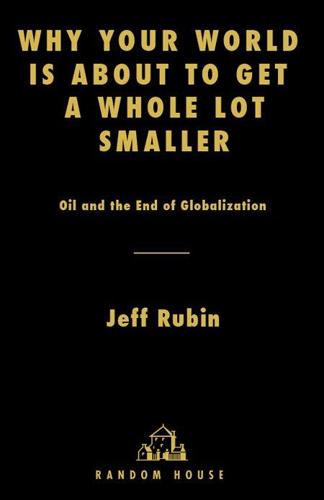
Why Your World Is About to Get a Whole Lot Smaller: Oil and the End of Globalization
by
Jeff Rubin
Published 19 May 2009
When unions go through the math, they will come to the realization that in a world where emissions cost money, the factories their members work in have a comparative global advantage. If your emissions are a third less than those of your competitors, you want the price of emissions to be as high as possible—because the bigger the cost of emissions, the greater your cost advantage from emitting less. That’s not tree-hugging environmentalism, just plain old profit-maximizing economics. Organized labor will soon need to advocate for more stringent standards for carbon emissions. In the process, blue-collar jobs become green-collar jobs. Not only does that change the way labor acts, it sets the stage for political alliances that would once have seemed absurd. Save the world from disastrous human-induced climate change and in the process bring back home high-paying industrial jobs that most of us thought were gone forever: that’s a powerful combo in any political constituency, and it’s one that will soon agitate for a radical shift in US carbon policy.
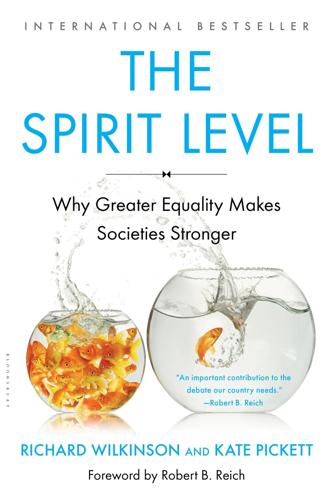
The Spirit Level: Why Greater Equality Makes Societies Stronger
by
Richard Wilkinson
and
Kate Pickett
Published 1 Jan 2009
Perhaps we need international bodies able to negotiate free access to educational and business resources throughout the world. From the point of view of society as a whole, the tendency for technological change to reduce marginal costs is rapidly tipping the balance of advantage away from allowing profit-maximizing corporations to control the distribution of goods. Increasingly they can only rely on the remnants of monopolistic power provided by patents or copyright. We need to find new ways of paying organizations and individuals for life-enhancing research, creativity and innovation – the geese which lay the golden eggs – which does not then restrict access to the benefits.
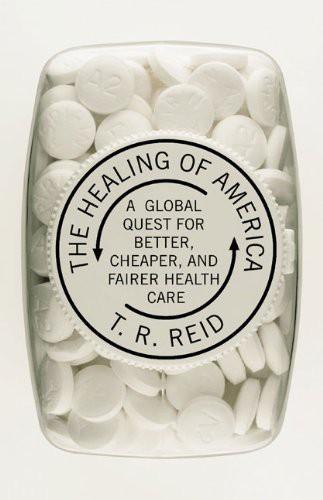
The Healing of America: A Global Quest for Better, Cheaper, and Fairer Health Care
by
T. R. Reid
Published 15 Aug 2009
My company later switched our health insurance to Aetna, which employed a similar dodge: The adjuster said she couldn’t pay our claims because she couldn’t call the doctor’s office to verify the bills. It seems that Aetna had a phone system for its adjusters that didn’t allow international calls. So naturally, all our claims had to be denied. The most maddening of all the profit-maximizing mechanisms in the U.S. health insurance industry is the practice known as “rescission,” a legal term that means “We’re canceling your coverage.” This occurs when an insured person who has been paying premiums for months or years has a serious accident or contracts a serious disease, which can mean serious bills for the insurance company to pay.
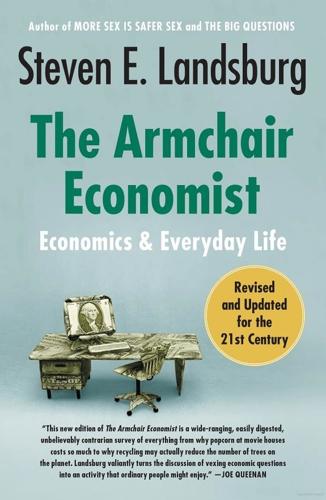
The Armchair Economist: Economics and Everyday Life
by
Steven E. Landsburg
Published 1 May 2012
Here is a rare occurrence of the most sought-after and frequently elusive goal in economic policy—a genuine free lunch. Alternatively, the city could auction off the aquarium to the highest bidder. Once again the lunch is free. The proceeds of the auction can be used to do good while the new owner's profit-maximizing behavior is of no consequence to anybody but himself. Fixed resources—land in a particular location, a unique aquarium, an unusual skill, or an unusual preference—yield economic gains to those who own them. If there are no owners, there are no gains. The Indifference Principle ensures that all gains are either transferred to a fixed-resource owner or effectively discarded.
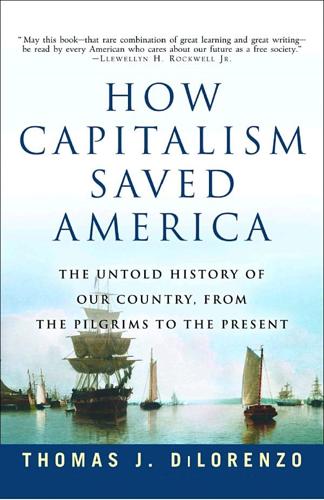
How Capitalism Saved America: The Untold History of Our Country, From the Pilgrims to the Present
by
Thomas J. Dilorenzo
Published 9 Aug 2004
Locke catalogues the personal and business-practice traits of those who have been pioneers of industry and wealth creation in America. Manne, Henry G. The Modern Corporation and Social Responsibility. Washington, D.C.: American Enterprise Institute, 1972. One of the founders of the “law and economics” movement explains how businesses can best be “socially responsible” by steadfastly concentrating on profit maximization. Martin, Albro. James J. Hill and the Opening of the Northwest. New York: Oxford University Press, 1976. An excellent biography of the man who, without any governmental assistance, built a transcontinental railroad, better and more profitably than his subsidized rivals. McGee, John S. “Predatory Pricing: The Standard Oil (N.J.)
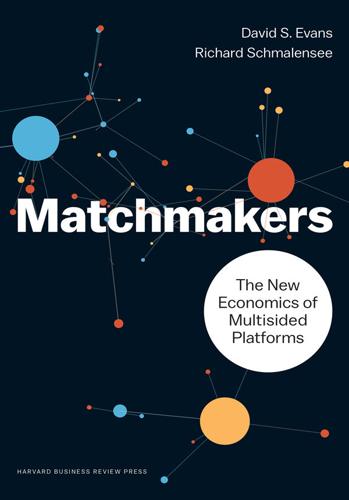
Matchmakers: The New Economics of Multisided Platforms
by
David S. Evans
and
Richard Schmalensee
Published 23 May 2016
It is what distinguishes multisided platforms from single-sided firms. Traditional economics, including what is still taught in most economic textbooks and in most MBA courses, completely ignores indirect network effects and the consequences of interdependent demand. When economists account for indirect network effects in our theoretical models, the profit-maximizing price to the participants on one side could be less than the cost of providing an additional unit; it could be zero or, in other words, free; or it could be less than zero in the sense that the business actually pays the participant something when he or she uses the product. This theoretical result could have been just a curious possibility that we could use to try to keep students awake.
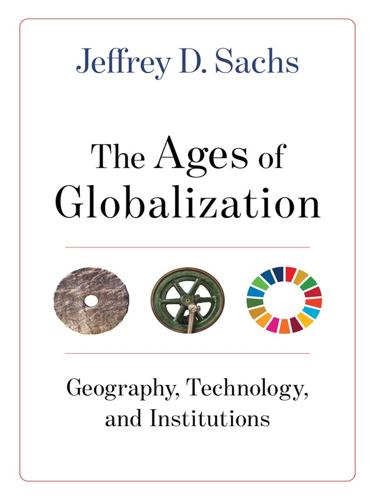
The Ages of Globalization
by
Jeffrey D. Sachs
Published 2 Jun 2020
In order to ensure that all parts of society benefit from the ongoing technological advances, public policies will have to tax the “winners” and use the proceeds to ensure universal access to quality healthcare, education, and social protection as a matter of human right—the core idea of the social-democratic ethos. Subsidiarity and the Public Sphere A key to good policy making is the distinction between private goods and public goods. Private goods are goods that the marketplace efficiently provides under the incentives of profit maximization. Public goods are those that the marketplace underprovides because the profit motive will send the wrong signals. Public goods include quality education and healthcare for all, new scientific knowledge, access to new technologies, protection of the environment, and infrastructure such as highways and long-distance transmission lines for electric power.

23 Things They Don't Tell You About Capitalism
by
Ha-Joon Chang
Published 1 Jan 2010
Organizations – be they corporations or government departments – should be designed to reward trust, solidarity, honesty and cooperation among their members. The financial system needs to be reformed to reduce the influence of short-term shareholders so that companies can afford to pursue goals other than short-term profit maximization. We should better reward behaviour with public benefits (e.g., reducing energy consumption, investment in training), not simply through government subsidies but also by bestowing it with a higher social status. This is not just a moral argument. It is also an appeal to enlightened self-interest.

Listen, Liberal: Or, What Ever Happened to the Party of the People?
by
Thomas Frank
Published 15 Mar 2016
That it also rewards the meritorious and bids down the lives of the unskilled and the poorly graduated makes it seem even more like an act of God. In truth, however, nothing is inevitable and very little is new. And tech is no more the root of the problem than are trade or globalization. Many of our most vaunted innovations are simply methods—electronic or otherwise—of pulling off some age-old profit-maximizing maneuver by new and unregulated means. Sometimes they are designed to accomplish things that would be regulated or even illegal under other circumstances, or else they are designed to alter relationships of economic power in some ingenious way—to strip away this or that protection from workers or copyright holders, for example.
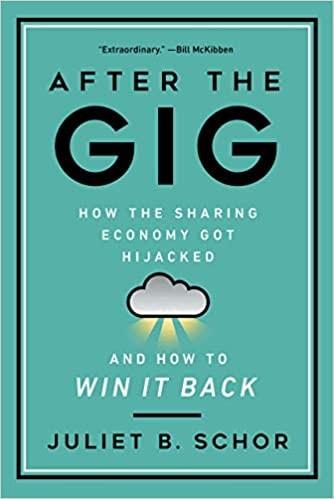
After the Gig: How the Sharing Economy Got Hijacked and How to Win It Back
by
Juliet Schor
,
William Attwood-Charles
and
Mehmet Cansoy
Published 15 Mar 2020
However, they may also benefit from higher customer demand and support with billing and payment. 82. Rosenblat (2018). 83. Cameron (2018). 84. Wood et al. (2019, 64). 85. We discuss these varying strategies in Schor (2015). See also Li, Moreno, and Zhang (2016), who find that professional and nonprofessional hosts use different pricing strategies, with the latter profit-maximizing, in contrast to the former. Robinson (2017) also addresses this issue. 86. Shapiro (2018). 87. Sheldon (2016). 88. Ritzer (2007). Chapter 3 1. Parkinson (2016). 2. Edelman, Luca, and Svirsky (2017). 3. Hempel (2018). 4. Benner (2016); Njus (2018). 5. For a discussion of these competing perspectives, see Cansoy and Schor (2019), “Who Gets to Share in the ‘Sharing Economy’: Understanding the Patterns of Participation and Exchange in Airbnb.” 6.

Beautiful Solutions: A Toolbox for Liberation
by
Elandria Williams, Eli Feghali, Rachel Plattus
and
Nathan Schneider
Published 15 Dec 2024
THE GLOBAL MEDICINES MARKET IS DOMINATED by large private drug companies responsible for a decline in meaningful innovation as well as skyrocketing prices, recurring shortages, troubling safety issues, and corruption in the institutions that are supposed to regulate them. These trends are harmful to our health, economies, and democracies—and they are inevitable outcomes of an industry driven by profit-maximization. “WE DON’T HAVE TO LEAVE OURSELVES AT THE MERCY OF THE MOST PROFITABLE SECTOR ON EARTH TO GET THE DRUGS WE NEED. WE MUST NATIONALIZE THE PHARMACEUTICAL INDUSTRY AND TURN THE MEDICINES MILLIONS RELY ON INTO PUBLIC GOODS.” —NATALIE SHURE AND FRAN QUIGLEY, “IT’S TIME TO SOCIALIZE BIG PHARMA,” JACOBIN.

The Rise of the Network Society
by
Manuel Castells
Published 31 Aug 1996
Under capitalism, the separation between producers and their means of production, the commodification of labor, and the private ownership of means of production on the basis of the control of capital (commodified surplus), determined the basic principle of appropriation and distribution of surplus by capitalists, although who is (are) the capitalist class(es) is a matter of social inquiry in each historical context, rather than an abstract category. Under statism, the control of surplus is external to the economic sphere: it lies in the hands of the power-holders in the state – let us call them apparatchiki or lingdao. Capitalism is oriented toward profit-maximizing, that is, toward increasing the amount of surplus appropriated by capital on the basis of the private control over the means of production and circulation. Statism is (was?) oriented toward power-maximizing, that is, toward increasing the military and ideological capacity of the political apparatus for imposing its goals on a greater number of subjects and at deeper levels of their consciousness.
…
Preston, Pascal Prigogine, Ilya printing, China privatization Prodi, Romano producer networks producer services production; assembly line; capitalist; cross-border; flexibility; globalization; lean; networking; offshore; organization transformed; social relations; technology productivity; competitiveness; computer manufacturing; electronics; employment; globalization; G-7 countries; industrialism; innovation; knowledgebased; labor costs; Mexico; North/South; OECD countries; profitability; services; Solow; technology; time professionals profit-maximizing profitability: crisis; information technologies; productivity; US property rights property slump Pursell, Carroll Putnam, Robert Pyo, H. Qian, Wen-yuan Quayle, Dan Quinn, James Brian Qvortup, Lars Qwest race: Internet use; professionals; see also ethnicity racism radio Ralle, P.
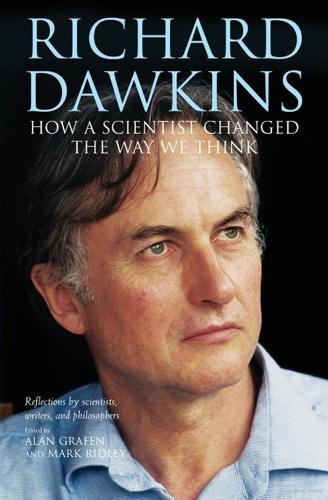
Richard Dawkins: How a Scientist Changed the Way We Think
by
Alan Grafen; Mark Ridley
Published 1 Jan 2006
Again building on Williams’ ideas, Dawkins pointed out, though not in these terms, that logically the concept of selfishness makes sense only within a larger set of ideas, in which there is an entity to be selfish, a quantity whose numerical value says how well-off the entity is, and a range of possible actions that can be taken by the entity. Mathematics and the social sciences nowadays use mathematical formalizations of this larger context (‘optimization programmes’) in game theory and economics, to cope with familiar economic issues such as consumer choice theory and profit maximization by firms. By bringing this larger set of ideas into the centre of the biological argument, Dawkins was able to pursue the logic of adaptationism further. Linking selfishness to replicators, he argued that the entity concerned was the gene and the quantity that surviving genes would come through natural selection to act as if maximizing was their replication.
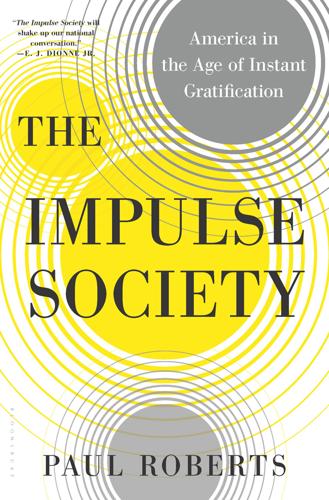
The Impulse Society: America in the Age of Instant Gratification
by
Paul Roberts
Published 1 Sep 2014
You can see this have-it-now reflex in the way our entire consumer culture treats immediate gratification as if it were life’s primary goal, to be pursued as efficiently and unapologetically as possible. But you can also see it among the institutions in charge of the consumer economy, not least the institutions of business. We may always have been a profit-maximizing species, but there was a time when profit was regarded as inseparable from broader social goals and obligations. Today, those obligations are treated increasingly as “inefficiencies” to be minimized or eliminated entirely with cost-cutting technologies and lean strategies. This intensifying emphasis on the bottom line helps explain the unprecedented level of corporate earnings, which have more than recovered from the Great Recession.
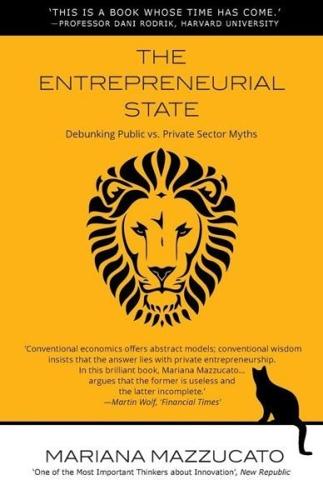
The Entrepreneurial State: Debunking Public vs. Private Sector Myths
by
Mariana Mazzucato
Published 1 Jan 2011
Furthermore, the ability to engage in innovation differs greatly between companies and is one of the main reasons that firms are so different from each other, and why it is nearly impossible to find firms distributed ‘normally’ around an ‘optimal-size firm’ (the ‘representative’ agent), a concept so dear to neoclassical microeconomic theory. Figure 3. Sources of funding for R&D in the USA in 2008 Source: National Science Foundation (2008). The high risk and serendipitous characteristic of the innovation process is one of the main reasons why profit-maximizing companies will invest less in basic research; they can receive greater and more immediate returns from applied research. Investment in basic research is a typical example of a ‘market failure’: an instance where the market alone would not produce enough basic research so the government must step in.

The Second Machine Age: Work, Progress, and Prosperity in a Time of Brilliant Technologies
by
Erik Brynjolfsson
and
Andrew McAfee
Published 20 Jan 2014
In almost every industry, technological progress will bring unprecedented bounty. More wealth will be created with less work. But at least in our current economic system, this progress will also have enormous effects on the distribution income and wealth. If the work a person produces in one hour can instead be produced by a machine for one dollar, then a profit-maximizing employer won’t offer a wage for that job of more than one dollar. In a free-market system, either that worker must accept a wage of one dollar an hour or find some new way to make a living. Conversely, if a person finds a new way to leverage insights, talents, or skills across one million new customers using digital technologies, then he or she might earn one million times as much as would be possible otherwise.
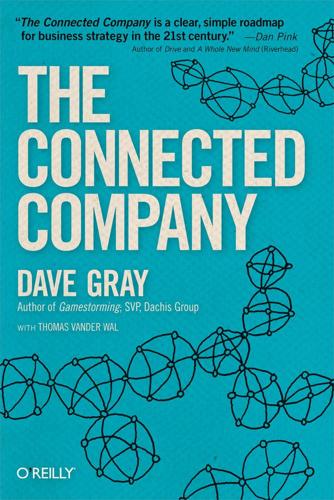
The Connected Company
by
Dave Gray
and
Thomas Vander Wal
Published 2 Dec 2014
Bad profits come from customers who are locked in, who feel trapped or abused. Bad profits come from nuisance fees, like airlines charging extra for checked baggage, car rental companies charging $10 per day for a GPS unit that cost them $100, or banks charging $15 to $25 for a bounced check that costs the bank less than $3. Bad profits maximize transaction value, but they destroy relationships in the process. And bad profits are addictive. Once you have started down the bad-profit road, it can be hard to turn back. In retail banking, up to a third of earnings comes from bad profits. In mobile and telecom, as much as 40% of profits come from relationship-destroying activities.
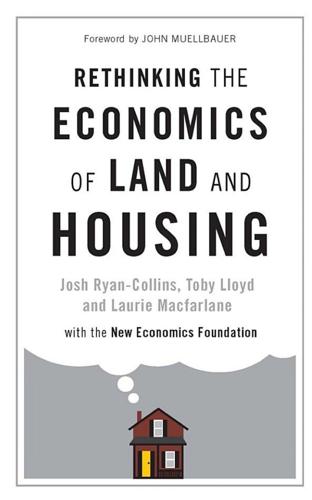
Rethinking the Economics of Land and Housing
by
Josh Ryan-Collins
,
Toby Lloyd
and
Laurie Macfarlane
Published 28 Feb 2017
The authors dedicate four pages to a discussion of the role of land in the economy out of a total of 793 under the microeconomic theory section of the book (Chapter 9: ‘The theory of distribution of income’). On page 58 they discuss the ‘non-human factors of production’ – i.e land and capital – and present two graphs showing the ‘profit maximizing employment of a factor’, arguing that the same equation, ‘marginal cost = marginal revenue of product’, applies whether the factor is land, capital or labour. 12 Most famously in the twenty-year ‘Cambridge controversy’ between academics at the British university and Cambridge, Massachusetts, home of the Massachusetts institute of Technology (MIT) in the 1950s and 1960s.

The Age of Stagnation: Why Perpetual Growth Is Unattainable and the Global Economy Is in Peril
by
Satyajit Das
Published 9 Feb 2016
In June 2013, Bank of England governor Sir Mervyn King stated: “It is not in our national interest to have banks that are too big to fail, too big to jail, or simply too big.”10 But the combination of government support (which protects depositors and creditors), limited liability (which protects shareholders), profit maximization, and incentive pay for financiers continued to encourage a culture among large banks of “rational carelessness.”11 Too-big-to-fail banks have been increasingly joined by too-big-to-fail fund managers, who are responsible for investing over US$87 trillion in retirement and other savings, around three-quarters of the size of the global banking system and 150 percent of global GDP.
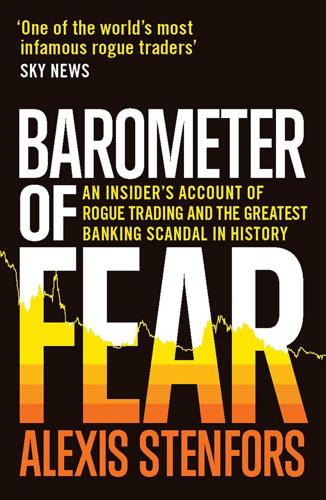
Barometer of Fear: An Insider's Account of Rogue Trading and the Greatest Banking Scandal in History
by
Alexis Stenfors
Published 14 May 2017
INDEX ABN Amro Bank, 59 Accenture, ‘rogue trading’ definition, 249 Accept, Breaker album, 110–11 ACI (Association Cambiste Internationale/Forex), 174, 181; ‘Dealing Certificates’, 216; Model Code, 227 actual funding rates, public knowledge, 97 Adoboli, Kweku, 250 Agius, Marcus, 77, 284 Almunia, Joaquín, 221 American Psycho, 239–40, 250 Aragon, 25 arbitarge, 31; opportunities, 27 Aros, 25 Asian financial crisis 1997, 260 ATM queues, image of, 109 average opinions, expectation of, 102 Bäckström, Urban, 117 Bailey, Andrew, 280 ‘banging the close’, 209 Bank of America, 2, 11, 153, 164, 188, 191, 223; Merrill Lynch rescue/takeover, 49, 67, 161–3, 193; rescue of, 10 Bank of England, 38, 55, 222; Exchange Joint Standing Committee, 179; inflation target, 39 Bank of Japan, 33, 81, 175–6 Bank of Tokyo-Mitsubishi, 153, 223 banking, competitive deregulation, 114; incentive structures literature, 252; post 2008 reforms, 254; risk taking essence, 281; staff ‘cost centres’, 95; see also, central banks; financial markets; money markets banks: access to money indicators, 96; cash hoarding, 45; change attempts post-scandals, 283; credit departments, 253; derivatives main users, 121; Eurodollar market made, 117, 125; fines, 236; LIBOR hiding, 105; LIBOR perceptions, 79; LIBOR quotes, 99; markets abuse, 14; profit maximizing, 80; public trust need, 284; reputational damage, 168; ‘special’ sector, 173; risk management systems, 46 Banque pour l’Europe du Nord, 113 Barclays Bank, 59, 98, 105, 153, 192–3, 210, 220, 223; Capital securities unit, 98; interest rate derivatives traders, 77; 2012 fines, 76; US dollar LIBOR trial, 139 Basel Accord 1988, 137; perverse effect, 138 BBA, banking lobby, 180, 183; BBAIRS creation, 118; big banks dominated, 107; -LIBOR trademark, 181 Bear Stearns, 49, 105, 272 ‘beating the market’, 267 Becker, Gary, 254 behavioural finance, study of, 196, 200–1, 255; ‘disruption effect’ concept, 258 benchmarks: financial instruments, 122; manipulation of, 14; manipulation criminalised, 282 Berlin Radio Show, 111 bid-offer spreads, 42–3, 62, 112, 132, 139, 146, 219, 223, 228–9; collusive practices, 223; FX market, 192; prices tight, 201; round figures, 218; secretly agreed, 220 BIS (Bank for International Settlements), 130 blame, individualised, 236; shifting, 68 Bloomberg, 50, 86, 88, 98, 151, 195, 283; indicative prices, 62 BNP Paribas, 193, 223; investment funds freeze redemptions, 50 Böll, Heinrich, 235 bonds selling, 21; trading desks, 215 bonuses, 164, 273; curbing partial solution, 280; stricter rules on, 280 ‘book’, traders, 26 Borough Market, London, 7, 101, 245 borrowing rates, low-balling, 99 bribes, forms of, 91 brokers, 143; best guess, 88; false information transmission, 89; role of, 141; traders pressure on, 90; -traders relation, 86–7, 89; use of, 132 Buffett, Warren, 15, 251 bulls/bears, early experiences formed, 31 Bush, George W., 45 buy and sell orders, 208 ‘call-outs’, 24; symptom assessing, 25 ‘Can do More’, 144 Canada: dollar, 33; Foreign Exchange Committee, 179 Canary Wharf, London, 6 Cantor Fitzgerald, London office, 264 capital controls, abolishment, 133 Carr Futures, World Trade Centre office, 264 cash markets, importance loss, 139 cash squeezes, year-end, 44 cash-settled derivatives; benchmark need, 122–3; made market, 133 cassettes, history of, 110–11 CDOs (collateralised debt obligations), 11 central bank, 151; -banks unique relationship, 173; foreign exchange interventions, 233; inflation rate target, 70; LIBOR key variable, 53, 151; LIBOR use, 152; money pumping, 50; power, 174; power overestimated, 49, 54; price stability goal, 51; repos, 175; tips, 176; transparency, 40, 166–7; unexpected interest rate moves, 41; weakening of, 114 Channel 4 News, 11 Chase Manhattan, 131 Chemical Bank (JPMorgan Chase), 30 CIBOR (Copenhagen Interbank Offered Rate), 28, 78–9 Citibank, 29, 30, 58, 101, 153, 155, 182, 188, 193, 220, 223; benchmark manipulation fine, 160; ‘Scandi’ desk, 33; Tokyo dealing room, 196 CME (Chicago Mercantile Exchange), 123, 1288; Eurodollar futures, 126 collateral types, central banks lowering, 50 competition law, UK and EU, 222 complex structured products, valuation inability, 50 compliance departments banks, 253; post-scandals increase, 283 Cooke, Mr Justice, 282 copycat behaviour, market making, 202–3 Cosmopolis, 250 counterparties, confirmations, 18 Countrywide, 49 CPI, Inflation index, 149 credit: default swap market, 99; officers, 95; rating agencies, 96; risk, 137; risk measure for, 55 Crédit Agricole Indosuez, 37, 44, 58–9, 134, 155 Crédit Suisse, 153, 193, 221, 223; First Boston, 127 creditworthiness: ‘image problem’, 51; judgments on, 225; signals, 98, 99 cross-currency basis swap, LIBOR-indexed, 62 CRSs, 129 Darin, Roger, 115 dealing relationships, informal reciprocal, 227 dealing rooms, internal monitoring increase, 283 deceptive behaviour, LIBOR banks, 105; quotes post-crisis pressure, 106 Del Missier, Jerry, 77 Den Danske bank, 178 derivatives, ‘abstract’, 123–4; benchmark use, 150; borrowing and lending idea, 138; concrete type, 121; growing market, 79; interest rates, 30; LIBOR-indexed, 28, 71, 80, 104, 129; new instruments, 18; textbook explanation, 119–20; trade tickets, 141’usefulness’ of, 131 derivatives market: benchmark need, 119; LIBOR importance, 37; Scandanavia, 27 Deutsche Bank, 153, 193, 223; LIBOR controls deceptions, 183; LIBOR fine, 83 Diamond, Bob, 77 Dillon Read, 49 ‘discount windows’ lowering, 50 ‘dishonesty’, 249 Donohue, Craig, 128 dot-com bubble, 104 downgrades, credit rating agencies, 96 Dresdner Bank, 17, 155, 197 Duffy, Terry, 128 Easton Ellis, Bret, American Psycho, 236 economic data releases, examples of, 38 efficient market hypothesis, 195, 200–1; unrealistic assumption, 196 ‘emerging markets’, trading desks, 37 ERM (European Exchange Rate Mechanism) crisis, 31–2 Ermotti, Sergio, 213 EURIBOR (Euro Interbank Offered Rate), 14, 76–8, 126, 130; derivatives, 145; new unpredictability, 62; pre-Euro, 148 euro, the: Eurozone crisis, 109; launch of, 36 eurocurrency market, 113; central bank weakening, 111; deregulated, 114; Eurodollars, see below; fast growth of, 112; LIBOR derivatives replaced, 134 Eurodollar market, 113, 133, 152; advantages, 112; banks made, 117, 125; contracts standard maturity dates, 126; financial deregulation prompt, 116; futures, see below; gradual reduction of, 136; history of, 111; LIBOR rate making, 117, 129; rapid growth of, 115 Eurodollar futures, 125, 128, 265; bets on, 146; rationale for, 129; success of, 127 Euromoney, 135 European Banking Federation, 180 European Central Bank (ECB), 50, 109, 145 European Commission, 221 Euroyen LIBOR futures contract, 127 ‘Events’ central bank meetings, 40 excessive lending, inflationary fears, 114 exclusivity, self-perception, 269 expectations, games of, 103; overpriced stock, 104 ‘expert judgments’, banks LIBOR quotes, 278 Fama, Eugene, 195 ‘fat fingers’ errors, 253 FBI, USA, 192–3 FCA (Financial Conduct Authority), 183–4, 188, 219, 282; Fair and Effective Markets Review, 222; prohibited individuals list, 285 fear, rumours of, 266 Federal Reserve, see USA FIBOR (Frankfurt Interbank Offered Rate), 19, 127 financial crisis, Asia 1997, 36 financial crisis 2007–8; decent culture erosion explanation, 279; familiar analysis of, 114; financial market illuminating, 275; -LIBOR implications, 52, 111; money markets freeze, 109 financial markets: cartels, 222; deregulation 115–16; instruments liquidity, 43; misconceptions, 236; self-regulated, 113, 171; see also, money markets Finers Stephens Innocent, 3 Finland: USSR collapse impact, 20; USSR Winter War, 65 ‘firm policy’, interbank spread choosing, 229 fixed exchange rates, sustainability, 32 flat switch, 92–5 flow traders, 143 Forex, 1995 exam, 223; reciprocity endorsed, 227 FRAs (forward rate agreements), 28, 75, 91, 129–30; growth of, 148 Friday dress policy, 135 FSA (Financial Services Authority), UK, 1–2, 67, 77, 98, 105, 124, 163, 180, 243; prohibition orders, 4; suspension, 5 ‘Full Amount’ call, weakness indicator, 143 funding costs:, averages, 104; LIBOR signalling, 97; -market liquidity relation, 44 futures contracts: agricultural, 120; cash-settled, 125; transparent exchanges, 63 FX (foreign exchange) market, 172, 196, 245; bank price influence, 212; big banks domination/market concentration, 193, 195, 210, 212, 223, 234; ‘clear the decks’, 210; ‘community’, 190; ethical problem, 213; global banks 2014 fines, 188; interbank spread survey, 228; interest rate markets joining, 31; Japanese banks borrowing, 33; London ‘banging the close’; 209; non-public information grey zone, 224; order books, 7; reciprocity, 224; scale of significance, 126, 192, 232; spot market desk, 214, 217; standardised norms, 194; swap market, see below; ‘The Cartel’, 220; traders, see below; turnover scale, 212 FX swap market, 134, 137, 145, 146; interest rate speculation, 133; Japanese traders, 34; lower credit risk, 137, 144; 9/11 trading, 265; spot-prices, 31, 227 FX traders, 191; club mentality, 269; desks, 30; respect among, 269; secret code us, 219; ‘techniques’, 204; varied backgrounds, 216 Gelboim, Ellen, 153 gentlemen’s agreements, 141 ‘getting married to your position’, trading attitude, 257–8 global merchandise exports, growth, 112 Goldman Sachs, 49, 140, 193, 223, 272 Goodhart, Charles, 173 Greece, 2015 ATM queues, 109 Greenspan, Alan, 15, 51, 173–4 Greenwald, Bruce, 225 guilt, feelings of, 78, 169, 243, 259 Häyhä, Simo (‘White Death’), 65 ‘Hambros’, 194 Harley, Dean, 231 Hayes, Tom, 8, 13, 72, 92–3, 115, 238; prison sentence, 12 HBOS, 183 headhunters, 160 HELIBOR (Helsinki Interbank Offered Rate), 28 Hester, Stephen, 284 Hintz, Brad, 10 HSBC, bank, 27, 153, 155, 188, 193, 208, 213, 223; FCA fine, 219; FX trading, 116, 187; Group Management Training College, 187; Stockholm, 31 Hull, John, 150 Hunger Games series, 255 Hyogo Bank default, 33 ICAP, 86, 101, 175; LIBOR fine, 85 ICMA (International Capital Market Association), 174 IKB bank, 50; rollover problems, 49 illiquidity, temporary, 43 Indonesia, financial crisis, 36 Industrial Bank of Japan, 34 ‘industry’, financial, 154–5 information: LIBOR delays problem, 49, 54; big banks superior, 210 instincts, 226 interbank money market, 38; central bank influence, 39; efficiency estimate change, 109; lending fall, 111; LIBOR, see below interest rate(s): benchmarks, 14; central banks forecasts, 166; changes impact of, 38; derivatives, 17, 174; hedging, 128; movement, 42; short-term, 28, 133; swaps sizes, 142 International Code of Conduct and Practice for the, 216 International Monetary Market (IMM), 72; contracts conventions, 126; LIBOR fixings, 73–4 investment banks, risk takers, 272 Ireland, Financial Regulator, 4, 168, 281 IRS, interest rate swap, 129–30; short-term, 140 ISDA (International Swaps and Derivatives Association), 174; fix, 14 Japan: bank sector/system: crisis, 47, 81; dollars difficulty period, 34; fear premium, 36; Financial Services Agency, 101; FX market concentration, 193; FX ‘premium’, 35–6; safe perception change, 33; unique derivatives market, 36; yen market, 8, 45 JP Morgan/JP Morgan Chase, 92, 105, 153, 178, 188, 192–3, 220–3 Kahneman, Daniel, 255 Kerviel, Jérôme, 250 Keynes, J.M., General Theory of Employment, 102 Kipling, Rudyard, 127 KLIBOR (Kuala Lumpur), 37 Knight, Angela, 107 Lapavitsas, Costas, 6–7 layering, 204 Leeson, Nick, 250 ‘legacy issues’, 236 Lehman Brothers, 2, 10, 48–9, 59, 105, 162, 272; bankruptcy filing, 160; collapse of aftermath, 96 Lewis, Ken, 164 LIBOR, 19, 28, 76–7, 104, 127, 130, 147, 209, 234, 265; anti-competitive process, 186; banking lobby regulated, 180–1; ‘barometer of fear’, 96; benchmark significance, 192, 225; central banks perfection assumption, 49; controls deception, 184; crisis-induced ‘stickiness’, 106; crucial price, 13; daily individual quotes, 97; derivatives, see below; ‘Eurodollar futures’ origin, 126; FCA regulated, 282; ‘fear’ index, 15; fixing panels, see below; future direction of, 38; inaccuracy possibilities, 74; interbank money market gauge, 39; jurisdiction issue, 115; manipulation, 7, 12, 14, 78; manipulation impossibility assumption, 81; market-determined perception, 88, 149; mechanism, 104; minute change importance, 73; new unpredictability, 62; 1980s invention, 111; objective process ‘evidence’, 148; perception of, 119; players as referees, 80; post 2007 interest, 53; pre-2013 unregulated, 118; predicting difficulty, 70; regulatory oversight lack, 179; retail credit impact, 277; sanctioned secrecy, 181–2; savings and borrowings dominance, 107; scandal breaking, 81; state measure use, 151; three-months, 71; ‘too big to fail’, 279; use of limited post-scandal, 278 LIBOR derivatives market, 8, 45, 137–8, 232; autonomous development of, 111; banks made, 125; ‘community’, 190; -FX connected, 189; imaginary money market, 148; increased abstraction of, 144–6 LIBOR panel banks, 74–5, 79, 98, 118, 172, 282; -LIBOR implications, 52 big banks dominated, 173, 179–80; fixing process, 75; membership criteria, 184–5; punishment idea, 108; post-scandal membership, 186 LIBOR scandal, 77, 152, 167, 245; correctness attempts, 277; post- definition unchanged, 278; breaking of, 81; Wall Street Journal on, 238 LIBOR-OIS spread(s), 51, 54–5, 99, 151 LIFFE, 126–7 liquidity: and credit crunch 2008, 2; credit issues, 45; informal norms need, 284; provision ‘duty’ 229; risk, 42–3, 55, 70 Lloyds Bank, 153, 183; LIBOR fine, 83 long/short positions, 26 Lukes, Steven, 186 makers, price, 24 Malaysia, financial crisis, 36 Mankell, Henning, 235 ‘marked to market’ trading books, 62 market, the financial: ‘colour’ 202; ‘conventions’, 228–33; ‘courtroom’, 171; interbank spread choosing ‘image’, 229; liquidity risk, 42–3; making, see below; perfections of, 15; relationships dependent, 225–6; risks limits management failure, 281 market makers/making, 24, 72, 117, 201, 206, 217, 226–7, 257; ‘ability’, 185; cash-settled derivatives, 133; failure to manage, 281; NIBOR IRS, 132; profession of, 200; two-way price quoting, 228; visibility of, 202 Martin Brokers, 85 Mathew, Jonathan, 139 McAdams, Richard, 231 McDermott, Tracey, 282 Meitan Tradition, 100, 175 Merita Bank, 56 Merrill Lynch, 2–3, 8–9, 12, 46, 49, 59–60, 62, 64, 69, 92–3, 96, 140, 153, 155, 160–1, 164, 188, 272, 285; Bank of America takeover, 67; bonuses, 10, 162–3; financial centre, 48; International Bank Limited Dublin, 4; mismarking, 68; risk taking encouraged, 281; silence rule, 242 Midland Montagu (Midland Bank Stockholm Branch), 20, 22–3, 27, 29; Stockholm, 22, 29 ‘Millenium bug’ fears, LIBOR impact, 44 mismarking, 9 mistakes, fear of, 26 Mollenkamp, Carrick, 98 ‘monetary transmission mechanism’, 39 money market(s): decentralised, 224; freeze, 110; international basis, 112; ‘risk premium’, 42; stable illusion-making, 106; -state link, 224 Moody’s, 96 morals, 66; morality, 69 Morgan Stanley, 49, 193, 223, 272 mortgage bonds, 21 NASDAQ stock exchange, transparency, 220 New York 2001 attacks, 263 New York Times, 4, 9, 11, 163, 241, 243 NIBOR (Norwegian Interbank Offered Rate), 28, 72, 130–1; fixing dates, 76; inaccurate fixing, 74; IRS market, 132; new unpredictability, 62; one month IRS market, 136 nicknames, use of, 25–6 Nordbanken, nationalised, 27 Nordic bank branches, 30 Norges Bank, NIBOR use, 152 Norinchukin Bank, 153 Northern Rock, Newcastle queues, 109 Norway, banking system, 131 ‘objective’ fact, LIBOR, 149 ‘off-balance-sheet’, trading, 137–8 official interest rate, predicting, 38 OIS (overnight index swap), 51; see also LIBOR-OIS one month IRS market, 136 OPEC (Organization of the Petroleum Exporting Countries), US dollar surpluses, 113 options desk, FX, 214 ‘over-the-counter’ trades, 63 derivatives, 129, 134; interest rate options, 130; markets, 227 Philippines, financial crisis, 37 Philips, cassette launch, 111 PIBOR (Paris Interbank Offered Rate), 19, 127 post scandals, reforms, 282 price(s), as interactions, 200; brokers indications role, 87; ‘resolution hypothesis’, 218 primary dealers, 175, 178 privacy, individual rights to, 167 Rabobank, LIBOR fine, 83, 153, 282 RBC, bank, 223 RBS, bank, 92, 153, 185, 188, 192, 220–1, 223, 284; LIBOR scandal fine, 83 reciprocity: -and trust, 226, 284; informal agreements, 228 regret, fear of, 258 regulatory arbitrage: Eurodollar market prompting, 118; platform for, 114 ‘reputation’, 185 respect, among traders, 267 Reuters, 19, 79, 151; Dealing, 41, 195, 260; Dealing 2000–2, 29, 34, 194; indicative prices, 62; screen price, 53 risk, 135; buzz of, 261–2; limits breaking, 274; ‘loss aversion’, 255; managers, 253; organizational limits, 250; pressures for, 63 risk taking: addictive, 262; enjoyment of, 260; fear control, 263; increase, 73; individualistic, 262; reward anticipation, 254; reward interpretation, 259; supervision need, 253 risk takers, 270; respect among, 268–9 Robert, Alain, 260 ‘rogue traders’, 1, 237; ‘bad apples’ narrative, 237, 240, 246, 279; fame, 252; fascination with, 246; losses, 259; ranking list, 250; risk list, 251; scandals, 258; stigma, 247 rogue trading, 274; definitions, 249; labelling, 248; risk link, 250 Royal Bank of Canada, 153 RP Martins, 153 rules of the game, loyalty to, 25 ‘run-throughs’, 87–9, 226–7 Russia, financial crisis, 36 Ryan, Ian, 3, 9, 68 Sanford C.

AI Superpowers: China, Silicon Valley, and the New World Order
by
Kai-Fu Lee
Published 14 Sep 2018
Major American corporations already collect large amounts of data and store it in well-structured formats. They often use enterprise software for accounting, inventory, and customer relationship management. Once the data is in these formats, it’s easy for companies like Palantir to come in and generate meaningful results by applying business AI to seek out cost savings and profit maximization. This is not so in China. Chinese companies have never truly embraced enterprise software or standardized data storage, instead keeping their books according to their own idiosyncratic systems. Those systems are often not scalable and are difficult to integrate into existing software, making the cleaning and structuring of data a far more taxing process.
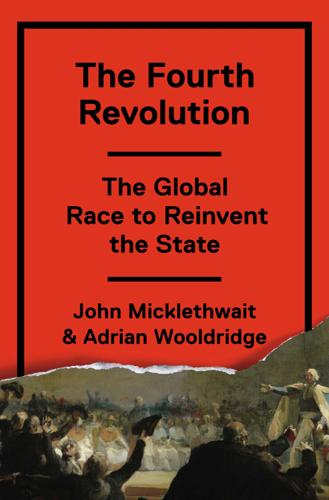
The Fourth Revolution: The Global Race to Reinvent the State
by
John Micklethwait
and
Adrian Wooldridge
Published 14 May 2014
A stream of luminaries hacked away at the status quo: Frank Knight demonstrated that social reform was often counterproductive; Ronald Coase (another LSE import) and George Stigler argued that regulators were frequently captured by the people whom they regulated; Gary Becker invented the economics of human capital; James Buchanan and Gordon Tullock demonstrated that bureaucrats were motivated by the same profit-maximizing instincts as businesspeople.4 But nobody wielded the ax more vigorously than Friedman. Few academics have had Friedman’s gift for evangelism. Looking back, what the young freeloader heard in the San Francisco sauna was a version of the “Road to Hell” lecture, which Friedman delivered at any university that would have him: a lecture in which he excoriated everything that the American Left—and indeed the American center—held dear and unveiled an entirely different future.
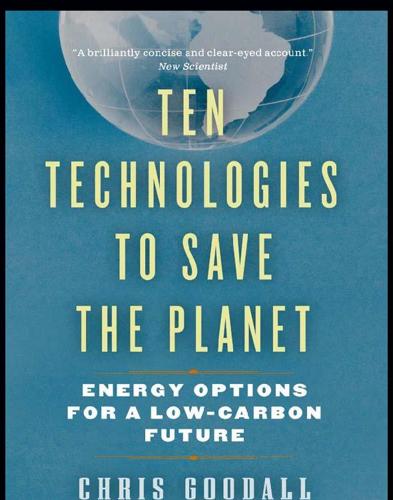
Ten Technologies to Save the Planet: Energy Options for a Low-Carbon Future
by
Chris Goodall
Published 1 Jan 2010
Without a substantial and guaranteed financial incentive, no power station owner will likely voluntarily move to CCS . Forward-looking coal-fired power station operators are almost pleading with governments to ensure high carbon taxes in order to create such an incentive. Make carbon emissions costly enough, and profit-maximizing power stations will have an incentive to install capture equipment rather than pay for their carbon dioxide pollution. “I am a carboholic,” wrote David Crane in the Washington Post. Crane is the head of NRG , a U.S. electricity generator with a portfolio of coal-fired stations. “If Congress puts in place a substantial carbon price,” he said, “we will do what America does best; we will react to carbon dioxide price signals by innovating and commercializing technologies that avoid, prevent, and remove carbon dioxide from the atmosphere.”
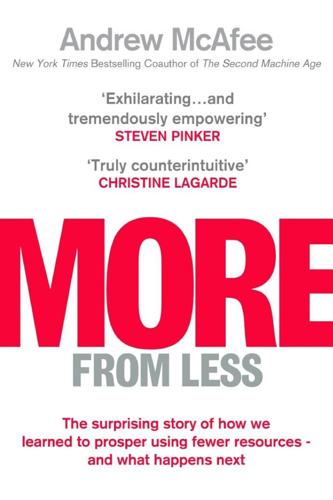
More From Less: The Surprising Story of How We Learned to Prosper Using Fewer Resources – and What Happens Next
by
Andrew McAfee
Published 30 Sep 2019
The Machinery of Prosperity Romer’s ideas should leave us optimistic about the planetary benefits of digital tools—hardware, software, and networks—for three main reasons. First, countless examples show us how good these tools are at fulfilling the central role of technology, which is to provide “instructions that we follow for combining raw materials.” Since raw materials cost money, profit-maximizing companies are particularly keen to find ways to use fewer of them. So they use digital tools to come up with beer cans that use less aluminum, car engines that use less steel and less gas, mapping software that removes the need for paper atlases, and so on and so on. None of this is done solely for the good of the earth—it’s done for the pursuit of profit that’s at the heart of capitalism—yet it benefits the planet by, as we’ve seen, causing us to take less from it.

Possible Minds: Twenty-Five Ways of Looking at AI
by
John Brockman
Published 19 Feb 2019
We can stigmatize the stubborn arrogance of current AI as “right cybernetics,” the path that led to current automated weapons systems, Uber’s ill-disguised hostility to human workers, and the capitalist dreams of Google. Now we must turn back to left cybernetics—theoretical biologists and anthropologists engaged with a trans-species understanding of intelligent systems. Gregory Bateson’s observation that corporations merely simulate “aggregates of parts of persons,” with profit-maximizing decisions cut off from “wider and wiser parts of the mind,” has never been more timely.* The cybernetic epistemology offered here suggests a new approach. The individual mind is immanent, not only in the body but also in pathways outside the body, and there is a larger Mind, of which the individual mind is only a subsystem.
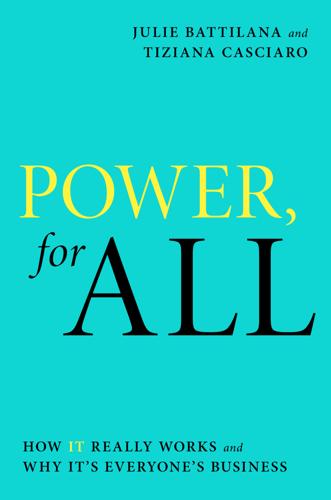
Power, for All: How It Really Works and Why It's Everyone's Business
by
Julie Battilana
and
Tiziana Casciaro
Published 30 Aug 2021
Such unrestrained markets—free from political and moral oversight—powered the transatlantic slave trade that deported more than ten million Africans to America over three hundred years.83 Undiscerning reliance on markets also prompted the corporate world’s radical shift to the mantra of shareholder profit maximization. Corporate leaders and investors lost sight of the environmental and societal implications of their activities, exacerbating environmental destruction and socioeconomic inequalities. Leaving control of technology to the market alone will make the world less safe, less humane, and even more unequal and conceivably doom humanity to extinction.
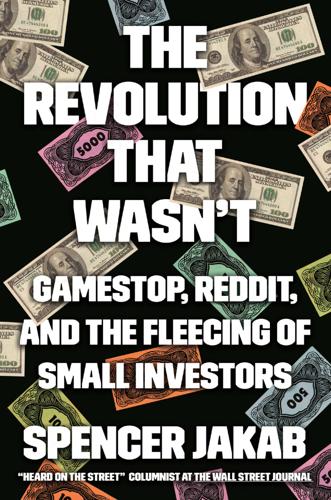
The Revolution That Wasn't: GameStop, Reddit, and the Fleecing of Small Investors
by
Spencer Jakab
Published 1 Feb 2022
If stocks are seen as speculative objects detached from underlying value, or if you are angry at your broker or at hedge funds for your own mistakes, then it is easy to get cynical about investing, and any money lost today could be a lot more costly tomorrow through failure to trust the market and build a nest egg. Instead, young investors should be more cynical about the feel-good message of profit-maximizing companies out to “democratize” investing and the cool, rich people who influence what they do with their money. I’ll return to my movie analogy in the introduction: some of you picked up this book expecting only the whiz-bang story of the GameStop squeeze, Attack of the Clones, and I tried to ruin it by whispering in your ear throughout the show that Chancellor Palpatine is a Sith lord, and all the heroics were for naught.

Pump Six and Other Stories
by
Paolo Bacigalupi
Published 15 Sep 2010
A man in good clothes, a yellow card to boot, should have known that he was nothing but a bit of bloodied bait before a Komodo lizard. At least the stupid melon didn't bleed on his fancy clothes when the white shirts were done with him. That one had no habit of survival. He forgot that he was no longer a Big Name. But Tranh is learning. As he once learned tides and depth charts, markets and bio-engineered plagues, profit maximization and how to balance the dragon's gate, he now learns from the devil cats who molt and fade from sight, who flee their hunters at the first sign of danger. He learns from the crows and kites who live so well on scavenge. These are the animals he must emulate. He must discard the reflexes of a tiger.
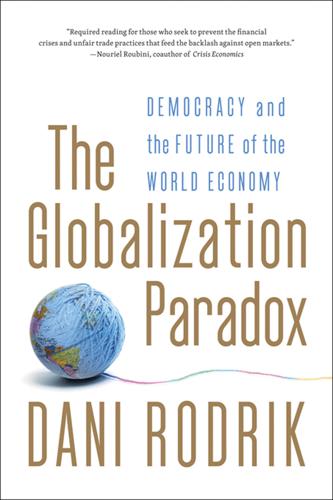
The Globalization Paradox: Democracy and the Future of the World Economy
by
Dani Rodrik
Published 23 Dec 2010
Technology is hardly a free-for-all.10 Ultimately, the analogy that Henry Martyn and his intellectual descendants employed is a useful one: free trade is indeed just like technical progress. But don’t let the rhetoric fool you. The fact that we intervene so heavily in the process of technological change should teach us something. If economics were only about profit maximization, it would be just another name for business administration. It is a social discipline, and society has other means of cost accounting besides market prices. But what exactly does that mean for the conduct of trade policy? What kind of rules should we apply, and how do we prevent ourselves from sliding into unbridled protectionism—from turning into modern-day equivalents of Ned Ludd’s followers during the Industrial Revolution, who opposed the spread of new textile technologies and destroyed mechanized looms?
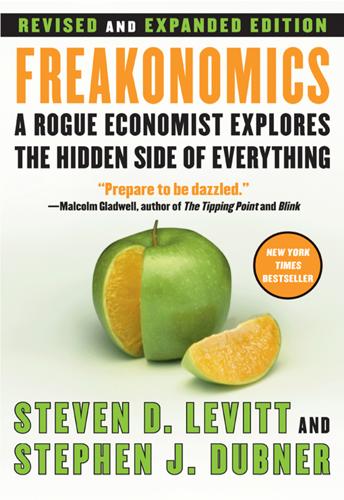
Freakonomics: A Rogue Economist Explores the Hidden Side of Everything
by
Steven D. Levitt
and
Stephen J. Dubner
Published 11 Apr 2005
Their research led to an article that was substantially similar to the version of the story published here: Stephen J. Dubner and Steven D. Levitt, “What the Bagel Man Saw,” The New York Times Magazine, June 6, 2004. Levitt has also written an academic paper about Feldman’s bagel operation: “An Economist Sells Bagels: A Case Study in Profit Maximization,” National Bureau of Economic Research working paper, 2006. / 43 The “Beer on the Beach” study is discussed in Richard H. Thaler, “Mental Accounting and Consumer Choice,” Marketing Science 4 (Summer 1985), pp. 119–214; also worth reading is Richard H. Thaler, The Winner’s Curse: Paradoxes and Anomalies of Economic Life (New York: Free Press, 1992). 2.
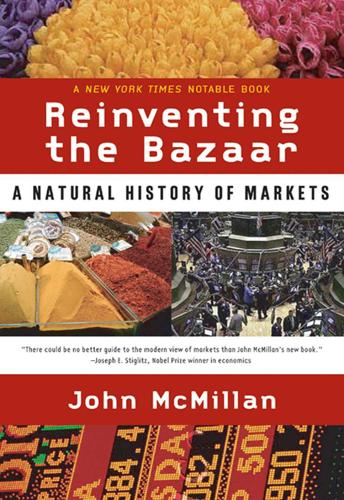
Reinventing the Bazaar: A Natural History of Markets
by
John McMillan
Published 1 Jan 2002
A study of the U.S. market for antiulcer drugs, in which four manufacturers competed, estimated that a 10 percent increase in price would have been followed by only a 7 percent decrease in demand.16 This means (if you do the arithmetic) that an increase in the price would elicit an increase in the total revenue earned, implying that had there been a single supplier, as in many other pharmaceutical markets, the price would have been set much higher. When demand is inelastic, textbook economics says, a profit-maximizing monopolist prices far above its production cost. Where the buyers are not price-sensitive, charging what the market will bear means setting prices very high. Patents, for the invaluable purpose they serve, come with a real cost. Since intellectual property laws are defined and enforced by the state, and since they represent an uneasy compromise between the needs of the innovator and the needs of the user, the rules of the pharmaceutical market are not cast in stone.
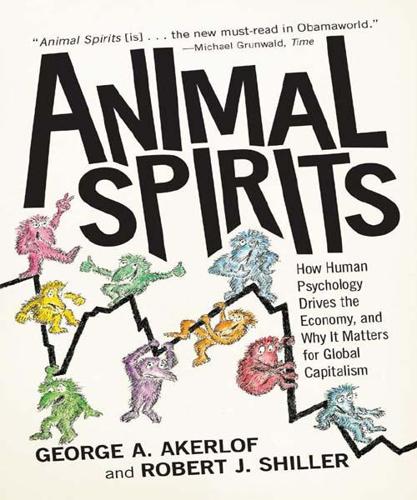
Animal Spirits: How Human Psychology Drives the Economy, and Why It Matters for Global Capitalism
by
George A. Akerlof
and
Robert J. Shiller
Published 1 Jan 2009
We believe that the unvarnished invisible hand story, although right in a fundamental way, is wrong at the level of detail and approximation that is necessary to explain what we need to know about macroeconomies. The old story about capitalism is correct: it gives us what we think we want. But capitalism does not act as its own policeman if we fail to watch over it and give it proper directions. It actively, competitively, seeks the most profit-maximizing opportunities. Capitalism will follow such opportunities wherever they lead us. That, of course, is relevant for the recent world financial crisis. The recession, deep as it has been, has been a tragedy for people around the world. They have been losing their jobs, their houses, and their dreams.
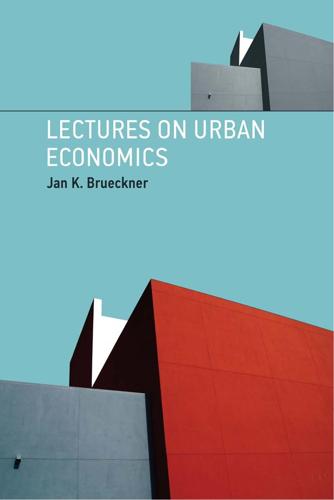
Lectures on Urban Economics
by
Jan K. Brueckner
Published 14 May 2011
It is the best possible economic arrangement for the consumption of local public goods and services.17 8.4.3 Multiple public goods and special districts As was explained earlier, the spatial organization of local governments in the United States is complex, with various levels of overlapping jurisdictions. The concept of optimal jurisdiction size can give some 16. Tiebout (1956) made this very argument. The modern literature formalizing Tiebout’s idea sketches a more specific institutional structure leading to such an outcome. In this literature, each jurisdiction is run by a competitive, profit-maximizing “community developer” who controls the jurisdiction’s population, sets its public-good level, and collects taxes. Voting with one’s feet is still present in the sense that consumers are free to move between jurisdictions. But with the developer controlling z, the majority-voting process is no longer operative.
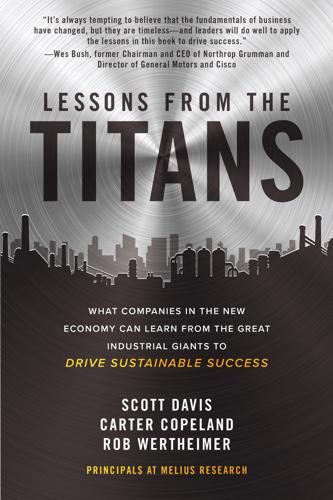
Lessons from the Titans: What Companies in the New Economy Can Learn from the Great Industrial Giants to Drive Sustainable Success
by
Scott Davis
,
Carter Copeland
and
Rob Wertheimer
Published 13 Jul 2020
However, the organization and its leaders were largely oriented around a 10 percent earnings growth target that was only feasible if margins continued to move higher. Margin expansion was core to the company’s success and its managers’ paychecks. It had become culturally ingrained deep in the bowels of the organization via ACE, and it manifested itself as a perpetual war on costs, even good ones. The pursuit of cost minimization and profit maximization is great in principle. Efficiency isn’t a bad thing, but taken too far it comes with consequences. Lower costs applied to well-understood, preexisting businesses are pretty straightforward, as they fall straight to the bottom line. However, if new business opportunities are judged versus legacy margin rates, investments in projects that offer growth potential, attractive returns on capital, or even more loosely defined “strategic value” may never materialize.
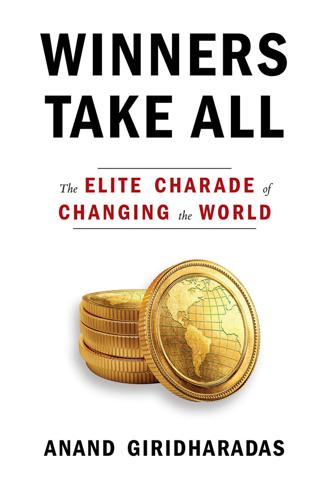
Winners Take All: The Elite Charade of Changing the World
by
Anand Giridharadas
Published 27 Aug 2018
It happened in recent decades to have been taken over by protocols that, in the name of making everything optimal, granted a license to neglect and even hurt others. “We sort of created a cartoon,” Porter said, “which is this view of, if you can force your employee to work overtime without paying them, then you should do it—that’s free markets, and that’s profit maximization.” Finally, Porter spoke of how the spread of the financial vernacular of the protocols had caused companies to be run more and more for the sake of shareholders rather than for workers or customers or anybody else. “When I was first teaching,” he said, “we didn’t talk about shareholder value.”

The Truth Machine: The Blockchain and the Future of Everything
by
Paul Vigna
and
Michael J. Casey
Published 27 Feb 2018
Facebook takes the posts we upload, the media we share, the commentary we make, and, most important, the followings we build, and packages all of that as a valuable, curated audience to advertisers. Facebook’s newsfeed isn’t just a sequential flow of posts, like that of Twitter; it’s the product of a proprietary algorithm. With that intelligent, profit-maximizing machine making value judgments about who would want to read what, posts gets prioritized and delivered to subsets of users that Facebook’s marketing folks describe worryingly as “lookalike audiences.” This is how the infamous “echo chambers” of social media, those teams of like-minded users with whom we find ourselves unconsciously aligning and whose reading lists never include the other side’s point of view, get actively created and reinforced.
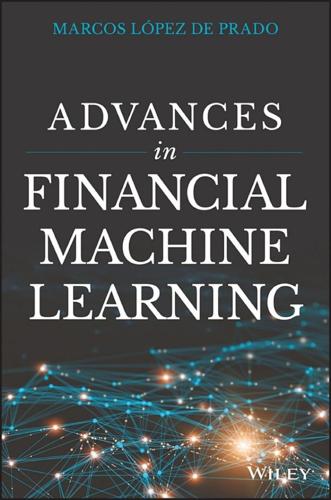
Advances in Financial Machine Learning
by
Marcos Lopez de Prado
Published 2 Feb 2018
Conversely, the market maker conjectures that the informed trader's demand is a linear function of v: x = α + βv, which implies and . Note that lower liquidity means higher λ, which means lower demand from the informed trader. Kyle argues that the market maker must find an equilibrium between profit maximization and market efficiency, and that under the above linear functions, the only possible solution occurs when Finally, the informed trader's expected profit can be rewritten as The implication is that the informed trader has three sources of profit: The security's mispricing. The variance of the noise trader's net order flow.
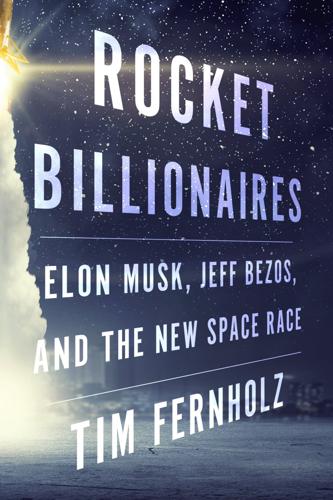
Rocket Billionaires: Elon Musk, Jeff Bezos, and the New Space Race
by
Tim Fernholz
Published 20 Mar 2018
The prime contractors were frequently monopolists, locking down control of a single aerospace franchise, and in turn they frequently served a single customer: the government. This gave them the ability to demand contracts with a guaranteed profit, which critics of these arrangements say undermines the very profit-maximizing urges that drive innovation. Cost-plus contracts are extremely good for shareholders, but they shouldn’t be mistaken for competition. In a few years, Musk would become perhaps the only aerospace CEO to insist on fixed-price government contracts, and SpaceX would become a dramatic example for procurement reform.
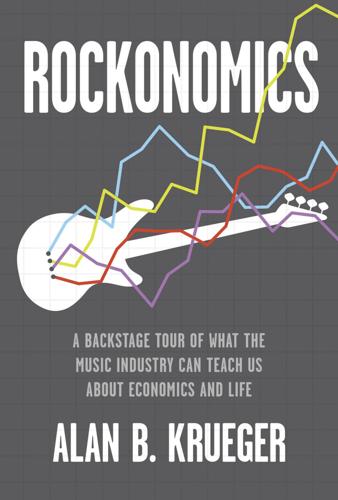
Rockonomics: A Backstage Tour of What the Music Industry Can Teach Us About Economics and Life
by
Alan B. Krueger
Published 3 Jun 2019
Once a show sold 80 percent of its tickets, another show was added, and those in the queue were rolled over for the next show. As Brooks put it, he was “scared to death no one would show up. And then scared to death when they did.” Ticketmaster called this strategy “Garth mode.” Garth mode can be viewed as expanding supply to satisfy demand at a fixed price that is below the profit-maximizing price. “The whole thing was simple,” Brooks said: “Make your capacity exceed your demand.”25 The strategy essentially killed the resale market, as anyone who wanted a ticket at the list price could buy one. A total of 6.3 million tickets were sold, probably the second-most ever after U2’s record 360° tour (7.3 million tickets sold from 2009 to 2011).

The Quiet Damage: QAnon and the Destruction of the American Family
by
Jesselyn Cook
Published 22 Jul 2024
On a grand scale was a democracy at risk; up close, behind closed doors, were countless fractured families, like those of Emily, Matt, Doris, Alice, and Kendra. And mostly to blame, I was convinced, was our greed-corrupted information ecosystem. As a tech reporter, I’d written extensively about the insidious ways in which profit-maximizing social media algorithms were driving tribal polarization and amplifying fake news while foreign powers leveraged the platforms to do the same from afar. Adding fuel to the fire, media personalities and influencers with audiences of millions were preaching lies and hate for clicks and views with increasing success, while a growing faction of the nation’s leaders was doing the same for political ends.
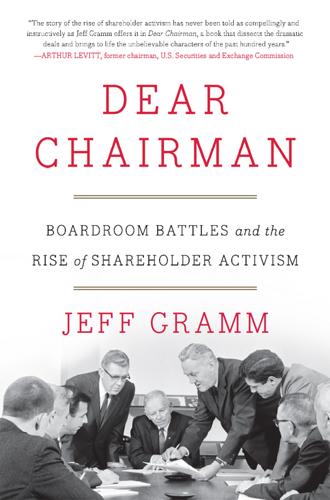
Dear Chairman: Boardroom Battles and the Rise of Shareholder Activism
by
Jeff Gramm
Published 23 Feb 2016
If markets are not efficient, participants have the opportunity to exploit dislocations for their own benefit. Companies can take advantage of shareholders, and shareholders can take advantage of companies. Here’s a good example of this phenomenon: If you believe in rational markets, a company buyout at a premium to its market price is a profit-maximizing event for all shareholders. In the real world, buyouts are opportunistic, and people can, and do, get screwed. We also shouldn’t ignore the role markets play in influencing management teams. Every CEO interested in protecting his or her job must worry about stock price performance. As Carl Icahn once said, “You better get that price up or someone else will do it for you.”52 But what happens when the investor base misvalues the company?

The Golden Passport: Harvard Business School, the Limits of Capitalism, and the Moral Failure of the MBA Elite
by
Duff McDonald
Published 24 Apr 2017
When we talk about business ethics, in other words, we are pretty much talking about everything that businesses—and managers—do. The teaching challenge is complicated even further by the fact that, like the edge of a knife, business ethics are usually only appreciated when they are not there. However, if you’re going to go looking for their absence, the most likely place to find it is at the intersection of profit maximization and sound judgment. Because everything gets a little trickier when there’s lots of money involved. Which brings us to the story of John Shad (’49). John Shad had the kind of resume that makes HBS proud. As founder and head of the investment banking division at E. F. Hutton & Company in the 1960s, Shad had to face up to the problems inherent in being late to the game.
…
“Shad and the business school ethicists who repeat this dictum over and over seem unaware that mere expediency is perhaps the shallowest foundation for an ethical system,”7 writes John Trumpbour in How Harvard Rules: Reason in the Service of Empire. Not only that, but by placing profit above ethics in his hierarchy, Shad left open the door that if and when acting unethically could be shown to pay even more, the logic would compel you to do so. Again, it always gets complicated at the intersection of profit maximization and sound judgment. Especially when you’re dealing with the high priests of capitalism, whose sacrament is profit. Shad was just preaching the gospel of his particular church. You see, Harvard Business School has always seen itself—and, by extension, “business”—as occupying the moral high ground, even in instances where it had shown itself not to be.
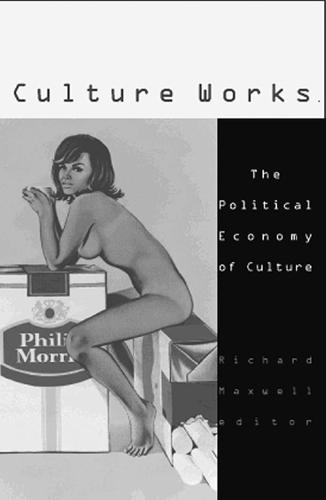
Culture works: the political economy of culture
by
Richard Maxwell
Published 15 Jan 2001
Corporate capitalism’s inexorable appropriation of sport culture replaced the amateur(ish) volunteerism of official “old-boy” sporting values with the scientific business principles and rationalities espoused by “men and women of the Corporation.”17 These new values infiltrated sport via “modern forms of domination, such as ‘business administration,’ and techniques of manipulation, such as market research and advertising.”18 Sport was thereafter effectively and efficiently reorganized in accordance with corporate values and a logic of profit maximization. Initially in the postwar United States, and 133 David L. A n d r e w s subsequently in the corporatizing economies of Western Europe, Japan, and Australasia, this imperious corporate model transformed sport into big business, undermining once and for all any claim that sport enjoyed a semiautonomous relation to the political economy.

The Wisdom of Crowds
by
James Surowiecki
Published 1 Jan 2004
In the end, though, economic arguments may not be enough to get the theaters to abandon the one-price-fits-all model—a model that the theaters themselves discard when it comes to the difference between showing a movie during the day and seeing one at night (matinees are cheaper than evening shows), but that they cling to when it comes to the difference between Finding Nemo and Gigli (for which they charge the same price). The theaters’ unwillingness to change is not a well-considered approach to profit maximization and more a testament to the power of custom and convention. Prices are uniform today because that’s how they were done back in the days when Hollywood made two different kinds of movies: top-of-the-line features and B movies. Those films played in different kinds of theaters at different times, and where people lived and when they saw a movie affected how much they paid.
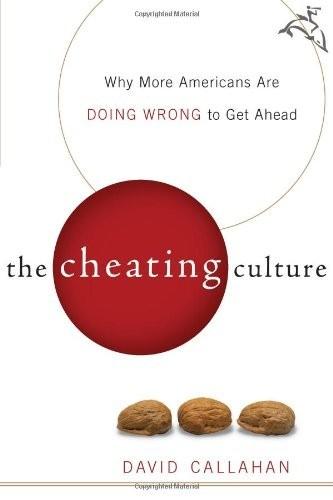
The Cheating Culture: Why More Americans Are Doing Wrong to Get Ahead
by
David Callahan
Published 1 Jan 2004
Paine backs up this assertion with survey data about the changed views of employees, citizens, consumers, and even some investors. This new outlook is diametrically opposed to the trend within corporations over the past two decades, which has been to strip companies of moral purpose and focus solely on profit maximization. Ordinary people, it appears, aren't so keen on that trend. Paine is prodding corporate leaders to get in step with the public by pointing out ways that an investment in ethics pays. She emphasizes four points, all of which jibe with common sense: It helps companies to manage risk, especially the risk of a fatal scandal.
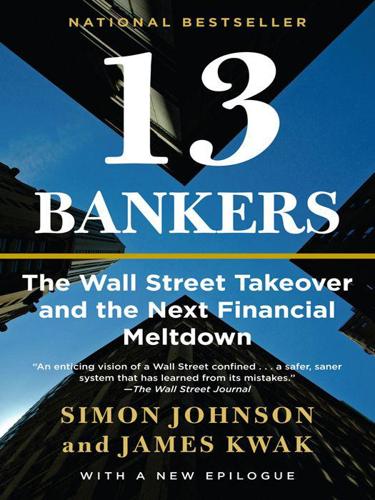
13 Bankers: The Wall Street Takeover and the Next Financial Meltdown
by
Simon Johnson
and
James Kwak
Published 29 Mar 2010
In 2002, as part of the Bush administration’s Blueprint for the American Dream, they committed to finance $1.1 trillion in loans to minority borrowers.79 The riskiest mortgages, however—the ones that pushed the housing bubble to dizzying heights—were simply off-limits to Fannie and Freddie. The GSEs could not buy many subprime mortgages (or securitize them) because they did not meet the conforming mortgage standards. As profit-maximizing private corporations, Fannie and Freddie tried to relax their underwriting standards in order to get into the party, reducing documentation requirements and lowering credit standards. But ultimately, regulatory constraints prevented them from plunging too far into subprime lending. As housing expert Doris Dungey wrote, “[T]he immovable objects of the conforming loan limits and the charter limitation of taking only loans with a maximum [loan-to-value ratio] of 80% … plus all their other regulatory strictures, managed fairly well against the irresistible force of ‘innovation.’ ”80 As a result, in 2004–2006, as subprime lending reached its peak in both volume and innovation, Fannie and Freddie were pushed out of large parts of the market, because the loans being made violated their underwriting standards and because the Wall Street banks were so eager to get their hands on those loans.
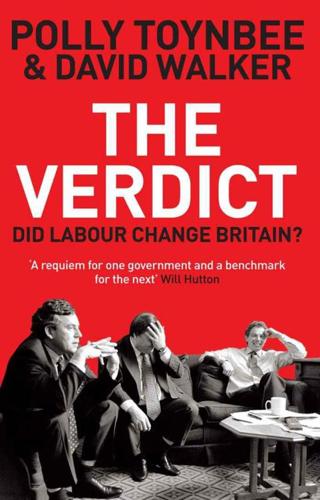
The Verdict: Did Labour Change Britain?
by
Polly Toynbee
and
David Walker
Published 6 Oct 2011
That is not to diminish Labour’s achievements, nor to underestimate the strength of tribal antagonism to Labour across comfortable England, married to the myopic bias of business. On leaving the CBI, the scales fell from the eyes of Sir Richard Lambert, leading him to denounce a business culture of short-term profit maximization and boardroom greed; at no point, however, did Labour look likely to pick up that critique. Another reason for Labour’s fearfulness was, and remains, the bias of the national newspaper press. Try governing calmly, let alone progressively, amid its catcalls, lies, bullying and bile. Europhobic, tax-allergic, crime-neurotic, mean, prurient, reactionary – this was the tone set by the Daily Mail and Murdoch and a large cohort of British journalists.
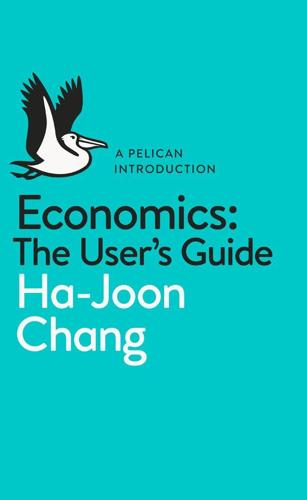
A Pelican Introduction Economics: A User's Guide
by
Ha-Joon Chang
Published 26 May 2014
* Many people use the term ‘the state’ as something broader than ‘the government’ and something akin to ‘the country’. This distinction has good philosophical and political justifications. But, for the purpose of this book, the two terms can be used interchangeably. * When a firm has market power, the profit-maximizing level of output is lower than the socially optimal one, which is where the maximum price that a consumer is willing to pay is the same as the minimum price that the producer requires in order not to lose money. When the amount produced is less than the socially optimal quantity, it means not serving some consumers who are perfectly willing to pay more than the minimum price that the producer requires but who are unwilling to bear the price at which the firm can maximize its profit.
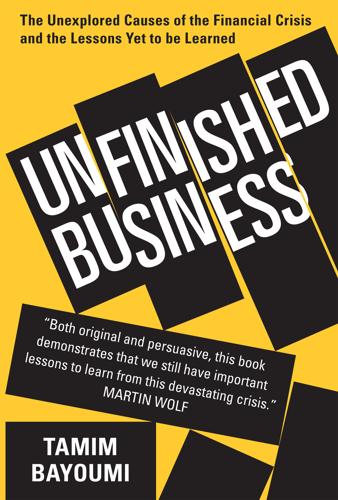
Unfinished Business
by
Tamim Bayoumi
This is exemplified by the increased use of dynamic stochastic general equilibrium (DSGE) models, in which the macroeconomy is seen as an amalgam of microeconomic theories for households and firms with policy rules defining the responses of central banks and fiscal policymakers. The backbone of the microeconomic theories is “homo economicus”. Homo economicus is an individual (“agent” is the preferred term) who maximizes pleasure (“utility”) given his or her income and who ensures that the firms that (s)he owns maximize profits. Maximization is crucial, as it allows the full weight of the associated mathematics to be used. The assumption of maximizing behavior plus a natural unit to account for such behavior (money and prices) has allowed economics to become the most developed of the social sciences. At its most basic level, economics involves the law of supply and demand.
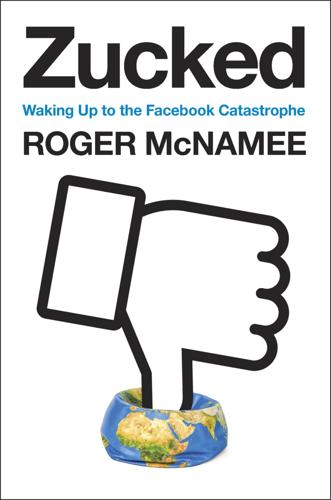
Zucked: Waking Up to the Facebook Catastrophe
by
Roger McNamee
Published 1 Jan 2019
If you are a fan of democracy, as I am, this should scare you. Facebook has become a powerful source of news in most democratic countries. To a remarkable degree it has made itself the public square in which countries share ideas, form opinions, and debate issues outside the voting booth. But Facebook is more than just a forum. It is a profit-maximizing business controlled by one person. It is a massive artificial intelligence that influences every aspect of user activity, whether political or otherwise. Even the smallest decisions at Facebook reverberate through the public square the company has created with implications for every person it touches.
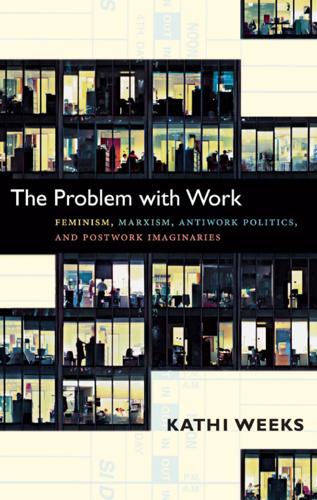
The Problem With Work: Feminism, Marxism, Antiwork Politics, and Postwork Imaginaries
by
Kathi Weeks
Published 8 Sep 2011
In some ways, the critique of alienation that is central to the humanist critique of capitalism in its Fordist incarnation seems even more applicable to the conditions of post-Fordist labor that the autonomists, representing a more recent theoretical project, attempt to address. When more jobs require workers to supply not only manual effort but also emotional skills, affective capacities, and communicative competencies—that is, when more of the self is drawn into labor processes and managed in accordance with the exigencies of profit maximization—the problem of alienation, from both self and others, arguably grows more acute. Yet there remain problems with the critique. For example, particularly when the individual is the unit of analysis, as in many of the arguments noted above, the critique of alienation becomes attached to a prior claim about the nature of the human subject.
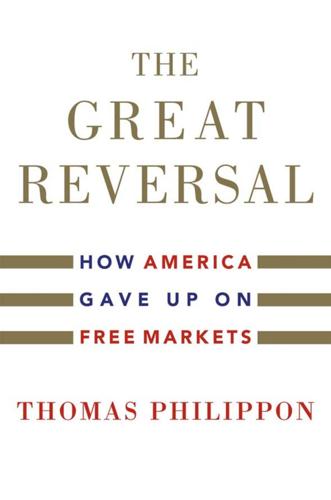
The Great Reversal: How America Gave Up on Free Markets
by
Thomas Philippon
Published 29 Oct 2019
Campaign finance and lobbying allow businesses to gain access and influence regulators. As Thomas Stratmann (2019) explains: “It may be that contributions influence the positions of a candidate, the roll call votes a candidate casts, or even the amount of access time contributors receive from a candidate. These conjectures all derive from the assumption the firms are profit-maximizing and don’t make contributions for reasons that do not benefit their bottom line. They contribute with the expectation of receiving something in return for their contribution.” Reciprocally, campaign finance should help win elections. However, as Stratmann notes: “from the beginning of the empirical literature up to the present day a consensus has not developed about the role of campaign expenditures for winning elections.”
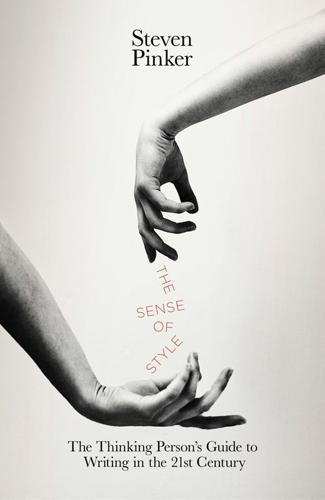
The Sense of Style: The Thinking Person's Guide to Writing in the 21st Century
by
Steven Pinker
Published 1 Jan 2014
The term was invented by economists to help explain why people are not as shrewd in bargaining as they could be, in theory, when they possess information that their opposite number does not.3 A used-car dealer, for example, should price a lemon at the same value as a creampuff of the same make and model, because customers have no way to tell the difference. (In this kind of analysis, economists imagine that everyone is an amoral profit-maximizer, so no one does anything just for honesty’s sake.) But at least in experimental markets, sellers don’t take full advantage of their private knowledge. They price their assets as if their customers knew as much about their quality as they do. The curse of knowledge is far more than a curiosity in economic theory.

Stakeholder Capitalism: A Global Economy That Works for Progress, People and Planet
by
Klaus Schwab
Published 7 Jan 2021
It is unbalanced, fragile, and increases the chance of societal, environmental, and public health disasters. As COVID-19 demonstrates, when disasters strike, they put an unbearable strain on public systems. In this book, I will argue that we can’t continue with an economic system driven by selfish values, such as short-term profit maximization, the avoidance of tax and regulation, or the externalizing of environmental harm. Instead, we need a society, economy, and international community that is designed to care for all people and the entire planet. Concretely, from a system of “shareholder capitalism,” which prevailed in the West in the past 50 years, and a system of “state capitalism,” that gained prominence in Asia, and is centered on the primacy of the state, we should move to a system of “stakeholder capitalism.”
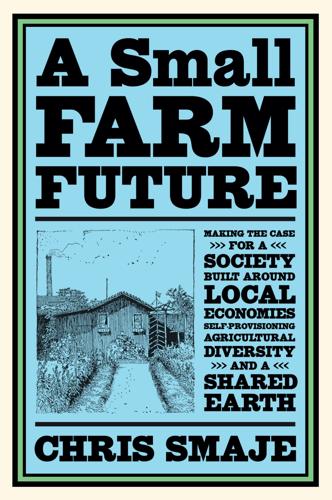
A Small Farm Future: Making the Case for a Society Built Around Local Economies, Self-Provisioning, Agricultural Diversity and a Shared Earth
by
Chris Smaje
Published 14 Aug 2020
Wolfgang Streeck argues that the combination of increasing inequality, debt and political stress with decreasing growth will probably end the era of capitalism – one that lasted longer than anyone could have expected on the basis of its strange socioeconomic ordering: an economy requiring limitless growth, and a society that, in his words: ‘secures its collective reproduction as an unintended side-effect of individually rational, competitive profit maximization’ that puts its productive capital into the hands of a minority, thereby largely abdicating political responsibility for human welfare. In Streeck’s view, capitalism probably won’t be replaced by some other functioning global order, but by macro-level disorder and indeterminacy.138 It’s a potentially frightening prospect, with numerous bad outcomes in the offing.
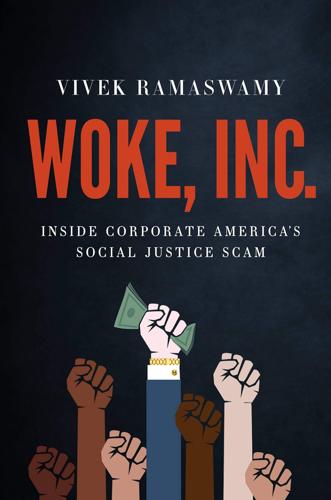
Woke, Inc: Inside Corporate America's Social Justice Scam
by
Vivek Ramaswamy
Published 16 Aug 2021
Think of a tobacco company that might face a choice about whether to include an ingredient that makes its product more addictive, in a way that leaves both consumers and society worse off. If a company knows that its product will harm people but there’s no technical legal prohibition on selling it, the “negative-externality” folks argue that the company should still exercise restraint even though the profit-maximizing course of action is to sell as much of the product as possible. I acknowledge that’s a hard case. In theory, it raises a dilemma for my argument. But in actuality this kind of case rarely arises in the real world: most corporate actions that are known to harm people are either illegal or likely to hurt the company’s reputation—and profits—in the long run.

Stakeholder Capitalism: A Global Economy That Works for Progress, People and Planet
by
Klaus Schwab
and
Peter Vanham
Published 27 Jan 2021
It is unbalanced, fragile, and increases the chance of societal, environmental, and public health disasters. As COVID-19 demonstrates, when disasters strike, they put an unbearable strain on public systems. In this book, I will argue that we can’t continue with an economic system driven by selfish values, such as short-term profit maximization, the avoidance of tax and regulation, or the externalizing of environmental harm. Instead, we need a society, economy, and international community that is designed to care for all people and the entire planet. Concretely, from a system of “shareholder capitalism,” which prevailed in the West in the past 50 years, and a system of “state capitalism,” that gained prominence in Asia, and is centered on the primacy of the state, we should move to a system of “stakeholder capitalism.”
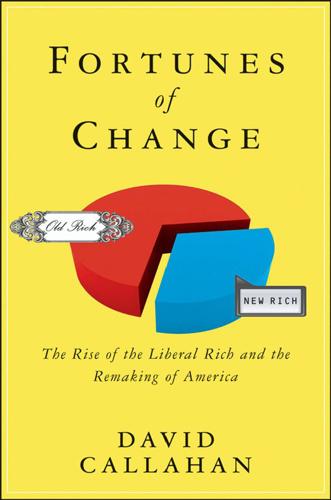
Fortunes of Change: The Rise of the Liberal Rich and the Remaking of America
by
David Callahan
Published 9 Aug 2010
“Like medicine, law, and education, business has noble purposes,” McKay wrote, “to provide goods and services that improve its customers’ lives, to provide jobs and meaningful work for employees, to create wealth and prosperity for its investors, and to be a responsible and caring citizen.” At Whole Foods, McKay said, the company measured its success by how much value it created for a half-dozen different stakeholders, ranging from investors to the environment. “The ideas I’m articulating result in a more robust business model than the profit-maximization model that it competes against, because they encourage and tap into more powerful motivations than self-interest alone. These ideas will triumph over time, not by persuading intellectuals and economists through argument but by winning the competitive test of the marketplace. Someday businesses like Whole Foods, which adhere to a stakeholder model of deeper business purpose, will dominate the economic landscape.

The Diet Myth: Why America's Obsessions With Weight Is Hazardous to Your Health
by
Paul Campos
Published 4 May 2005
Second, ineffective treatments also tend to eliminate demand, either because, in the case of fatal diseases, customers who purchase such treatments die off, or because, in the case of nonfatal conditions, customers will normally choose not to treat the condition, once it becomes clear the treatment is ineffective. From the perspective of a profit-maximizing medical and pharmaceutical industry, then, the ideal disease would be one that never killed those who suffered from it, that could not be treated effectively, and that doctors and their patients would nevertheless insist on treating anyway. Luckily for it, the American health-care industry has discovered (or rather invented) just such a disease.
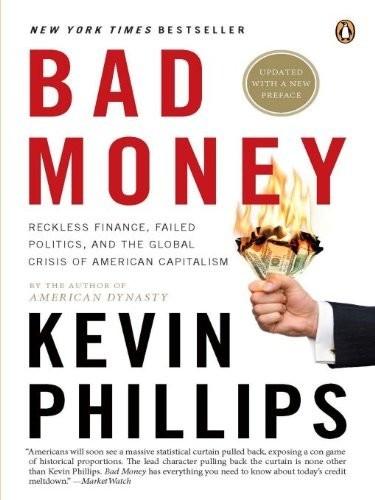
Bad Money: Reckless Finance, Failed Politics, and the Global Crisis of American Capitalism
by
Kevin Phillips
Published 31 Mar 2008
But during the last decade, they also accumulated huge quantities of dollars—some held as central bank reserves, others banked day to day as oil revenues, and still others flexing their muscles in so-called sovereign wealth funds. The latter, now much in global headlines, are the investment units—think of them as government-owned hedge fund equivalents, but bigger—deployed by countries that hold large reserves of currency (China, Saudi Arabia, Kuwait, Singapore, Abu Dhabi, and others). Their task is to pursue profit-maximizing financial strategies and undertake foreign direct investment and share-holding beyond the proper function of central banks. Many of these dollar holdings can be modified or redeployed quickly. Central banks in Beijing, Dubai, and Damascus can decide to further diversify their reserves, selling off a percentage of dollars in order to reinvest in euros, yen, or a basket of currencies.
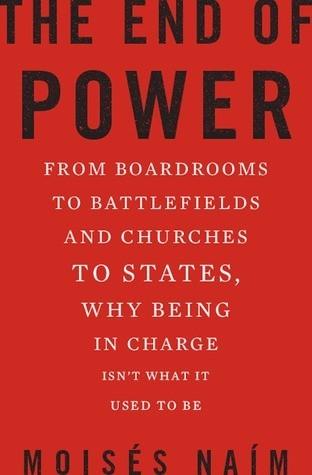
The End of Power: From Boardrooms to Battlefields and Churches to States, Why Being in Charge Isn’t What It Used to Be
by
Moises Naim
Published 5 Mar 2013
If Weber helped us understand the rationale and workings of bureaucracy in the exercise of power, the British economist Ronald Coase helped us understand the economic advantages that they conferred on companies. In 1937, Coase produced a conceptual breakthrough that explained why large organizations were not just rational according to a certain theory of profit-maximizing behavior but, indeed, often proved more efficient than the alternatives. It was no coincidence that, while still an undergraduate, in 1931–1932, Coase carried out the research for his seminal paper, “The Nature of the Firm,” in the United States. Earlier he had flirted with socialism, and he became intrigued by the similarities in organization between American and Soviet firms and, in particular, by the question of why large industry, where power was highly centralized, had emerged on both sides of the ideological divide.20 Coase’s explanation—which would help earn him the Nobel Prize in economics decades later—was both simple and revolutionary.
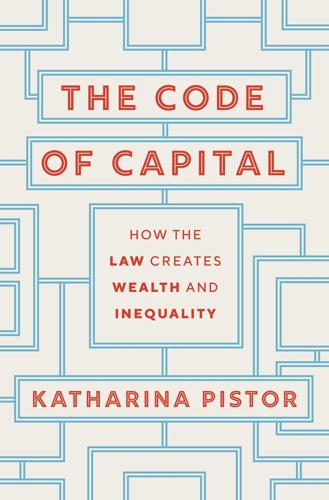
The Code of Capital: How the Law Creates Wealth and Inequality
by
Katharina Pistor
Published 27 May 2019
In this new order, rights are purposefully forged to achieve change and lose at least some of their power once a given purpose has been achieved to make way for new rights and new purposes. Which of these alternatives one prefers will depend largely on one’s view of humans as either self-interested, profit-maximizing individuals, or as social beings capable of self-reflection and collective self-governance. It also depends on one’s idea of freedom—economic freedom devoted to a sole cause, that of efficient resource allocation with the help of the pricing mechanism, or only as a means to an end, the end being individual freedom within a just society.49 These big philosophical debates cannot be resolved here.
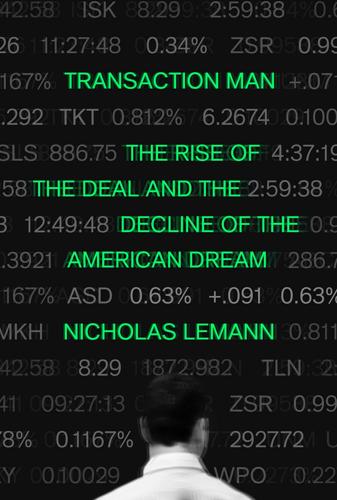
Transaction Man: The Rise of the Deal and the Decline of the American Dream
by
Nicholas Lemann
Published 9 Sep 2019
Everybody, including Jensen, knew about Berle’s theory of the separation of ownership and control, but Jensen and his colleagues didn’t take Berle seriously, because he was not an economist and didn’t use statistics. Most economists, on the other hand, believed that a corporation was an efficient, profit-maximizing entity that would keep growing as long as revenues exceeded costs, and then would stop growing. The more Jensen thought about this, the more his customary reaction to any aspect of the world to which he paid close attention kicked in: It was bullshit! Total crap! Made no sense! Zero! Decades’ worth of economic thinking about corporations was based on a mistake.

The Costs of Connection: How Data Is Colonizing Human Life and Appropriating It for Capitalism
by
Nick Couldry
and
Ulises A. Mejias
Published 19 Aug 2019
Historians have warned us against treating slavery—usually imagined as a premodern practice—in isolation from the development of industrial capitalism. The plantation and the factory coexisted for a long time.24 The treatment of human beings as mere property stimulated the rationalities of profit maximization, accounting precision, and data optimization that we now tend to associate with modern rationality.25 Here is an eloquent description by the historian of the capitalist slave plantation, Edward Baptist: So push a button (with the index finger of your right hand) on the machine of the trading world, and things happen to benefit the man with sterling bills, a huge pile of cotton, a long roster of slaves, abundant credit that allows him to extend his reach across time and space.26 What if comparable processes for abstracting human life are today enabling new, extended forms of economic extraction?
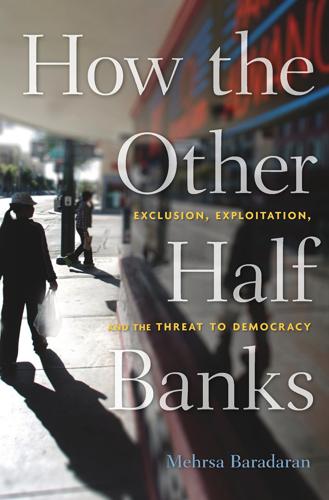
How the Other Half Banks: Exclusion, Exploitation, and the Threat to Democracy
by
Mehrsa Baradaran
Published 5 Oct 2015
Many CDBA supporters confidently assumed that these institutions would not only serve the poor but lend profitably and achieve returns on investments.39 Former Treasury secretary Lawrence Summers envisioned “a successful CDFI [as] perhaps best compared to a niche venture capital firm that deploys its superior knowledge of an emerging market niche to invest and manage risk better than other investors.”40 Summers labeled these banks “market scouts” that would seek out profits in overlooked markets.41 Donald Lash, an early CDBA advocate, claimed that competition in banking would open the way for CDFIs to expand in response to market needs. Lash gave examples of banks whose lending in underserved areas was “surprisingly profitable.”42 The CDFI fund envisioned that modest funds and incentives could induce profit-maximizing institutions to meet the needs of struggling communities without structurally changing the banking framework. Although modeled after ShoreBank’s bold change-the-world mission, the CDBA was not intended to change the business of banking to meet the needs of the poor but to fit the needs of the poor into the business of banking.

Digital Disconnect: How Capitalism Is Turning the Internet Against Democracy
by
Robert W. McChesney
Published 5 Mar 2013
Susan Crawford, “What’s Good for Verizon and AT&T Is Terrible for American Consumers,” Wired Business, July 26, 2012, wired.com/business/2012/07/whats-good-for-verizon-and-att-is-terrible-for-american-consumers. Harold Feld, the telecommunication policy expert for Public Knowledge, wrote that “when every single incentive to profit maximization relies on providing less service for more money and discouraging people from using your service, something is seriously messed up.” Harold Feld, “The Wireless Market Is Seriously Messed Up When Every Incentive Is Anti-Consumer,” Wetmachine, July 24, 2012, tales-of-the-sausage-factory.wetmachine.com/the-wireless-market-is-seriously-messed-up-when-every-incentive-is-anti-consumer. 74.

Overdosed America: The Broken Promise of American Medicine
by
John Abramson
Published 20 Sep 2004
If we are to begin to solve the crises in American medicine, we first need to stop pretending that the current organization of the production and dissemination of medical knowledge is serving the public’s interest. The ideal of “well-ordered science” (a phrase coined by philosopher Philip Kitcher in his book Science, Truth, and Democracy) is often replaced in commercially sponsored medical research by the ideal of profit-maximizing science. Dr. Andrew Bodnar, a senior vice president at Bristol-Myers Squibb, summarized this issue when he told the New York Times, “In a science-driven organization, the notion of marketing versus science is really a false dichotomy.” Disciplined science performed by impartial researchers and openly shared with professional colleagues and the public is often replaced with games of cat and mouse in which corporate sponsors do their best to hide both the ways that their scientific results have been spun, and the results that can’t be spun.
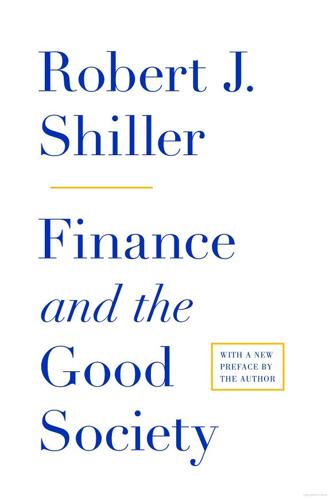
Finance and the Good Society
by
Robert J. Shiller
Published 1 Jan 2012
For nancial theorists, it is often di cult to comprehend the real reasons we have the nancial institutions that we do and the reasons that they contribute so well to a good society. Many theorists have tried to represent people as merely pro t maximizers, perfectly sel sh and perfectly rational about it. But people really do care about their own self-esteem, and profit maximization is at best only a part of that self-esteem. Moral Purpose It might appear that the sleaziness constantly pursued by the regulators is a real taint on the entire profession of nance. But in fact the practice of nance does not universally incline its practitioners to such behavior. It also seems to reward people with a certain kind of moral purpose—one that may be visible to outsiders only intermittently.
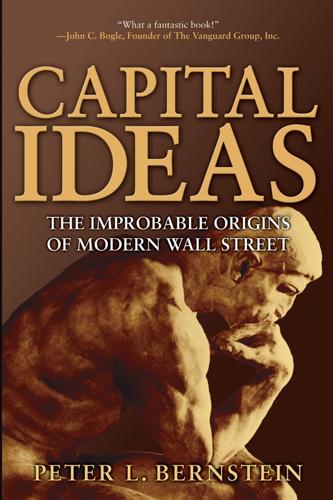
Capital Ideas: The Improbable Origins of Modern Wall Street
by
Peter L. Bernstein
Published 19 Jun 2005
See also Capital Asset Pricing Model; Random price fluctuations; specific types of securities arbitrage Black/Scholes formula of: see Black/Scholes formula earnings ratio efficient markets and future of growth stocks information and interest rates and intrinsic value and manipulation risk and security analysis and shadow transfer trends value differentiation zero downside limit on “Price Movements in Speculative Markets: Trends or Random Walks” (Alexander) “Pricing of Options and Corporate Liabilities, The” (Black/Scholes) Probability theory Procter & Gamble Profit maximization Program trading Prospective yield “Proposal for a Smog Tax, A” (Sharpe) Puts: see Options Railroads RAND Random Character of Stock Prices, The (Cootner) “Random Difference Series for Use in the Analysis of Time Series, A” (Working) Random price fluctuations/random walks selection of securities and “Random Walks in Stock Market Prices” (Fama) Rational Expectations Hypothesis “Rational Theory of Warrant Pricing” (Samuelson) Regulation of markets Return analysis: see Risk/return ratios Review of Economics and Statistics Review of Economic Studies, The “RHM Warrant and Low-Price Stock Survey, The” Risk arbitrage calculations diversification and dominant expected return and minimalization portfolio premium return ratios Rosenberg’s model stock prices and of stocks vs. bonds systematic (beta) trade-offs valuation of assets and “Risk and the Evaluation of Pension Fund Performance” (Fama) Risk-free assets Rosenberg Institutional Equity Management (RIEM) “Safety First and the Holding of Assets” (Roy) Samsonite Savings rates Scott Paper Securities analysis Securities and Exchange Commission Security Analysis (Graham/Dodd) Security selection Separation Theorem Shadow prices “Simplified Model for Portfolio Analysis, A” (Sharpe) Singer Manufacturing Company Single-index model Sloan School of Management Standard & Poor’s 500 index “State of the Art in Our Profession, The” (Vertin) Stock(s) cash ratios common expected return on growth income international legal restrictions on market value variance volatility Stock market (general discussion) Black Monday (October, 1987, crash) “Stock Market ‘Patterns’ and Financial Analysis” (Roberts) Supply and demand theory Swaps Tactical asset allocation theory Tampax Taxes.

The Black Box Society: The Secret Algorithms That Control Money and Information
by
Frank Pasquale
Published 17 Nov 2014
In the digital feudalism of virtual worlds, no one has a right to question the unilateral decision of the ruler. Errors would only have meaning as lost profit opportunities, not as failures to run a competition properly. At its best, Google recognizes itself as a trusted adviser to its users rather than as a purely profit-maximizing entity. And Google is not alone in exercising power over the Internet. Apple, Facebook, Twitter, and Amazon can also rely on opaque technologies, sometimes leaving users in the dark as to exactly why any given app, story, or book is featured at a particular time. We should expect any company aspiring to order vast amounts of information to try to keep its methods secret, if only to reduce controversy and foil copycat competitors.
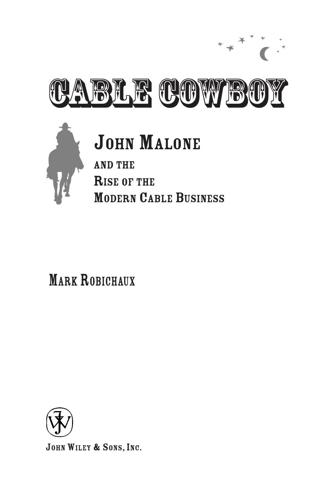
Cable Cowboy
by
Mark Robichaux
Published 19 Oct 2002
They discussed politics, professors, and cars. At Bell Labs in the late 1960s, when many his age were protesting the war in Vietnam or signing up to join it, Malone was focused on large-scale economic modeling. He penned such white papers as “The Impact of Regulation on a Monopoly Firm” and “Profit Maximization at a Regulated Firm,” a plan that called for a radical change in financial strategy at AT&T. It was a massive mathematical model, but the end result was simple. After studying AT&T’s balance sheet for months, Malone concluded that AT&T should be systematically shifting its debt-to-equity ratio to more debt; it should borrow more money and buy back its own stock from the market.

Shadow Libraries: Access to Knowledge in Global Higher Education
by
Joe Karaganis
Published 3 May 2018
These costs were passed on in international markets like South Africa, ensuring low classroom adoption, with adoptions excluding poorer students. This mismatch, in turn, encouraged sharing, photocopying, and other strategies designed to mitigate the cost. Supply Chain Problems The stockholding habits of bookshops also changed as they absorbed the profit-maximizing strategies of the global chains (Horvath 1996). In order to lower the risk of returns, bookshops—both trade and academic—introduced low stockholding strategies, relying on reorders when stock ran out. Academic textbook booksellers developed estimates for the sell-through they expected in particular courses—often as low as 35 percent of students—and stocked this number or less at the beginning of the academic year.
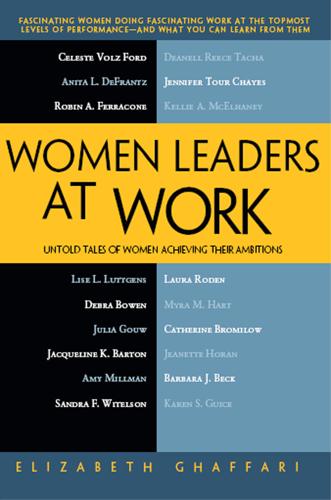
Women Leaders at Work: Untold Tales of Women Achieving Their Ambitions
by
Elizabeth Ghaffari
Published 5 Dec 2011
They’re seeing their raw resources and the rising costs associated with depletion of water or energy or clean air or even human talent—all with direct impacts on their business. They’re seeing the financial reward or punishment of not focusing on the environment and society. They’re seeing employee satisfaction or losing their employees—who today are less interested in the simple focus on profit maximization and more interested in the consequence for society or the environment. I think we are just at the cusp of having this younger generation of people who are now in management and leadership positions and who really want to use the power of corporations to make the world better. Ghaffari: You’ve also said elsewhere that your research is exploring the linkage between diversity and CSR—“using CSR as a hook to re-engage women with business as employees, consumers, and investors.”
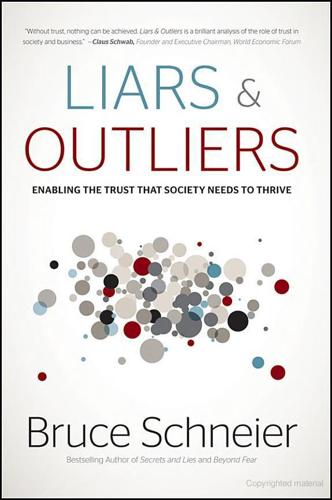
Liars and Outliers: How Security Holds Society Together
by
Bruce Schneier
Published 14 Feb 2012
I'm not trying to say that people use some conscious calculus to decide when to cooperate and when to defect. This sort of idea is the basis for the Rational Choice Theory of economics, which holds that people make trade-offs that are somehow optimal. Their decisions are “rational” not in the sense that they are based solely on reason or profit maximization, but in the much more narrow sense that they minimize costs and maximize benefits, taking risks into account. For example, a burglar would trade off the prospective benefits of robbing a home against the prospective risks and costs of getting caught. A homeowner would likewise trade off the benefits of a burglar alarm system against the costs—both in money and in inconvenience—of installing one.

Culture and Prosperity: The Truth About Markets - Why Some Nations Are Rich but Most Remain Poor
by
John Kay
Published 24 May 2004
So prices will fluctuate less in a market with active speculation than without. 21 Yet speculation in the stock market bubble was obviously destabilizing, driving prices to fantastic levels from which they subsequently collapsed. If all traders were perfectly rational (consistent, Culture and Prosperity { 245} self-interested, profit-maximizing, well-informed), there would be no room for speculation, profitable or unprofitable. To give Friedman's argument a chance of being true, there needs to be a little bit of irrationality-noise trading-but not too much. Noise traders lose money to clever speculators. But if noise traders predominate, then speculators who base their trading on fundamental values risk oblivion as noise traders sell paper to each other at ever higher prices.

The Spider Network: The Wild Story of a Math Genius, a Gang of Backstabbing Bankers, and One of the Greatest Scams in Financial History
by
David Enrich
Published 21 Mar 2017
The adrenaline rush was as much a goal as the fat paycheck. “It’s addictive,” he noted. Then he got to his main theme: Rogue traders and other banking miscreants are products of the system. Toss aside everything you’ve learned about economics, Stenfors advised, the simple, clean world of rational individuals and profit-maximizing institutions. That’s not a realistic reflection of the financial industry—The Hunger Games is more like it. Everyone is acting to enhance his own interest. When other people are no longer useful, you stab them in the back. “It’s not necessarily about money—it’s about winning,” he explained. Normal systems of morals and ethics don’t apply.
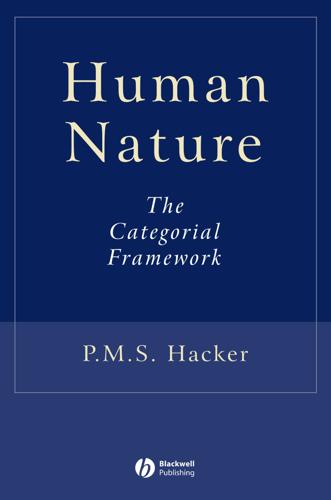
Human Nature: The Categorial Framework
by
P. M. S. Hacker
Published 19 Aug 2007
HNC07 25/04/2007 10:18 AM Page 202 202 Reasons and Explanation of Human Action Faculty of reason Ability to apprehend reasons For things being thus and so (and hence for believing) For ends For (and hence feelings for wanting) Ability to reason For action Deductively Non-deductively and omission Inductively Non-inductively Attitudes Emotions Moods Figure 7.1. Aspects of the powers of reason We distinguish between the rational and the reasonable, although the distinction is not everywhere sharp or clear. Anything reasonable is also rational, but not everything rational is reasonable (‘rational economic man’ in pursuit of profit maximization is not a model of reasonableness). A person is rational to the extent that his reasoning in pursuit of his goals is not swayed by passion and prejudice. But one may be rational in pursuit of foolish, unreasonable or evil goals, if one chooses means appropriate to their attainment. Rationality is closely tied to instrumentality – the choice of efficient means to ends – and to formal correctness in reasoning.
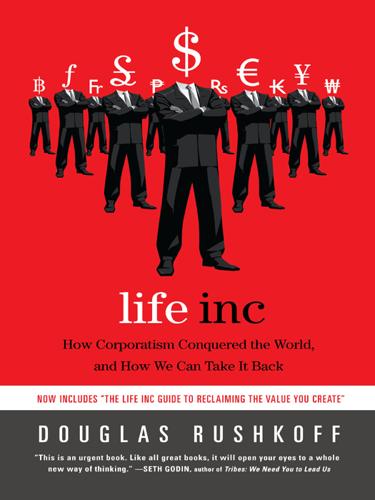
Life Inc.: How the World Became a Corporation and How to Take It Back
by
Douglas Rushkoff
Published 1 Jun 2009
The “selves” we so laboriously constructed and revised over the past four hundred years—though decidedly artificial—seemed real enough to twentieth-century economists, especially as they attempted to apply the scientific model to the softer social sciences. At least economics, like physics, could be expressed in numbers. Unlike Freud’s unconscious ids, economic actors could be tracked on a balance sheet. As a result, however, the entire theoretical framework for economics was built, at least initially, around the assumption of a profit-maximizing individual. It was a leap, but one supported by the decade’s leading psychologists, and one that provided the leaders of the free world with a social model capable of confronting the financial and ideological challenges of managing the postwar industrial economy. While the Soviets struggled to build a centralized bureaucracy that could administrate the needs of all people, free economies turned to the market.
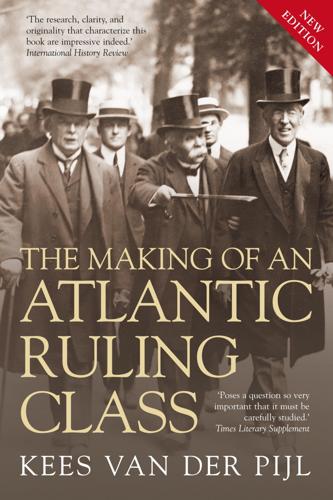
The Making of an Atlantic Ruling Class
by
Kees Van der Pijl
Published 2 Jun 2014
Etty and Tudyka, pp. 386–387. 79. K. Busch, Die multinationalen Konzerne. Zur Analyse der Weltmarktbewegung des Kapitals, Frankfurt 1974, pp. 136–137; Ch. Layton, L’Europe et les investissements américains, Paris 1968 (1966), p. 41. 80. Calculated from Kragenau, pp. 94–95, table A.1.7. 81. J.R. Hiller, ‘Long-Run Profit Maximization? An Empirical Test’, Kyklos, vol. 31 no. 3 (1978), p. 484. 82. H. Levy and M. Sarnat, ‘Devaluation Risk, Portfolio Balance and International Capital Flows’, Konjunkturpolitik, vol. 22 no. 5 (1976), p. 314. 83. Fortune, March 1961, p. 88. 84. Fortune, September 1957, p. 181; January 1958, p. 125; July 1962, pp. 149–150. 85.
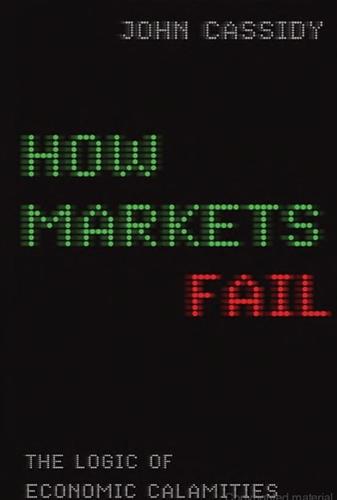
How Markets Fail: The Logic of Economic Calamities
by
John Cassidy
Published 10 Nov 2009
It can even be argued that the Department of Defense, through its finance of research into integrated circuits during the 1950s and ’60s, was primarily responsible for the rise of the personal computer industry. The Pentagon’s Republican defenders would never admit it, but one of its main contributions to the strength and well-being of the United States has been in providing it with a surrogate industrial policy. Freed from the threat of free riders and the imperatives of short-term profit maximization, scientists and companies working for the U.S. military have created many of the technologies on which the country’s prosperity is now based. Whether by design or accident, the military-industrial complex, which President Eisenhower warned his countrymen about half a century ago, has arguably done more to encourage scientific research than the entire private sector of the U.S. economy.

Pedigree: How Elite Students Get Elite Jobs
by
Lauren A. Rivera
Published 3 May 2015
They compared the top salaries offered at EPS firms to those of the lowest-paying jobs, perhaps because these are the distinctions commonly made by the staff of campus career services offices and circulated in student lore.15 For many students, the choice seemed to be one between living large—earning huge salaries and pursuing a fast-paced, glamorous lifestyle—or going broke—earning tiny salaries and eking out a dull existence. Thus, the decision to choose Wall Street over Main Street was not a purely instrumental one based solely on profit maximization. It was also a social and cultural choice. Students saw themselves as poised at a crossroad, choosing between the upper and middle ranks of the American class structure. Many wanted to ensure a spot in the former. Large numbers of new graduates from elite institutions cluster in major metropolitan centers such as New York, Boston, San Francisco, Chicago, and Washington, DC.
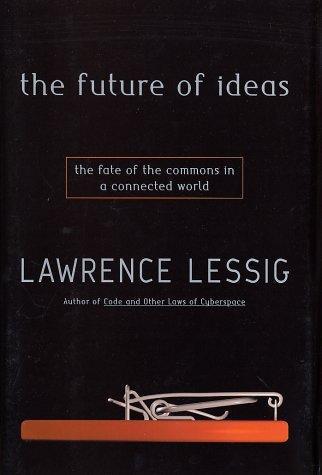
The Future of Ideas: The Fate of the Commons in a Connected World
by
Lawrence Lessig
Published 14 Jul 2001
,” Journal of Law & Economics 41 (1998): 529; Hazlett, “Spectrum Flash Dance: Eli Noam's Proposal for 'Open Access' to Radio Waves,” Journal of Law & Economics 41 (1998): 805; Hazlett and Sosa, “Was the Fairness Doctrine a 'Chilling Effect'? Evidence from the Postderegulation Radio Market,” Journal of Legal Studies 26 (1997): 279; Hazlett, “The Rationality of U.S. Regulation of the Broadcast Spectrum,” Journal of Law & Economics 23 (1990): 133. 17 See, e.g., Hazlett, “Spectrum Flash Dance,” 816. (“Profit maximization will force competitive band managers to devise better technical means to increase wireless communications traffic.”) 18 The source of the skepticism is traced, as Yochai Benkler describes, to Claude E. Shannon, “Communication in the Presence of Noise,” Proceedings of the IRE 37 (1949): 10, and Claude E.
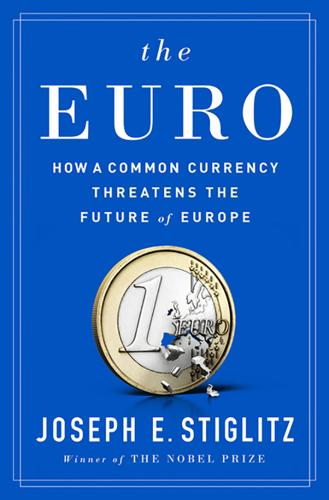
The Euro: How a Common Currency Threatens the Future of Europe
by
Joseph E. Stiglitz
and
Alex Hyde-White
Published 24 Oct 2016
VALUES: SOCIAL JUSTICE AND THE IMPORTANCE OF COLLECTIVE ACTION Some of the privatizations, such as those involving basic services, raise questions of values: a society may feel that there is a basic right to minimal access to water or electricity, rights and values that might be undermined by a profit-maximizing monopolist. Labor rights and worker protections illustrate other aspects of the struggle over values. Some have questioned whether the programs that have been imposed on the countries in crisis have gone beyond those designed to increase economic performance. Not content with an approximately one-fifth decline in labor costs in Greece,24 it appears that the Troika wants to weaken workers’ bargaining rights, which would lead to still lower wages.
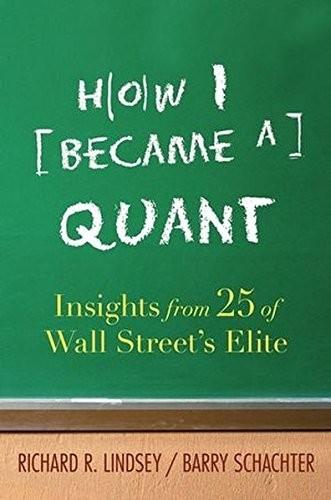
How I Became a Quant: Insights From 25 of Wall Street's Elite
by
Richard R. Lindsey
and
Barry Schachter
Published 30 Jun 2007
That was perhaps a good thing, since the nature of my high school was such that no further science courses were offered, anyway. Fortunately, both my high school and college offered a reasonable collection of math courses, completely liberated from physics and engineering as the default applications. Thus, my first encounter with applied calculus was in a high school business class, where we were trying to find the profit-maximizing quantity that a monopolist would offer to the market. My first exposure to vector operations involved the inner product of a list of prices and quantities. And so on . . . All in all, not a bad starting point for what I would be doing later, but I have found that whenever people try to illustrate mathematical concepts with “helpful” examples from the physical world around us, I generally do better by politely ignoring them and narrowly sticking to the concepts themselves or trying to come up with my own intuition rooted in the world of money.
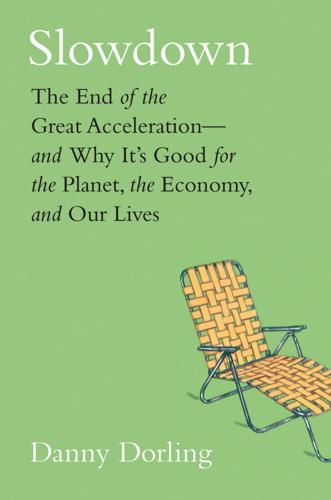
Slowdown: The End of the Great Acceleration―and Why It’s Good for the Planet, the Economy, and Our Lives
by
Danny Dorling
and
Kirsten McClure
Published 18 May 2020
But eventually such a giant Ponzi scheme has to fail, because only a tiny minority can ever be rich if we live our lives this way. The rich may not have realized the long-term folly for them of lending money to people to get an education and learn how the world works better than the rich understand, people who are usually so focused on short-term profit maximization. Some say that a national economy based on debt is essential if pension funds are to grow for the minority of people who have decent private pensions, but a debt-based economy has no mechanism for providing adequate pensions for all. Most people in an unequal affluent society enter their old age in a state of modest to acute poverty, looking forward to a retirement of even greater poverty.

Mastering Private Equity
by
Zeisberger, Claudia,Prahl, Michael,White, Bowen
,
Michael Prahl
and
Bowen White
Published 15 Jun 2017
Exhibit 4.6 PE Value-add: Carve-out PRIVATIZATION: Government privatization programs provide a rich source of targets for buyout funds. Significant value can be unlocked in state-owned institutions by updating the company’s business model, reducing cost inefficiencies systemic in the public sector, providing fresh resources for growth and focusing management on profit maximization; non-financial goals traditionally pursued by state-owned businesses may be sacrificed in the process (Exhibit 4.7). PE firms can also add value by replacing dated decision-making processes with an updated governance structure that empowers employees throughout the organization. Exhibit 4.7 PE Value-add: Privatization FAMILY BUSINESS: Privately owned family businesses13 are a popular target for buyout funds, as external management teams installed by a fund can rapidly professionalize a business and drive value creation (Exhibit 4.8).
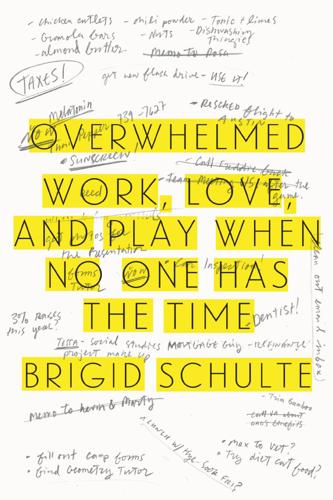
Overwhelmed: Work, Love, and Play When No One Has the Time
by
Brigid Schulte
Published 11 Mar 2014
He himself blocks off time on his calendar to have lunch with his son at his elementary school and takes his daughter to violin lessons every Friday. “Sometimes I read these stories about companies cutting back on flexible work and I feel like I’m on another planet,” he said. “From my perspective, I tend to think of them as poor profit maximizers and poor managers. Securing top talent is the coin of the realm. When someone comes to me and says, ‘I’ve got all these skills and, by the way, I want to work from home one day a week,’ my response is, ‘Is that all?’” The Cambridge Innovation Center in Massachusetts, the largest flexible office facility in the Boston area, houses more than four hundred start-ups, small business, and high-tech firms.

People, Power, and Profits: Progressive Capitalism for an Age of Discontent
by
Joseph E. Stiglitz
Published 22 Apr 2019
The fear is that Big Data and AI will allow firms to have near perfect insight into these dynamics, and adjust their practices accordingly to maximize profits. Big Data is also invaluable in many areas of research. The more data a genetics firm has, the better able it is to analyze an individual’s DNA and to detect the presence of certain genes. Profit-maximizing firms thus want to gather as much data on individuals as they can—and not to share that data. In this pursuit of profits, lives lost are just another form of collateral damage, as the following story illustrates. Beginning in 1990, there was a great international effort to decode the human gene sequence, the Human Genome Project.
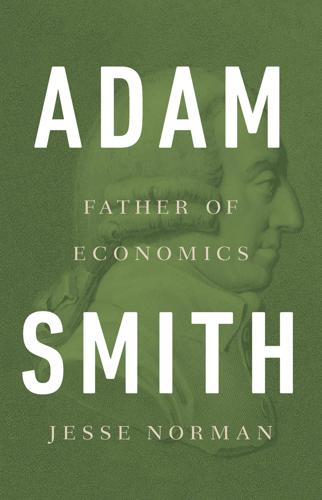
Adam Smith: Father of Economics
by
Jesse Norman
Published 30 Jun 2018
These arguments were made especially loudly in the worlds of finance and banking. By contrast, as the economist Julie Nelson has argued, the household has been implicitly seen in ways akin to older views of the environment: as an unlimited source of human value, a place of nurturing and love, governed not by greed and profit-maximization but by norms of cooperation, care and altruism. These oppositions between economy and household and male and female have sometimes, it appears, been reinforced by economic statistics. To take a notorious example, the official calculation of GDP in the UK and USA and many other countries around the world is based on measuring the number and size of transactions for payment.
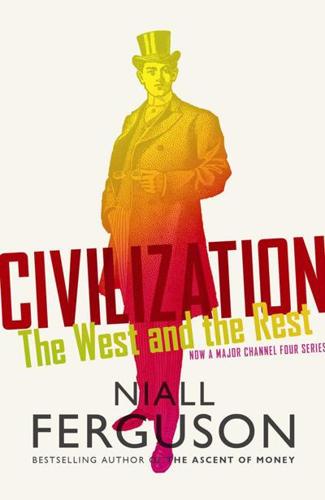
Civilization: The West and the Rest
by
Niall Ferguson
Published 28 Feb 2011
Only the steepness of the line varies.11 The political and economic structures made by humans share many of the features of complex systems. Indeed, heterodox economists such as W. Brian Arthur have been arguing along these lines for decades, going far beyond Adam Smith’s notion of an ‘Invisible Hand’, seeming to guide multiple profit-maximizing individuals, or Friedrich von Hayek’s later critique of economic planning and demand management.12 To Arthur, a complex economy is characterized by the interaction of dispersed agents, a lack of any central control, multiple levels of organization, continual adaptation, incessant creation of new market niches and no general equilibrium.
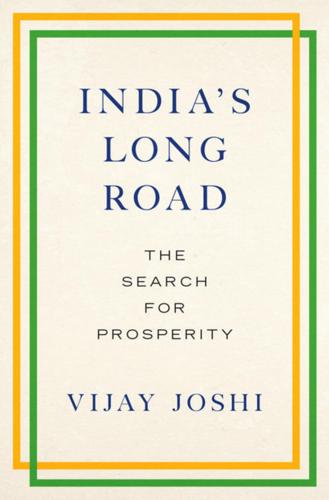
India's Long Road
by
Vijay Joshi
Published 21 Feb 2017
But it should pay for and produce public goods, in either of the above categories, only when it is likely to be more efficient than the private sector in production.27 This could be so when it is impossible or very complicated to contract production out to the private sector, or when contracting would involve the private sector in a very severe conflict between profit maximization and fulfilling the terms of the contract (in which case the profit motive is likely to win). Are there then goods and services that the public sector, and only the public sector, should finance as well as produce, through civil servants and government employees? Yes, certainly. The list would surely include the following items among others: law and order; administration of justice; protection of contracts and property rights; external defence;28 macroeconomic stability, including financial and banking stability; indicative planning and coordination, where justified; maintenance of competition and other ‘rules of the road’ for market functioning; administration of taxes and subsidies; income redistribution, including identification of the poor; environmental regulation; and the vast area of regulation of private sector activities, more generally.29 Note that the above list does not include public goods and services, conventionally so called, such as health care, education, transport, and electricity.

The Future of the Internet: And How to Stop It
by
Jonathan Zittrain
Published 27 May 2009
A mainstream dominated by non-generative systems will harm innovation as well as some important individual freedoms and opportunities for self-expression. However, generative and non-generative models are not mutually exclusive. They can compete and intertwine within a single system. For example, a free operating system such as GNU/Linux can be locked within an information appliance like the TiVo, and classical, profit-maximizing firms like Red Hat and IBM can find it worthwhile to contribute to generative technologies like GNU/Linux.1 Neither model is necessarily superior to the other for all purposes. Moreover, even if they occupy a more minor role in the mainstream, non-generative technologies still have valuable roles to serve.
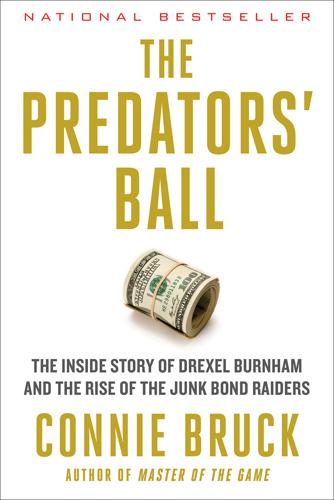
The Predators' Ball: The Inside Story of Drexel Burnham and the Rise of the JunkBond Raiders
by
Connie Bruck
Published 1 Jun 1989
These are some of Scherer’s findings, from his case studies and statistical research: • Contrary to the Council’s view that merger-makers sought companies where management had failed, most in fact targeted well-managed entities (such as National Can). What they were generally attracted by was not sick companies or slipshod management but undervalued assets. • Takeovers by firms with no managerial expertise in the acquired company’s line of business tended to impair, not improve, efficiency. • Takeovers frequently led to short-run profit-maximizing strategies, such as the “cash cow” strategy under which “a business is starved of R&D, equipment modernization, and advertising funds, and/or prices are set at high levels inviting competitor inroads, leaving in the end a depleted, non-competitive shell.” • On average, acquisitions were less profitable for the acquiring firms than the maintenance of existing businesses and the internal development of new business lines
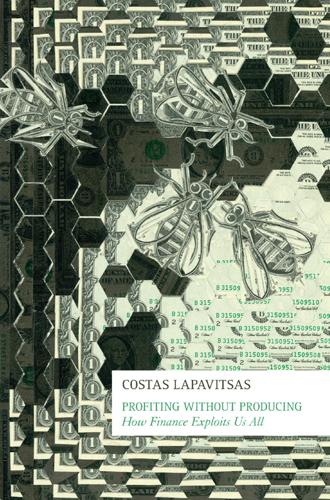
Profiting Without Producing: How Finance Exploits Us All
by
Costas Lapavitsas
Published 14 Aug 2013
It took longer for mainstream economics to appreciate the importance of separating ownership from control, though in recent years the separation has become a standard feature of microeconomic analysis under the guise of the opposition between principal (owner) and agent (manager).32 The essential notion behind this literature is simple: the agent has considerable independence of decision-making and could therefore pursue interests that are different from those of the principal. Agent independence could ostensibly result in actions that are inconsistent with profit maximization, hence creating inefficiency. This view lies at the heart of the ideology of ‘shareholder value’ which has characterized the rise of financialization. Summarily put, economic efficiency requires that the interest of principals should be paramount in the running of joint-stock enterprises, which means that enterprises ought to guide activities with an eye to the value of shares in the stock market.

Global Spin: The Corporate Assault on Environmentalism
by
Sharon Beder
Published 1 Jan 1997
Foreword The book you are holding is the first I have come across to deal with the real environmental crisis—the one that consists not of decaying eco-systems, ozone depletion and global warming, but of the corporate domination of what we are able to hear, see, know and think; the crisis that lies in the fact that the modern mass media system is not a medium for the ‘free’ discussion of ideas and viewpoints, but is deeply embedded in, and dependent on, the wider corporate status quo, and on the related capacity of corporate communications and economic power to boost facts, ideas and political choices that are conducive to profit maximization, and to stifle those that are not. In this situation, specific environmental issues can hardly be considered the central—let alone the sole—problem for environmentalists, given that corporate domination makes the raising of public awareness and concern for these issues all but impossible. After all, it hardly matters whether a person is bleeding to death, poisoned, or dying from hypothermia, if some kind of obstacle is preventing all medical aid from reaching the patient.
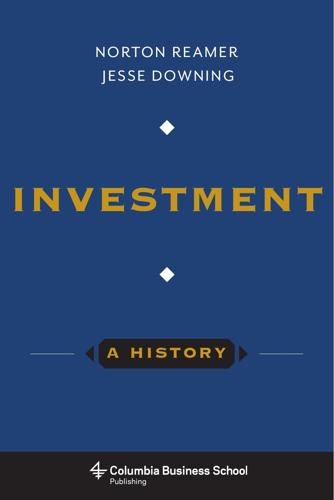
Investment: A History
by
Norton Reamer
and
Jesse Downing
Published 19 Feb 2016
Their investment mandate was fairly broad, initially being confined New Clients and New Investments 135 to government bonds but later including mortgages, utility debt, and even the common equity of large corporations.42 These savings banks tended to be domiciled in the northeastern United States, where the demographics of a large swath of wage earners employed in industrial jobs were an appropriate match for their intended clients. Developing alongside mutual savings banks were the commercial banks, which were focused predominantly on making loans for profit maximization and had a strong foothold on the frontier portions of the country. The commercial banks required lower capitalization, and their governance structures were not as sophisticated as those of mutual savings banks, where prominent and successful trustees would oversee the soundness of the bank.

More: The 10,000-Year Rise of the World Economy
by
Philip Coggan
Published 6 Feb 2020
Systems where the individual farmer or peasant has strong ownership rights over his or her land seem to be the best for agricultural productivity; only then will they make the long-term investments needed to improve yields. A study of land rights in three developing countries concluded that “if property rights are absent and if land tenancy is insecure, farmers do not care much about the land use”.9 Instead, they “concentrate on short term profit maximizing at the cost of accelerating the degradation of land”. Some of the worst famines in the 20th century were related to the collectivisation of farm land in China and the Soviet Union.10 Between 1973 and 1992, when Peru’s farming was collectivised, its agricultural production rose 24%. Don’t be too impressed: once the collective farms were dismantled, it rose 170%.11 The land structure of earlier eras was probably one of the most important reasons why economic growth was so slow to get going.
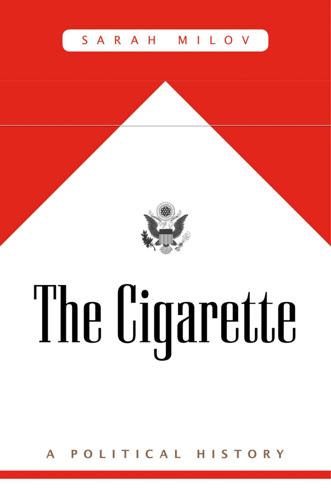
The Cigarette: A Political History
by
Sarah Milov
Published 1 Oct 2019
In terms that would have been familiar to Frederick Winslow Taylor as he observed pig iron handlers, the president continued: “one man does what two and a half would be doing if we still allowed smoking.”70 Ambient tobacco smoke represented a silent drain on company resources—a metaphor, perhaps, for the hidden costs of smokers themselves. The metaphor was made real by insurance companies that began to selectively sell some policies at reduced rates to nonsmokers. Anti-tobacco forces greeted what was a profit maximization strategy for insurance companies as if it were a revelation about the worth of smokers and nonsmokers. “The data show conclusively that nonsmokers pay more than their share for the smoking habits of others,” Weis wrote in a 1985 how-to volume titled The Smoke-Free Workplace. “This amounts to grand larceny!”

Corporate Warriors: The Rise of the Privatized Military Industry
by
Peter Warren Singer
Published 1 Jan 2003
Moreover, neither has complete information about the other's exact goals or behavior. Thus, the complexities of the agency relationship consist of the principal's reliance on an agent with its own agenda.1 With PMFs, clear tensions always exist between the security goals of clients and the firms' desire for profit maximization. For governments, the public good and the good of the private companies arc not identical. Firms may claim that they only act in their client's best interest and that their staff, (in some cases primarily retired military officials), are highly trustworthy. But the locus of judgments about military action has changed, as well has the underlying motives.

Good Economics for Hard Times: Better Answers to Our Biggest Problems
by
Abhijit V. Banerjee
and
Esther Duflo
Published 12 Nov 2019
It is often precisely because governments do things the market will not touch that they become susceptible to corruption. Take the example of a fine for polluting. The polluter would gladly pay someone in the pollution control office a portion of the fine to make the evidence go away. But would things improve if a profit-maximizing private firm was collecting fines? Probably not, since they like money at least as much. Moreover, as the history of private tax collection (“tax farming”) tells us, incentivizing private agents to collect taxes (or fines) runs the risk they will extort those who are not liable as well. Or consider a slot in the best public schools.
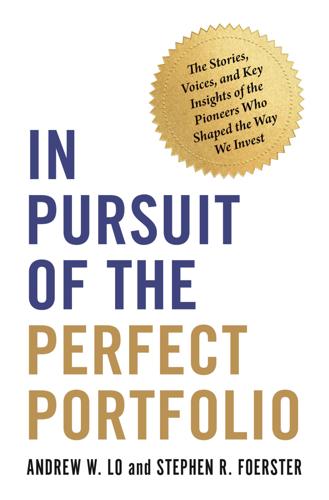
In Pursuit of the Perfect Portfolio: The Stories, Voices, and Key Insights of the Pioneers Who Shaped the Way We Invest
by
Andrew W. Lo
and
Stephen R. Foerster
Published 16 Aug 2021
Fama created a phrase for the ages when he wrote “efficient market hypothesis” in a paper for the University of Chicago Business School, later republished as the 1965 Financial Analysts Journal article “Random Walks in Stock-Market Prices.”27 In that article, as Fama originally put it, “on the average, competition will cause the full effects of new information on intrinsic value to be reflected ‘instantaneously’ in actual prices.” An efficient market was one “where there are large numbers of rational profit-maximizers actively competing, with each trying to predict future market values of individual securities, and where important current information is almost freely available to all participants.… Actual prices of individual securities already reflect the effects of information based on events that have already occurred.… In other words, in an efficient market at any point in time the actual price of a security will be a good estimate of its intrinsic value.”

The Color of Money: Black Banks and the Racial Wealth Gap
by
Mehrsa Baradaran
Published 14 Sep 2017
He was clear, however, that black business and black wealth were not the panacea against racial inequality that Washington believed them to be. He denounced the black community’s belief in “wealth as a remedy for every social ill," advocating instead for black cooperative enterprise with a focus on community building as opposed to profit maximizing.47 Nevertheless, with no apparent hesitation, Du Bois promoted black enterprise. He was the first black scholar to conduct a comprehensive study of black business. In his seminal 1899 study The Negro in Business, Du Bois remarked, “It is hardly possible to place too great stress on the deep significance of business ventures among American Negroes."

The Relentless Revolution: A History of Capitalism
by
Joyce Appleby
Published 22 Dec 2009
They fled into the recesses of the forests or killed themselves when the Portuguese attempted to coerce them to work. It was more plunder than production, as one scholar commented, and when it was over, the Portuguese in Brazil turned to the sugar production that they had mastered closer to home.7 Breaches on the Spanish Lake Nowhere is the profit-maximizing imperative of capitalism more in evidence than in the sugar sweep in Europe’s New World colonies. Columbus carried sugarcane slips to the Caribbean on his second trip. Spanish authorities back home encouraged their cultivation, but the colonists themselves were more interested in precious metals.
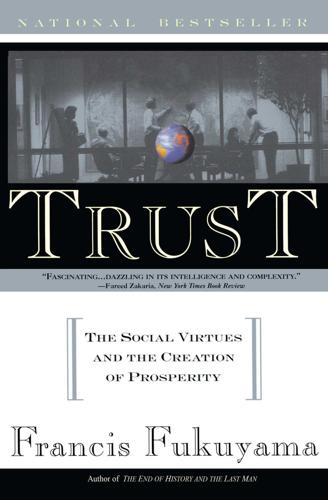
Trust: The Social Virtue and the Creation of Prosperity
by
Francis Fukuyama
Published 1 Jan 1995
They continue to expand until the costs of large size begin to exceed the savings from these transaction costs. That is, large organizations suffer from diseconomies of scale: the free rider problem becomes more severe the larger the organization becomes;15 they are prone to agency costs, where the firm’s bureaucracy develops a stake in its own survival rather than profit maximization; and they suffer from information costs when managers lose track of what is happening in their own organizations. In Williamson’s view, the multidivisional corporation, which was pioneered by American corporations at the beginning of the twentieth century, was an innovative response to this problem that combined the transaction cost economies of integration with decentralized, independent profit centers.16 It should be clear, however, that the Japanese keiretsu is another innovative solution to the problem of scale.
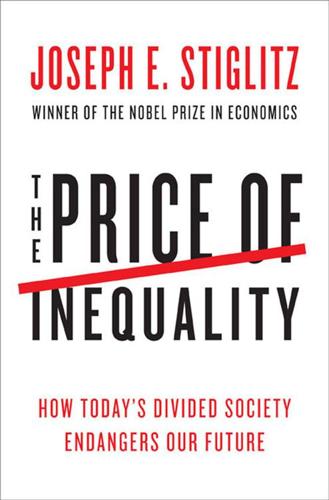
The Price of Inequality: How Today's Divided Society Endangers Our Future
by
Joseph E. Stiglitz
Published 10 Jun 2012
The company also did not provide the disclosures necessary for full compatibility as new versions of Windows were developed. And most cleverly, it offered Internet Explorer at a zero price—free, bundled in as part of its operating system. It’s hard to compete with a zero price. Netscape was doomed.36 It was obvious that selling something at a zero price was not a profit-maximizing strategy—in the short run. But Microsoft had a vision for the long run: the maintenance of its monopoly. For that, it was willing to make short-run sacrifices. It succeeded, but so blatant were its methods that courts and tribunals throughout the world charged it with engaging in anticompetitive practices.
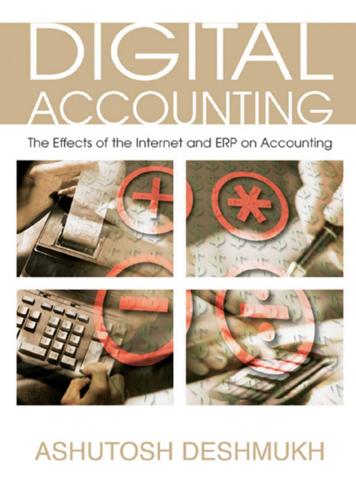
Digital Accounting: The Effects of the Internet and Erp on Accounting
by
Ashutosh Deshmukh
Published 13 Dec 2005
Retrieved August 17, 2003, from www.cfoproject.com/ Optimizing your IT investments with SAP business packages for mySAP enterprise portal (mySAP Enterprise Portal Brief). (2003). SAP. Retrieved August 10, 2003, from www.sap.com/ Oracle performance analyzer 11i (data sheet). (2003). Oracle. Retrieved August 10, 2003, from www.oracle.com/ Profit management by pricing and profit maximization (SAP white paper). (2003). SAP. Retrieved August 10, 2003, from www.sap.com/ Roth, R. (2000, February). Capitalize on virtual close. Financial Executive, 45-46. SAP: The evolution of finance and the enterprise (white paper). (2003). The CFO Project. Retrieved August 10, 2003, from www.cfoproject.com/ Saran, C. (2000, November).

The Technology Trap: Capital, Labor, and Power in the Age of Automation
by
Carl Benedikt Frey
Published 17 Jun 2019
In contrast, Whitworth maintained that sufficient uniformity would be impossible to achieve, so that hand labor would always be needed for fitting purposes.10 Great technological leaps are by definition rare, and it was another half century before Ford proved Colt right. Ford was the first to demonstrate that minimizing costs and maximizing production was a profit-maximizing strategy, allowing companies to tap into a seemingly unlimited consumer market. But as Hounshell has noted, this strategy required better machines that made it possible to produce uniform parts. Well aware of the assembly problems associated with interchangeable parts not being identical, Ford’s engineers made accuracy the prime machine-tool requirement.
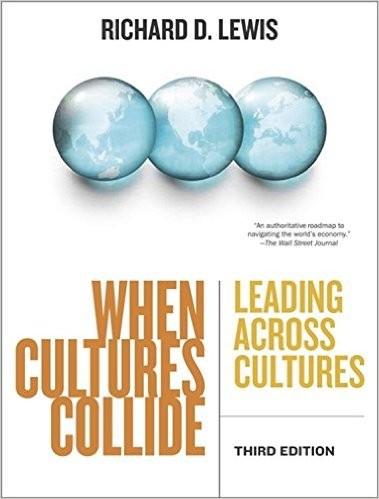
When Cultures Collide: Leading Across Cultures
by
Richard D. Lewis
Published 1 Jan 1996
Western Southeast Asian Love of individualism Personal ego Fondness for the collective Personal interests subordinated to the group Security and harmony Achievements must contribute to group goals Cooperation, restraint, adaptation to the other Life is a challenge Achievement and self-actualization goals Competitiveness, aggression, direct confrontation (continued) 452 WHEN CULTURES COLLIDE Western Southeast Asian (continued) Overt action Persuasion, argument, competition Subtle, sometimes ambiguous action Persuasion is presumptuous, Asians seek common ground, sharing Social and cultural change is evolutionary Internal rewards Sensitive to social pressures Face saving, face giving define behavior Technological change is rapid External rewards Profit-sensitive Law, contractual obligations define behavior Western banter, familiarity, nicknames Delegate to professionals Meritocracy Planning top down Management goals: ✦ profit maximization ✦ organizational efficiency ✦ high productivity Politeness, gentleness, low voice, social rank, mutual respect Delegate to kinship Patronage system Policies and guidelines top down, tactical plans bottom up Management goals: ✦ social responsibility ✦ harmonious work atmosphere ✦ high performance seen as ruthless The differences are striking.

Extreme Money: Masters of the Universe and the Cult of Risk
by
Satyajit Das
Published 14 Oct 2011
Locust Plagues At the 2007 Super Return annual industry conference, the financier Henry Kravis argued that private equity “leads not only to value creation, but also to economic and social benefits, for example, increases in employment, innovation, and research and development.”5 The reality was short-run profit-maximizing strategies where businesses were “starved of R&D, equipment modernization and advertising funds and/or prices are set at high levels inviting competitor inroads, leaving in the end a depleted non-competitive shell.”6 Under Terra Firma, EMI was not interested in developing new artists but exploiting its existing libraries.
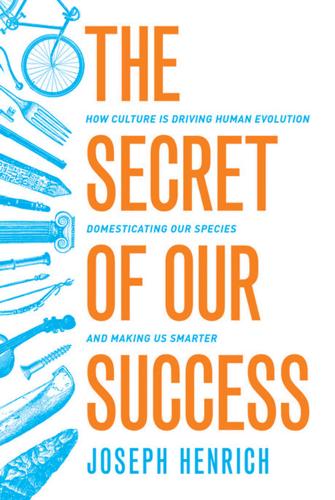
The Secret of Our Success: How Culture Is Driving Human Evolution, Domesticating Our Species, and Making Us Smarter
by
Joseph Henrich
Published 27 Oct 2015
First, the MBAs didn’t use the additional information available in the second treatment (with posted performances) in the complex and sophisticated way economic theory assumes. Instead, careful analysis shows that many participants were merely copying (“mimicking”) the investment allocations made by the top performers in the previous round. Second, the environment of this experiment is simple enough that one can actually calculate the profit-maximizing investment allocations. This optimal allocation can be compared with where participants actually ended up in round 16 for each of the two versions. Left only to their own individual experience, the MBAs ended up very far away from the optimal allocation—thus, poor overall performance. However, in the second treatment, when they mimicked each other’s investments, the group zeroed in on the optimal allocation by the end of the game.

Termites of the State: Why Complexity Leads to Inequality
by
Vito Tanzi
Published 28 Dec 2017
When a house is on fire, the firefighters cannot base their action on whether the owners should have been more careful, or whether the rescue will encourage less prudent behavior in the future. It is more rational to require fire detectors in the houses. The way in which the compensation contracts of some of those who manage the banks or other large enterprises are now written often encourages them to pursue short run, profit-maximizing strategies that may add to the risks and may make their operations socially less efficient. If the strategies succeed as intended, they will be advantageous to the managers, who will get higher compensation, and also to the shareholders, whose shares or dividends will increase. If the strategies fail, the costs will in part be borne by the workers, who will lose jobs, by the citizens, who may have to pay the tab, and by the banks’ shareholders.

Power and Progress: Our Thousand-Year Struggle Over Technology and Prosperity
by
Daron Acemoglu
and
Simon Johnson
Published 15 May 2023
An additional implication of these considerations is the greater room for agency and choice that they create among powerful actors. In the simplest political economy approaches, institutional factors work primarily by changing market incentives and technology, and wage policies of firms are largely dictated by profit maximization. This is no longer the case when ideas and visions matter. In this case, as influential visions shift, there can be major changes in the direction of innovation and rent-sharing patterns, altering how productivity gains are distributed within society. Our framework combines these four building blocks.

Slouching Towards Utopia: An Economic History of the Twentieth Century
by
J. Bradford Delong
Published 6 Apr 2020
As Goldin wrote, once firms had established personnel departments with centralized human resource policies, they discovered that many women would not remain on the job long enough to take advantage of the regular wage increases that come with efficient, strong performance and loyalty to the firm. Then why reward the atypical woman who did remain on the job with those increases? This is not to say that all pay discrimination has been in service of firms’ profit maximizing. Naked prejudice certainly played a role—prejudice on the part of male workers, employers, and customers. Male workers, for example, fearing competition, tried to bar women from their occupations. From today’s perspective, the most surprising thing about the transformation of the role of women in the economy is how long it took.

PostGIS in Action
by
Regina O. Obe
and
Leo S. Hsu
Published 2 May 2015
To see the ever-growing list of algorithms available (or to contribute your own), visit the main pgRouting site at http://pgrouting.org. For large networks, don’t forget to add spatial indexes to your table prior to executing any algorithms. The shortest-route problem is a general class of cost-minimizing or profit-maximizing problems. What you define as cost or profit is entirely up to you. Don’t limit yourself to traditional measures. Be creative. For example, you can easily download a table of calories from your local McDonald’s, group the food items into sandwiches, drinks, and sides, and query for the least fattening meal you can consume, provided that you must order something from each group—the McRouting problem. 16.1.3.
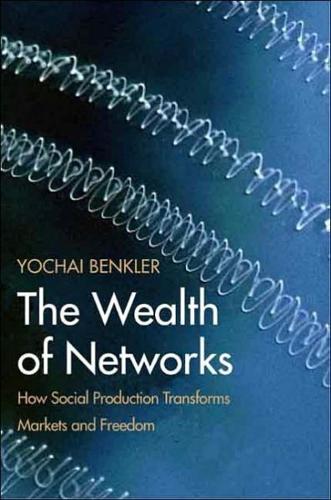
The Wealth of Networks: How Social Production Transforms Markets and Freedom
by
Yochai Benkler
Published 14 May 2006
A new channel that is added will more often try to take a bite out of a large pie represented by some lowest-commondenominator audience segment than to try to serve a new niche market. Only after a relatively high threshold number of outlets are reached do advertiser-supported media have sufficient reason to try to capture much smaller and higher-intensity preference clusters--what people are really interested in. The upshot is that if all storytellers in society are profit maximizing and operate in a market, the number of storytellers and venues matters tremendously for the diversity of stories told in a society. It is quite possible to have very active market competition in how well the same narrow set of stories are told, as opposed to what stories are told, even though there are many people who would rather hear different stories altogether, but who are in clusters too small, too poor, or too uncoordinated to persuade the storytellers to change their stories rather than their props. 311 The networked information economy is departing from the industrial information economy along two dimensions that suggest a radical increase in the number of storytellers and the qualitative diversity of stories told.
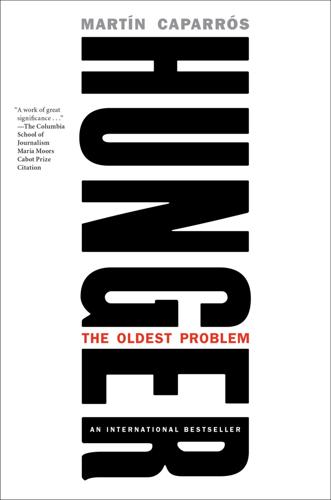
Hunger: The Oldest Problem
by
Martin Caparros
Published 14 Jan 2020
When we met at a bar to talk about his work, his iPad was face up on the counter right next to him. I watched as numbers actively jumped around like something out of the The Matrix. It was Diego’s job to be a fortune-teller of data, of being able to predict how markets were going to behave before anybody else did—supply of grain X, demand for grain Y—to advise on profit maximizing purchases and sell for his corporation. To do this, he needed to absorb huge amounts of information, but since it wasn’t possible to keep up with every detail about what might influence prices, he focused on data that displayed behavioral patterns of the market, doing his best to glean any hint that those patterns might shift.
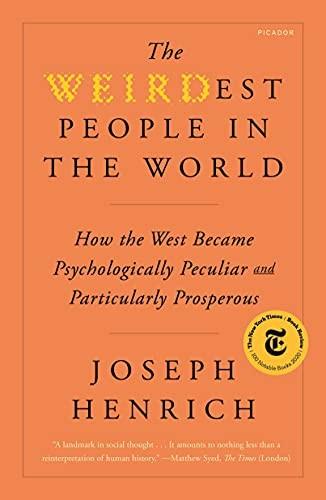
The WEIRDest People in the World: How the West Became Psychologically Peculiar and Particularly Prosperous
by
Joseph Henrich
Published 7 Sep 2020
Lecture on the influence of commerce on manners. In D. B. Klein (ed.), Reputation: Studies in the Voluntary Elicitation of Good Conduct (pp. 17–20). Ann Arbor: University of Michigan Press. Smith, C. E. (1972). Papal Enforcement of Some Medieval Marriage Laws. Port Washington, NY: Kennikat Press. Smith, D. N. (2015). Profit maxims: Capitalism and the common sense of time and money. Current Perspectives in Social Theory 33, 29–74. Smith, K., Larroucau, T., Mabulla, I. A., and Apicella, C. L. (2018). Hunter-gatherers maintain assortativity in cooperation despite high-levels of residential change and mixing. Current Biology 28 (19), P3152–P3157.E4.
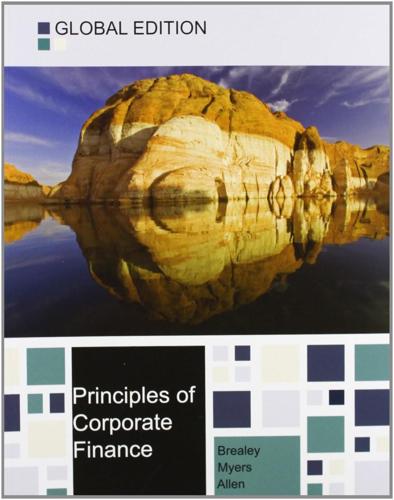
Principles of Corporate Finance
by
Richard A. Brealey
,
Stewart C. Myers
and
Franklin Allen
Published 15 Feb 2014
We have suggested that shareholders want to be richer rather than poorer. But sometimes you hear managers speak as if shareholders have different goals. For example, managers may say that their job is to “maximize profits.” That sounds reasonable. After all, don’t shareholders want their company to be profitable? But taken literally, profit maximization is not a well-defined financial objective for at least two reasons: 1. Maximize profits? Which year’s profits? A corporation may be able to increase current profits by cutting back on outlays for maintenance or staff training, but those outlays may have added long-term value. Shareholders will not welcome higher short-term profits if long-term profits are damaged. 2.
…
See also Initial public offerings (IPOs) Primary markets, 76, 359–360 Prince, Charles, 297, 297n Principal, 12, 46, 883 Private benefits, 296, 354 Private equity, 845–850 Private-equity deals, 846–850 Private equity investing, 374 Private-equity partnerships, 846–850 Private Export Funding Corporation, 794n Private placements, 390–391, 615–616 Privatization, 844–845 Privileged subscription issues, 389–390 Probabilities, beliefs about, 333–334 Procter & Gamble (P&G), 2, 3, 4, 340 Procurement, 572 Production option, 261, 571–572 Professional corporations (PC), 6 Profitability index, 107, 119–120 Profitability measures, 113 biases in, 307–313 calculating, 308–310 economic value added (EVA), 305–307 net return on investment, 305 Profit diagrams, 516–517 Profit margin, 731 Profit maximization, 785 Progress Energy, 806, 809 Project analysis, 245–266 capital investment process, 246–248 decision trees, 262–265 Monte Carlo simulation, 254–258 net present value and, 142–143 real options, 258–262 sensitivity analysis, 248–254 Project beta, 219–222 Project cost of capital, 219–222 Project finance adjusted present value for international investments, 498–499 discount rates for international projects, 232 weighted-average cost of capital (WACC), 221–226 Project life, abandonment value and, 569 Project risk, 883 analyzing, 226–232 capital budgeting and, 219–222 Prospect theory, 333 Prospectus, 378, 380 Prowse, S., 867n Proxy contests, 353–354, 823–824 PRS Group, Inc., 710–711, 711n Prudhoe Bay Royalty Trust, 355 Public companies closely-held companies versus, 5 defined, 5 security sales, 385–390 costs, 386–387 general cash offers, 385–387 international security issues, 386 market reaction to stock issues, 387–389 rights issues, 389–390 Purchase method of merger accounting, 821–822 Purchasing power parity, 698, 698n, 700–703, 705n Pure plays, 226 Puri, M., 374n Put-call parity, 520n, 520–521 Put options in reducing risk, 664 relationship between call prices and, 540 selling, 515–516 valuation of, 539–540 Puttable bonds, 613 PV.
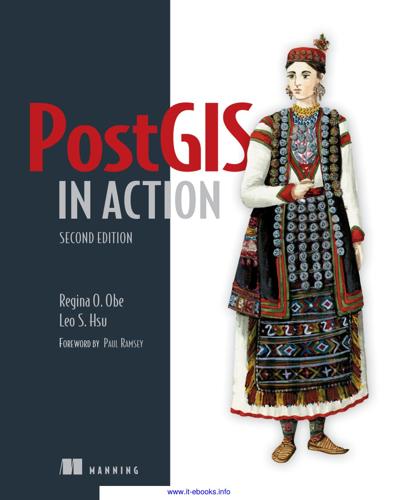
PostGIS in Action, 2nd Edition
by
Regina O. Obe
and
Leo S. Hsu
Published 2 May 2015
To see the ever-growing list of algorithms available (or to contribute your own), visit the main pgRouting site at http://pgrouting.org. For large networks, don’t forget to add spatial indexes to your table prior to executing any algorithms. The shortest-route problem is a general class of cost-minimizing or profit-maximizing problems. What you define as cost or profit is entirely up to you. Don’t limit yourself to traditional measures. Be creative. For example, you can easily download a table of calories from your local McDonald’s, group the food items into sandwiches, drinks, and sides, and query for the least fattening meal you can consume, provided that you must order something from each group—the McRouting problem. 16.1.3 Traveling salesman Many times in our programming ventures, we’ve come across the need to find solutions to TSP-related problems.
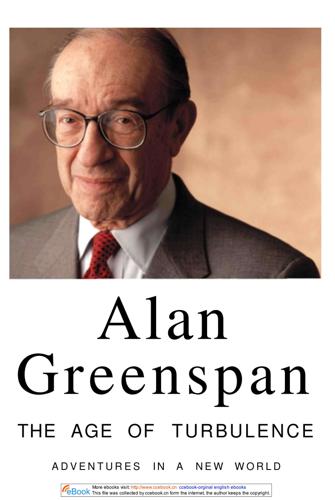
The Age of Turbulence: Adventures in a New World (Hardback) - Common
by
Alan Greenspan
Published 14 Jun 2007
To be sure, to counter that risk, the Russian government is using some of its oil and gas revenues to directly or indirectly finance acquisition of nonenergy productive assets. The list is long—steel, aluminum, manganese, titanium, tankers, and aircraft. But these are largely technologies originally developed a century earlier. Moreover, these industries are poised to serve as "national champions" rather than profit-maximizing organizations. A Russian presence at the cutting edge of twenty-first-century technologies has yet to be felt, although President Putin and his advisers announced ambitious plans in 2005 for special, albeit state-controlled, technology zones. T he sharp fall in the value of the ruble following Russia's collapse into bankruptcy in 1998 forced the conversion of a grossly uncompetitive economy built up under generations of central planning into a marginally competitive one.

Unelected Power: The Quest for Legitimacy in Central Banking and the Regulatory State
by
Paul Tucker
Published 21 Apr 2018
The lobbying industry exists partly in order to tilt the table.24 The state actor may not be able to make a credible commitment to deliver the promised side payments, either because of an ex ante perceived risk that they will deliberately renege or because ex post they are no longer in power when the time to deliver arrives.25 The state umpire may not be neutral and, worse, might be able to conceal from some of the interested parties the advantages it is reaping for itself and/or granting to a favored group. Once the losers wake up to the game having been rigged in some way, cynicism is the only refuge. This points to a hole in Friedman’s view of the sole responsibility of business being profit maximization within given “rules of the game” and so, more generally, in the standard economic theory of the firm. Business has incentives to try to tilt the rules, including the processes of government and politics, in their favor. And parts of the business community, especially larger firms, might have the wherewithal to do so.
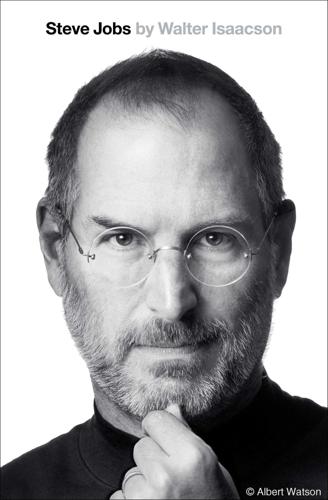
Steve Jobs
by
Walter Isaacson
Published 23 Oct 2011
CHAPTER TWENTY-SIX DESIGN PRINCIPLES The Studio of Jobs and Ive With Jony Ive and the sunflower iMac, 2002 Jony Ive When Jobs gathered his top management for a pep talk just after he became iCEO in September 1997, sitting in the audience was a sensitive and passionate thirty-year-old Brit who was head of the company’s design team. Jonathan Ive, known to all as Jony, was planning to quit. He was sick of the company’s focus on profit maximization rather than product design. Jobs’s talk led him to reconsider. “I remember very clearly Steve announcing that our goal is not just to make money but to make great products,” Ive recalled. “The decisions you make based on that philosophy are fundamentally different from the ones we had been making at Apple.”

On the Edge: The Art of Risking Everything
by
Nate Silver
Published 12 Aug 2024
An experiment conducted by the economist Steven Levitt, for example, found that when people volunteered to put major life decisions such as whether to stay at a job or in a relationship up to the outcome of a coin flip, they were happier on average when they made a change. The bodily transformation that Coates’s traders experienced made for a positive feedback loop. They’d have a winning day, build up more testosterone, and take on more risk. Because most traders start out being too risk-averse, at first this helped; they were getting closer to the optimal, profit-maximizing level of risk. So they’d have more winning days, get yet more T, and take on yet more risk. You can probably guess what happened next. Before long, they were the equivalent of steroid-infused meatheads, barreling right on past optimal to dangerous, potentially catastrophic, Sam Bankman-Fried levels of risk-taking.
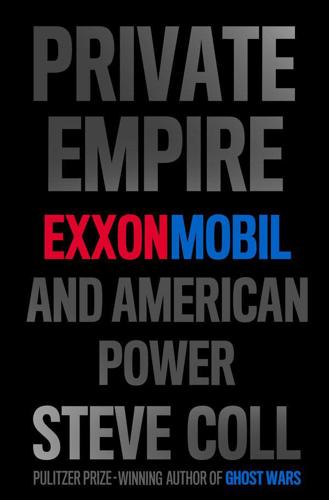
Private Empire: ExxonMobil and American Power
by
Steve Coll
Published 30 Apr 2012
He structured a long-term sales contract for Qatari gas with South Korea as the customer and handed off the whole project to Lee Raymond at the time of the merger. The North field challenge played to Exxon’s strengths: budget- and performance-conscious management of gargantuan engineering projects, combined with profit-maximizing financial planning. In Mobil’s L.N.G. group Exxon also acquired technical expertise it otherwise lacked. After 2000, ExxonMobil committed to multibillion-dollar investments to develop huge new L.N.G. gas trains from the North field as an exclusive 25 percent partner with Qatar Petroleum. Its engineers found that the emirate’s natural gas was of unusually malleable quality—relatively easy to liquefy or to process to separate out other industrial products.

Bourgeois Dignity: Why Economics Can't Explain the Modern World
by
Deirdre N. McCloskey
Published 15 Nov 2011
The threat appears as the crudely “neoliberal,” “greed-is-good” theory of behavior, encouraged by some economists and by all inside traders. The theory is the modern descendant of the Machiavellian moment of Il Principe and then the Hobbesian-Mandevillean-Benthamite notion that it’s enough to have prudence only—the restless stirring for gain, utility, self-interest.30 But profit maximization is not in itself an ethic. It is prudence only, elevating one of the seven principal virtues into the only one. Money is good to have. Thomas Hardy quotes the medieval saying “Take, have, and keep are pleasant words.”31 But taking, having, and keeping do not give purpose to a full human life.